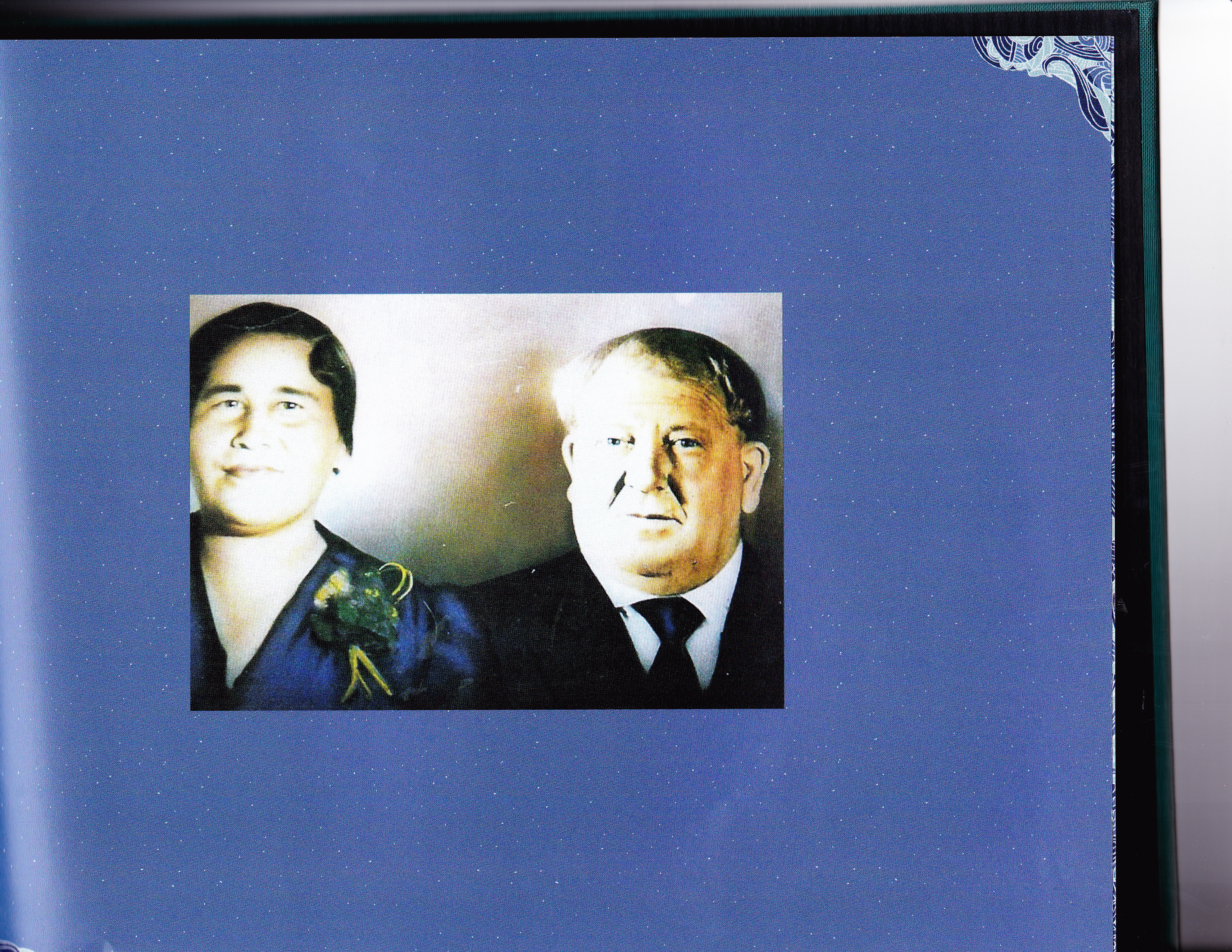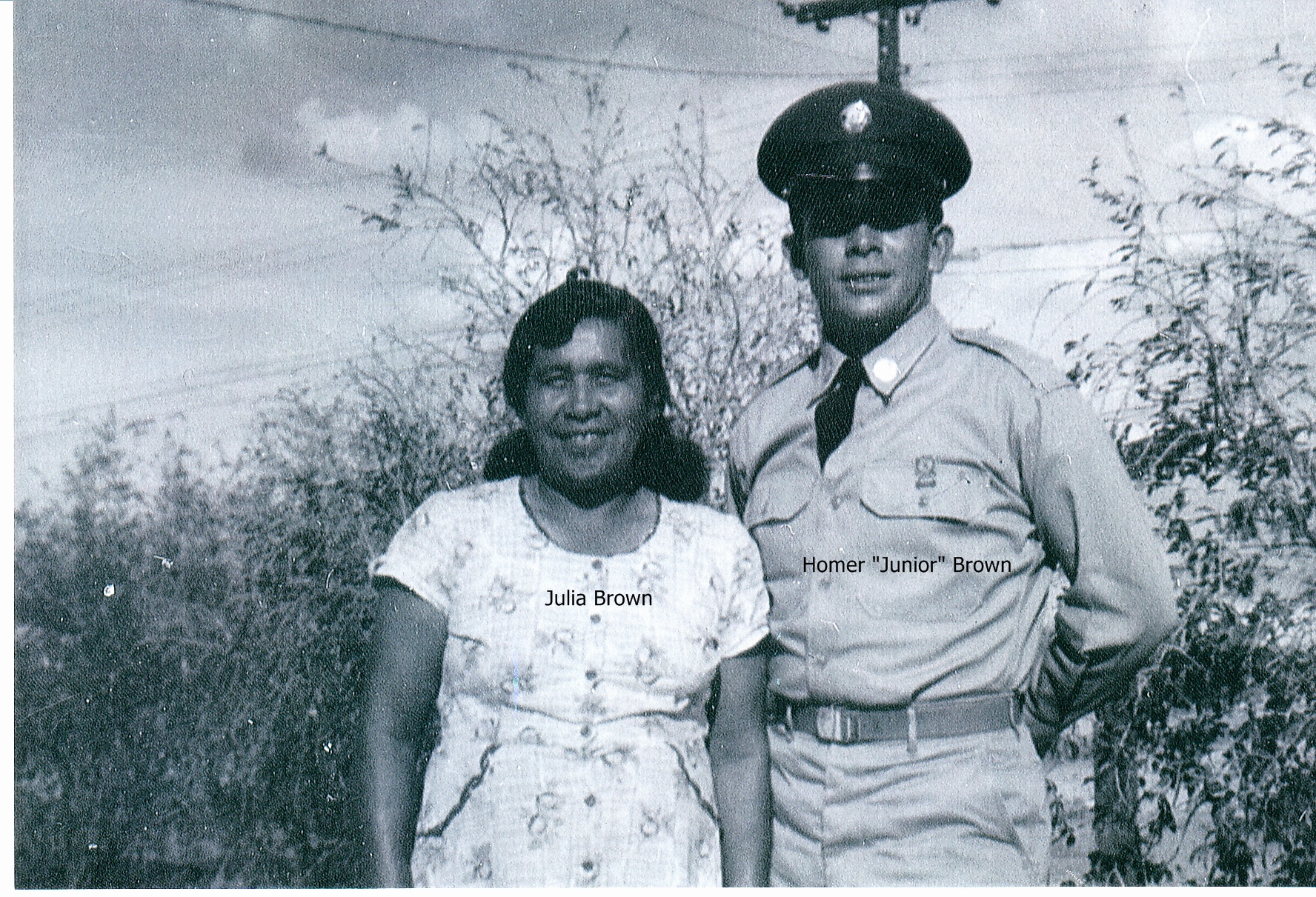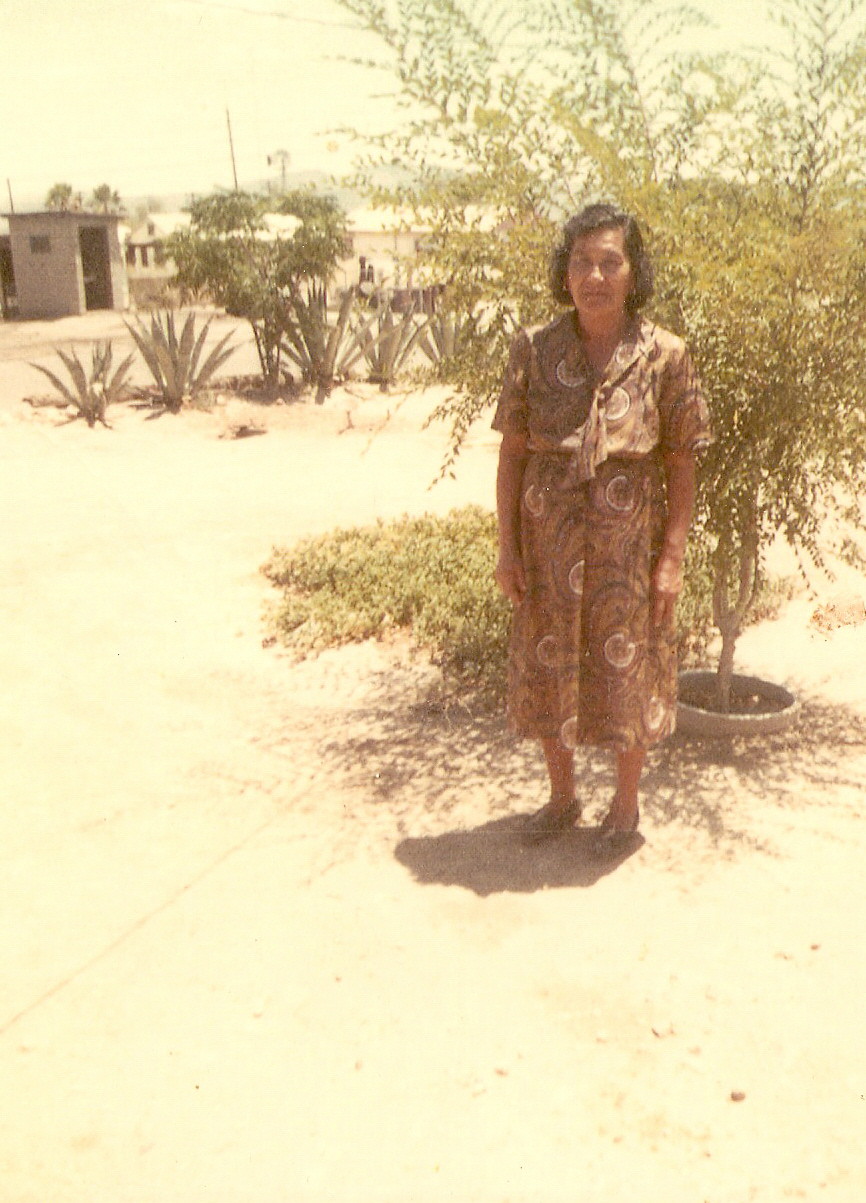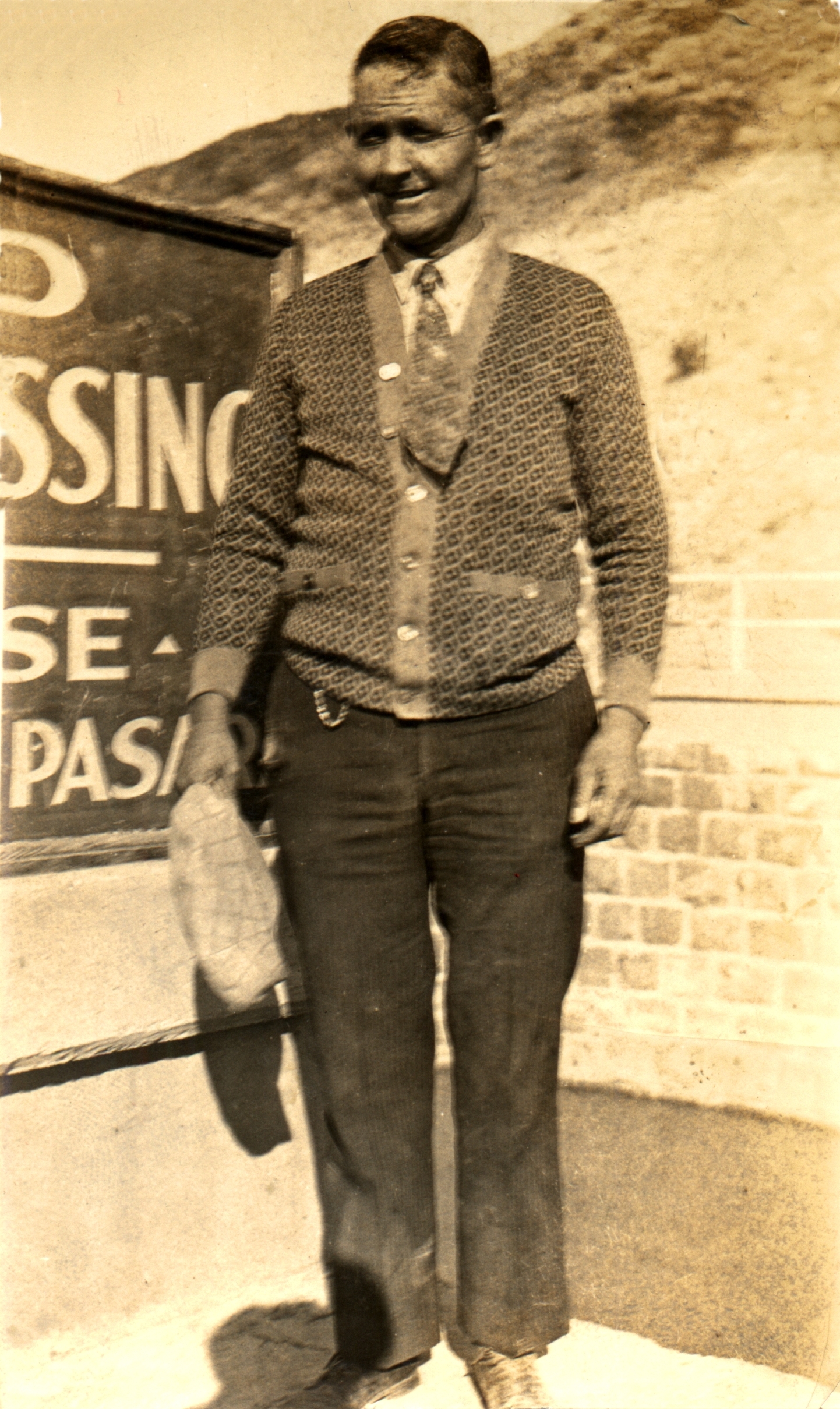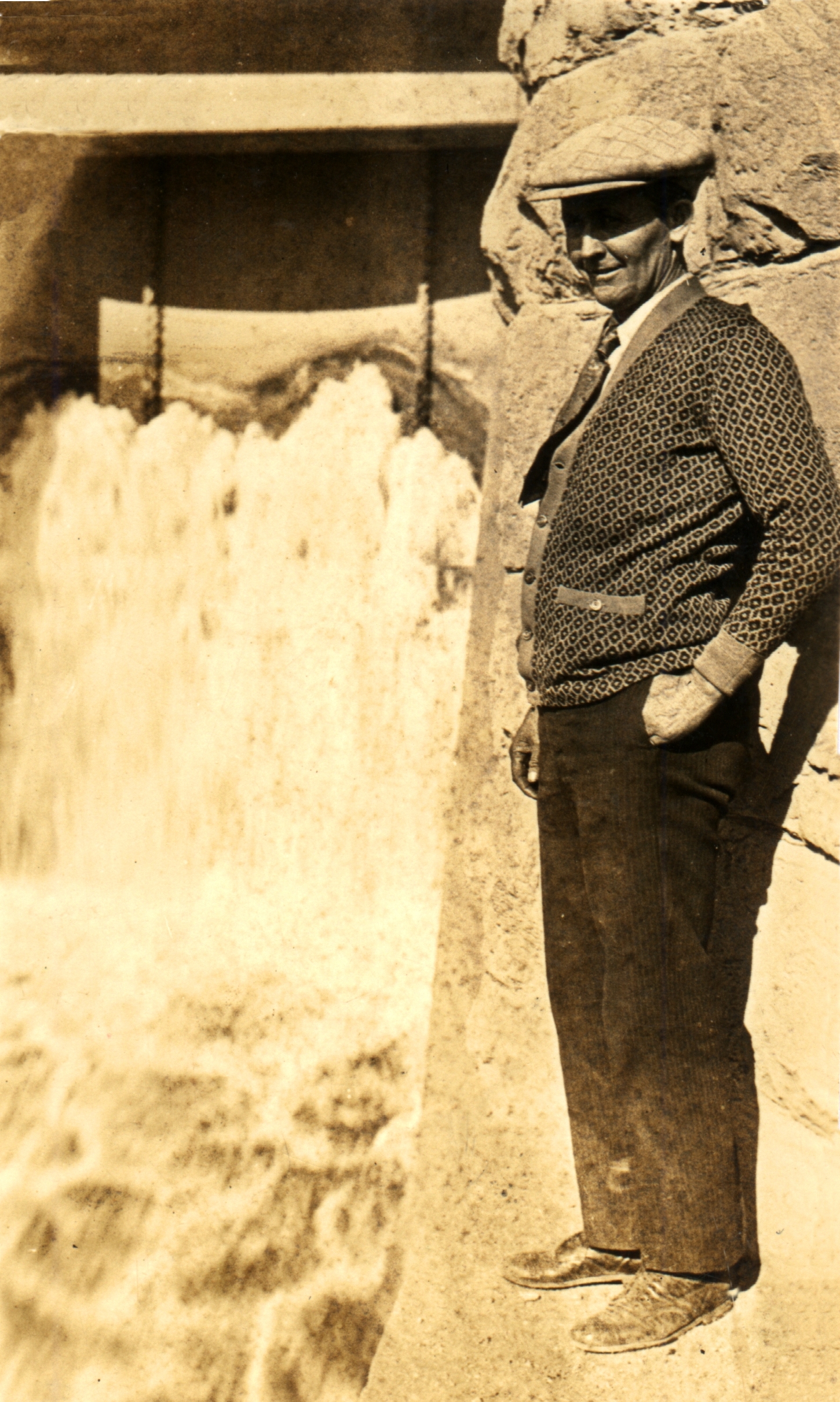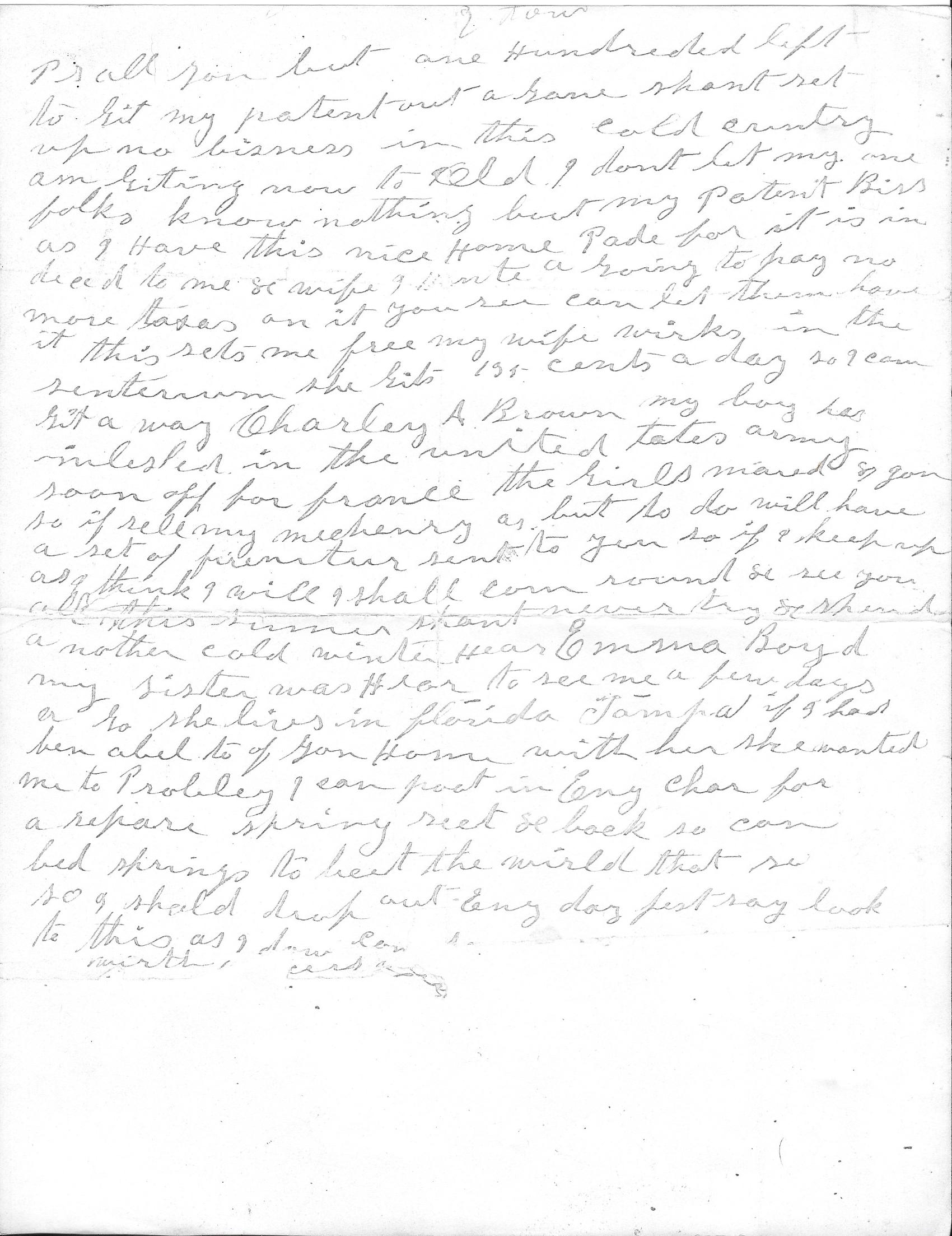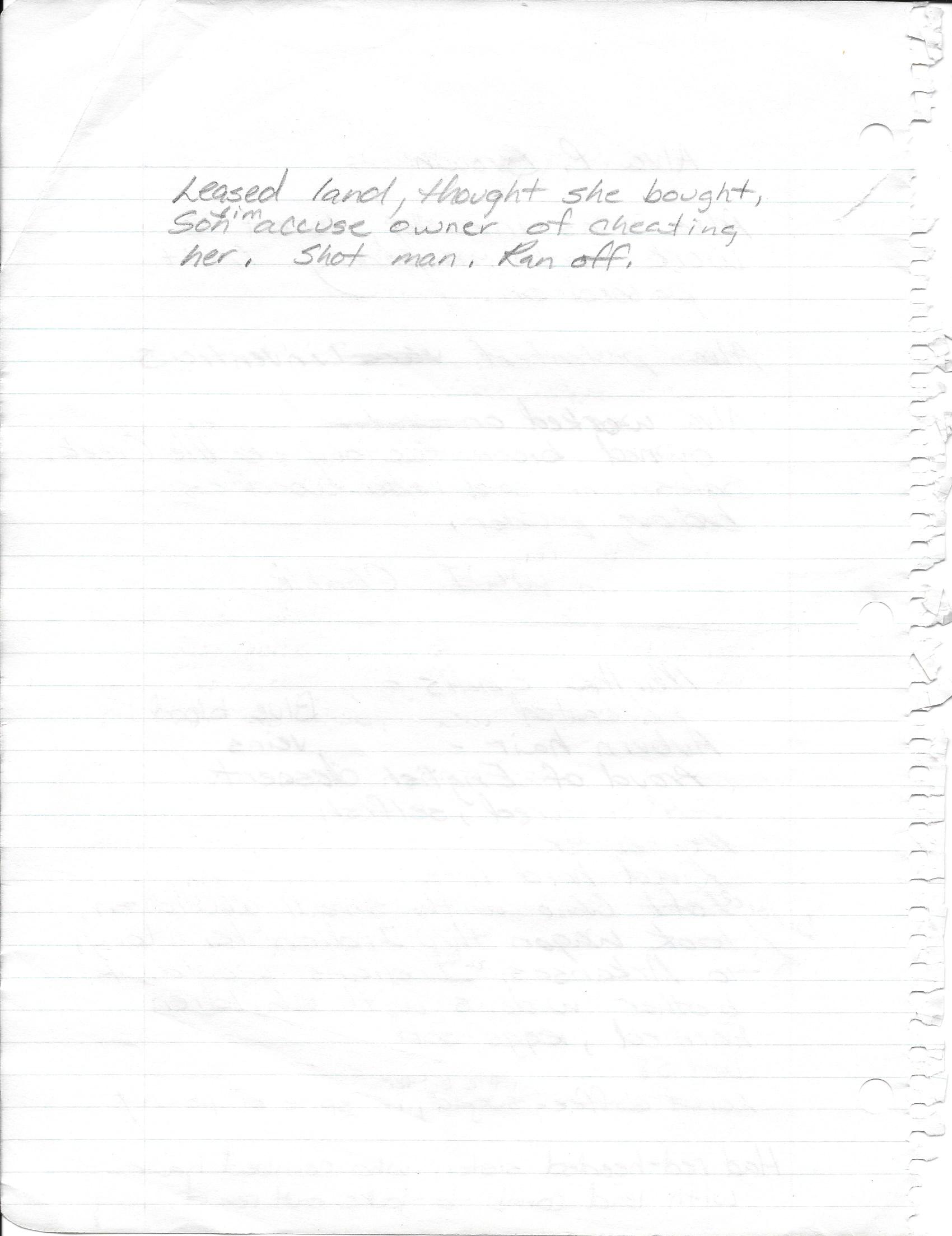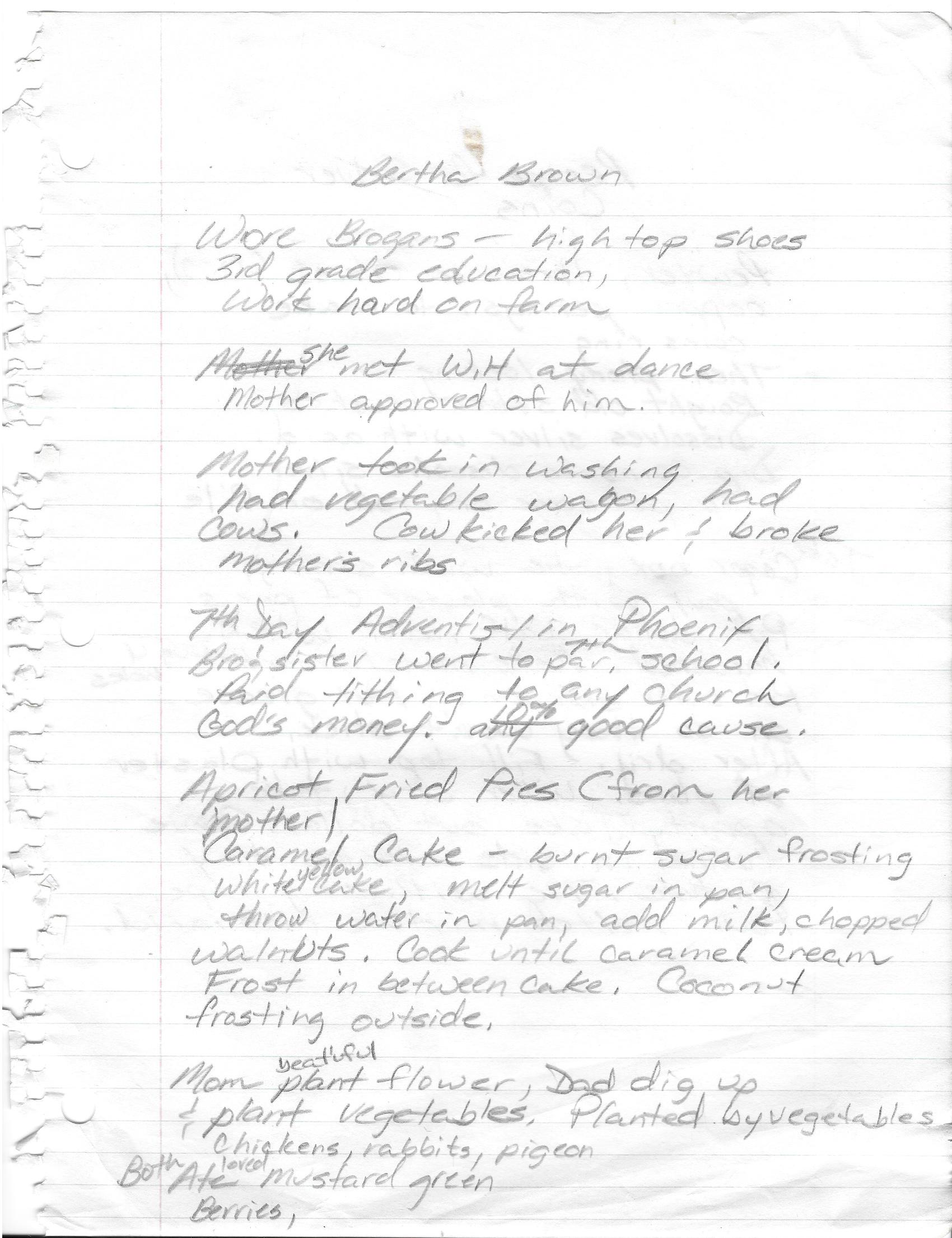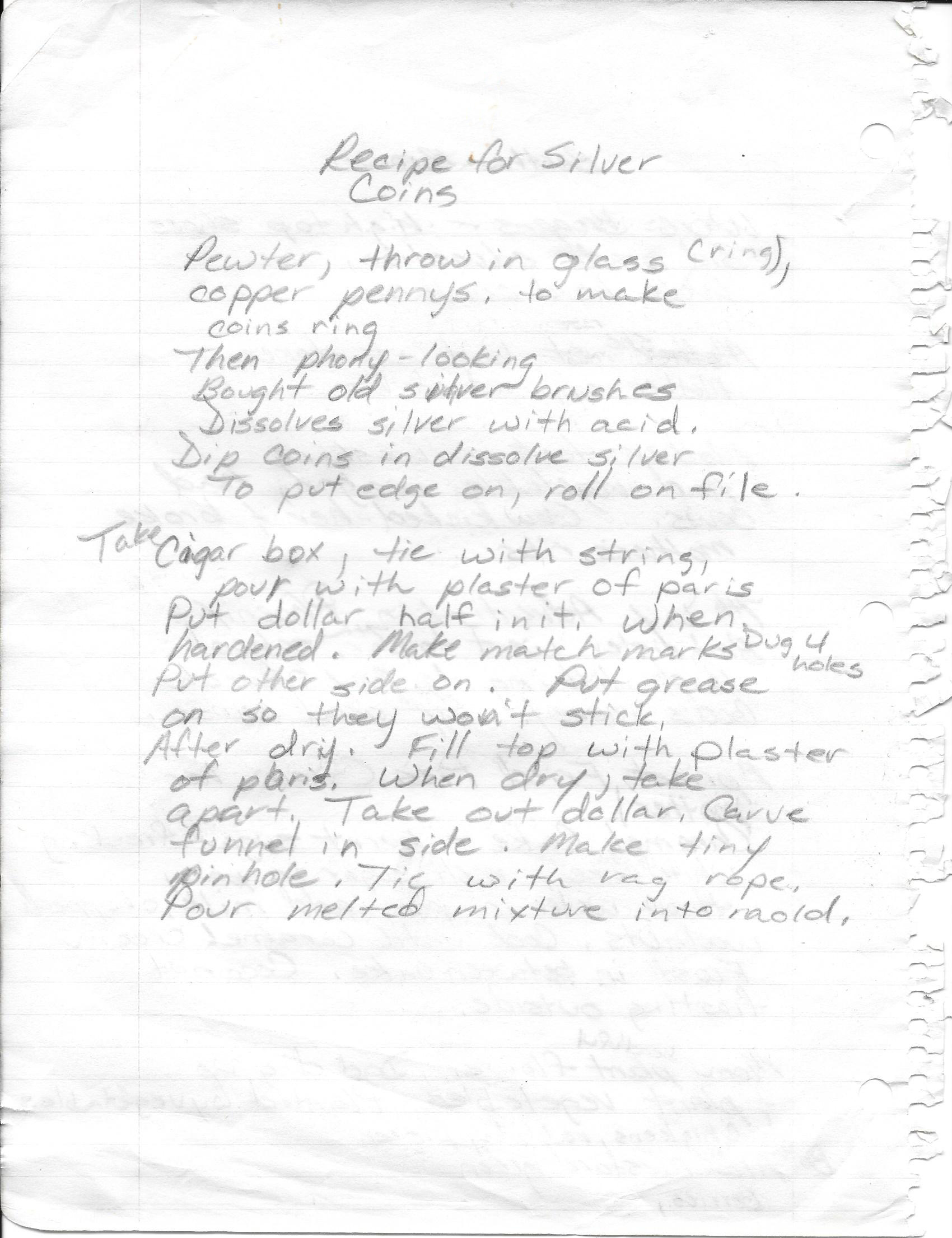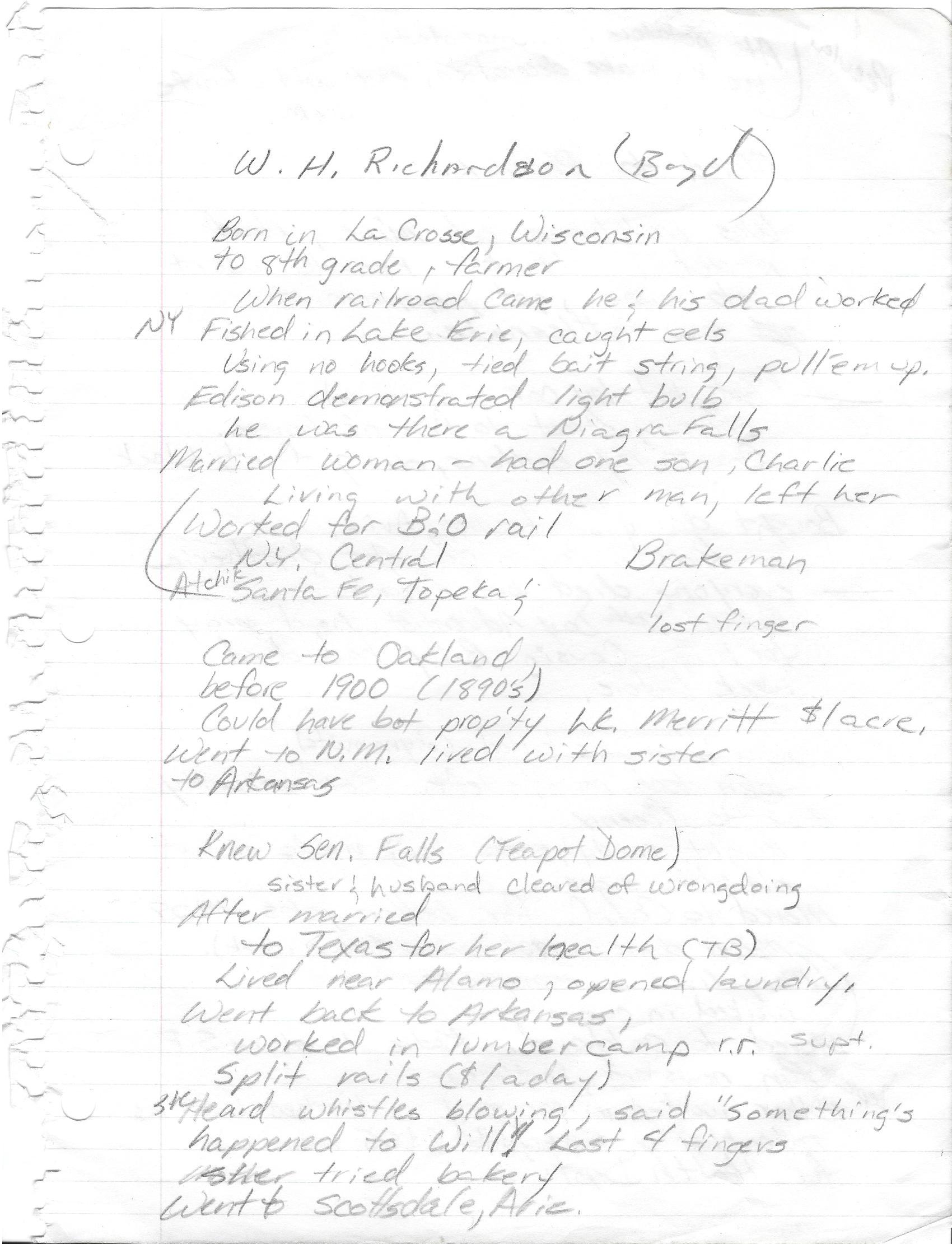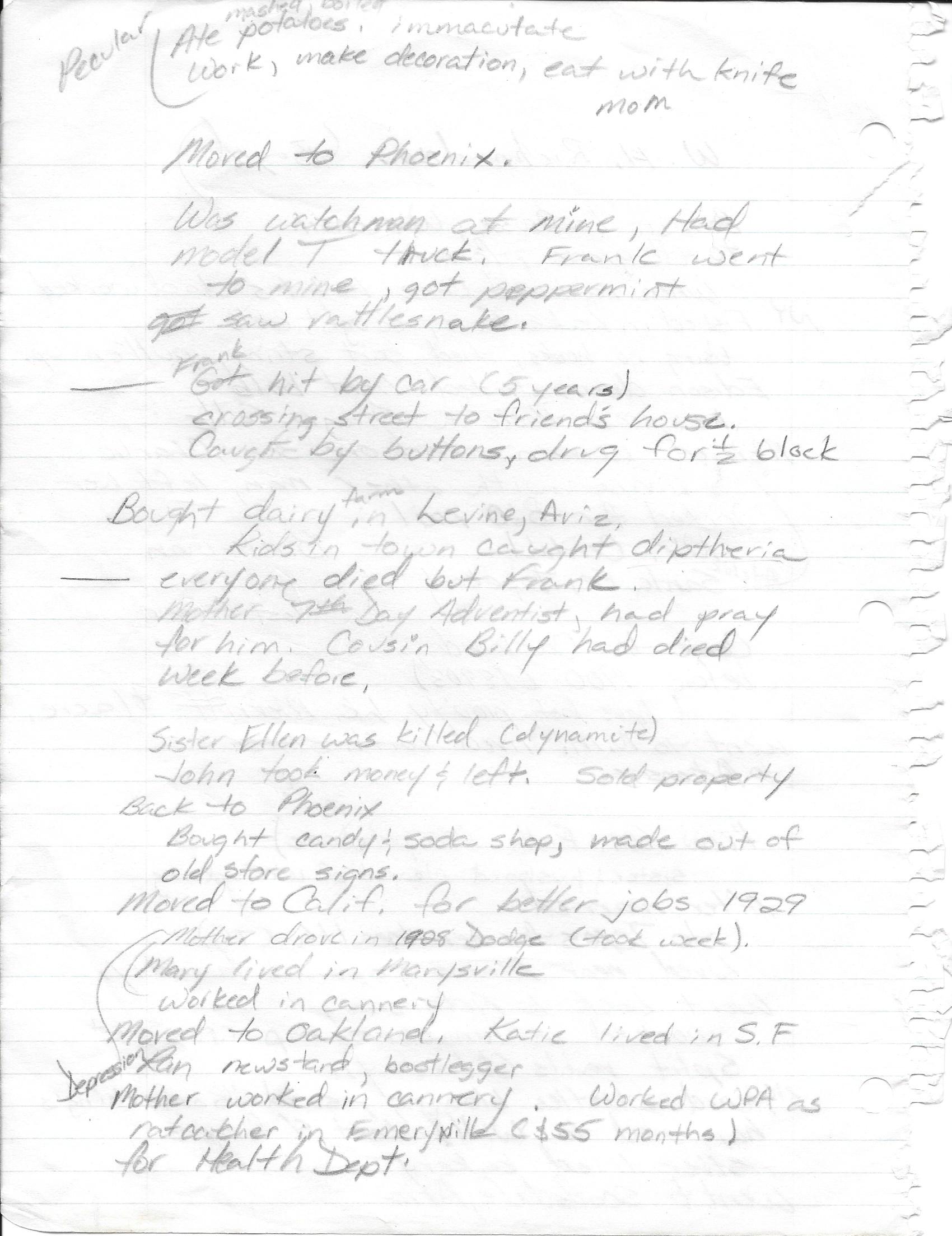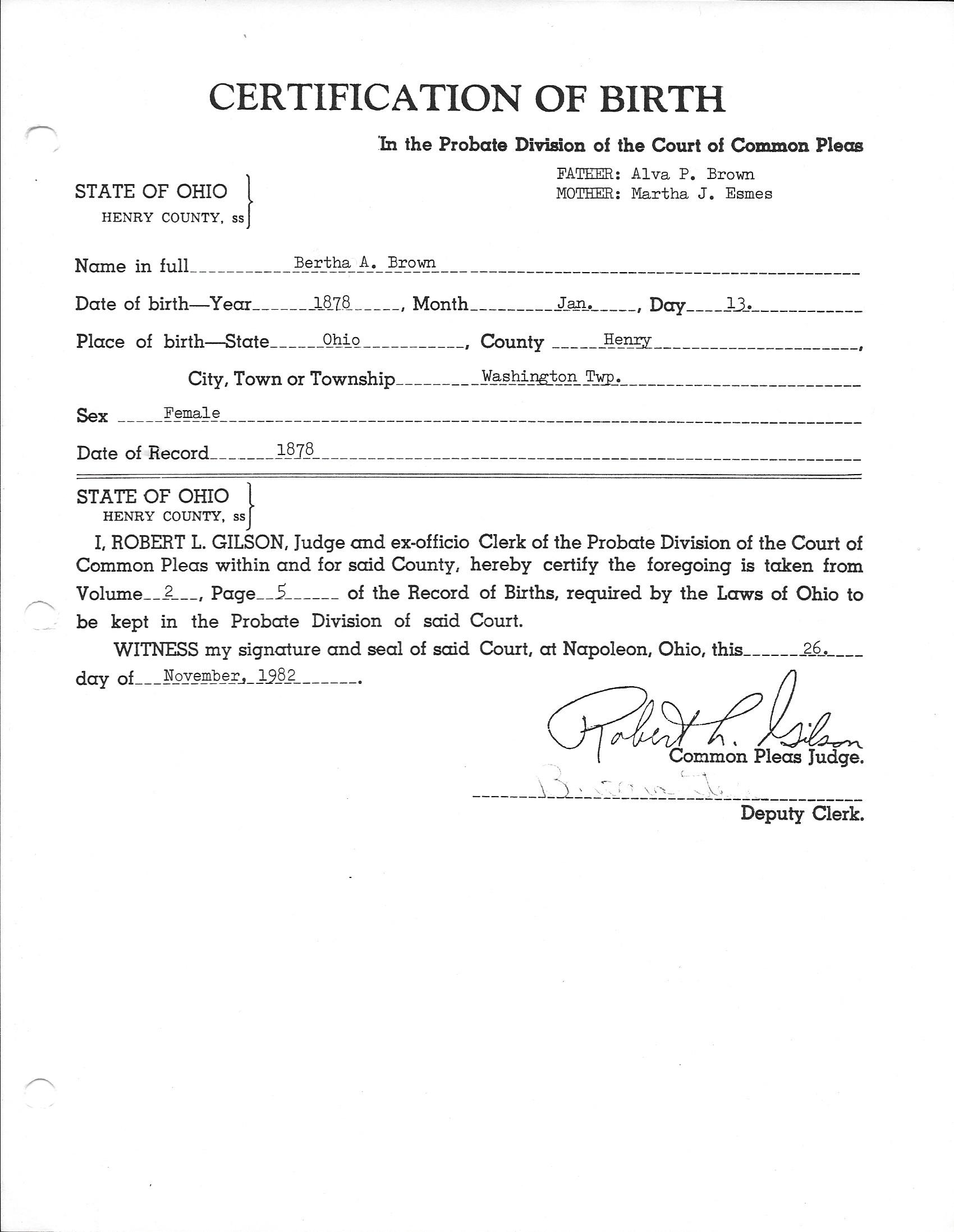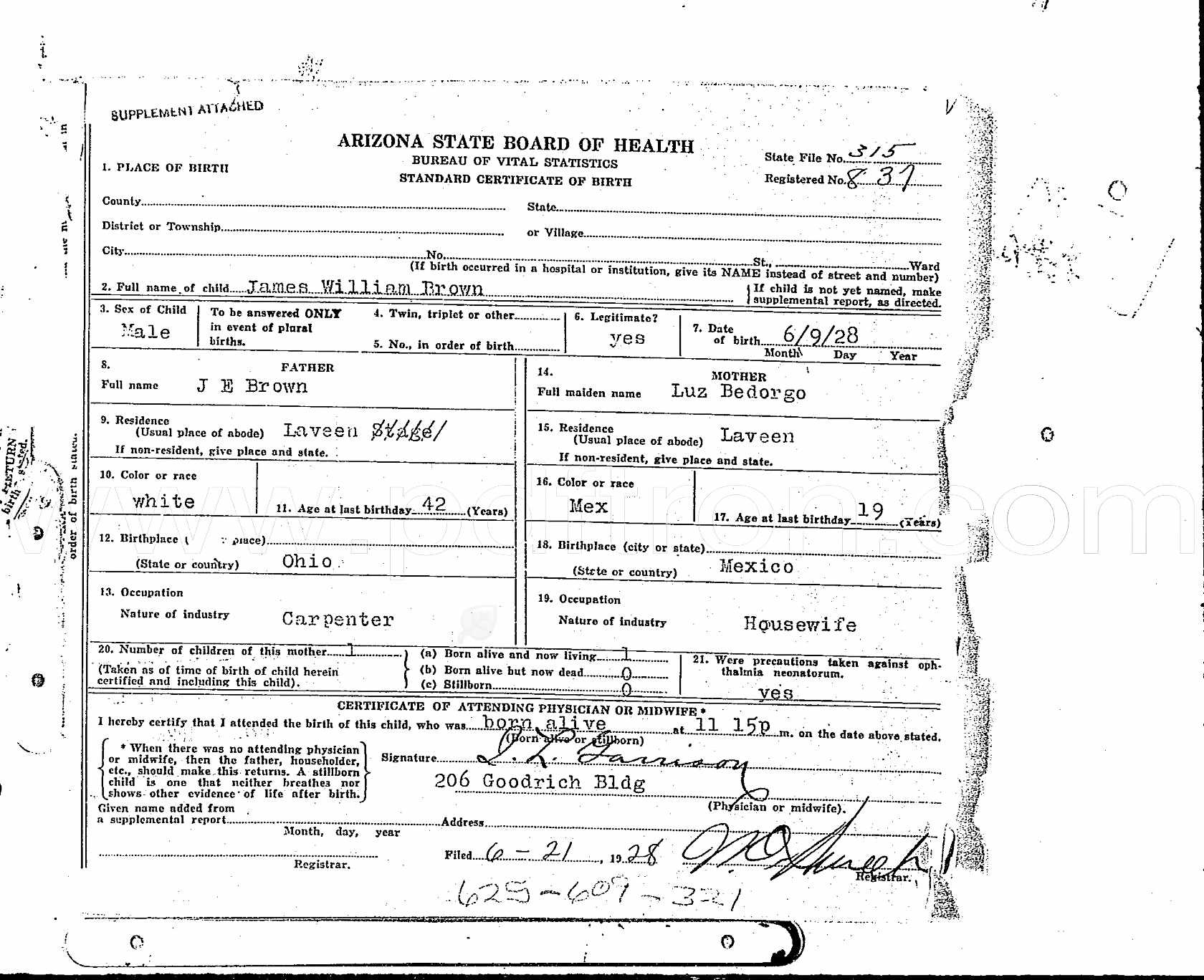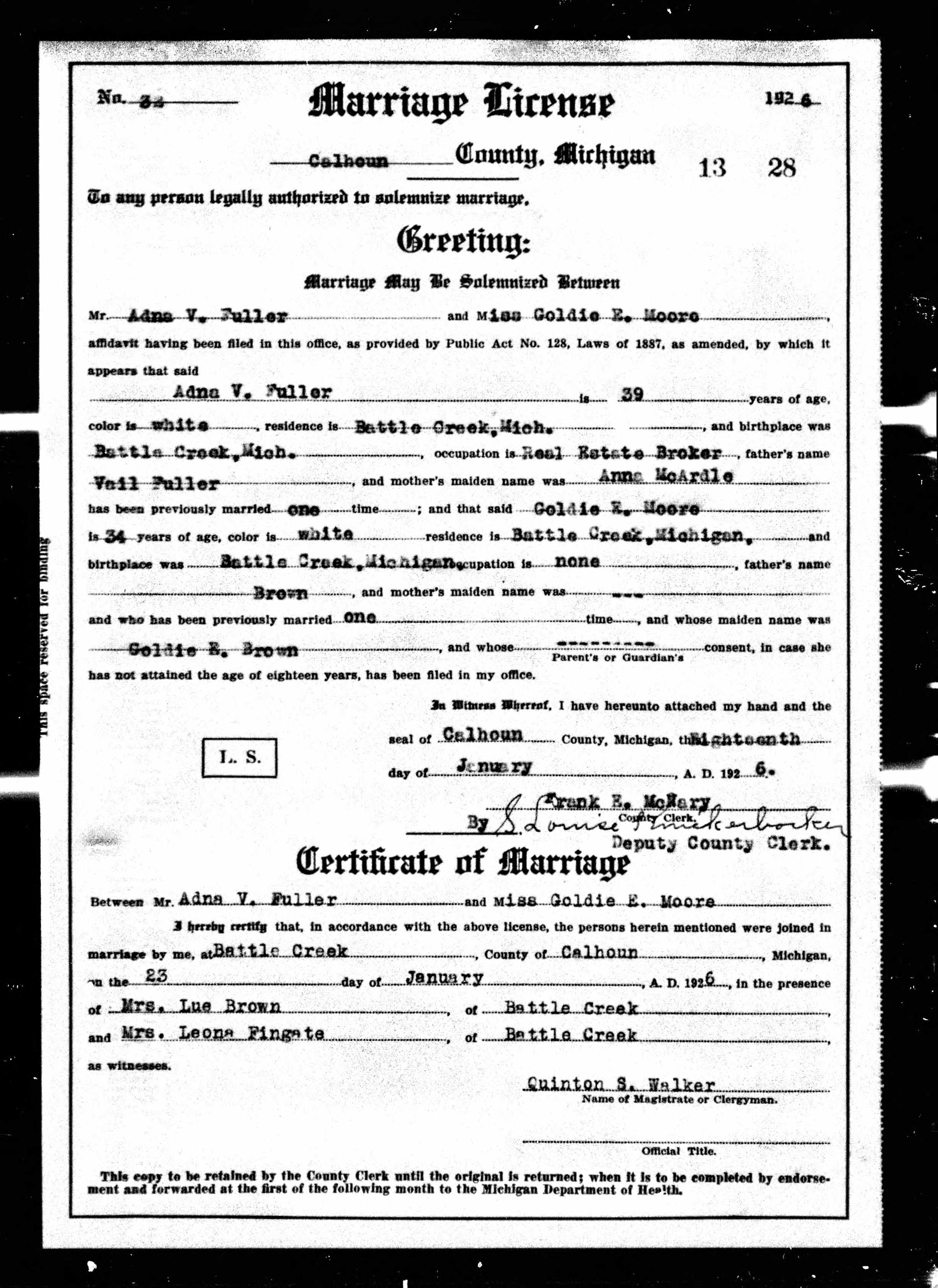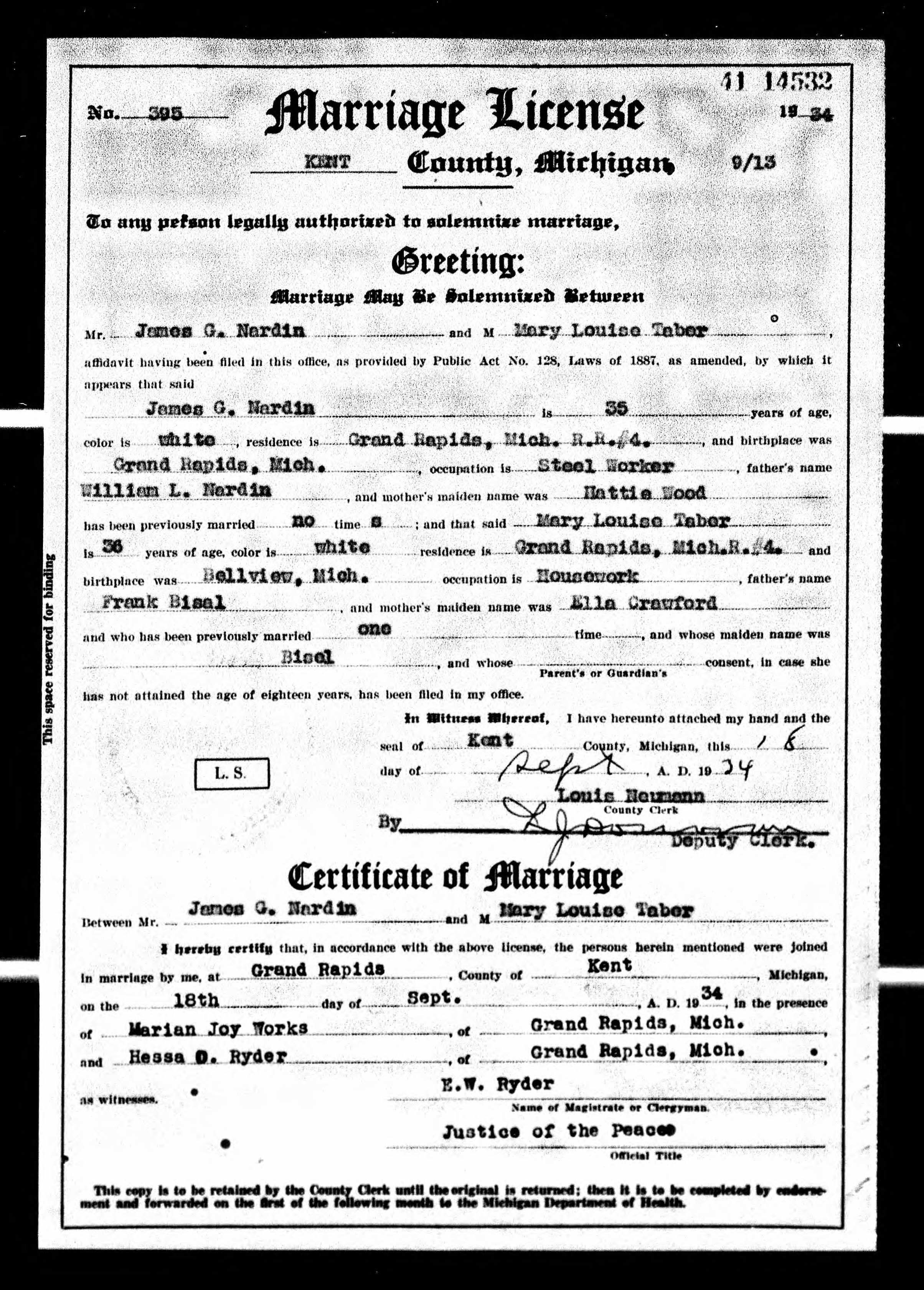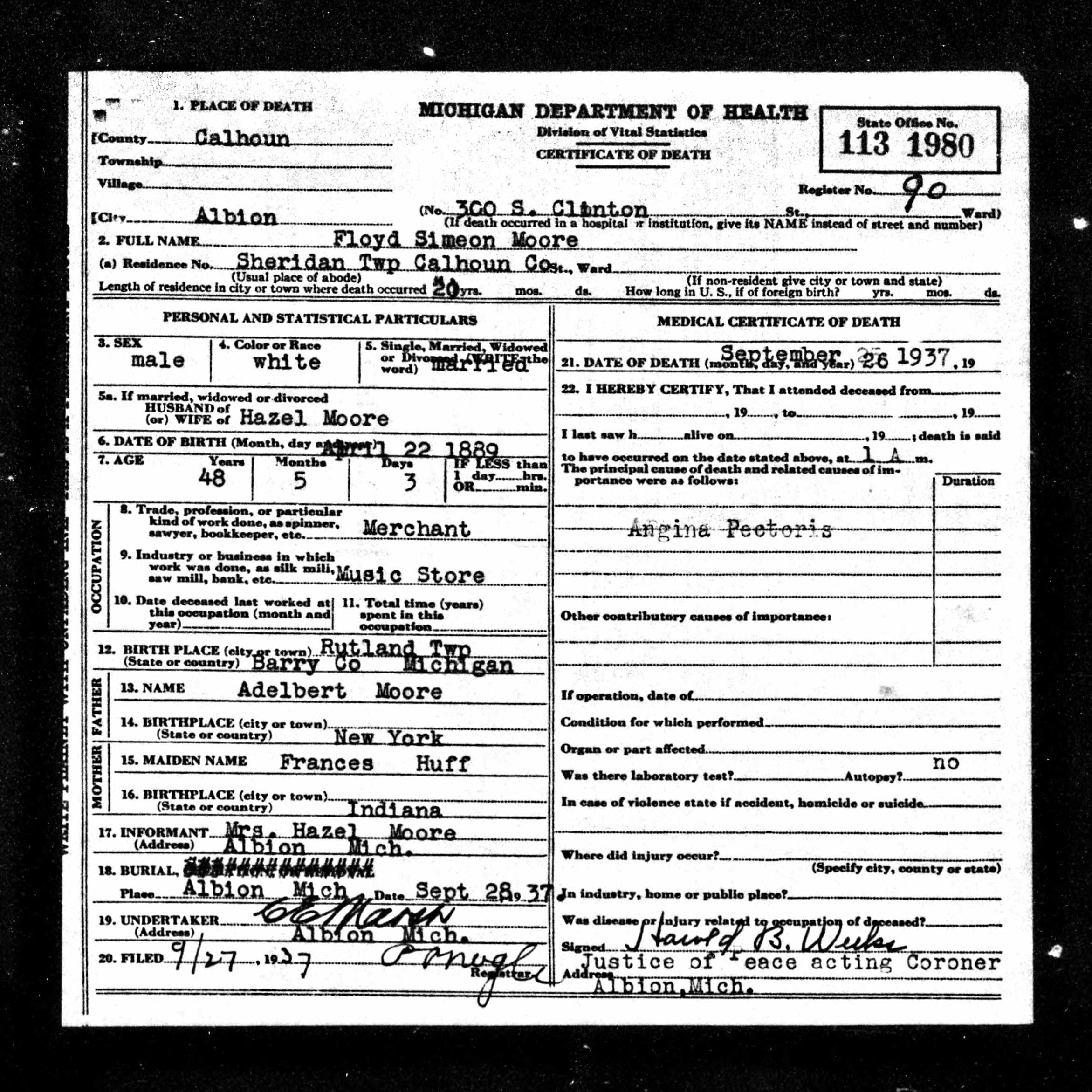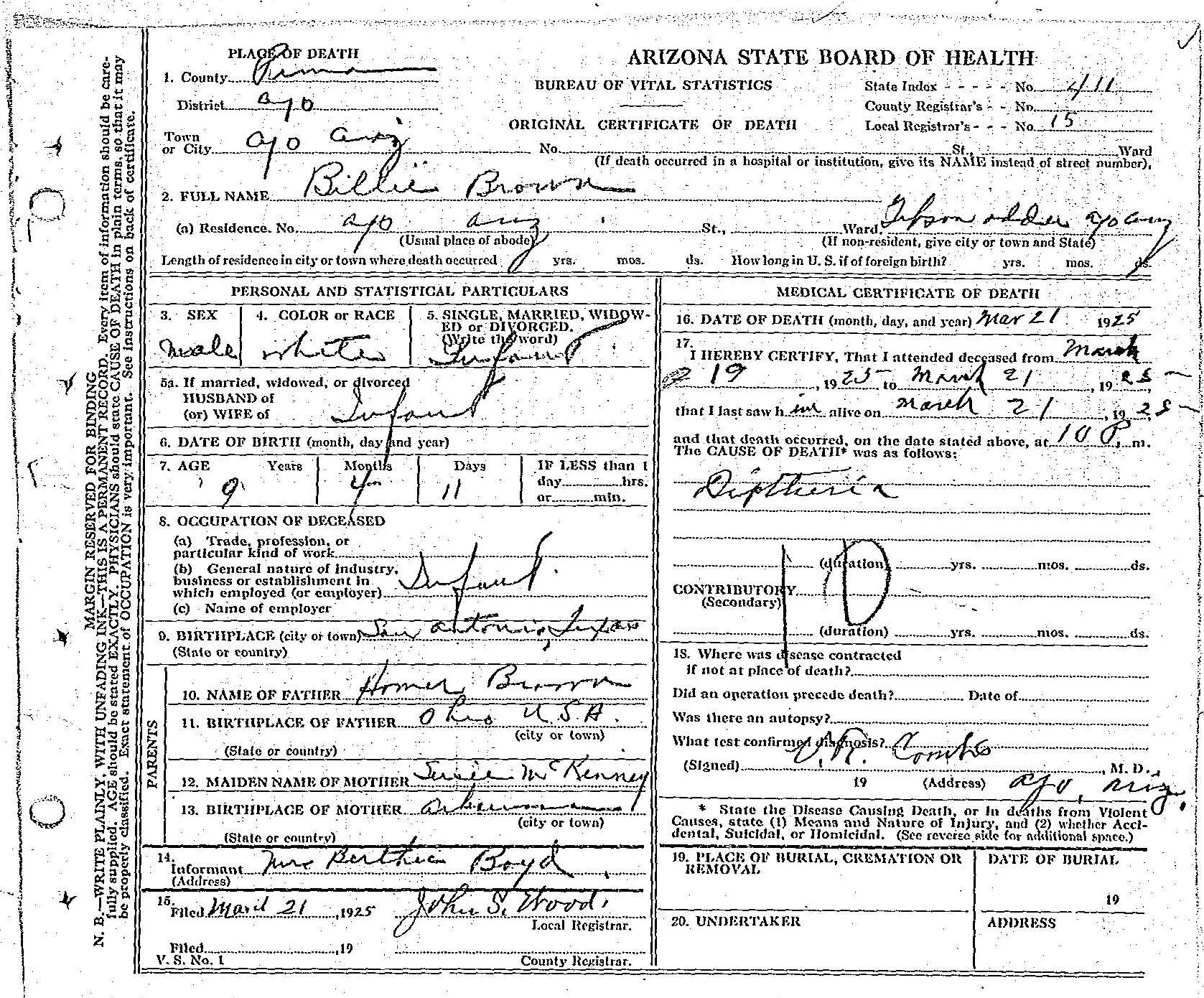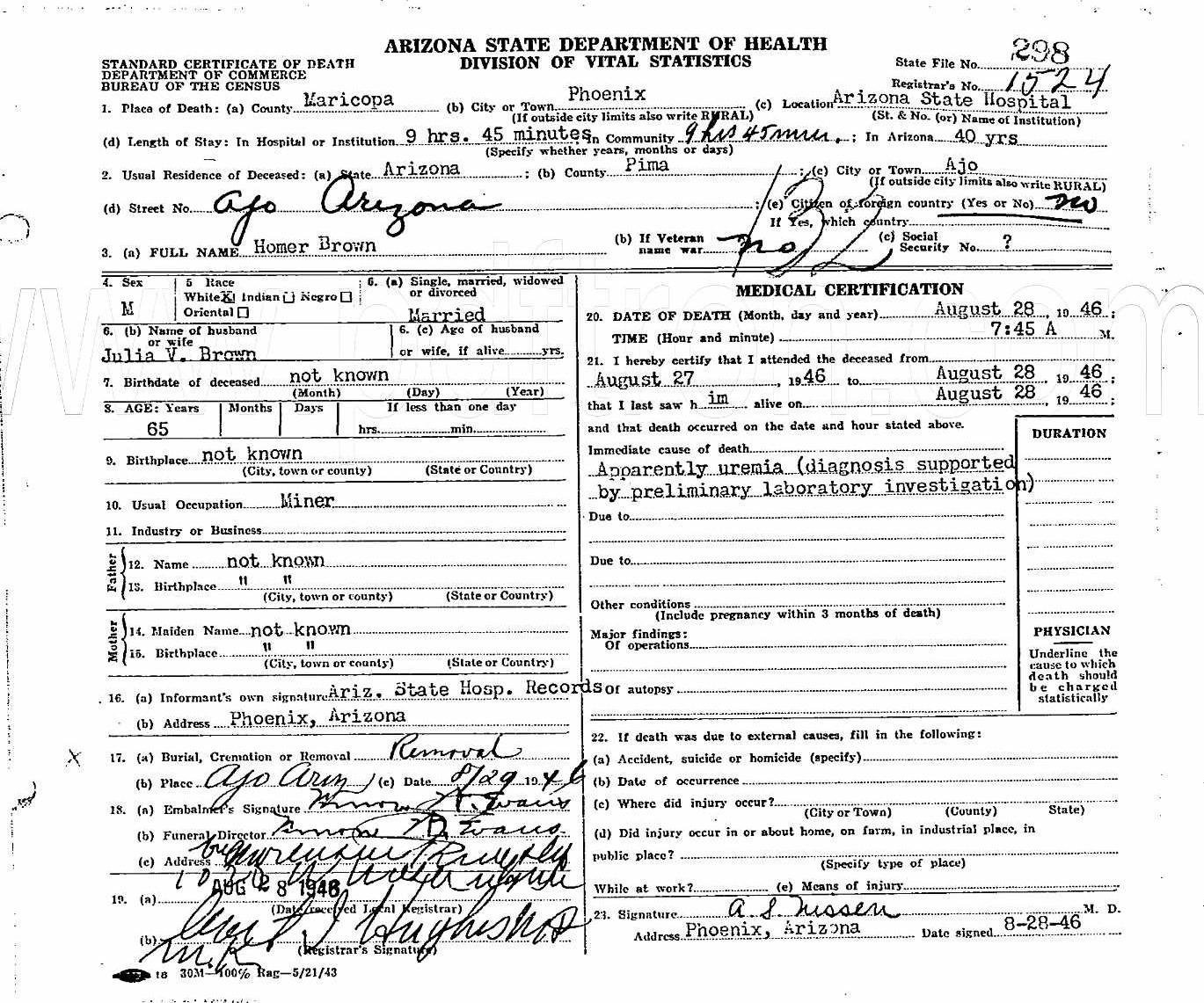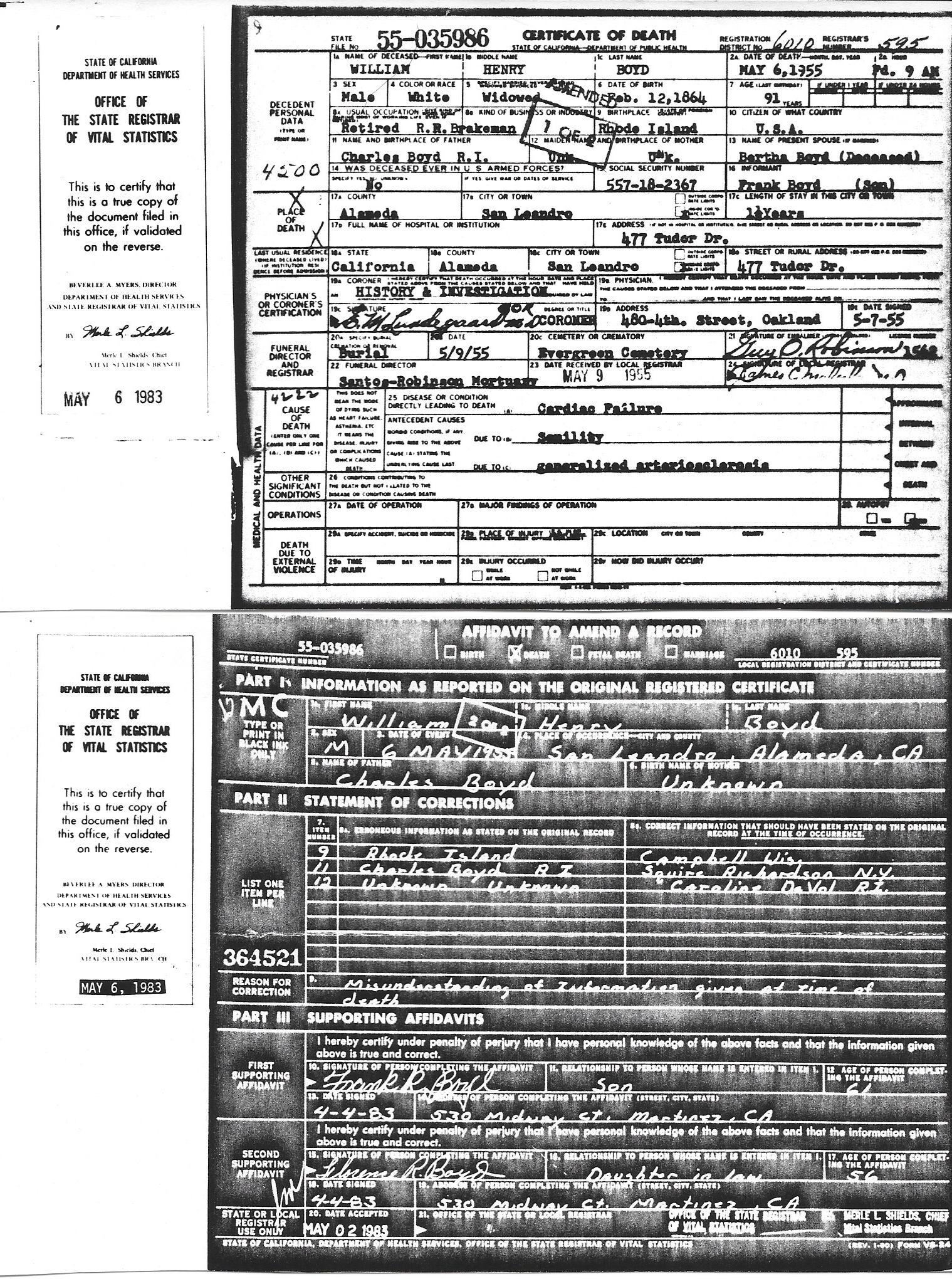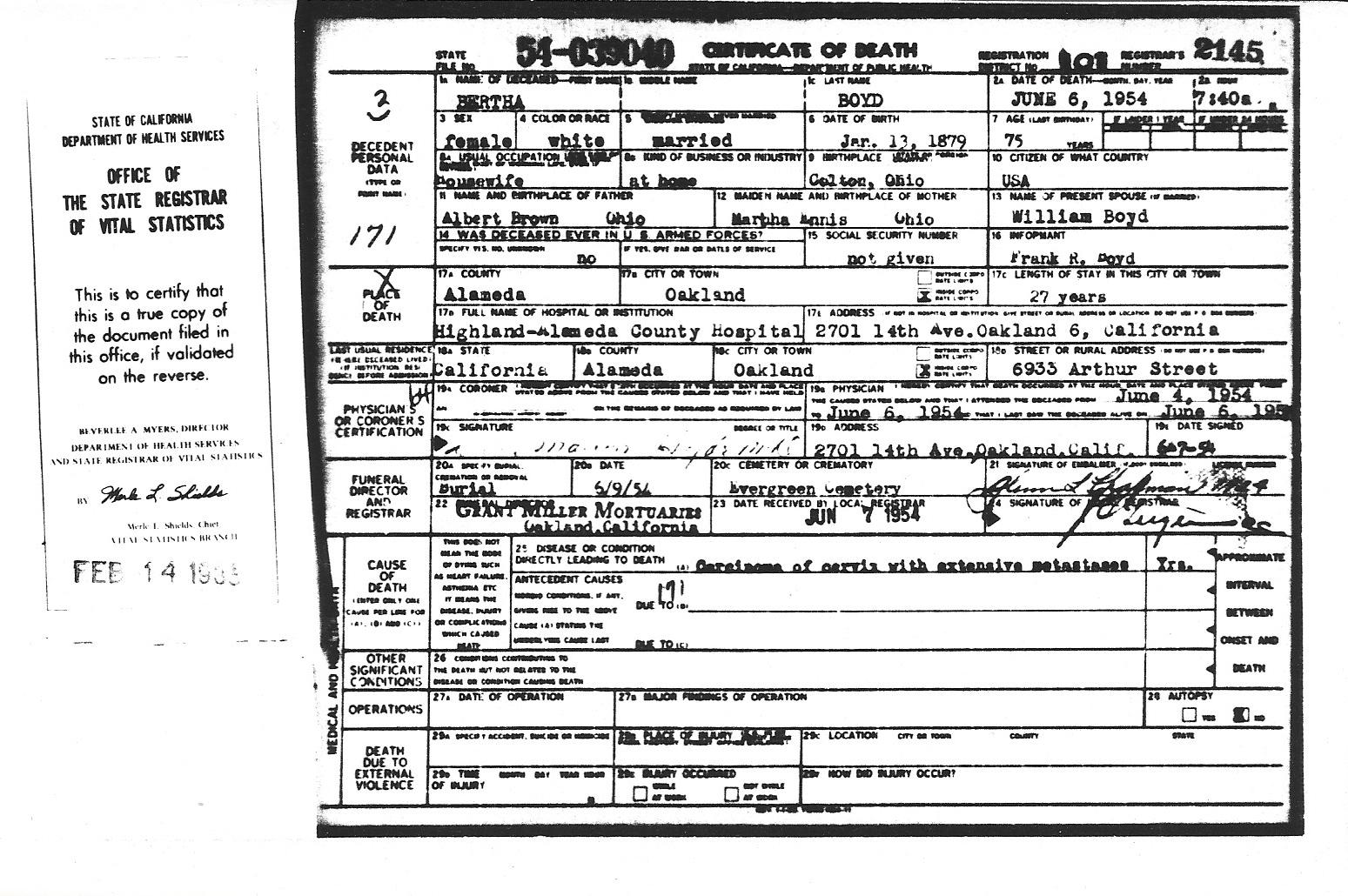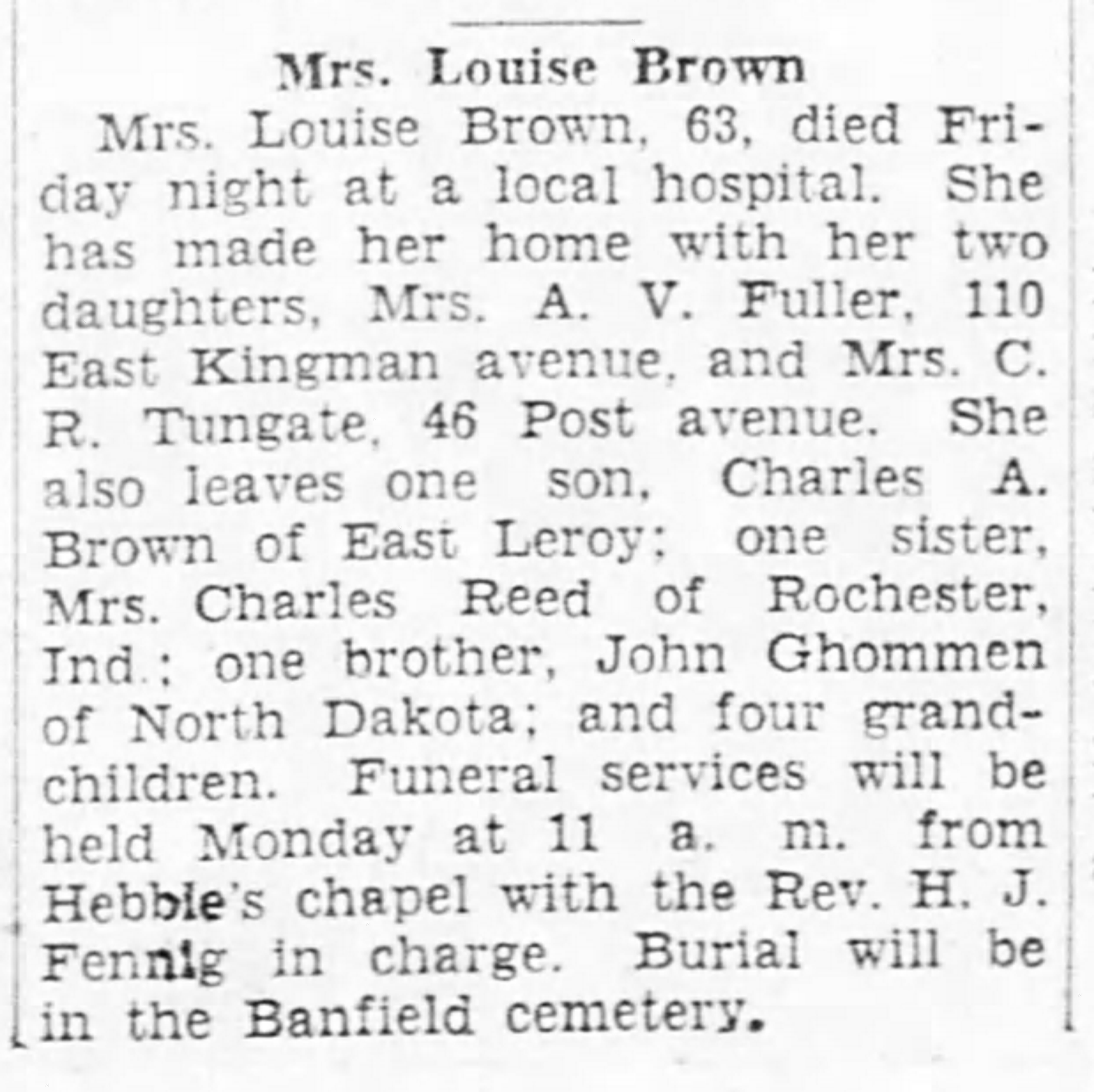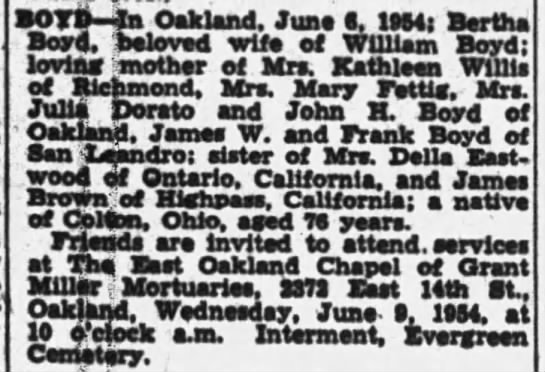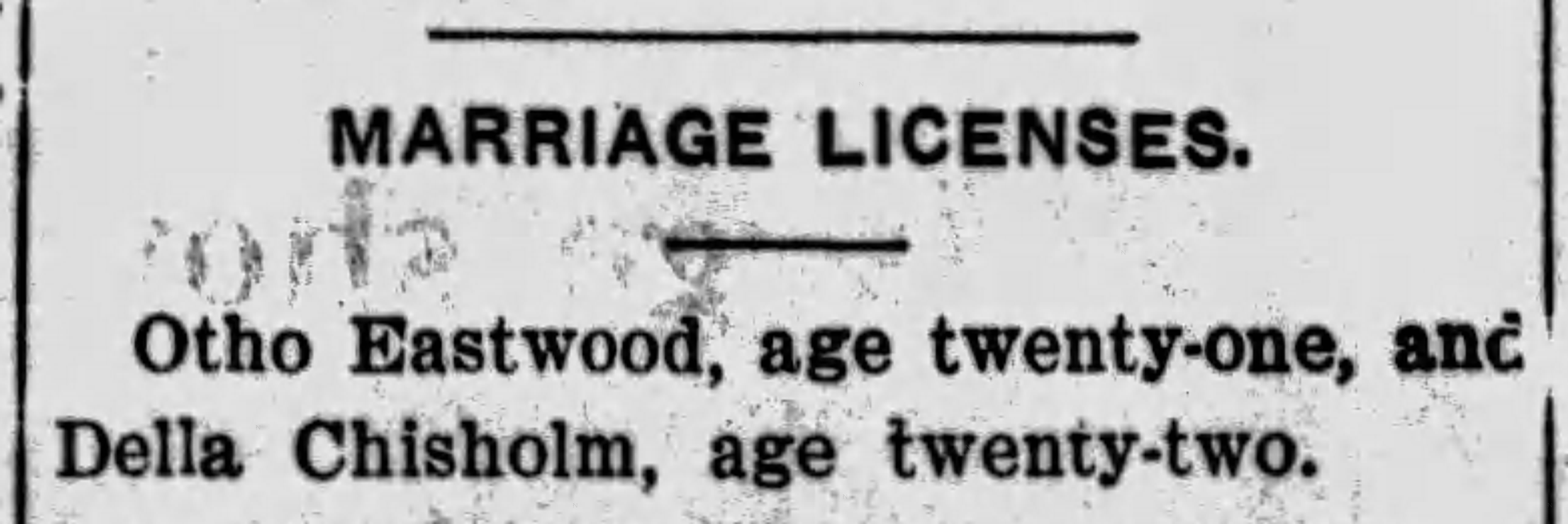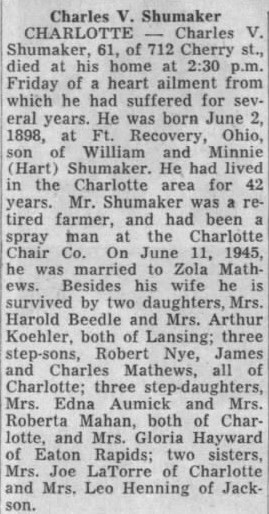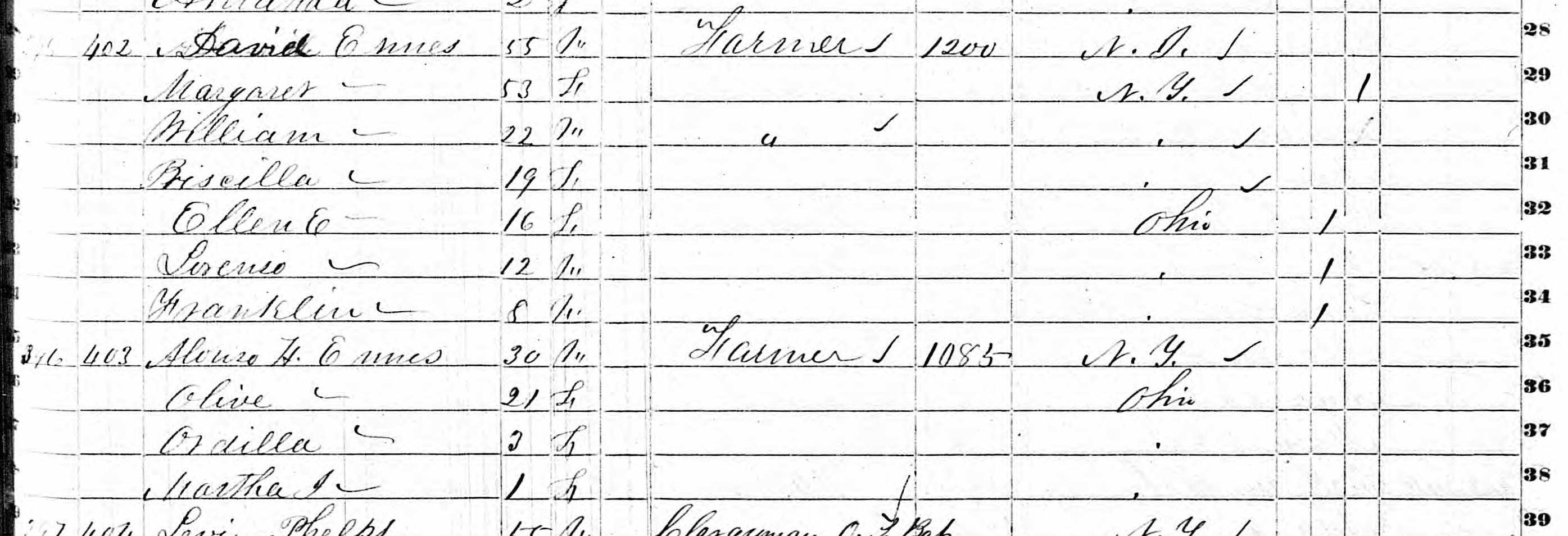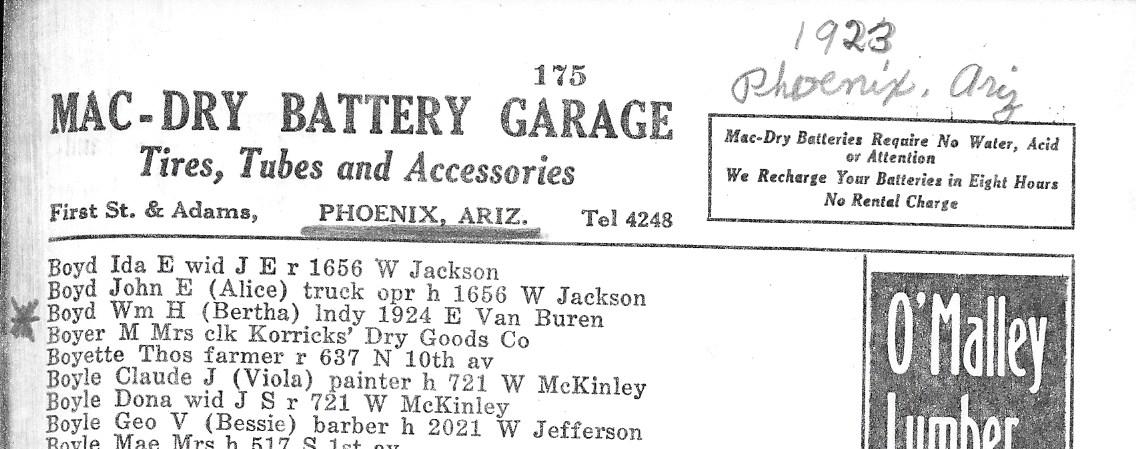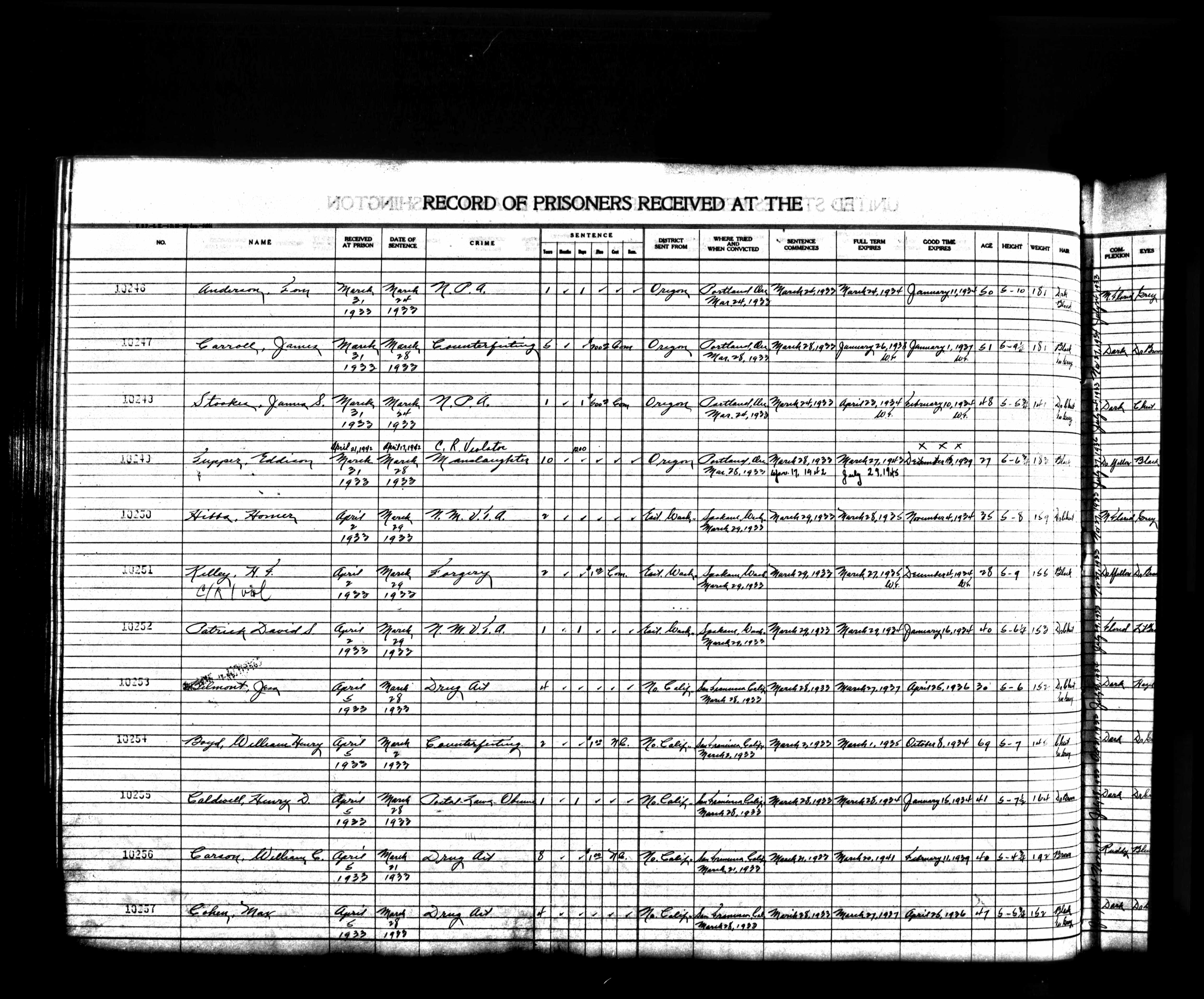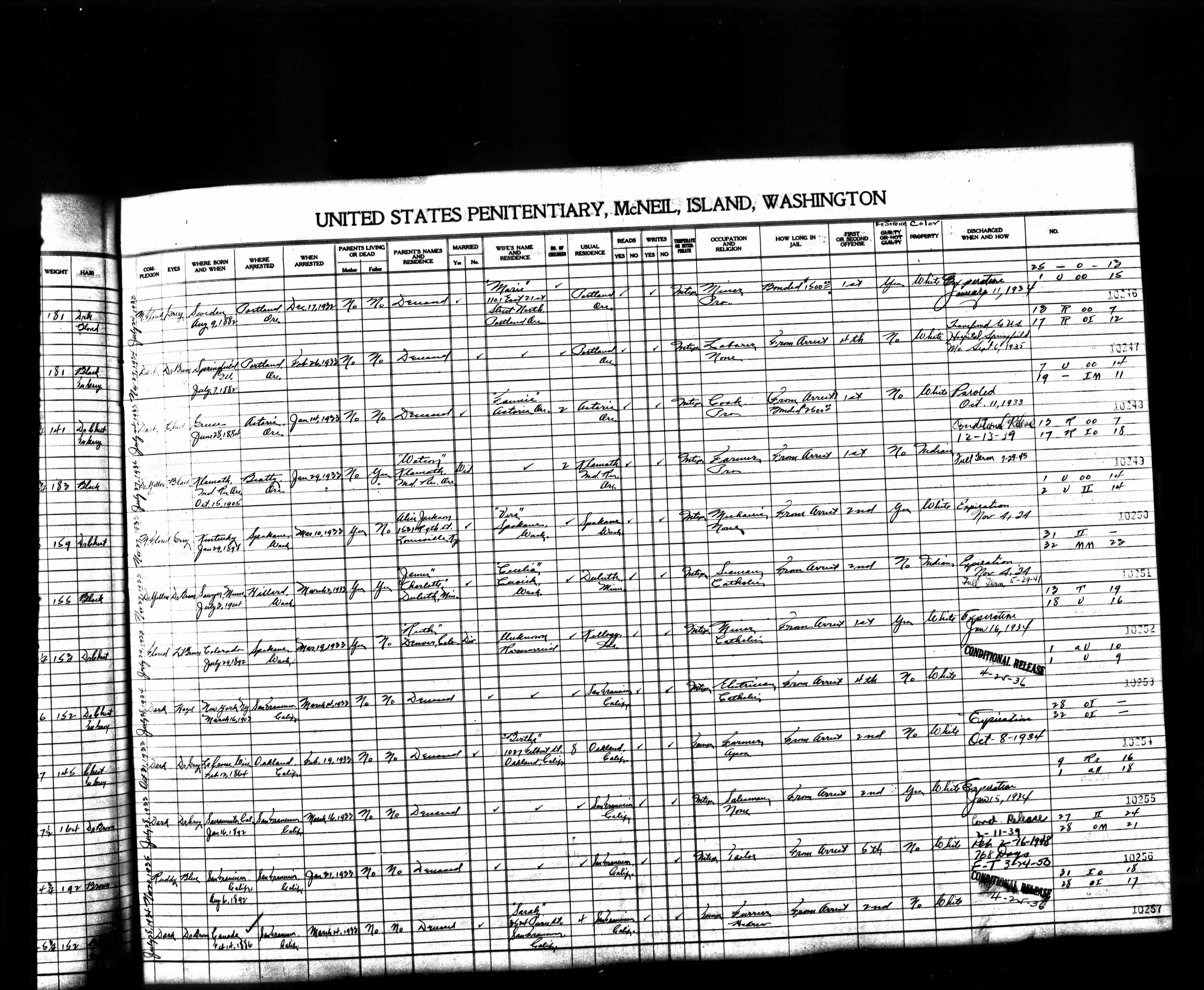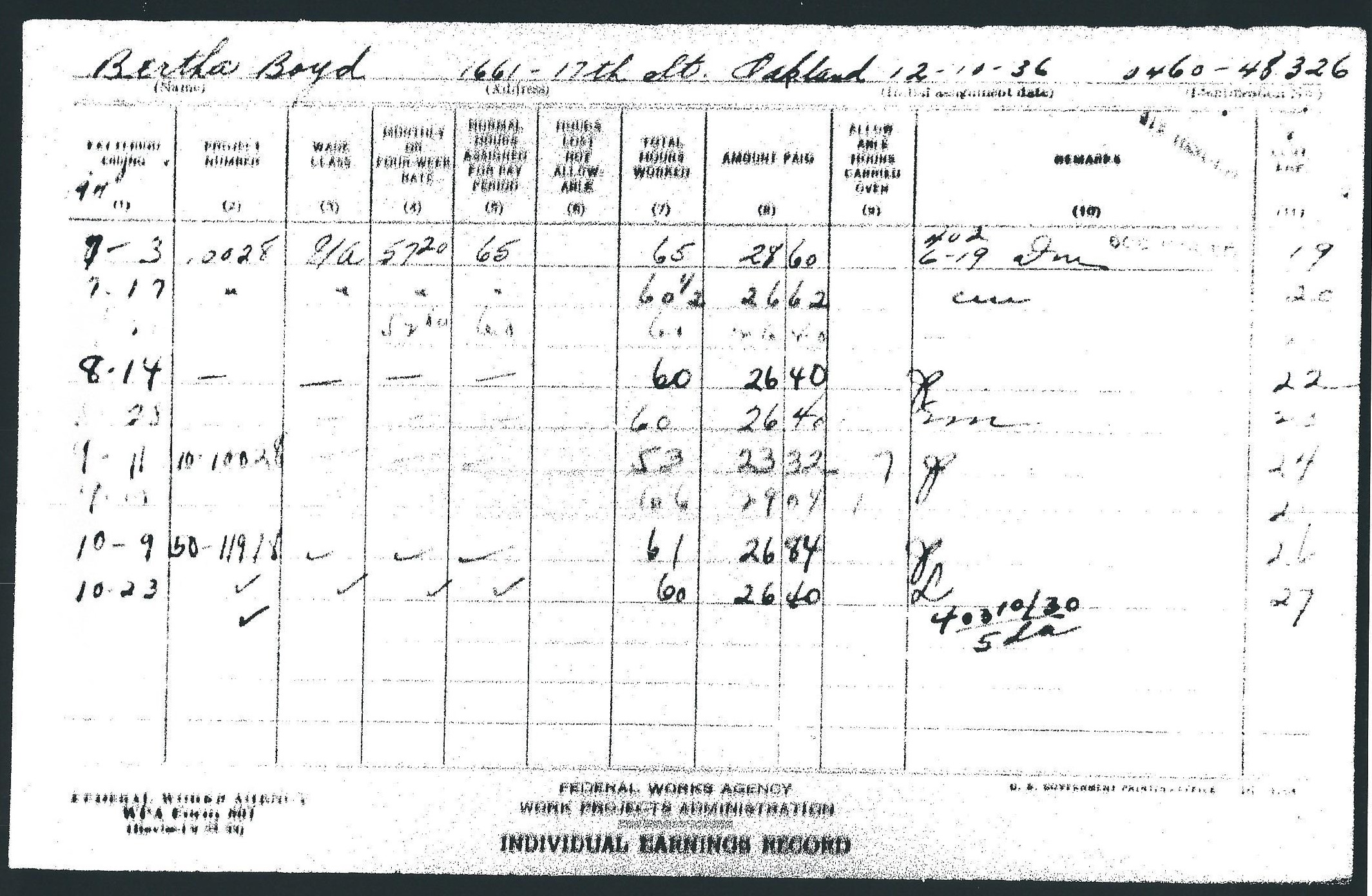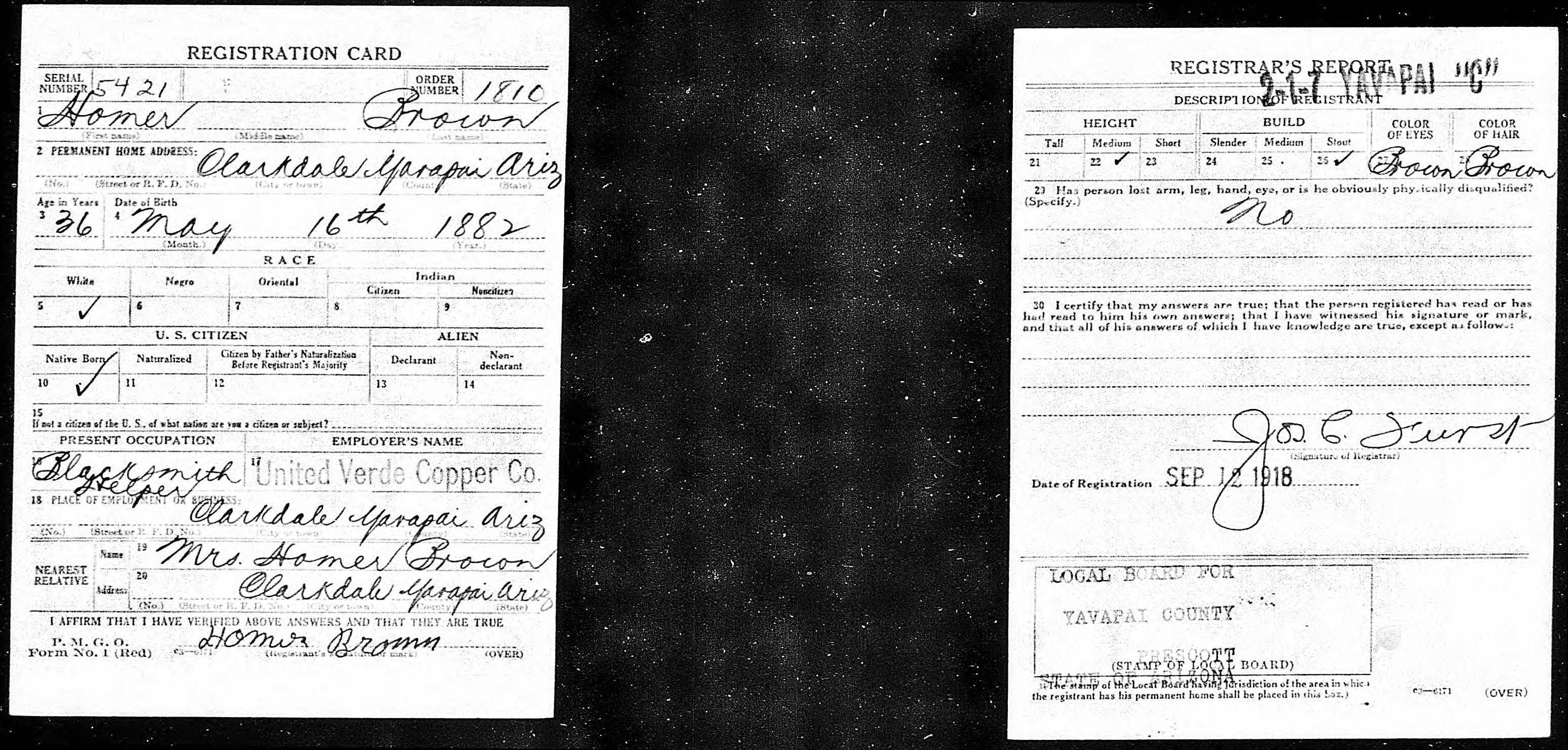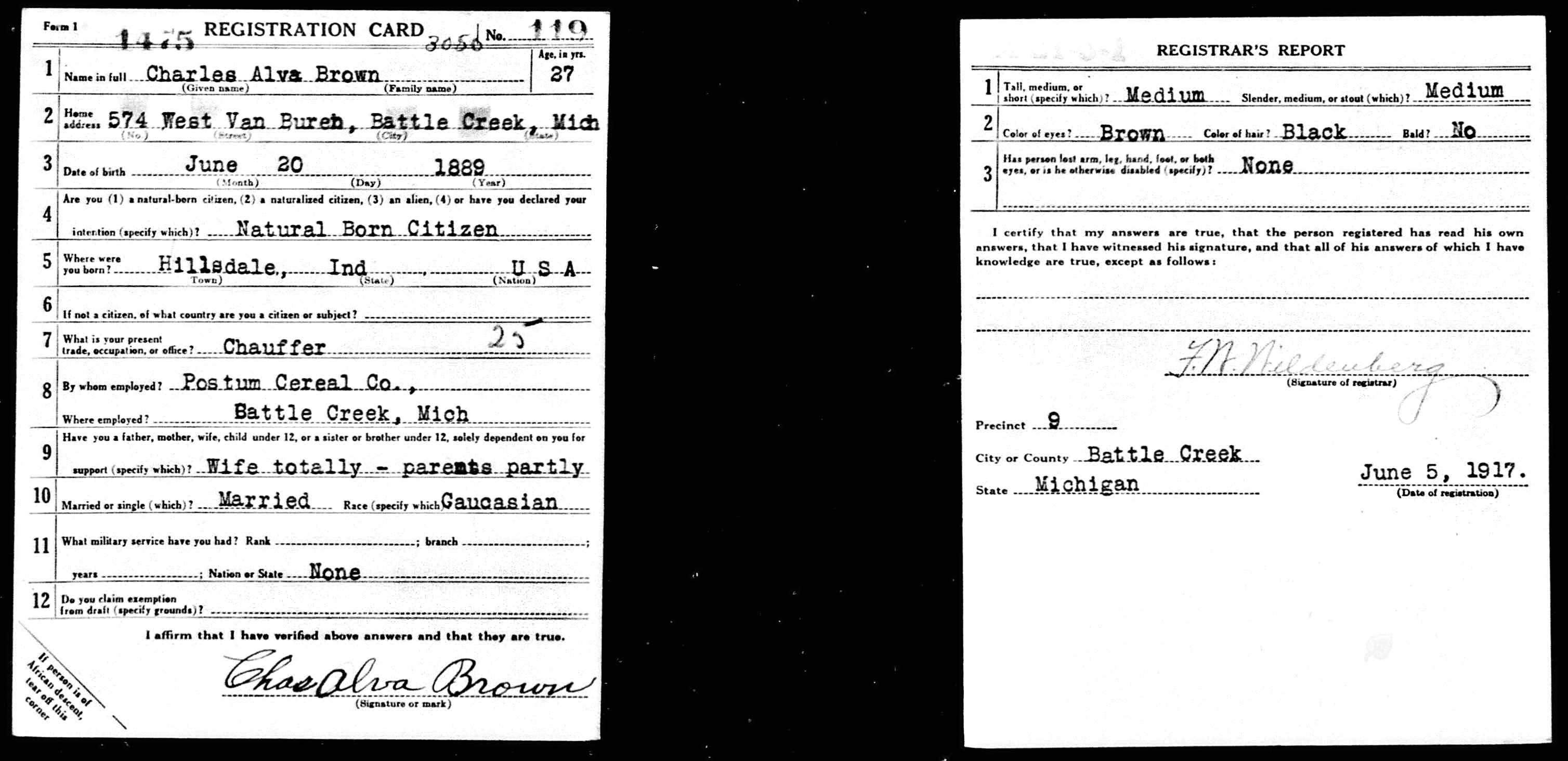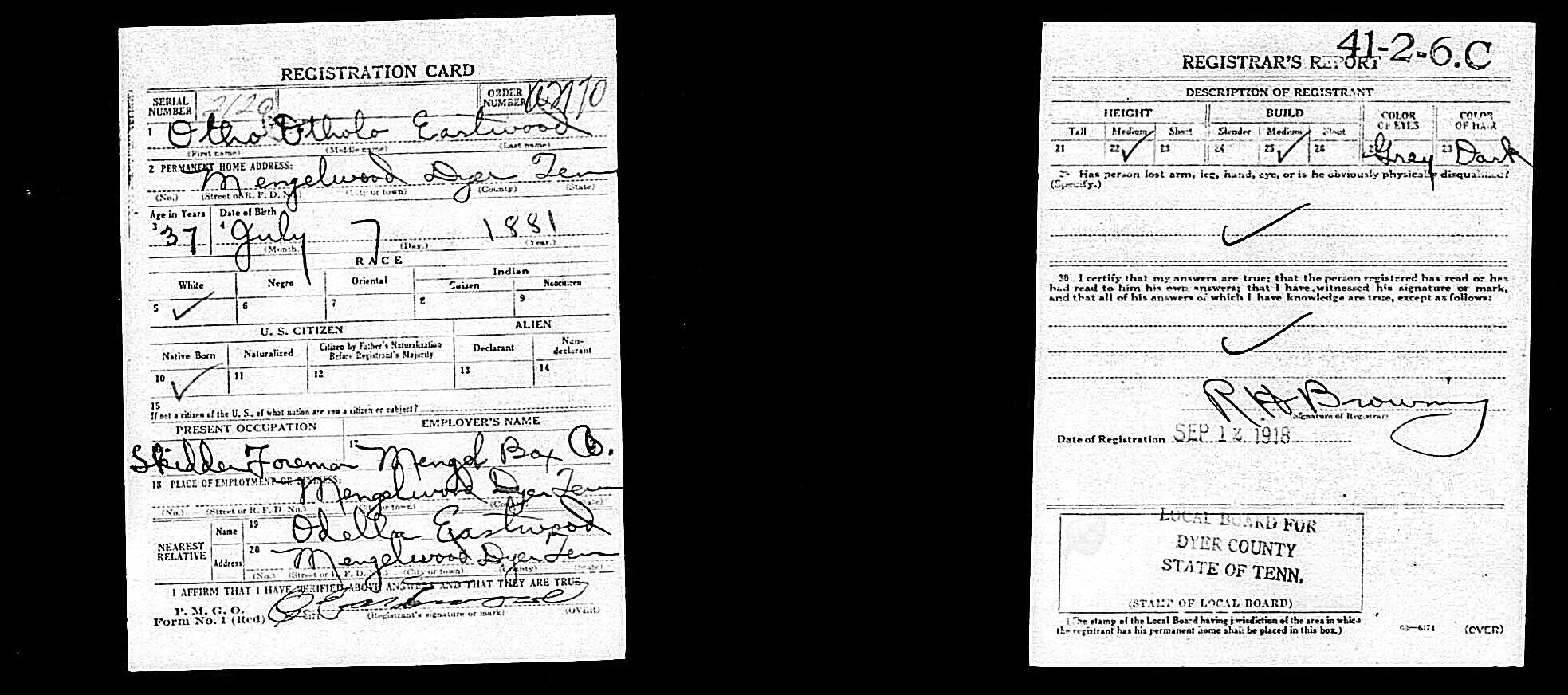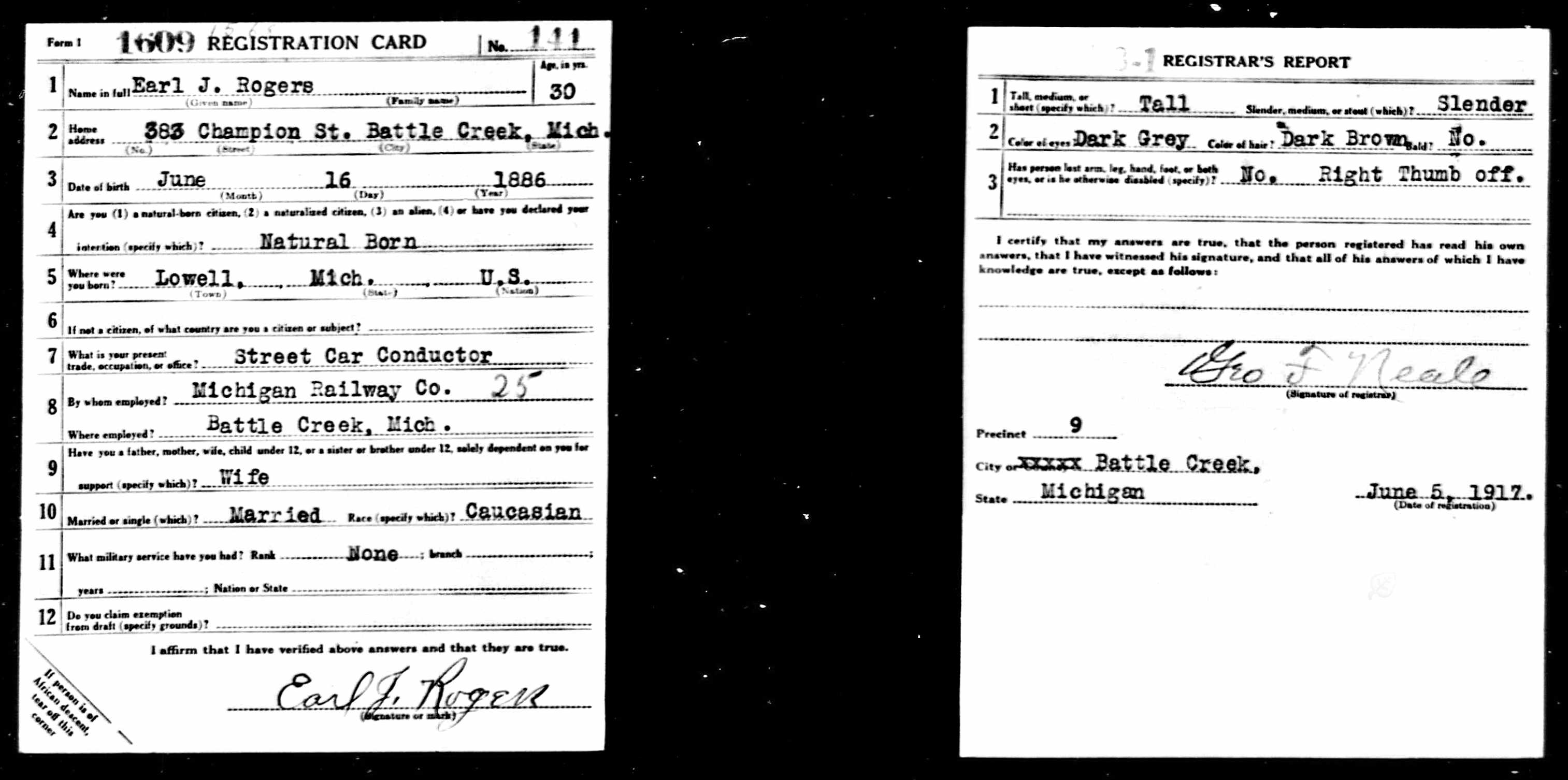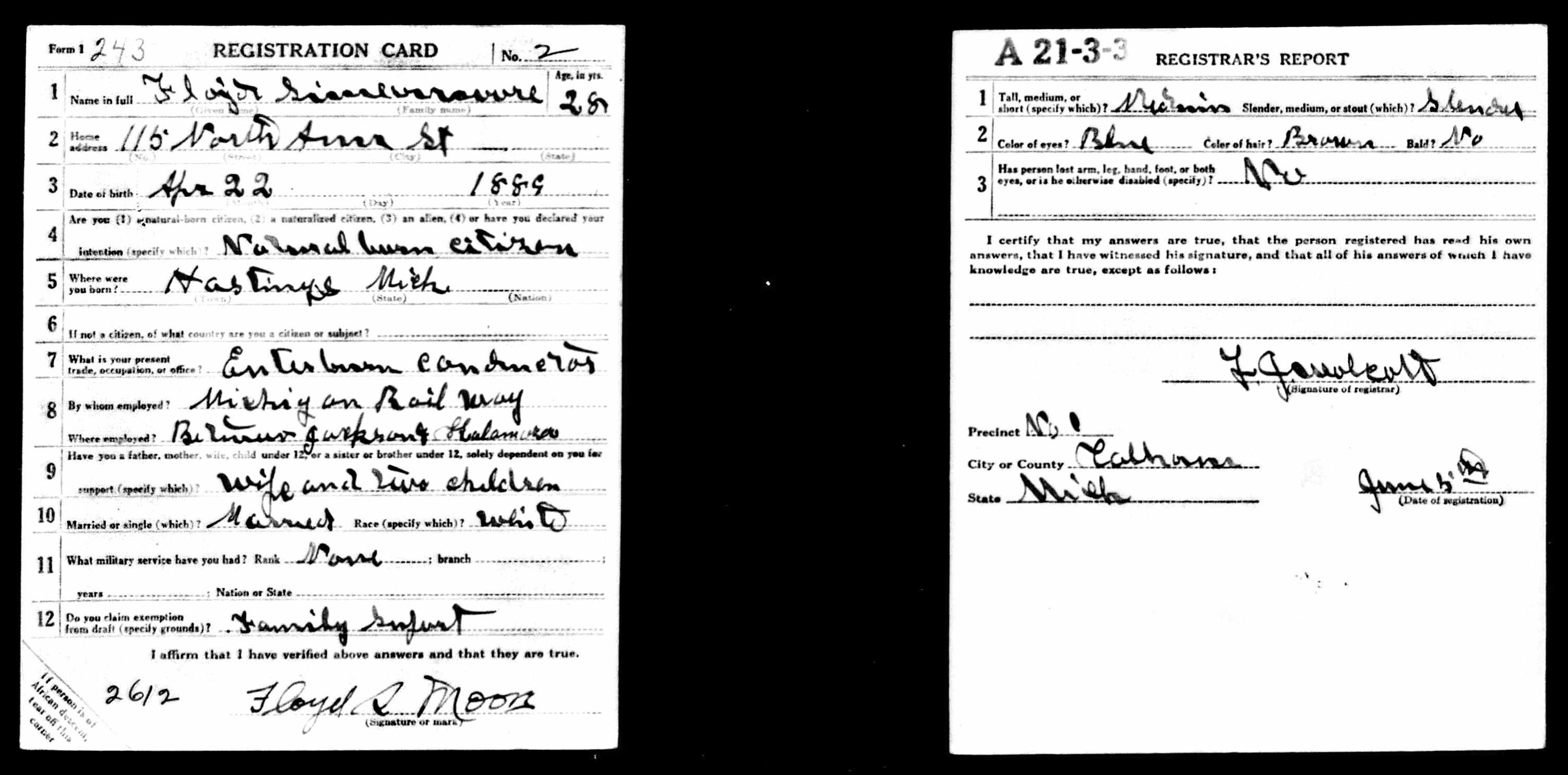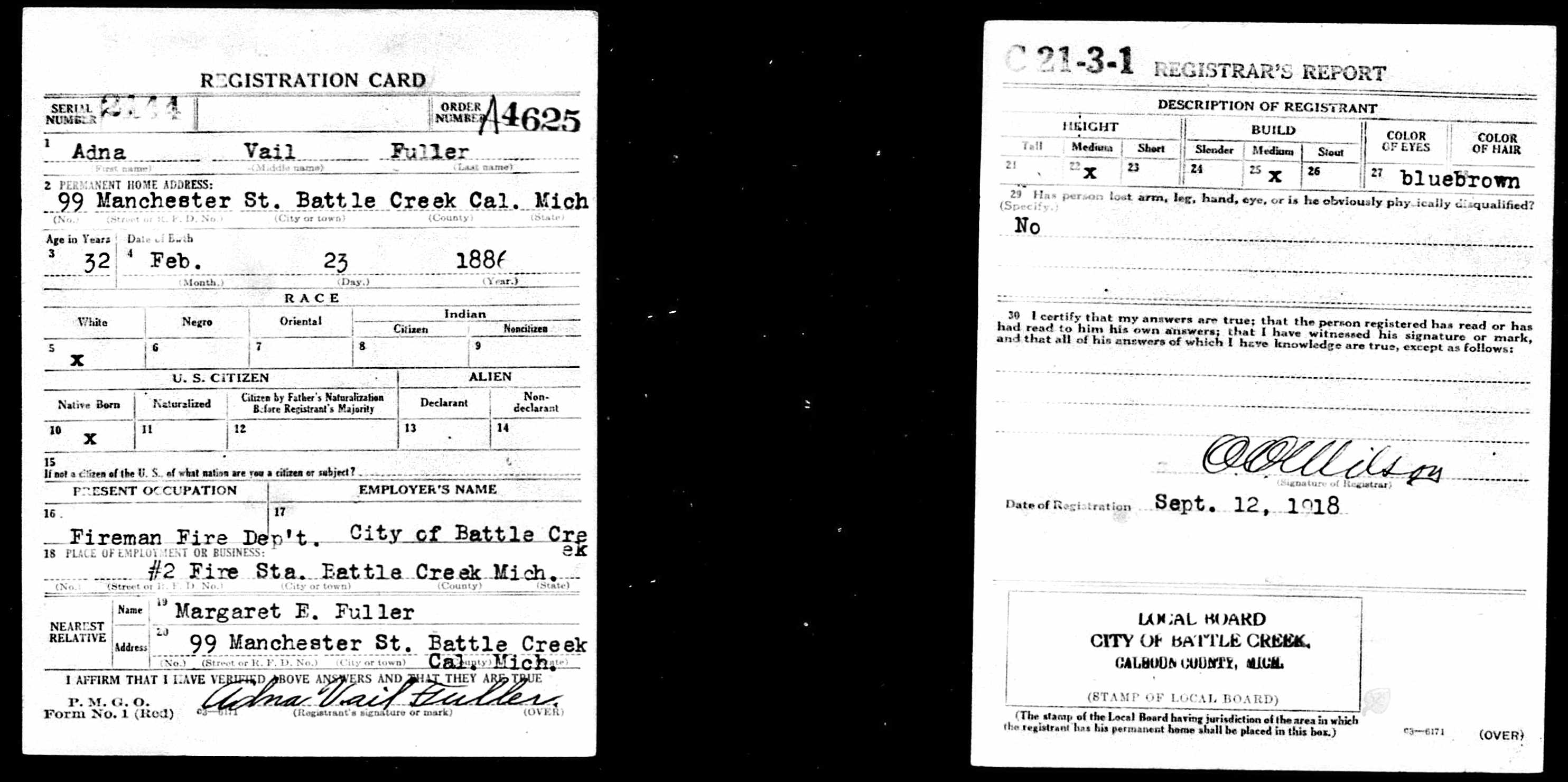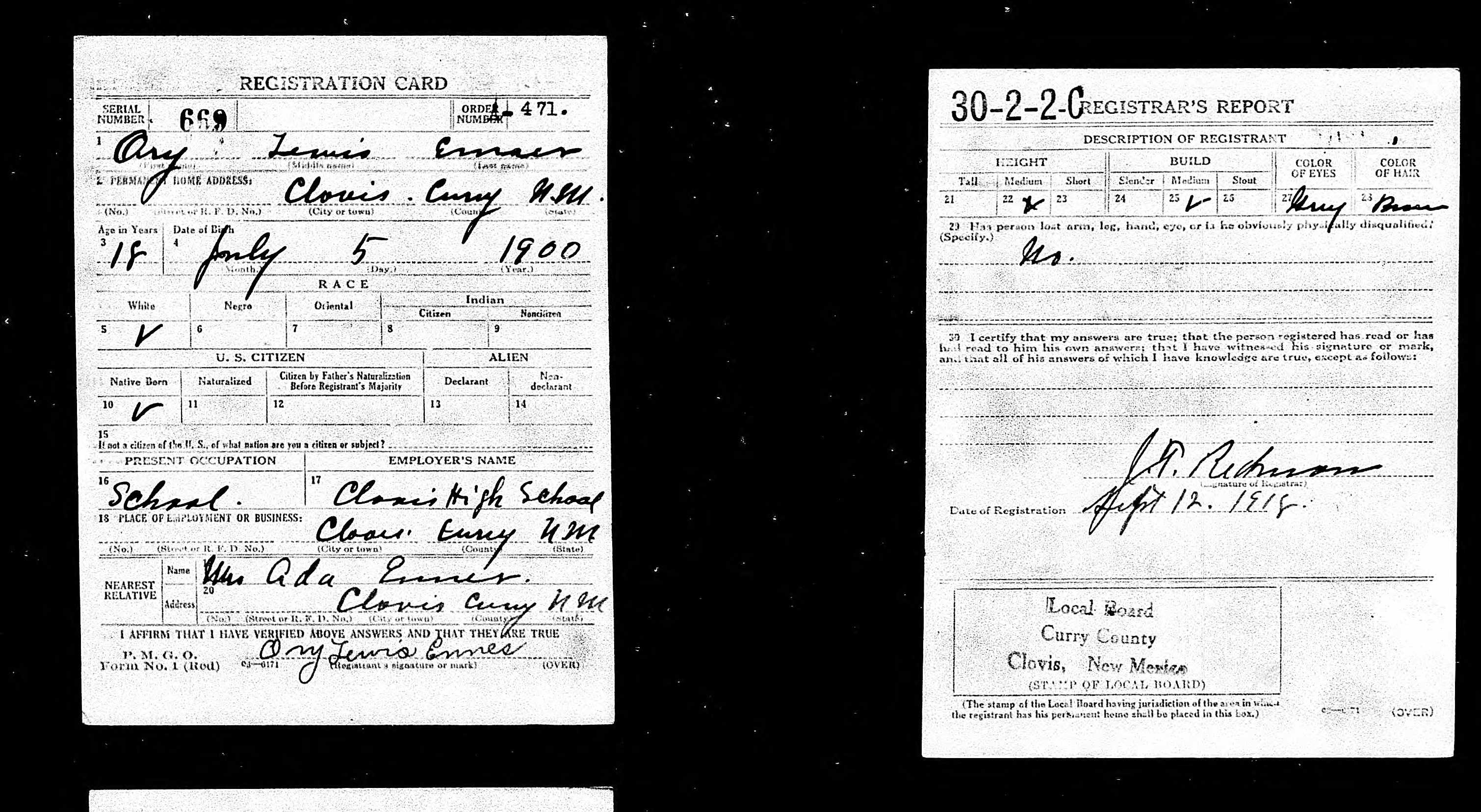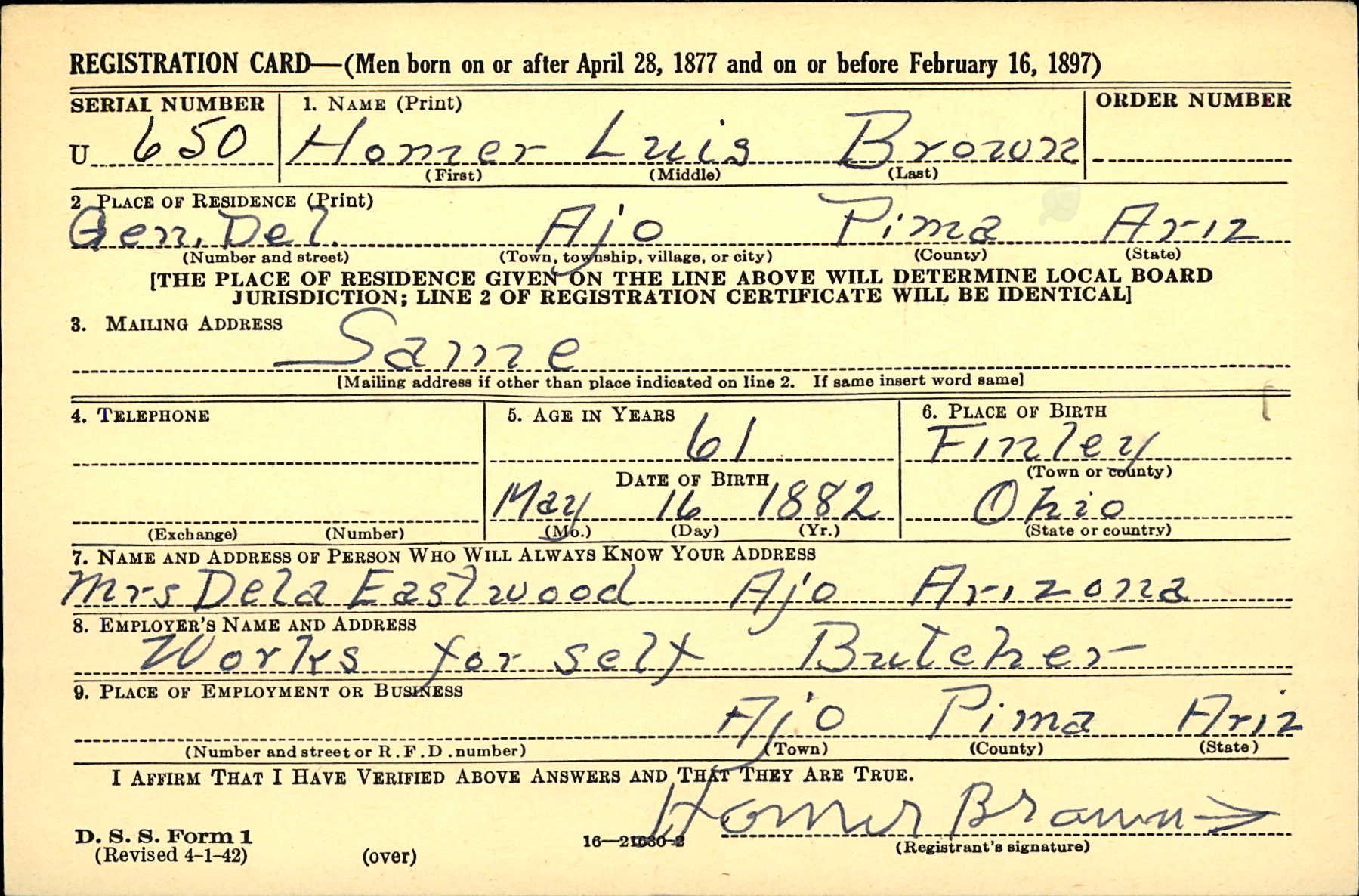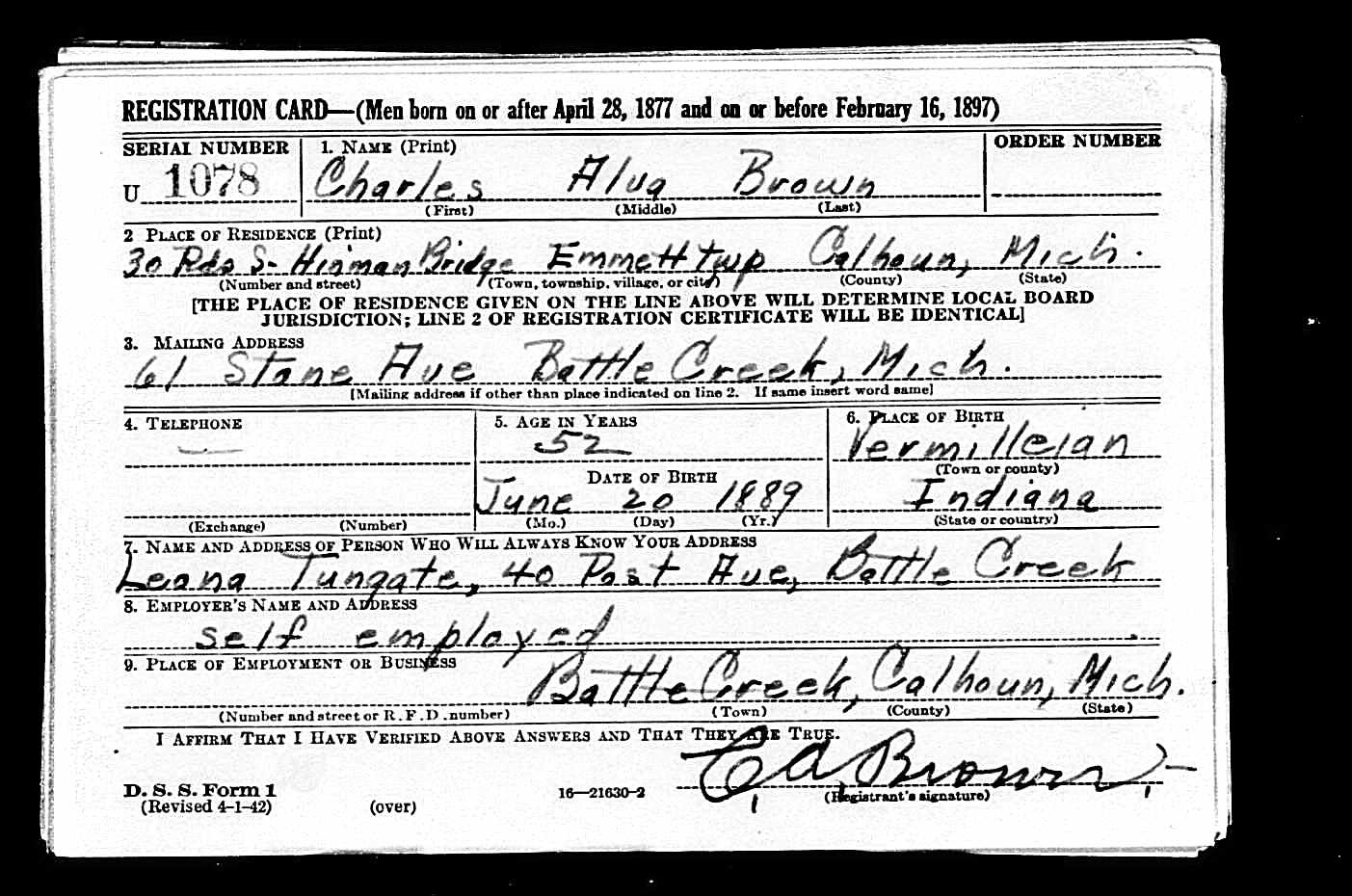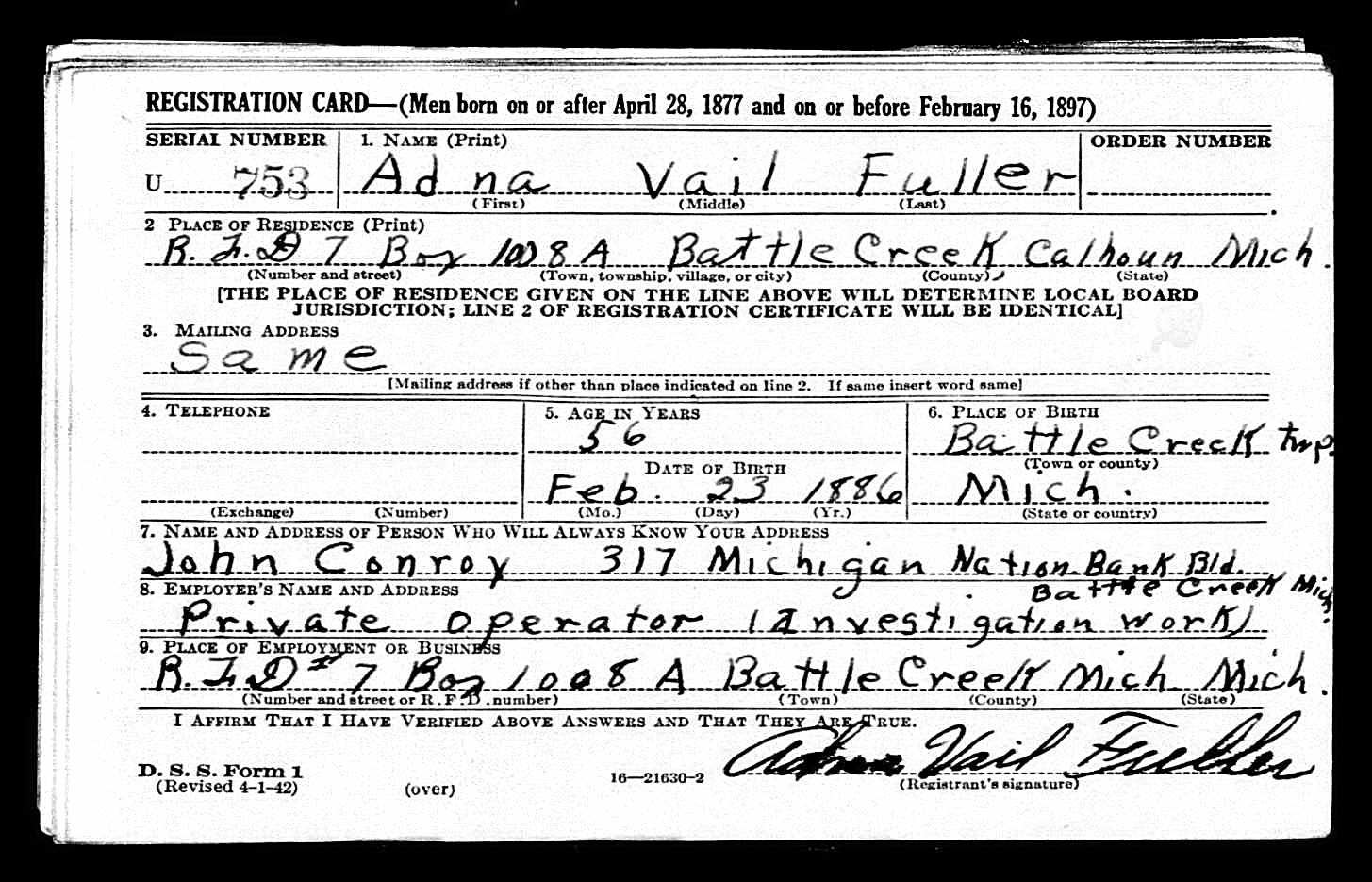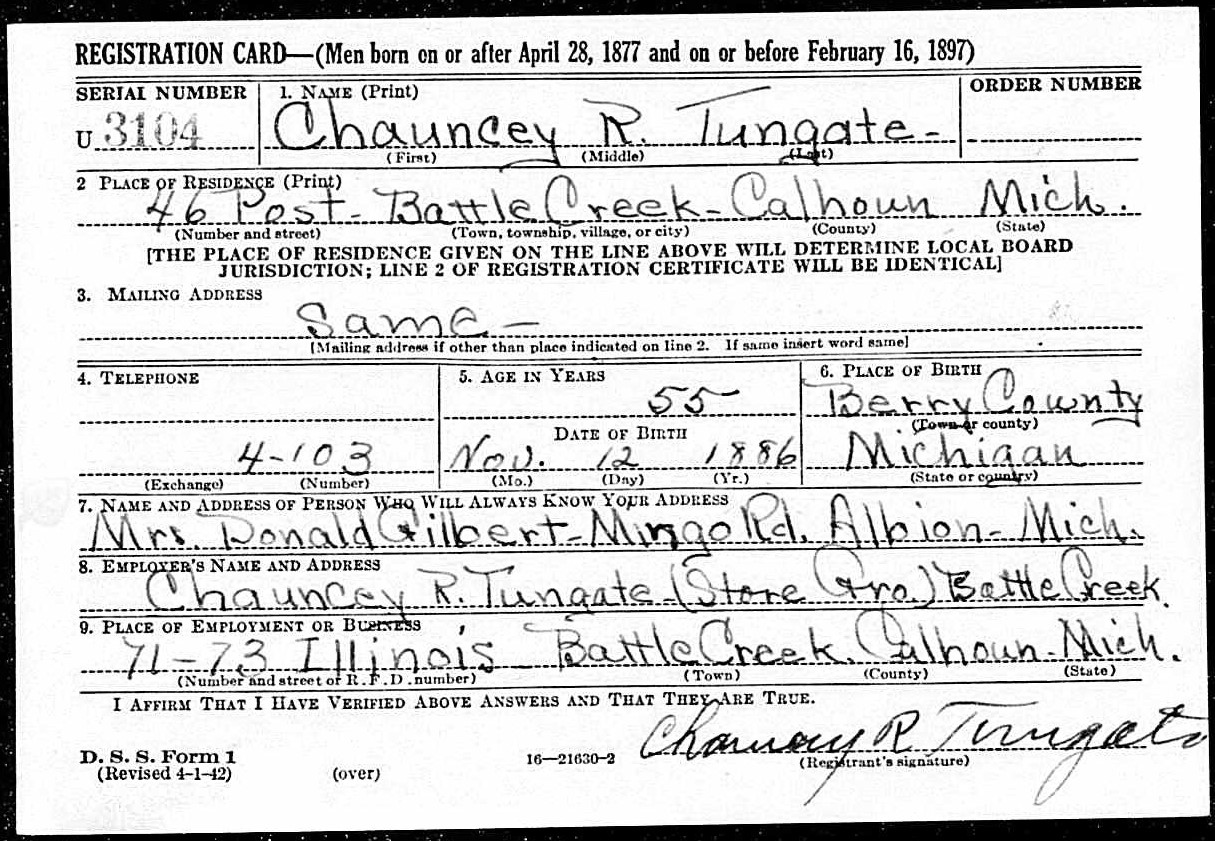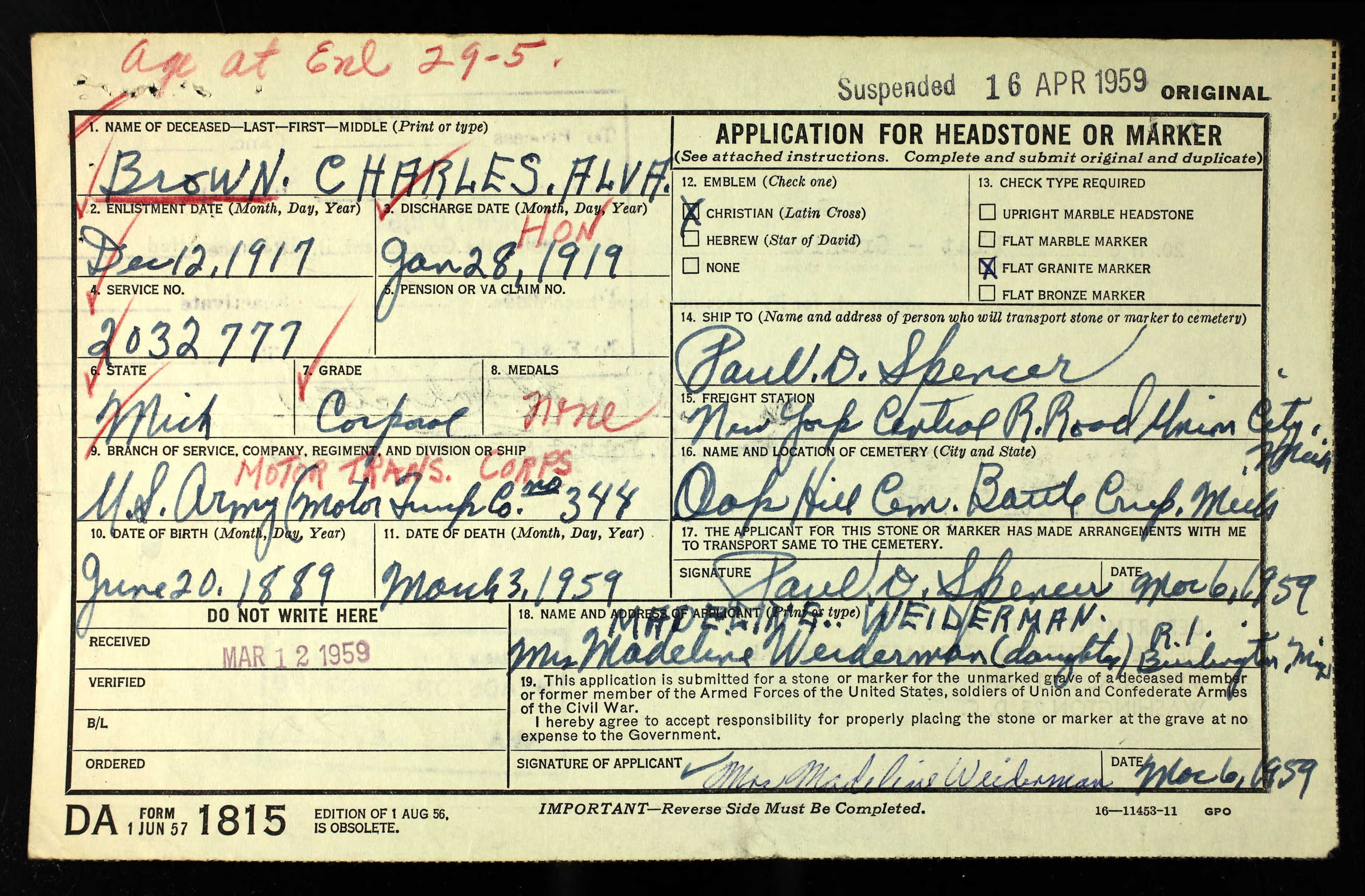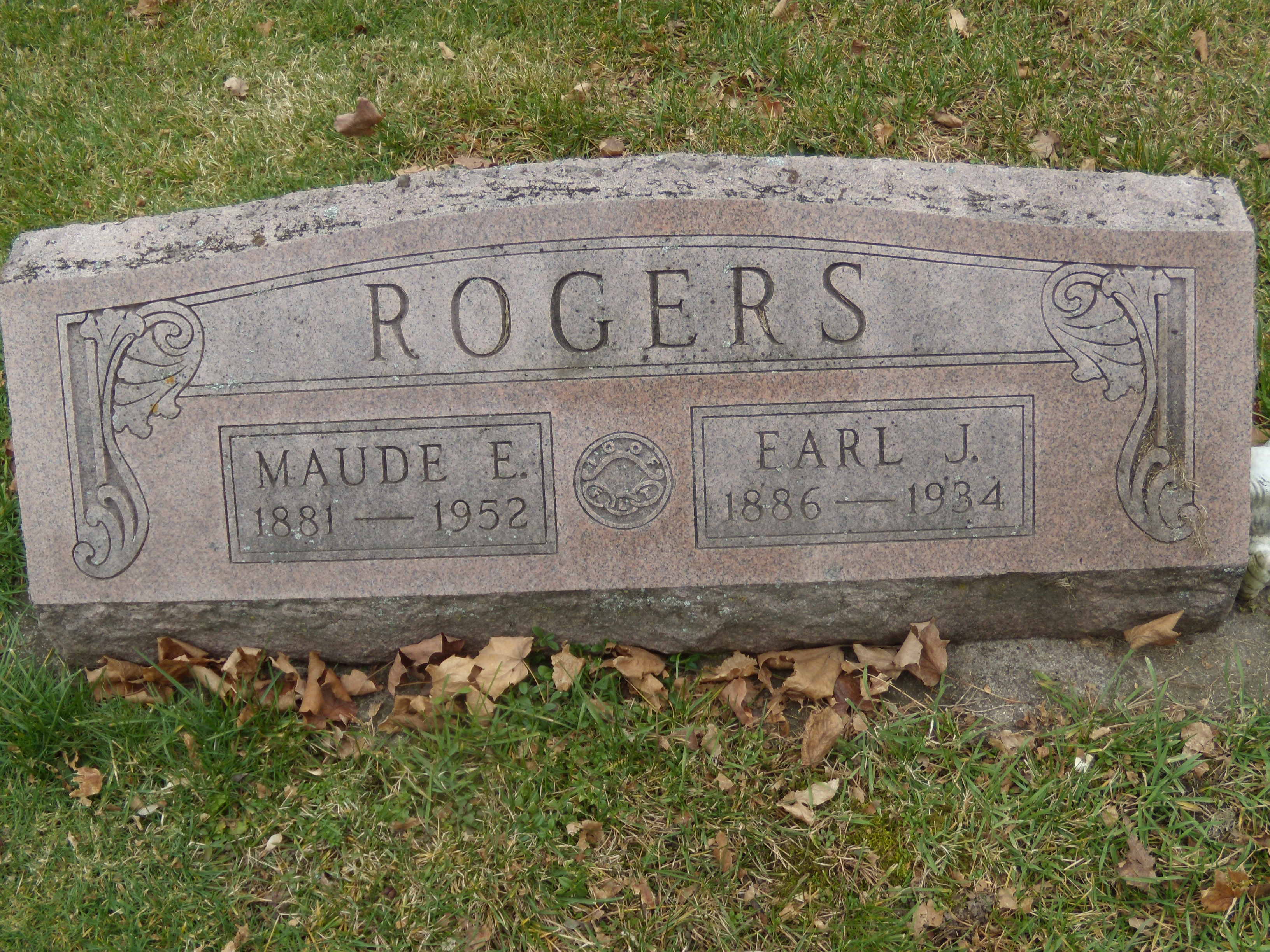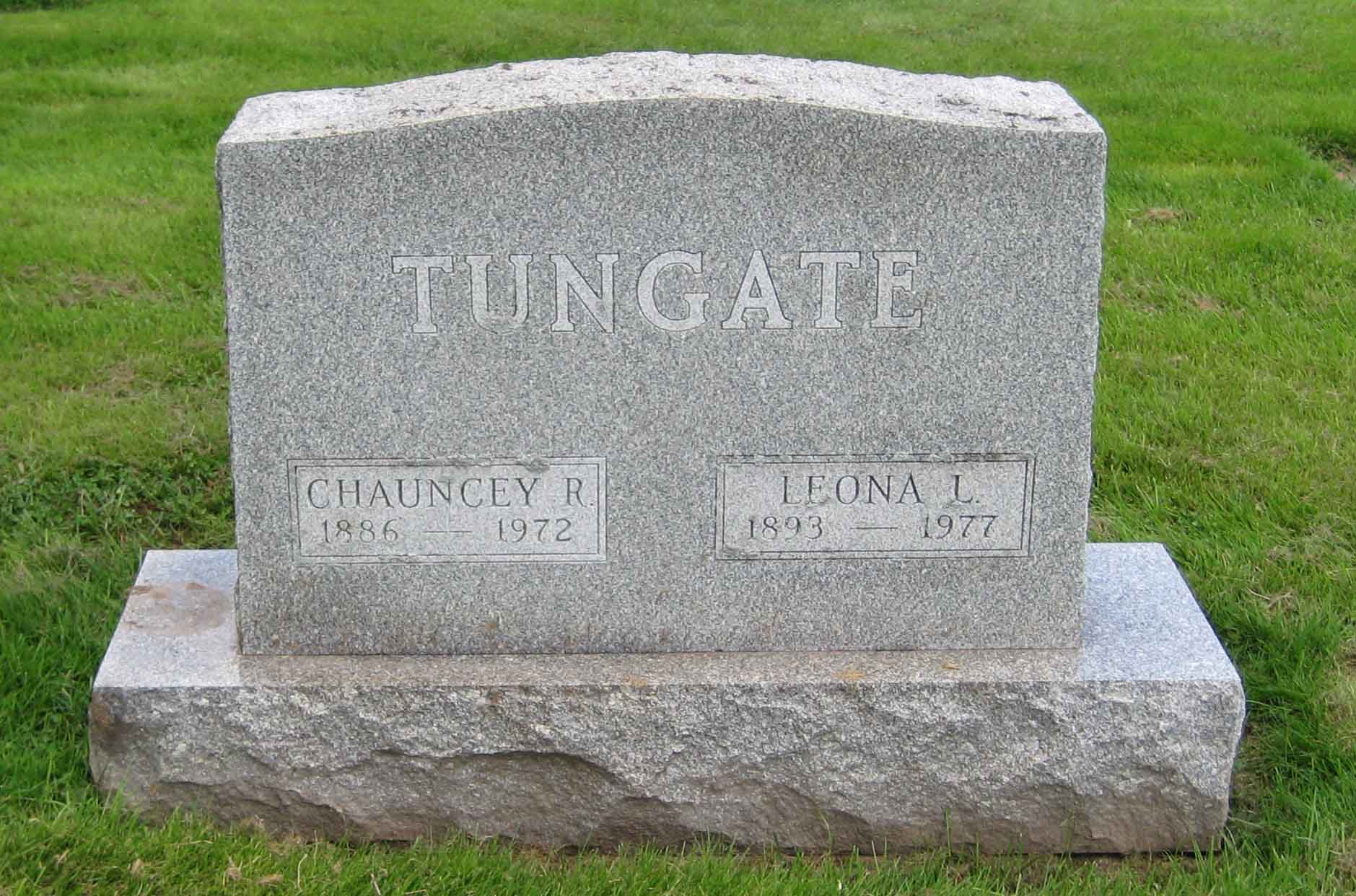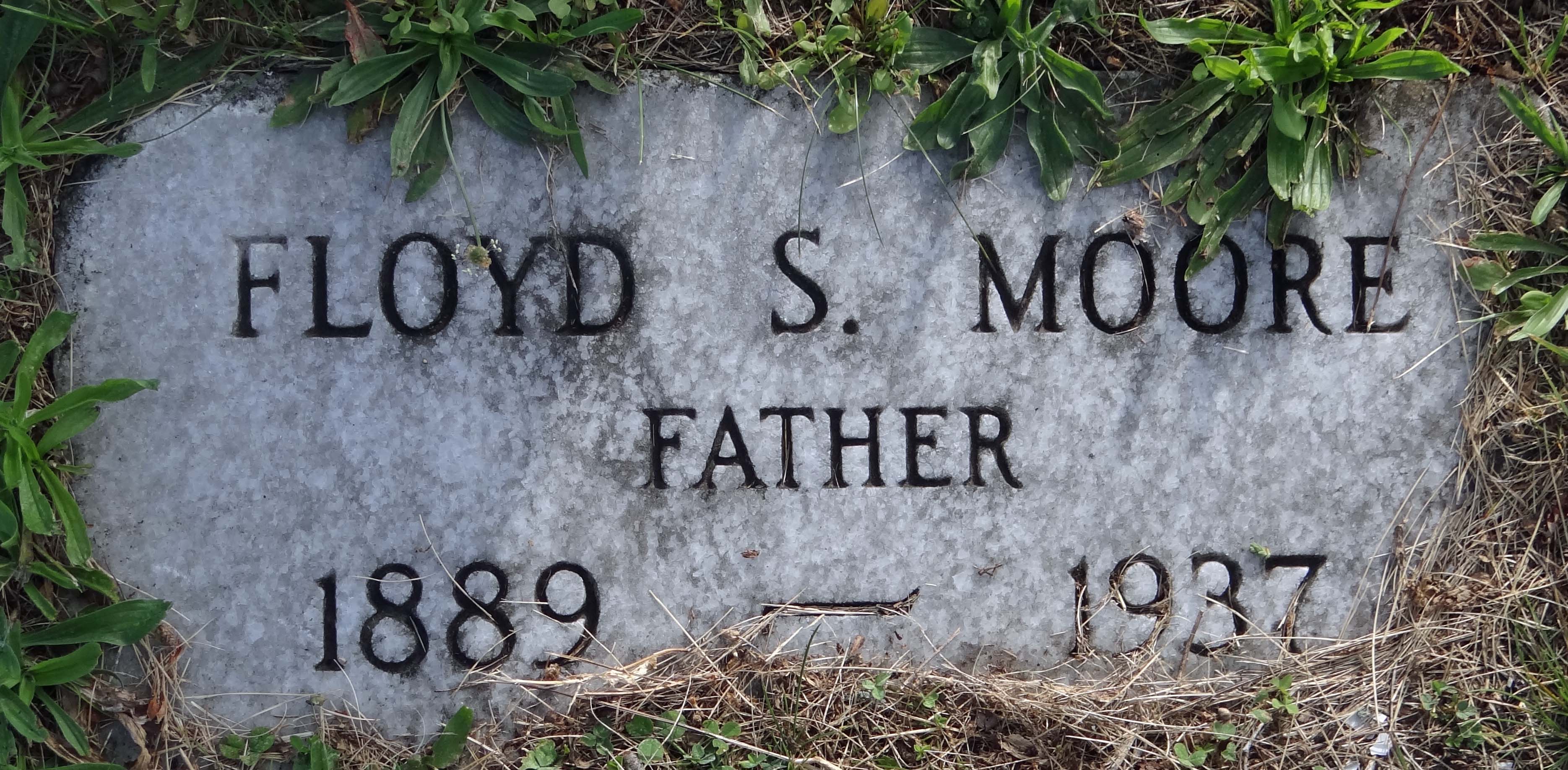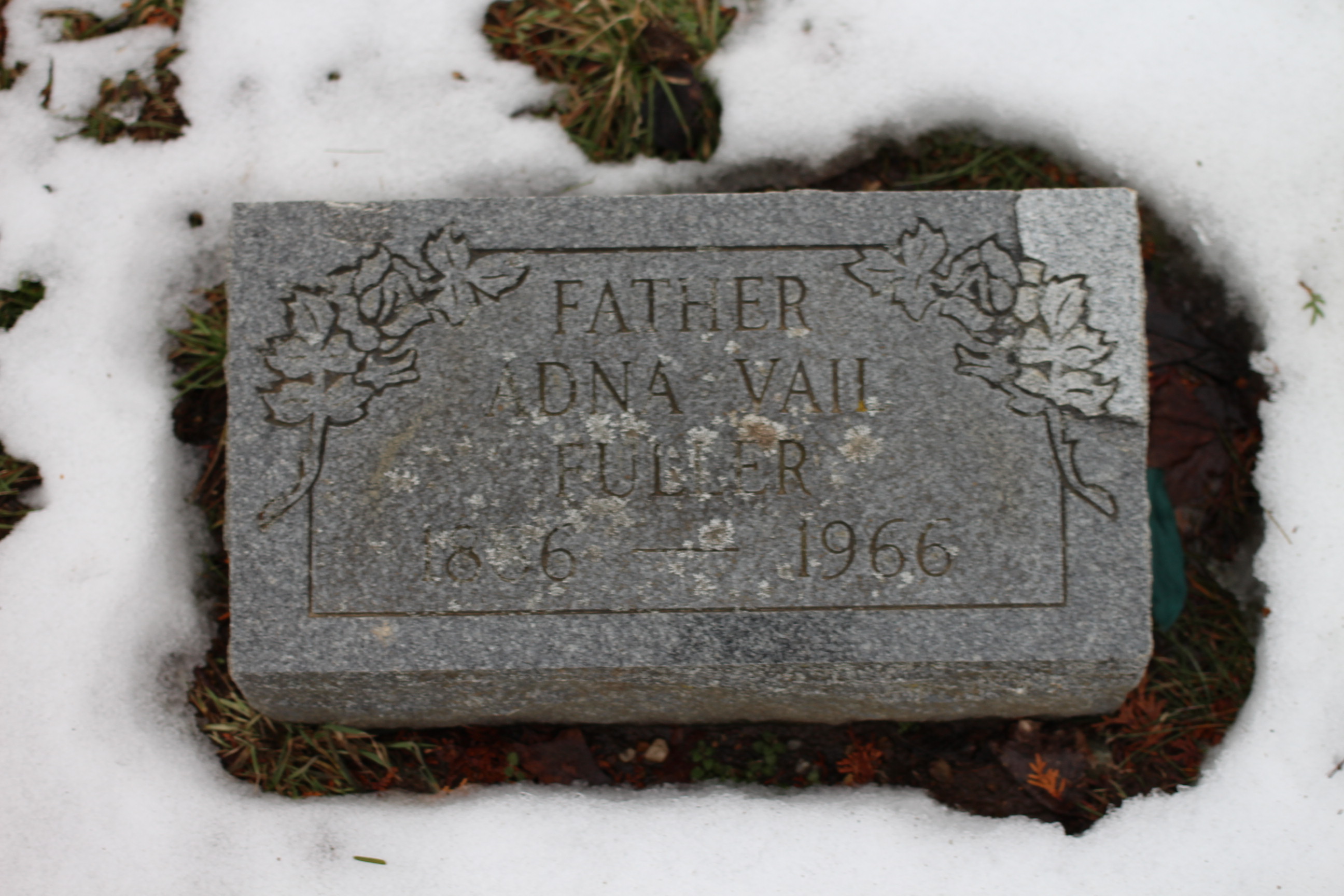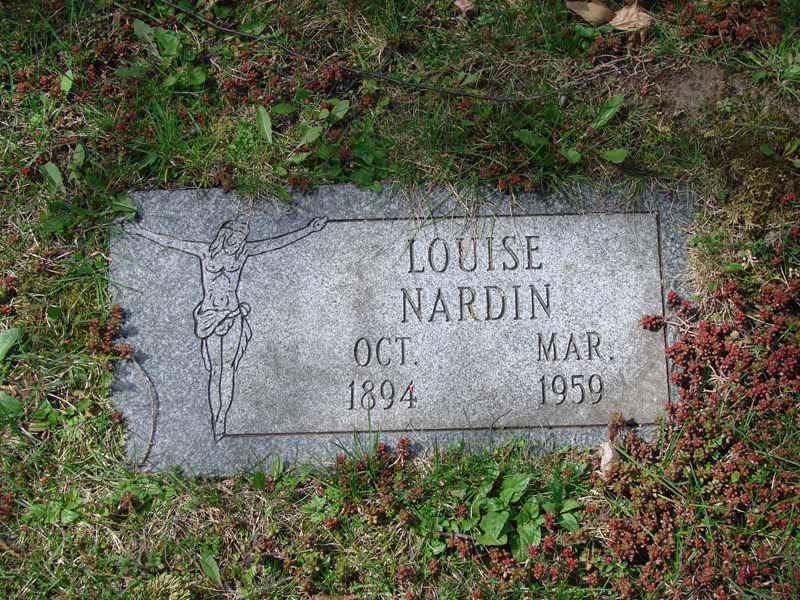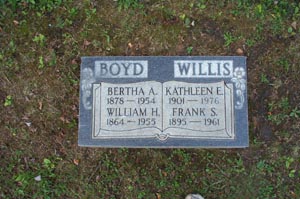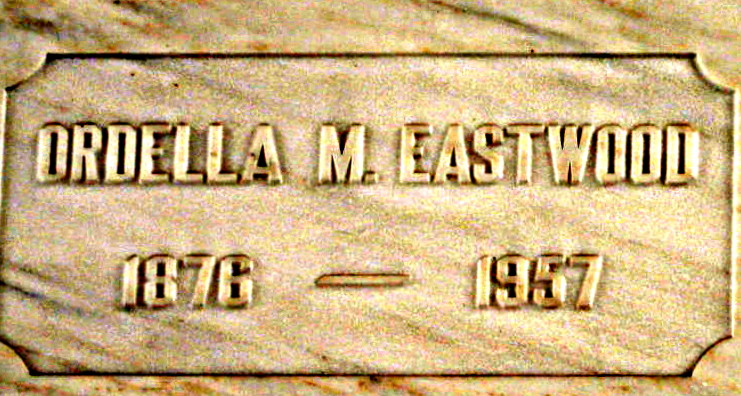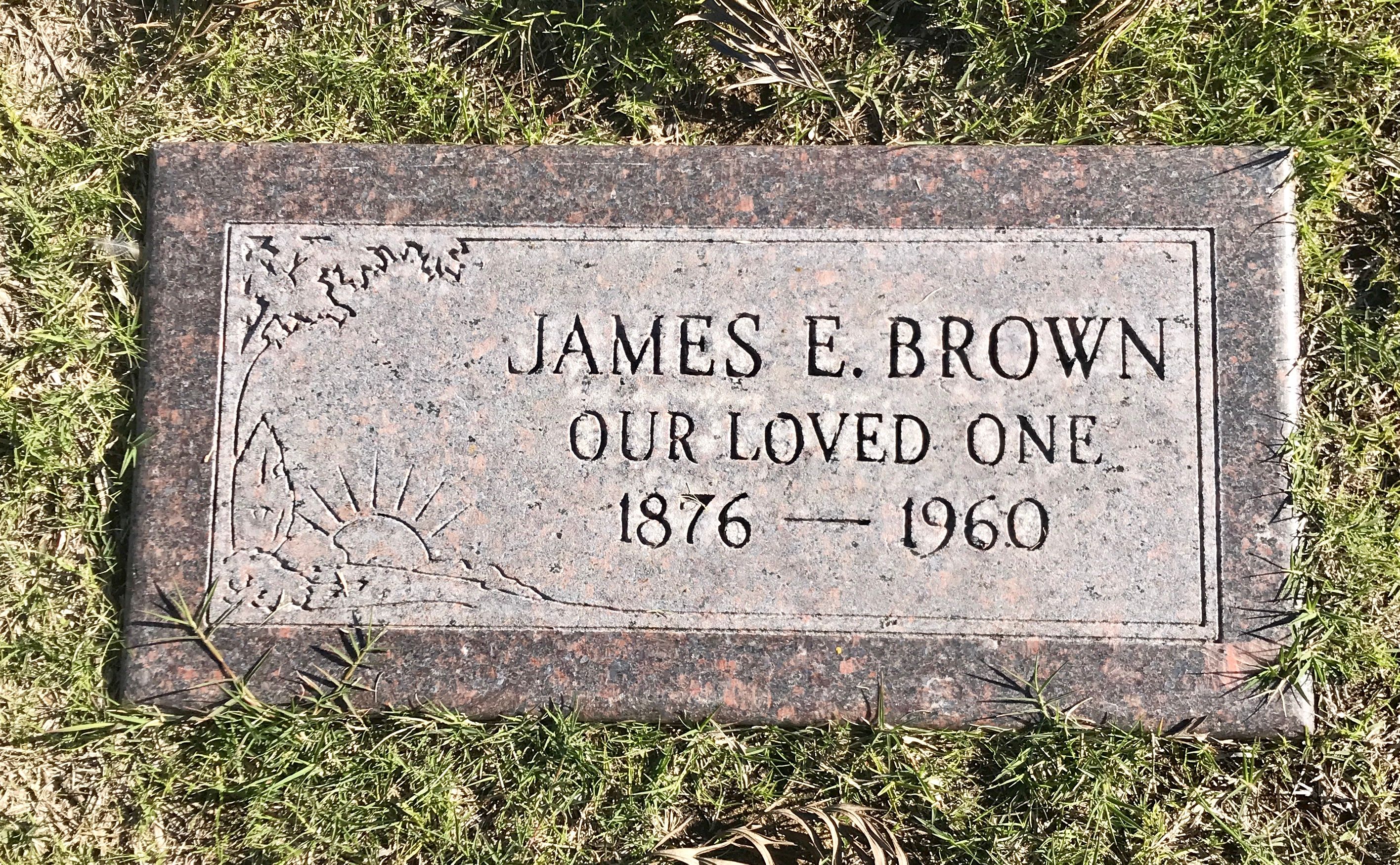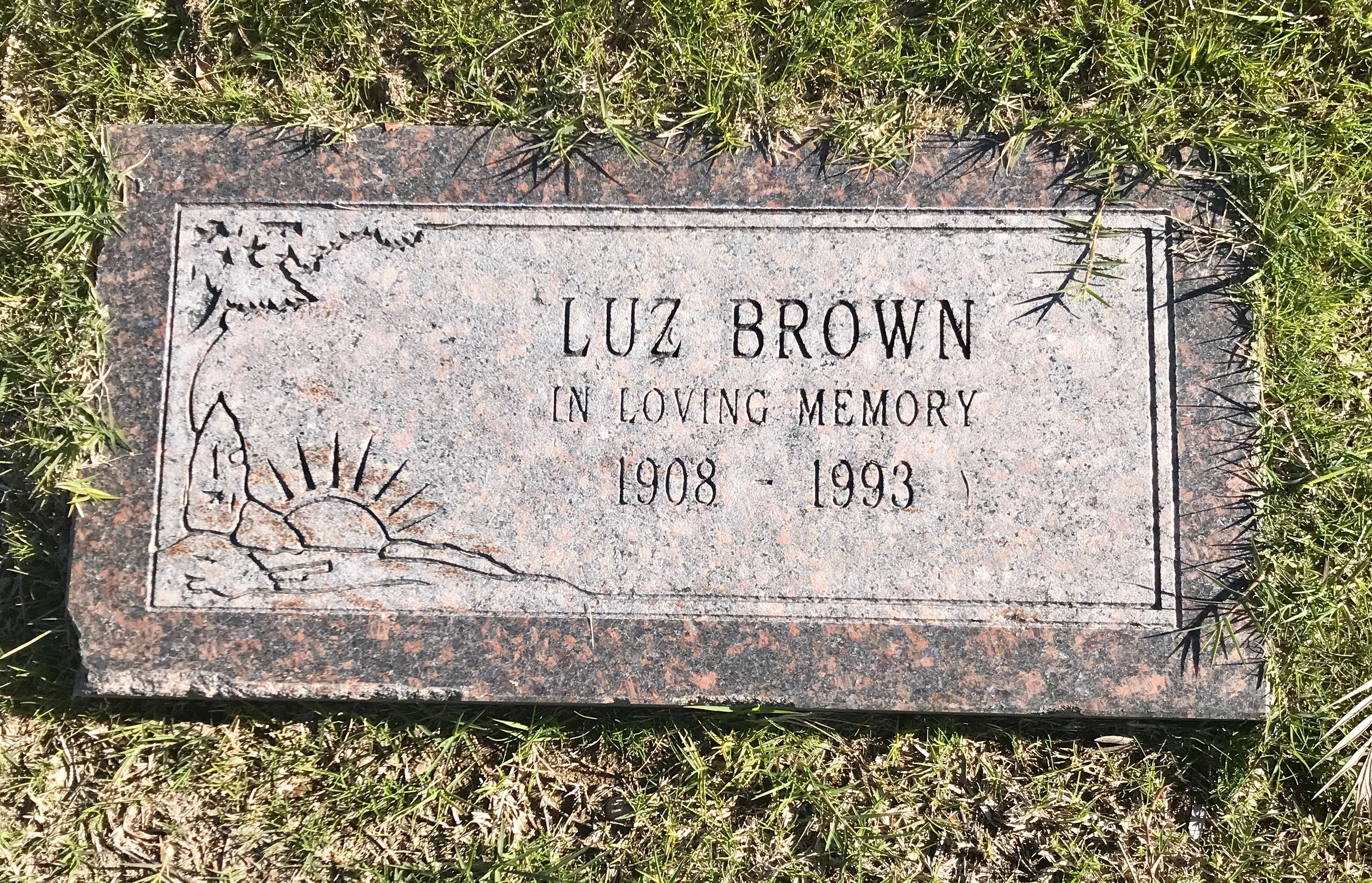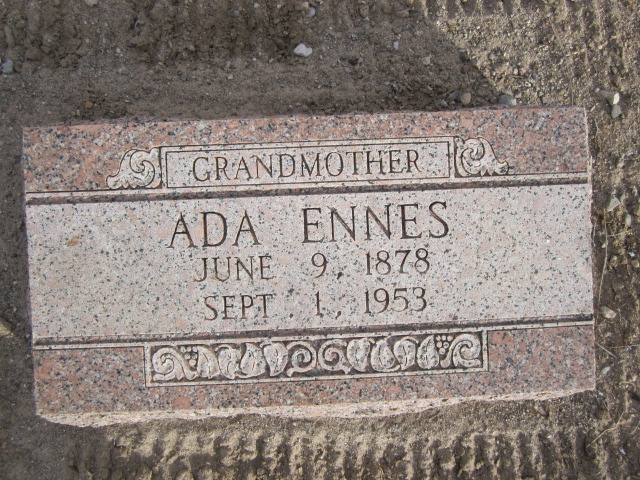Citing this biography: Boyd, Michelle, "Alva Parks Brown and Martha Jane Ennis," article, Olive and Eliza, last accessed [current date]."
Alva Parks Brown was born 23 November 18(42?) in Elba, Genesee,
New York to Orsemus L. Brown and
Diantha Parks. His birthdate was recorded as 23 November
1838 but the year is likely incorrect as the date is too close to his
brother Tristram's birthdate (23 Oct 1838), only one son for Orsemus
appears on the 1840 census, and Alva appears as 8 years old in 1850.
Alva married first Martha Jane Ennis 24 Oct 1870 in Texas,
Henry, Ohio. Martha was born 10 Aug 1849 in Union County, Ohio to Alonzo
Havington Ennis and Olive Bird. In 1865, her family moved to
Texas, Henry, Ohio. When Martha was 19, her mother died in childbirth,
along with the baby. Her older sister died at age 23, when Martha was
21, leaving her the eldest living child in the family.
Alva was a salesman who ran a huckster wagon to county fairs. He also
sold door-to-door. He sold a variety of items, such as seat springs and
water pumps. According to his grandson Frank Boyd, he also sold rotten
wood as bedbug powder. He was also an inventor who obtained several
patents. Two of these were a patent for a spring bed-bottom granted 18
May 1875 and a patent for a bedstead granted 17 January 1882. Martha's
nephew Calvin Ennes wrote, "Young Sylvester Beecher Ennes [Martha's
brother and Calvin's father] traveled with Albert [sic]
on his many trips. It was a hard life for them and a harder life for
Martha, his wife, who lived with her father at the Old Ennes Farm taking
care of her children. After Ordella died in 1871, Martha was the oldest.
Alonzo Ennes gave her the Old Family Bible." Calvin described life on
the Ennes farm: "[Alonzo] had his children work in the fields
too, with him…Those were busy days for the girls on the Old Ennes Farm
at Texas. They not only did the housework and work in the fields but
they made the hundreds of tallow candles needed for lighting the home,
and also those used in the many square-tinned lanterns used in the barns
and stables. The girls also made the lard and the apple butter over an
open fire in a large iron kettle outdoors. In fact, they made nearly
everything except the shoes they wore on their feet."
Tragedy struck again when Martha's father died from sepsis due to an
accidental cut to the hand when Martha was 29. Calvin Ennes stated that,
"Over the years, Alonzo bought many farms so the Alonzo Ennes Farm at
Texas, Ohio was originally composed of many smaller places with
buildings on each of them. These farms were located north of the Canal
on the east side of Texas. After Alonzo's death in 1879, each of his
children, with the exception of Lincoln…was given a portion of his
holdings.…Martha Brown, with her large family inherited the Alonzo Ennes
home, buildings and land where she and the Ennes family had lived."
Martha was also given $10.72 from her grandfather William A. Ennes's
estate in 1882.
Alva was listed as a farmer in 1880 but it is unclear whether he gave up
his occupation as a salesman to run the farm. His parents were
enumerated in the next household but it was noted under occupation that
his father "works on farm" and his mother "lives with son."
Martha filed for divorce 1 November 1880. A divorce hearing on 25 Jan
1881 at Napoleon, Henry, Ohio. At this time, Martha accused Alva of
"gross neglect and Extreme cruelty" and reported two incidents in Oct
1880 where he beat her. She also stated that he abandoned the family,
taking "all the household goods and provisions belonging to the family
and all the clothing of said plaintiff & her children except what
they had on, taking then and there even the pillow from under their
infant child lying in a rocking chair." Alva denied the allegations and
in turn, accused her of "gross neglect of duty" towards him, of being
the one who deserted him and the family on 18 Oct, and of adultery with
an Ely Bolinger. The divorce was granted 11 Feb 1881 and Alva found
guilty of extreme cruelty. He was ordered to pay alimony. Martha was
granted custody of the children.
Alva and Martha remarried later that year, however, on 1 Aug 1881 in
Napoleon, Henry, Ohio. The second marriage didn't last and they divorced
a second time in 1886. Alva published a legal notice in the local
newspaper, praying for a divorce from her on grounds of "gross neglect
of duty" and informing Martha "whose place of residence is unknown" of a
hearing on or after 10 Aug 1886. The granting of the divorce was
reported in the local newspaper 7 October 1886 and it was noted that the
divorced was decreed at the costs of the plaintiff (Alva).
Alva after the second divorce:
Alva moved to Indiana after the second divorce. He married second
Louisa A. Thoman 14 Aug 1888 in Fulton county, Indiana. Louisa was
born 9 Jan 1868 to Jacob and Caroline Thoman. They were living at
Hillsdale, part of Helt, Vermillion, Indiana 30 Jul 1895, when Alva was
granted a patent for a design for a chair. He was listed as a farmer in
Helt in 1900.
The Browns moved to Michigan in 1903 in a covered wagon. There, his
grandson Frank stated that he owned a broom factory in Battle Creek,
Calhoun, Michigan. While it is not certain whether he owned a factory,
he does appear in a Battle Creek city directory as a broommaker, living
at 574 West Van Buren Avenue. At the time of daughter Leona's marriage,
they were living at a farm home at what later became Fort Custer in
Michigan. Alva wrote a letter that was probably dated around 1917-8, in
which he gives his address as "574 west vabren Batel Crick Mich" (574
West Van Buren, Battle Creek, Michigan). The letter, probably written to
one or more of his children of his first marriage, states, "I feer I
shall never Have the Plesher to see you all a gane." It is evident in
the letter that his daughter Bertha had previously written to him but
had not done so in some time.
Alva was apparently committed to an institution in the last decade or so
of his life. He appeared twice in the 1920 census, once in the family
home on West Van Buren Street in Battle Creek (but with the note "State
Hospital" under occupation) and once as an inmate in the Kalamazoo State
Hospital. Louisa was living at West Buren Street with her son Charles,
his wife Mima, and their daughter Geraldine. She was working as a
housekeeper in a hospital.
Alva died 14 June 1929 at the Kalamazoo State Hospital, Kalamazoo,
Kalamazoo, Michigan of myocarditis and cardiac failure with
arteriosclerosis as a contributing factor. He was buried 16 June 1929 at
Banfield Cemetery, Banfield, Barry, Michigan. About a month later, on 21
Aug 1929, Louisa suffered a brain hemorrhage but survived. She was
enumerated in Battle Creek in 1930, still at West Van Buren Street, with
one roomer. Louisa died 15 May 1931 at Nichols Hospital in Battle Creek,
Calhoun, Michigan of a cerebral hemorrhage. She was buried 18 May 1931,
next to Alva, at Banfield Cemetery, Banfield, Barry, Michigan.
Martha after the second divorce:
Martha left Ohio after the second divorce and moved to Arkansas. She
took all of the children from both her first and second marriage to
Alva. Calvin Ennes wrote that, "Shortly after her father Alonzo died in
1879, Martha left Brown, took her family, the Bible, which had the Ennes
family records back to 1666 in Ireland, few belongings and went to
Arkansas. On the way the boat was wrecked while on the Mississippi. The
Bible and her belongings were lost, but the family survived. Several
years later she came back to Texas with her youngest son Edward and
visited. She was never heard from again after she returned to Arkansas."
Note, however, that there are several incorrect facts in this statement.
First, it can be seen in contemporary records that he did not leave soon
after her father's death in 1879, but in 1886, after the second divorce.
Second, Calvin stated elsewhere in his history the belief that the
family once held that the first Ennes ancestor in America was one of
three brothers from Ireland. There is no evidence to support this
descent. The Ennes' likely first American ancestors were Alexander
Innes, a Scottish prisoner of war transported to New England as an
indentured servant and, his wife, Catherine, an Irish woman (possibly
also transported and indentured involuntarily). Lastly, Calvin's version
of the story about the Bible may not be accurate. The story, as passed
down to my grandfather, Martha's grandson, was that the Bible was lost
in a flood sometime after Martha and her children had settled in
Arkansas.
Before Martha left Ohio, she had been led to believe that she had
purchased land in Arkansas but discovered that it was merely a lifelong
lease and she would not be able to do as she had planned, which was to
improve the land and rent or sell it. She was listed living in Spring,
Lincoln, Arkansas in 1900.
Martha died in 1910 in Little Rock, Pulaski, Arkansas, according to
information passed down through her grandson Frank. Her grandson Frank
Boyd also passed down information he had heard about his grandmother's
appearance and personality. According to him, she was redheaded, bragged
about having "blue blood in her veins," was selfish, vain, and a
"man-hater," "lived a hard life" of poverty, farmed and sold eggs, and
loved coffee and sugar. She may have gone by Mattie for short, as she
appears in Social Security records for her son Homer as Mattie Ennis.
Alva and Martha’s children are:
| 1 | Beecher
Brown, born about 1872 in Ohio (according to the 1880
census, which calls him Beecher) or about 1784 (according to Alva
and Martha's divorce papers, which calls him Alva Beecher),
married Hattie --. No birth records have been found for an
Alva Beecher. It is interesting to note that there is a record of
a Beecher Delos Brown, born 10 Aug 1871 in Eaton county, Michigan
to Alva P. and Martha Jane Brown. This date is the right year but
in a different location than what is stated in the 1880 census,
though it may still be possible that the Browns had been in
Michigan for a short time (especially considering Alva's
profession). The name Beecher Delos is particularly interesting,
as Martha had a brother named Sylvester Beecher Ennes and Alva had
a brother named Tristram Delos Brown. Could Alva Beecher and
Beecher Delos be the same child (perhaps one of the records had an
incorrect name? Or could there have been two children (a Beecher
Delos and an Alva Beecher) and Beecher Delos died young and was
not counted among the children in the divorce papers? Wife: Hattie --, name of Beecher's wife, according to family tradition. A photo exists for her and is shown below but no records have been found to confirm her name or give additional details about her life. |
| 2 | Alonzo
Orsmas Brown, born 10 Feb 1876 in Washington, Henry, Ohio,
enumerated in the 1880 census. |
| 3 | James
Ennes Brown, said to have confronted the man who cheated his
mother of land and when the other man went for a derringer in his
pocket, shot him, then fled (he "was always feeling like he was
chased by the law," according to his nephew, Frank Richard Boyd),
went by the alias Alonzo J. Ennes, married 1) Ada
Jane Arnold about 1899, lived and farmed in Justice Precinct
3, Hemphill, Texas in 1910, divorced and moved into his niece
Ellen (Boyd) and her husband Frank Helm's home in Clark, Yavapai,
Arizona by 1920 (under the name James A. Ennes),
worked as a laborer at a smelter in 1920, started going by the
name James Ennes Brown from sometime between 1920 and 1927 until
his death, married 2) Luz Bedoya 8 Aug 1927 in Pima
county, Arizona, lived in Laveen, Maricopa, Arizona in 1928, lived
in or near Ajo, Pima, Arizona until "he got where he thought they
[the law] were catching up with him" (according to his
nephew Frank), lived and worked as a farmer (working with stock
cattle) in Oceanside, San Diego, California in 1930, recorded as a
rancher at Hipass Station, San Diego, California in 1935 and 1937,
obtained a land patent in San Diego county, California (on the
United States-Mexico border) 18 Dec 1936, lived in Jacumba, San
Diego, California in 1940, died 6 Feb 1960 in San Diego county,
California, buried at Greenwood Memorial Park, San Diego, San
Diego, California. According to his nephew Frank, Jim would carry
a twelve-gauge shotgun with him at all times after he started
homesteading on his patent and that one time he was driving his
Model T Ford when the gun fell over and blew holes in the back of
his car. No birth record for a James Ennes Brown has been located. The date of his birth is confusing as he appears in one record as having been born about 1887, in family tradition as born 16 May 1882 (but this is his brother Homer's birthdate and there is no tradition of them being twins--this is likely an error), and in some records as born 10 Feb 1876 in Henry county, Ohio (although no James was listed in the family in 1880). As Jim was on the run, the possibility exists that he and Alonzo Orsmas Brown were the same person (that he was born Alonzo Orswas Brown, fled and took on the name Alonzo J. Ennes, moved to Arizona and took on the name James A. Ennes, then finally James Ennes Brown). Alternatively, he may have assumed the birth date of his deceased older brother, Alonzo Orswas, although it is not clear why he would feel the need to do so if he felt safe enough to return to using his original name. While I somewhat favor the first scenario (Alonzo Orswas assuming the alias of James Ennes Brown), I am not absolutely certain. Therefore, I have left Alonzo Orswas Brown and James Ennes Brown as two separate children. For more information on this and on the identification of his first wife and their children, click here for a PDF of my analysis. Wife 1: Ada Jane Arnold, b. 9 Jun 1878 in Arlington, Tarrant, Texas to Thomas O. Arnold and Alice G. Strahan, lived in the Tularosa, Otero, New Mexico in 1920, lived in Fairview, Sierra, New Mexico in 1930, listed as a teacher in a public school in both the 1920 and 1930 censuses, d. 1 Sep 1953, bur. Hot Springs Cemetery, Truth or Consequences (formerly Hot Springs), Sierra, New Mexico. She is listed as "Ada Ennesarnold Choran" in Social Security records. I'm not sure if this means that she married a Mr. Choran or if this was an error in either the record or the indexing. She was listed as Ada Ennes, not Choran, on her gravestone. Wife 2: Luz Bedoya, b. 29 Dec 1908 in Caborca, Sonora, Mexico to José Ramon Ysmael Bedoya Leon and Carmen Anna Velasco Castillo, moved to Ajo, Pima, Arizona in 1923, made and sold candies at Wisteria Candy Cottage in Boulevard, San Diego, California in the 1940s, buying this business in 1950 (business passed down to her daughter Luzcelia and her daughter--click here for the candy kitchen's website and a video about it), d. 31 Dec 1993 at Community Convalescent Center, La Mesa, San Diego, California, bur. Greenwood Memorial Park, San Diego, San Diego, California. For Luz's parents' names, the following sources were used:
Children (by Ada): Ory Lewis Ennes, Leon Fredrick Ennes, Lavora Olive Ennes, and Irene Lovena Ennes. Children (by Luz): James William Brown, Ordella Margarita Brown (source for her middle name: see Ordella Margarita Brown in Ancestry.com. California Birth Index, 1905-1995 [database on-line]. Provo, UT, USA: Ancestry.com Operations Inc, 2005.), Yshmael Louis Brown (also spelled Ishmael Luis Brown; sources for his name: see Ishmael Luis Brown in Ancestry.com. California Birth Index, 1905-1995 [database on-line]. Provo, UT, USA: Ancestry.com Operations Inc, 2005. and Yshmal Louis Brown in Ancestry.com. U.S., Social Security Death Index, 1935-2014 [database on-line]. Provo, UT, USA: Ancestry.com Operations Inc, 2014.), Luzcelia Brown, and one other now living. Child (by unknown mother): Thomas F. Heacox. Note: The name of this child was listed in the funeral notice for Jim. This notice lists Jim's children by both Ada and Luz, except for Leon Fredrick. |
| 4 | Bertha
Amanda Brown, born 13 Jan 1878 in Washington, Henry,
Ohio, married William Henry Boyd 16 August 1897 in Grady,
Lincoln, Arkansas, helped supplement her family’s income by taking
in washing, having a vegetable wagon, and keeping cows, chicken,
rabbits, and pigeons, also planted beautiful flowers (but her
husband would dig up the flowers to plant vegetables), was a
practicing Seventh-day Adventist, loved mustard greens and
berries, lived in Pine Bluff, Jefferson, Arkansas in 1910, became
sick with tuberculosis and was instructed to go to a warmer
climate, moved to Texas (living for a time in El Paso), owned a
business (either a laundry or a bakeshop), may have returned to
Arkansas for a time, lived in Clarkdale, Yavapai, Arizona in 1920,
also lived in Prescott, Yavapai, Arizona (according to son Frank),
moved to Phoenix, Maricopa, Arizona by 1922, moved to Laveen,
Maricopa, Arizona (where the family operated a dairy), sold the
dairy and returned to Phoenix (where the family owned a store made
of old signboards attached to their house), said to have oil lands
in New Mexico for a time (but lost it when William Henry didn't
pay taxes on it), moved to Marysville, Yuba, California in 1929
after the mine where William Henry worked closed and the store was
unable to produce enough income (drove in a soft top 1928 Dodge
touring car with her two youngest children, worked at the Del
Monte cannery in Gridley, Butte, California, took her youngest to
Baptist and other churches (as there were no Adventist churches in
the area at that time) and paid tithing to various churches (even
though they were poor), moved to Oakland, Alameda, California,
then to San Francisco, San Francisco, California in about 1930-31,
moved out of the family home for a time after learning that her
youngest son Frank had witnessed William Henry (and perhaps other
family members) counterfeiting and took in laundry in Oakland to
support herself and Frank (the rest of the family later moved to
Oakland), worked for the Works Progress Administration (WPA)
during the Depression as a seamstress on a variety of projects,
died of cervical cancer 6 June 1954 in Oakland, Alameda,
California, buried 9 June in Oakland. Husband: William Henry Richardson (birth name), b. 12 Feb 1864 in Campbell, La Crosse, Wisconsin to Squire Freeman Richardson and Caroline E. Devol, moved with his parents to the Stockton, Chautauqua, New York area, worked on the railroad, visited Niagara Falls with his mother where they saw a display of the newly-invented light bulb, m. 1st Maria Agnes Soucier, left his wife and eldest son, began going by his alias William Henry Boyd, listed as a railroad conductor in 1910, working as a brakeman when he lost all but one finger on his right hand, a laundryman in 1922, then worked as a watchman at an onyx mine far out of town (returning home every two weeks), worked and lived in Oakland, Alameda, California after the family moved from Arizona, an especially good and competitive checkers and cards player, made counterfeit silver dollars after moving to California, arrested 19 Feb 1933, indicted by a grand jury 28 Feb 1933 on five counts involving counterfeiting, sentenced 2 Mar 1933 to two years’ imprisonment for counterfeiting, received at McNeil Island Penitentiary in the Puget Sound 5 Apr 1933, released from prison in 8 October 1934 (about six months early), worked for the WPA (as a ratcatcher in Emeryville, Alameda, California (according to son Frank), a laborer at the city hall garage at Emeryville, and a watchman at a curbs and gutters project in Oakland), removed from his WPA project Jul 1936 because he was listed as “Over Age Limit” (Bertha began working for the WPA after his last paycheck was issued in Aug 1936), d. of cardiac failure due to senility 6 May 1955 at the home of his son Frank in San Leandro, Alameda, California, buried next to Bertha on May 9 at Evergreen Cemetery, Oakland, Alameda, California. Children: Ellen Margaret Boyd, Kathleen Edith Boyd ("Katie"), Alice Mable Boyd, John Henry Boyd, James William Boyd ("Jim"), Mary Edna Boyd, Julia Ernestine Boyd, and Frank Richard Boyd. |
| 5 | Ardella
Margaret Brown, born Dec 1880 in Ohio ("infant six weeks
old" at the time of her parents' first divorce), married 1) William
Chisholm 23 Aug 1902 in Jefferson county, Arkansas (both
living in Pine Bluff, Jefferson, Arkansas at the time) and 2) Otho
Otholo Eastwood 6 Jun 1903 in Jefferson county, Arkansas
(both living in Pine Bluff, Jefferson, Arkansas at the time),
living at Merry Green, Grant, Arkansas in 1910, living at
Mengelwood, Dyer, Tennessee in about 1918, lived in Civil District
14, Dyer, Tennessee, lived in Cross City, Dixie, Florida with her
daughter in 1930, d. 11 Jun 1957 in San Bernardino county,
California, buried at Bellevue Memorial Park, Ontario, San
Bernardino, California. Husband 1: William Chisholm. No records for him, except for his marriage record, have been found. Husband 2: Otho Otholo Eastwood, b. 7 Jul 1881 in Mengelwood, Dyer, Tennessee, a day laborer at a sawmill in 1910, a skidder foreman (skidding is a process of transporting logs from a cutting site to a landing to be sent to a mill) for Mengel Box Company in about 1918, described as being of a medium build and height with dark hair and gray eyes, a machinist in 1920, d. 1928 in Gadsden county, Florida. Child (by William): William Edison Chisholm (appears in the 1910 census as Chisem Eastwood and in the 1920 census as William C. Eastwood; however, AncestryDNA's ThruLines indicates that I have a DNA connection to a great-grandchild of one "Billie Benitta Chisholm," wife of William Keller and places her as a granddaughter of Ardella. Records indicate that a Billie Beneita Chisholm was the daughter of a William Edison Chisholm, who was born 31 Jan 1903 (see U.S. WWII Draft Cards Young Men, 1940-1947 (card for William Edison Chisholm of Shamrock, Florida); 1940 census, Dixie county, Florida, household of William E. Chisholm; obituary of William Chisholm (Orlando Sentinel (Florida), 3 June 1986); obituary of Billie B. Keller, Orlando Sentinel (Florida), Friday, December 14, 2012; marriage record of William Merle Keller and Billie Beneita Chisholm, Florida Marriage Collection, 1822-1875 and 1927-2001; marriage record of B. E. Chisholm and Mary Spivey, Florida Marriage Collection, 1822-1875 and 1927-2001; gravestone of Billie "Neita" Keller, Greenwood Cemetery, Shamrock, Dixie, Florida). As William Edison Chisholm's birth date is early in the year before Della's second marriage to Otho Eastwood, it is likely that William was the son of Della by her first husband, William Chisholm, that the younger William appeared in the census under his stepfather's name of Eastwood, and that he subsequently went by his birth name of Chisholm.). Children (by Otho): Charles Beacher Eastwood (source for his middle name: see Charles Beacher Eastwood in Ancestry.com. U.S. WWII Draft Cards Young Men, 1940-1947 [database on-line]. Lehi, UT, USA: Ancestry.com Operations, Inc., 2011.), Jackson Eastwood, Garland Eastwood, and Goldie Marie Eastwood. |
| 6 | Homer
Louis Brown, born 16 May 1882 in Washington, Henry, Ohio
(but date given as May 1885 in the 1900 census), living in Pine
Bluff, Jefferson, Arkansas at the time of his first marriage,
married 1) Susan McKinney 5 Feb 1913 in Jefferson county,
Arkansas, probably lived in San Antonio, Bexar, Texas at the end
of 1913, a blacksmith helper for United Verde Copper Company who
resided in Clarkdale, Yavapai, Arizona in about 1918, described as
being of a medium height and stout build with brown hair and brown
eyes, married 2) Julia Valenzuela 13 Apr 1932 in Pima
county, Arizona, listed as a grocer in Ajo, Pima, Arizona in 1940,
a grocer and butcher living in Ajo, Pima, Arizona in 1942, listed
as a miner on his death certificate, died 28 Aug 1946 at the
Arizona State Hospital in Phoenix, Maricopa, Arizona (had been
admitted to the hospital a little less than ten hours before),
probably of uremia, buried at Ajo Cemetery, Ajo, Pima, Arizona.
His nephew Frank Boyd, who knew him as a boy and also visited him
during World War II, stated that he "had the strength of three or
four men" and would, with his brother Jim, wrestle and pick up
cows before butchering them. He also clubbed a man to death when
the man (who had been in a relationship with Julia before their
marriage) showed up drunk and broke into the back of the house.
Homer refused to go to police headquarters after that and Frank
claimed that they had to bring the court to his house because he
was too strong. Frank also stated that he had a strong dislike for
hospitals. When he had a kidney infection, he had to be held down
and have a knife jabbed in his side to drain the infection. After
that, he would have to be placed in a straightjacket before any
operation. However, he was strong enough that he could rip the
sleeves off the straightjacket, just by straightening his body up.
In addition to being the butcher in Ajo, he would take a vegetable
cart to the local reservation and sell from his cart and give away
homemade ice cream to children. Frank said that his uncle also had
a sense of humor and had once told Julia that his mother used to
make excellent baked watermelon. The joke backfired, however, when
he came home and discovered that Julia had baked a watermelon for
him. Despite it being dried up, he ate the watermelon. Wife 1: Susan McKinney, called Susie for short, b. abt. 1895, perhaps the daughter of Andrew J. McKinney and Etta Owens, living in Junet, Grant, Arkansas at the time of her marriage. If Susie was the daughter of Andrew and Etta McKinney, then she, aged 5 years, was living with her parents and a 2-year-old sister Ada in Washington, Grant, Arkansas in 1900. In 1910, a Susie McKinney, age 15, is found living as a boarder in Simpson, Grant, Arkansas in the household of one Kathren Bachelor while an Andrew J. McKinney and a 12-year-old Ada McKinney are boarders in Washington, Grant, Arkansas (see Household of John F. Yates; 1910 U.S. Federal Census; Census Place: Washington, Grant, Arkansas; Roll: T624_51; Page: 3A; Enumeration District: 0076; FHL microfilm: 1374064). Susie's probable mother, who is called Etter in the 1900 census, was probably the Etta Owens who married -- McKinney (no given name in the record) 15 Mar 1894 in Grant county, Arkansas (see Marriage of Etta Owens and -- McKinney, Ancestry.com. Arkansas, U.S., County Marriages Index, 1837-1957 [database on-line]. Provo, UT, USA: Ancestry.com Operations, Inc., 2011.). Wife 2: Julia Valenzuela, also called Julia Leon, b. 11 Sep 1911 in Caborca Viejo, Sonora, Mexico, described as 5'2 with a dark complexion, black hair, and brown eyes, d. 1970, bur. with Homer at Ajo Cemetery, Ajo, Pima, Arizona. Her parents were Jose Leon Parra and Victoria Romo Ortiz (for sources, see:
Children (by Susan): -- Brown (daughter) and Billie Brown (son). Children (by Julia): Homer Joseph Brown (sometimes called Junior; source for middle name: see Homer Joseph Brown in Ancestry.com. U.S., Social Security Applications and Claims Index, 1936-2007 [database on-line]. Provo, UT, USA: Ancestry.com Operations, Inc., 2015.), Julie Ann Brown (also called Bobbie Julia Brown; killed in the explosion in 1942), Diamond Josephine Brown (died in 1942 but died from a fall from a stopped truck, not the explosion--see Josephine Brown in Ancestry.com. Arizona, Death Records, 1887-1960 [database on-line]. Lehi, UT, USA: Ancestry.com Operations, Inc., 2016.), Johnnie Brown, Jimmie Brown (killed in the explosion in 1942), and others now living. |
| 7 | Edward
Brown, born Jan 1884, in Arkansas, according to family
tradition (but it is more likely that he was born in Ohio), said
to have visited family back in Ohio with his mother, died in 1905
in Arkansas (according to family tradition). |
Alva and Louisa's children are:
| 8 | Charles Alva Brown,
born 20 Jun 1889 in Hillsdale, Vermillion, Indiana, lived in East
Leroy, Calhoun, Michigan in 1929, chauffeur for the Postum Cereal
Company (later Post Cereals) in about 1917, described as
being of medium height and build with black hair and brown eyes,
World War I veteran (enlisted in the army 12 Dec 1917, honorably
discharged 28 Jan 1919, a corporal in the Motor Transport Corps
344), married 1) Mary Louise Bisel 15 Jan 1913 in Battle
Creek, Calhoun, Michigan (divorced granted 15 Oct 1917 to Mary
Louise for extreme cruelty) and 2) Mima Iva Walker (also
seen in records as Mina Iva Walker) 11 Feb 1918 in Battle Creek,
Calhoun, Michigan, worked as a chauffeur for a food company and
lived in Battle Creek with his mother, wife, and baby daughter
Geraldine in 1920, a driver for Postum Cereal in Battle Creek in
1921, lived and working as a farm laborer in Athens, Calhoun,
Michigan in 1930, accidentally fatally shot his second wife in
1930 (he reportedly propped his gun up after a hunting trip and it
fell over and fired), arrested June 1933 for "walking around the
street with a loaded shot gun" and firing it once, after "acting
queerly for several weeks", arrested 5 Oct 1938 for drunken
driving (sentenced to either pay a fine or spend time in jail),
fined for being drunk and disorderly 24 Apr 1946, died 3 Mar 1959
in Battle Creek, Calhoun, Michigan, buried at Oak Hill Cemetery,
Battle Creek, Calhoun, Michigan. Wife 1: Mary Louise Bisel, b. 18 Oct 1895 in Bellevue, Eaton, Michigan to John Frank Bisel and Ella Crawford, m. 2) Albert Bryan Taber (later divorced), a machinist at the time of her second marriage in 1923, m. 3) James G. Nardin, d. Mar 1959, bur. River Bend Cemetery, Walker, Kent, Michigan. Wife 2: Mima (or Mina) Iva Walker, b. 27 Oct 1893 (but gravestone says 1898) in Illinois or Indiana to Rolland B. Walker and Mary Hammond, a telephone operator at the time of her marriage, d. 7 Dec 1930 in Barry, Barry, Michigan of a gunshot wound, funeral held 10 Dec 1930, buried at Oak Hill Cemetery. On the afternoon of 6 Dec 1930, Charles returned from hunting with one Gene Fritz to the home of Gene's mother Mildred Fritz at Banfield, Barry, Michigan and leaned his gun against a wall or post. The gun fell and shot Mima in the right leg. She was taken to the hospital at Delton, where she underwent an operation to amputate her leg, but she died 7 Dec at 1:45 am, bur. Oak Hill Cemetery, Battle Creek, Calhoun, Michigan. Child (by Mary Louise): Madeline Eloise Brown (source for this child: see her death record, Ancestry.com. Michigan, Deaths and Burials Index, 1867-1995 [database on-line]. Provo, UT, USA: Ancestry.com Operations, Inc., 2011.). Children (by Mima): Geraldine J. Brown (source for her middle initial: see Geraldine J Anderson in Ancestry.com. U.S., Social Security Applications and Claims Index, 1936-2007 [database on-line]. Provo, UT, USA: Ancestry.com Operations, Inc., 2015.) and Madeline I. Brown (source for her middle initial: see marriage of Manly F Weiderman and Madeline I Brown in Ancestry.com. Michigan, Marriage Records, 1867-1952 [database on-line]. Provo, UT, USA: Ancestry.com Operations, Inc., 2015.). |
| 9 | Goldie
E. Brown, b. 28 Mar 1891 in Hillsdale, Vermillion, Indiana,
married 1) Earl J. Rogers in 1910 in Dowling, Baltimore,
Barry, Michigan, divorced from Earl 31 Mar 1919, married 2) Floyd
Simeon Moore 16 Jul 1919 in Battle Creek, Calhoun, Michigan
(on South Avenue), a saleslady at the time of her second marriage,
lived in Albion, Calhoun, Michigan during her marriage to Floyd,
divorced from Floyd 11 Sep 1925 at Calhoun county, Michigan
(granted to Goldie on grounds of cruelty), married 3) Adna
Vail Fuller 23 Jan 1926 in Battle Creek, Calhoun, Michigan,
lived in Benton Harbor, Berrien, Michigan in 1929, lived and
worked as a saleslady (selling wearing apparel) in Battle Creek,
Calhoun, Michigan in 1930, divorced from Adna 24 Jun 1932 (divorce
granted to Adna on grounds of extreme cruelty, Goldie banned from
marrying for two years and given a restraining order from
interfering with Adna and his property in Battle Creek, an
alienation of affections suit by Adna against one Floyd F.
Claggett, which claimed Claggett, a piano tuner, had formed an
acquaintance with Goldie when he was called to the Fuller home to
tune a piano and started an affair, the suit being settled out of
court), living in Payne, Paulding, Ohio at the time of her fourth
marriage, lived in Battle Creek in 1935, enumerated as a guest at
the Reid Hotel in Flint, Genesee, Michigan and a jewelry
demonstrator for a jewelry company in 1940, married 4) Charles
V. Shumaker 5 Jul 1941 in Defiance, Defiance, Ohio, lived at
Battle Creek, Calhoun, Michigan in 1942, divorced from Charles 7
Jun 1943 at Calhoun county, Michigan, sold jewelry "of her own
manufacture" locally and at county fairs for more than 25 years
before her death, died 14 Jun 1962 in Battle Creek, Calhoun,
Michigan (at her home, 217 West Fountain Street) unexpectedly
(though she had been and in a hospital shortly before then),
funeral held 16 Jun 1962, buried at Banfield Cemetery, Banfield,
Barry, Michigan. Husband 1: Earl J. Rogers, b. 16 Jun 1886 in Lowell, Kent, Michigan to Jehial H. Rogers and Sarah Culver, m. 1) Margaret Elizabeth King, a street car conductor in 1910 (also in about 1917 for the Michigan Railway Company), described as being tall and slender with dark brown hair, dark gray eyes, and "Right Thumb off," m. 2) Maude E. Cassady, a teacher at the time of his second marriage in 1919, a milkman at the time of his death, d. 1 Dec 1934 in Freeport, Barry, Michigan ("found dead in his milk truck probably due to heart trouble"), member of Odd Fellows (see emblem on gravestone), buried 5 Dec 1934 in Freeport Cemetery, Freeport, Barry, Michigan. Husband 2: Floyd Simeon Moore, b. 22 Apr 1889 in Rutland, Barry, Michigan to Adelbert Moore and Mary Frances Huff, m. 1) Maud Cecil Noble (who died of influenza in 1918), interurban conductor on the Michigan Electric Railway in about 1917 (draft registration) and 1919 (marriage record), described as being slender and of medium height with brown hair and blue eyes, worked for a total of 13 years for Michigan Railway and its predecessor, United Traction, from 1907 to 1920, was still listed as a conductor in the 1920 census, owned a music store at Albion, Calhoun, Mighigan (Moore Music Co.) from 1920 on, member of the three local Masonic lodges, member of the retail committee of the Albion Association of Commerce, m. 3) Hazel I. Winslow, d. 26 Sep 1937 in Albion, Calhoun, Michigan (at the Leisure Hour club, of which he was a member, at 1 am) of a heart attack (angina pectoris), bur. 28 Sep 1937 in Riverside Cemetery, Albion, Calhoun, Michigan, administration on his estate appointed 28 Sep 1937. Husband 3: Adna Vail Fuller, b. 23 Feb 1886 in Battle Creek, Calhoun, Michigan to Adee Vale Fuller and Sylvia Anna Mcardill, married 1) Margaret E. King 1 Jun 1909 (separated 18 Nov 1924, divorce filed 20 Nov 1924 and granted 2 Mar 1925), a fireman for Battle Creek Fire Department (Fire Station #2) 1906-1923, described as being of medium height and build with brown hair and blue eyes. Adna was honored by C. W. Post in 1912 for risking his life while saving the life of a young girl from a fire. "Fuller made three attempts before he finally reached the dying girl. After handing her out a window, he fell back apparently dead. He was rushed to Nichols hospital, and though there was no apparent heart action, he was finally resuscitated. On his last trip into the room, Fuller realized that he was not likely to come out alive, but went in without hesitation." (Detroit Free Press, 9 Dec 1911) Adna was a real estate salesman and partner in the B. A. Knapp Realty Co. 1923-1930, a real estate salesman in 1930 and 1932, sued Floyd Claggett in Mar 1932 for alienation of his wife's affections (settled out of court June 1932), a salesman for R. C. Towsley in Battle Creek in 1931, probably the "Adna D. Fuller" who was a salesman for E. P. Boggs (general real estate) in newspaper ads in 1935 in Battle Creek, sued Floyd Frederick Claggett, Minnie E. Benson Claggett, and Anna E. Brown in 1935, a merchant policeman 1941-1960 ("Mr. Fuller, with a lifetime of investigation and private police work behind him, covers the downtown blocks alone." Battle Creek Enquirer, 17 Feb 1952; hired to check downtown businesses at night and given special police powers), called "a special police officer at times in the past and has also served as a special deputy sheriff" in 1942 (it having been noted that his appointment had been "cancelled more than a year before"). In Jun 1942, Adna apparently reported damage to either an outbuilding or power lines on his property to military police at Fort Custer. Then, believing the damage to have been deliberate, he set watch with his revolver while waiting for the police. State police arrived and arrested him, accusing him of possessing firearms while intoxicated and of sabotage. He was found guilty 18 Jul 1942 but the conviction was reversed 25 Nov 1942 due to failure of the testimony to prove intoxication and "indications that neighborhood ill-feelings were involved in the case"). He mentioned as a private operator in investigation work and as a state liquor store clerk in 1942, mentioned in 1943 as one of several discharged liquor store employees, awarded $5,000 in compensation for lands taken by the Federal government for the expansion of Fort Custer in 1946, member of a Masonic lodge, called "incompetent" in a probate court notices in a newspaper in Battle Creek in 1963 and 1965, d. 2 Jul 1966 at "a local area hospital where he had been a patient for the past five years" (as noted in the Battle Creek Enquirer), bur. 5 Jul 1966) at Hicks Cemetery, Pennfield, Calhoun, Michigan. Husband 4: Charles V. Shumaker, b. 2 Jun 1898 in Fort Recovery, Mercer, Ohio to William E. Shumaker and Minnie Hart, m. 1) Hazel Prosser (divorced), a machinist at Duplex Printing Press in Battle Creek, Calhoun, Michigan in 1942, m. 3) Zola Laura (Gurnee) (Hine) Mathews (for sources for her name, see 1) marriage of Laura L. Gurnee Hine and Michael Mathews, Ancestry.com. Michigan, County Marriage Records, 1822-1940 [database on-line]. Lehi, UT, USA: Ancestry.com Operations, Inc., 2016., 2) divorce of Arthur Ellsworth Hine and Laura Izola Hine, Ancestry.com. Michigan, Divorce Records, 1897-1952 [database on-line]. Provo, UT, USA: Ancestry.com Operations, Inc., 2014., and 3) marriage of Zola Gurnee and Arthur E. Hine, Ancestry.com. Michigan, Marriage Records, 1867-1952 [database on-line]. Provo, UT, USA: Ancestry.com Operations, Inc., 2015.), a farmer, a spray man at the Charlotte Chair Co., d. 28 Aug 1959 at Charlotte, Eaton, Michigan of a heart ailment, bur. Hillside Cemetery, Kalamo, Eaton, Michigan (with Zola). |
| 10 | Leona L. Brown, born
10 Mar 1893 in Indiana, worked at a clothing store (Klein's
Apparel) before her marriage, also worked at L. W. Robinson Co.
(unsure when), married Chauncey Roy Tungate 10 Dec 1913,
lived in Banfield, Barry, Michigan for almost ten years after her
marriage, moved to Battle Creek, Calhoun, Michigan by 1924, bought
a home in Springfield, Calhoun, Michigan with Chauncey in 1950,
member (with Chauncey) of the First Congregational Church, member
of the Battle Creek Garden Club and the Women's League, was a
patient at Kimball Medical Facility for over a year before her
death, died 24 Jun 1977 in Kimball Medical Facility, Battle Creek,
Calhoun, Michigan, graveside services held 27 Jun 1977, buried
with Chauncey at Memorial Park Cemetery, Battle Creek, Calhoun,
Michigan. Husband: Chauncey Roy Tungate, b. 23 Nov 1886 in Johnstown, Barry, Michigan to Elmer A. Tungate and Marion Iola Brookins (for his mother's maiden name, see "Michigan Marriages, 1868-1925", database with images, FamilySearch (https://familysearch.org/ark:/61903/1:1:NQQ9-149 : 15 January 2019), Elmer A. Turngate and Marion Iola Brookins, 1885.), lived in Battle Creek, Calhoun, Michigan as a student in 1908, described as being tall and slender with black hair and dark brown eyes, a grocer from 1909 (when he started working at his father's store) to his retirement in 1948 (when he sold the store), operated a country store in Banfield, Barry, Michigan at the time of his marriage, listed as general store owner in Barry county, Michigan in 1917, owner of a grocery store (called both Quailty grocery and Tungate Grocery in newspaper articles) on the corner of Post and Illinois Avenues in Battle Creek, Calhoun, Michigan from 1922 to 1948 (listed in Battle Creek city directories as a seller of retail groceries and meats), elected as the secretary of the independent food council at Battle Creek, Calhoun, Michigan in 1936, fined for having a gambling device (a Penny-a-Pack machine which might dispense cigarettes as a prize) in his store 24 Apr 1940 (Chauncey stated that he permitted the machine because he mistakenly believed that it was not gambling since gumballs were dispensed, even when cigarettes were not), suspended from selling most rationed foods for fifteen days for selling certain foods above the established price ceilings by the Office of Price Administration (the government office appointed to oversee price ceilings and rations of many products during World War II) 23 Feb 1944, worked as a clerk at Brown & Johnson in Battle Creek in 1949 (after selling his grocery store), a meat cutter at Hayward's Super Market in Battle Creek in 1951, a salesman at Kendall Hardware & Mill Supply in Battle Creek in 1952, a clerk at Hayward Super Food Market in Battle Creek in 1958, a fan of the Detroit Lions who was reported in a local paper for a trip to Wisconsin Oct 1962 to visit his son and attend his first professional football game, member of the Benevolent and Protective Order of Elks, enjoyed working in the yard, hunting, and fishing, admitted to the hospital 21 Jan 1972, d. 26 Jan 1972 at Lakeview General Hospital, Battle Creek, Calhoun, Michigan, funeral held 29 Jan 1972, bur. Memorial Park Cemetery, Battle Creek, Calhoun, Michigan. "On his retirement he said that one reason he like the grocery business was because 'you get to know so many people.'" (Battle Creek Enquirer, 3 Nov 1963) Children: Dorothy Jayne Tungate and Maxwell Allen Tungate (source for his middle name: see Maxwell Allen Tungate in Ancestry.com. U.S., Social Security Applications and Claims Index, 1936-2007 [database on-line]. Provo, UT, USA: Ancestry.com Operations, Inc., 2015.). |
Summary of Sources
- Ennes, Calvin, A Bit about the Ennes, privately printed manuscript, Au Gres, MI, 1969. Transcription available at http://www.boydhouse.com/darryl/ennis/book/cover.htm, last accessed 8 Jan 2019.
- Benz, Scott, Town of Elba 175th Anniversary, Genesee County Publications Corp., 1995, pgs.189-190.
- Interview of Alva Parks and Martha Jane (Ennis) Brown’s grandson, Frank Richard Boyd, Thanksgiving, 1988, interview conducted by Darryl and Alice Boyd; along with handwritten notes of his memories of his family, taken by Alice C. Boyd.
- Seventh Census of the United States, 1850; (National Archives Microfilm Publication M432, 1009 rolls); Records of the Bureau of the Census, Record Group 29; National Archives, Washington, D.C.
- 1860 U.S. census, population schedule. NARA microfilm publication M653, 1,438 rolls. Washington, D.C.: National Archives and Records Administration, n.d.
- 1870 U.S. census, population schedules. NARA microfilm publication M593, 1,761 rolls. Washington, D.C.: National Archives and Records Administration, n.d.
- Tenth Census of the United States, 1880. (NARA microfilm publication T9, 1,454 rolls). Records of the Bureau of the Census, Record Group 29. National Archives, Washington, D.C.
- United States of America, Bureau of the Census. Twelfth Census of the United States, 1900. Washington, D.C.: National Archives and Records Administration, 1900. T623, 1854 rolls.
- Thirteenth Census of the United States, 1910 (NARA microfilm publication T624, 1,178 rolls). Records of the Bureau of the Census, Record Group 29. National Archives, Washington, D.C.
- Fourteenth Census of the United States, 1920. (NARA microfilm publication T625, 2076 rolls). Records of the Bureau of the Census, Record Group 29. National Archives, Washington, D.C.
- United States of America, Bureau of the Census. Fifteenth Census of the United States, 1930. Washington, D.C.: National Archives and Records Administration, 1930. T626, 2,667 rolls.
- United States of America, Bureau of the Census. Sixteenth Census of the United States, 1940. Washington, D.C.: National Archives and Records Administration, 1940. T627, 4,643 rolls.
- Information from the probate records of William A. Ennes (29 May 1882, Logan county, Ohio), provided by Ruth Browne (and the Logan County Genealogical Society).
- Letter from Alva P. Brown, undated (probably about 1917-8), presumably to one or more of the children of his first marriage, scanned from a photocopy in the possession of Darryl W. Boyd (grandson of Bertha Amanda Brown).
- Progressive Batavian (Batavia, NY), August 11, 1893.
- Batavia Daily News (Batavia, NY), 19 April 1920.
- Democratic Northwest and Henry County News (Napoleon, OH), 18 August 1881, 9 February 1882, 3 January 1884, 5 August 1886, and 7 October 1886.
- The Indianapolis Journal (Indianapolis, IN), 31 July 1895.
- Pine Bluff Daily Graphic (Pine Bluff, AR), Wednesday 3 June 1903.
- Arizona Republic (Phoenix, AZ), Tuesday 8 Jul 1924, Tuesday 5 Aug 1924, Saturday 6 Dec 1924, Friday 18 Dec 1925, and Tuesday 24 Aug 1926.
- Tucson Daily Citizen (Tucson, AZ), Thursday 28 May 1942 (p. 2)and Friday 29 May 1942, p. 3.
- Oakland Tribune (Oakland, CA), Monday 20 Feb 1933 (p. 2), Wednesday 1 Mar 1933 (p. 30), and Thursday 2 Mar 1933.
- Battle Creek Enquirer (Battle Creek, MI), various articles from 16 July 1919 to 26 June 1977.
- Marshall Evening Chronicle (Marshall, MI), several articles from Tuesday 9 December 1930 and Saturday 5 March 1935.
- Detroit Free Press (Detroit, MI), Saturday 9 December 1911.
- Albuquerque Morning Journal (Albuquerque, NM), 23 August 1921 and 4 August 1922.
- The San Diego Union-Tribune (San Diego, California), 9 February 1960, 4 January 1994, and 7 January 1994.
- Mitchell, Laura, “Family business cranks out mouth-watering confections,” Imperial Valley Press (El Centro, CA), 3 December 2001, http://articles.ivpressonline.com/2001-12-03/caramels_24203237
- Krueger, Anne, “The sweet spot of Boulevard,” The San Diego Union-Tribune, November 22, 2005.
- Certification of Birth, Bertha A. Brown, Washington, Henry, Ohio, Date of record: 13 Jan 1878.
- Ancestry.com. Michigan, Births and Christenings Index, 1867-1911 [database on-line]. Provo, UT, USA: Ancestry.com Operations, Inc., 2011. Original data: "Michigan Births and Christenings, 1775–1995." Index. FamilySearch, Salt Lake City, Utah, 2009, 2010. Index entries derived from digital copies of original and compiled records.
- Ancestry.com. Ohio, Births and Christenings Index, 1774-1973 [database on-line]. Provo, UT, USA: Ancestry.com Operations, Inc., 2011. Original data: "Ohio Births and Christenings, 1821-1962." Index. FamilySearch, Salt Lake City, Utah, 2009, 2011. Index entries derived from digital copies of original and compiled records.
- "Arizona Deaths, 1870-1951," database with images, FamilySearch (https://familysearch.org/ark:/61903/1:1:FLV8-7XM : 10 March 2018), Billie Brown, 1925; citing Ajo, Pima, Arizona, reference , Department of Library and Archives, Phoenix, Arizona; FHL microfilm 2,114,562.
- "Michigan Births, 1867-1902," database with images, FamilySearch (https://familysearch.org/ark:/61903/1:1:NQZJ-8XZ : 10 March 2018), Ella Bisel in entry for Mary Louise Bisel, 18 Oct 1895; citing item 2 p 238 rn 427, Bellevue, Eaton, Michigan, Department of Vital Records, Lansing; FHL microfilm 2,322,563.
- "Michigan Births, 1867-1902," database with images, FamilySearch (https://familysearch.org/ark:/61903/1:1:NQ89-XN1 : 10 March 2018), Sylvia Anna Mcardill in entry for Adna Vale Fuller, 23 Feb 1886; citing item 1 p 375 rn 454, Battle Creek, Calhoun, Michigan, Department of Vital Records, Lansing; FHL microfilm 2,320,843.
- "Michigan Births, 1867-1902," database with images, FamilySearch (https://familysearch.org/ark:/61903/1:1:NQZ1-SVH : 10 March 2018), Ola M. Tungate in entry for Roy C. Tungate, 23 Nov 1886; citing item 2 p 135 rn 766, Johnstown, Barry, Michigan, Department of Vital Records, Lansing; FHL microfilm 2,320,842.
- "Texas Birth Certificates, 1903-1935," database with images, FamilySearch (https://familysearch.org/ark:/61903/1:1:XL9Q-8BW : 9 March 2018), Homer Brown in entry for Brown, 21 Dec 1913; citing San Antonio, Bexar, Texas, United States, certificate 40445, Texas Department of Health, Austin; FHL microfilm 4,145,110.
- Ancestry.com. Arizona, Birth Records, 1880-1935 [database on-line]. Provo, UT, USA: Ancestry.com Operations, Inc., 2015. Original data: Arizona Department of Health Services. Arizona Birth Records.
- Ancestry.com. Ohio, County Marriage Records, 1774-1993 [database on-line]. Lehi, UT, USA: Ancestry.com Operations, Inc., 2016. Original data: Marriage Records. Ohio Marriages. Various Ohio County Courthouses.
- Ancestry.com. Ohio, Compiled Marriage Index, 1803-1900 [database on-line]. Provo, UT, USA: Ancestry.com Operations Inc, 2001. Original data: Jordan Dodd, Liahona Research. Ohio, Marriages, 1803-1900. Full list of sources in the description.
- Ancestry.com. Indiana, Select Marriages Index, 1748-1993 [database on-line]. Provo, UT, USA: Ancestry.com Operations, Inc., 2014. Original data: Indiana, Marriages. Salt Lake City, Utah: FamilySearch, 2013.
- Marriage License and Certificate, William H Boyd and Bertha Ennis, Grady, Lincoln, Arkansas, Date of record: 16 Aug 1897.
- Ancestry.com. Arkansas, County Marriages Index, 1837-1957 [database on-line]. Provo, UT, USA: Ancestry.com Operations, Inc., 2011. Original data: "Arkansas County Marriages, 1838–1957." Index. FamilySearch, Salt Lake City, Utah, 2009, 2011. "Arkansas County Marriages, 1838–1957," database, FamilySearch; from Arkansas Courts of Common Pleas and County Clerks. Digital images of originals housed at various county courthouses in the State of Arkansas. Marriage records.
- Ancestry.com. Arizona, County Marriage Records, 1865-1972 [database on-line]. Lehi, UT, USA: Ancestry.com Operations, Inc., 2016. Original data: County Marriage Records. Arizona History and Archives Division, Phoenix, Arizona.
- Ancestry.com. Michigan, County Marriage Records, 1822-1940 [database on-line]. Lehi, UT, USA: Ancestry.com Operations, Inc., 2016. Original data: Marriage Records. Michigan Marriages. Various Michigan County marriage collections.
- Ancestry.com. Michigan, Marriage Records, 1867-1952 [database on-line]. Provo, UT, USA: Ancestry.com Operations, Inc., 2015. Original data: Michigan, Marriage Records, 1867–1952. Michigan Department of Community Health, Division for Vital Records and Health Statistics.
- Ancestry.com. Web: Barry County, Michigan, Marriage Index, 1839-2012 [database on-line]. Provo, UT, USA: Ancestry.com Operations, Inc., 2015. Original data: Web Services. Barry County Clerk. http://internal.barrycounty.org:8081/clerk/web/splash.jsp: accessed 19 March 2012.
- "Michigan Marriages, 1868-1925", database with images, FamilySearch (https://familysearch.org/ark:/61903/1:1:N32Q-LRM : 15 January 2019), Earl J. Rogers and Goldie E. Brown, 1910.
- "Michigan Marriages, 1868-1925", database with images, FamilySearch (https://familysearch.org/ark:/61903/1:1:N3VR-8CB : 15 January 2019), Rose Downing in entry for Adna Vail Fuller and Margaret Elizabeth King, 1909.
- Martha J. Brown v. Alva P. Brown, from Complete Record, Henry Common Pleas, January Term, A.D. 1881, transcription of a photocopy in possession of Darryl W. Boyd.
- Ancestry.com. Michigan, Divorce Records, 1897-1952 [database on-line]. Provo, UT, USA: Ancestry.com Operations, Inc., 2014. Original data: Michigan. Divorce records. Michigan Department of Community Health, Division for Vital Records and Health Statistics, Lansing, Michigan.
- Brown, Alva P., Improvement in spring bed-bottoms, US163356A, United States Patent and Trademark Office, 18 May 1875. This patent can be viewed at Google Patents, https://patents.google.com/patent/US163356?oq=alva+brown, retrieved 5 February 2019.
- Brown, Alva P., Bedstead, US252354A, United States Patent and Trademark Office, 17 Jan 1882. This patent can be viewed at Google Patents, https://patents.google.com/patent/US252354?oq=alva+brown, retrieved 5 February 2019.
- Brown, Alva P., Chair, US543640A, United States Patent and Trademark Office, 30 Jul 1895. This patent can be viewed at Google Patents, https://patents.google.com/patent/US543640?oq=alva+brown, retrieved 5 February 2019.
- Ancestry.com. U.S., World War I Draft Registration Cards, 1917-1918 [database on-line]. Provo, UT, USA: Ancestry.com Operations Inc, 2005. Original data: United States, Selective Service System. World War I Selective Service System Draft Registration Cards, 1917-1918. Washington, D.C.: National Archives and Records Administration. M1509, 4,582 rolls. Imaged from Family History Library microfilm.
- Ancestry.com. U.S., World War II Draft Registration Cards, 1942 [database on-line]. Lehi, UT, USA: Ancestry.com Operations, Inc., 2010. Original data: United States, Selective Service System. Selective Service Registration Cards, World War II: Fourth Registration. Records of the Selective Service System, Record Group Number 147. National Archives and Records Administration. Full Source Citation.
- Ancestry.com. U.S. WWII Draft Cards Young Men, 1940-1947 [database on-line]. Lehi, UT, USA: Ancestry.com Operations, Inc., 2011.
- Works Progress Administration folders for William Henry and Bertha Boyd, held at National Archives (National Personnel Records Center at St. Louis), photocopies obtained from the archives July 2016.
- Ancestry.com. Border Crossings: From Mexico to U.S., 1895-1964 [database on-line]. Provo, UT, USA: Ancestry.com Operations, Inc., 2006.
- Ancestry.com. U.S. General Land Office Records, 1776-2015 [database on-line]. Provo, UT, USA: Ancestry.com Operations Inc, 2008. Original data: United States. Bureau of Land Management, General Land Office Records. Automated Records Project; Federal Land Patents, State Volumes. http://www.glorecords.blm.gov/. Springfield, Virginia: Bureau of Land Management, Eastern States, 2007.
- California State Library; Sacramento, California; Great Register of Voters, 1900-1968; Roll: Roll 062; Ancestry.com. California, Voter Registrations, 1900-1968 [database on-line]. Provo, UT, USA: Ancestry.com Operations Inc, 2017.Original data: State of California, United States. Great Register of Voters. Sacramento, California: California State Library.
- NARA; Washington, DC; McNeil Island Penitentiary Records of
Prisoners Received, 1887-1951; Microfilm Series: M1619; Microfilm
Roll: 3
Source Information. Ancestry.com. McNeil Island, Washington, U.S. Penitentiary, Photos and Records of Prisoners Received, 1887-1939 [database on-line]. Provo, UT, USA: Ancestry.com Operations Inc, 2008. - Ancestry.com. U.S. City Directories, 1822-1995 [database on-line]. Provo, UT, USA: Ancestry.com Operations, Inc., 2011.
- The Farm Journal Illustrated Rural Directory of Barry County, Michigan, Philadelphia: Wilmer Atkinson Company, 1917, p. 118.
- 1923 Phoenix, Arizona city directory, photocopy in the files of Darryl W. Boyd.
- Ancestry.com. U.S., Social Security Applications and Claims Index, 1936-2007 [database on-line]. Provo, UT, USA: Ancestry.com Operations, Inc., 2015. Original data: Social Security Applications and Claims, 1936-2007.
- Ancestry.com. U.S., Social Security Death Index, 1935-2014 [database on-line]. Provo, UT, USA: Ancestry.com Operations Inc, 2014. Original data: Social Security Administration. Social Security Death Index, Master File. Social Security Administration.
- Ancestry.com. Michigan, Death Records, 1867-1950 [database on-line]. Provo, UT, USA: Ancestry.com Operations, Inc., 2015. Original data: Death Records. Michigan Department of Community Health, Division for Vital Records and Health Statistics, Lansing, Michigan.
- Certificate of Death, Bertha Boyd, California, State File No. 54-039040.
- Certificate of Death, William Henry Boyd, California, State File No. 55-035986.
- Ancestry.com. Sonora, Mexico, Civil Registration Deaths, 1862-1987 [database on-line]. Provo, UT, USA: Ancestry.com Operations, Inc., 2015. Original data: Mexico. State of Sonora Civil Registration. Registro Civil del Estado de Sonora, México. Courtesy of the Academia Mexicana de Genealogia y Heraldica.
- Ancestry.com. Arizona, Death Records, 1887-1960 [database on-line]. Lehi, UT, USA: Ancestry.com Operations, Inc., 2016. Original data: Arizona Department of Health Services. Arizona Death Records.
- Ancestry.com. California, Death Index, 1940-1997 [database on-line]. Provo, UT, USA: Ancestry.com Operations Inc, 2000. Original data: State of California. California Death Index, 1940-1997. Sacramento, CA, USA: State of California Department of Health Services, Center for Health Statistics.
- Ancestry.com. Florida Death Index, 1877-1998 [database on-line]. Provo, UT, USA: Ancestry.com Operations Inc, 2004. Original data: State of Florida. Florida Death Index, 1877-1998. Florida: Florida Department of Health, Office of Vital Records, 1998.
- Michigan Department of Vital and Health Records. Michigan, Death Index, 1971-1996 [database on-line]. Provo, UT, USA: Ancestry.com Operations Inc, 1998. Original data: Michigan Department of Vital and Health Records. Michigan Death Index. Lansing, MI, USA.
- Ancestry.com. U.S., Headstone Applications for Military Veterans, 1925-1963 [database on-line]. Provo, UT, USA: Ancestry.com Operations, Inc., 2012. Original data: Applications for Headstones for U.S. Military Veterans, 1925-1941. Microfilm publication M1916, 134 rolls. ARC ID: 596118. Records of the Office of the Quartermaster General, Record Group 92. National Archives at Washington, D.C.
- Gravestone of Alva P. and Louisa A. Brown and Goldie E. (Brown) Shumaker, Banfield Cemetery, Banfield, Barry, Michigan.
- Gravestone of Earl J. and Maude E. Rogers, Freeport Cemetery, Freeport, Barry, Michigan.
- Gravestone of William H. and Bertha A. (Brown) Boyd (with daughter Kathleen and son-in-law Frank Willis), Evergreen Cemetery, Oakland, Alameda, California.
- Plaque in mausoleum for Ordella M. Eastwood, Bellevue Memorial Park, Ontario, San Bernardino, California.
- Gravestone of Homer Louis and Julia (Valenzuela) Brown and some of their children (Johnnie, Julie Ann, Josephine, and Jimmie), Ajo Cemetery, Ajo, Pima, Arizona.
- Gravestones of James E. and Luz Brown, Greenwood Memorial Park, San Diego, San Diego, California.
- Gravestone of Ada Ennes, Hot Springs Cemetery, Truth or Consequences, Sierra, New Mexico.
- Gravestone of Charles Alva Brown, Oak Hill Cemetery, Battle Creek, Calhoun, Michigan.
- Gravestone of Chauncey R. and Leona L. Tungate, Memorial Park Cemetery, Battle Creek, Calhoun, Michigan.
- Gravestone of Louise Nardin, River Bend Cemetery, Walker, Kent, Michigan.
- Gravestone of Floyd S. Moore, Riverside Cemetery, Albion, Calhoun, Michigan.
- Gravestone of Adna Vail Fuller, Hicks Cemetery, Pennfield, Calhoun, Michigan.
- Gravestone of Charles V. and Zola L. Shumaker, Hillside Cemetery, Kalamo, Eaton, Michigan.
Photos
Click each thumbnail to open a full-size version of the image in a new tab.
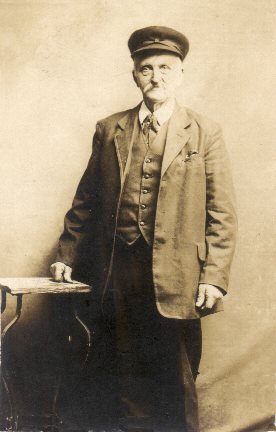
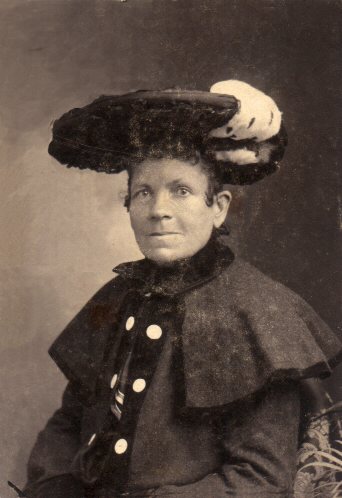
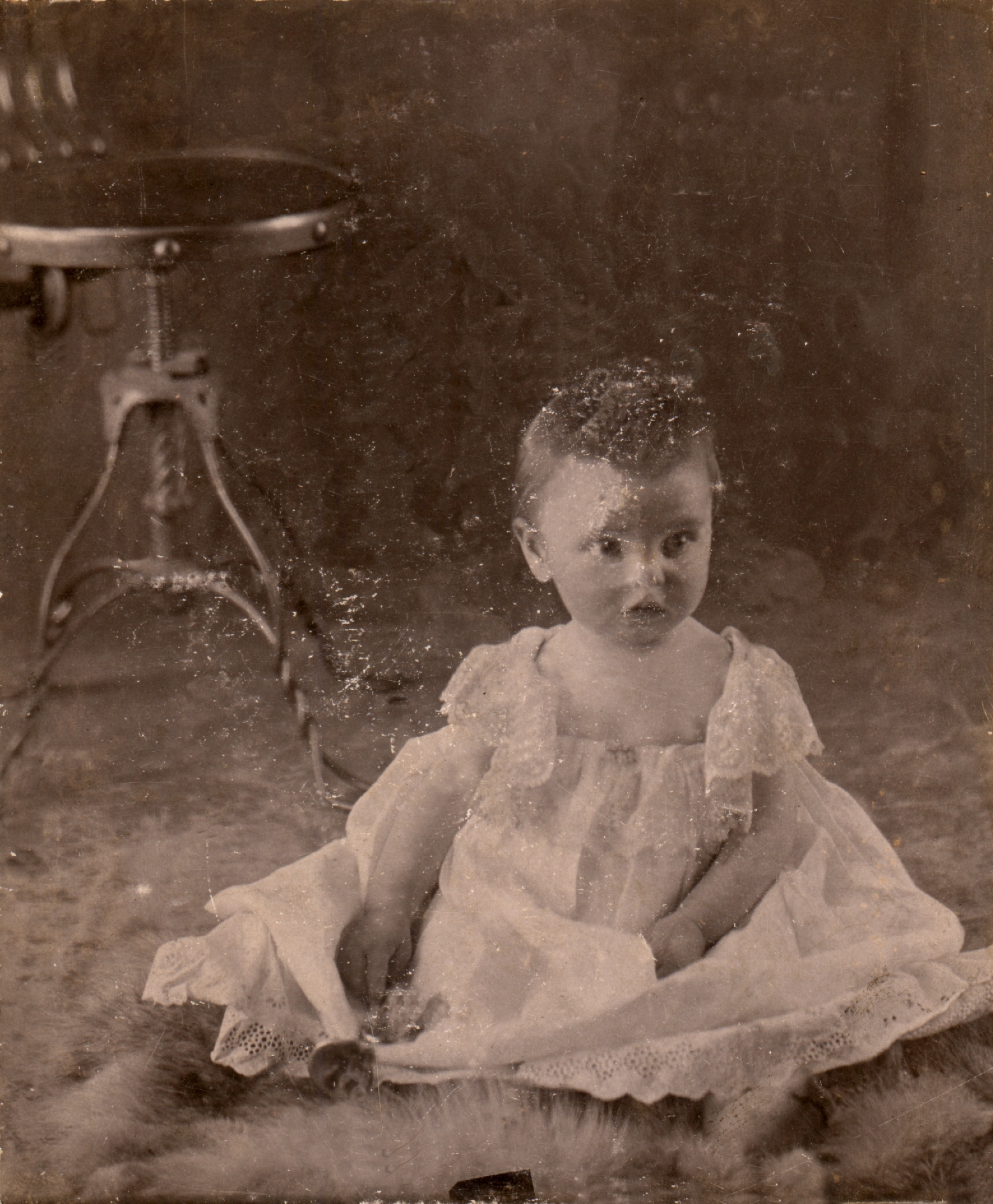

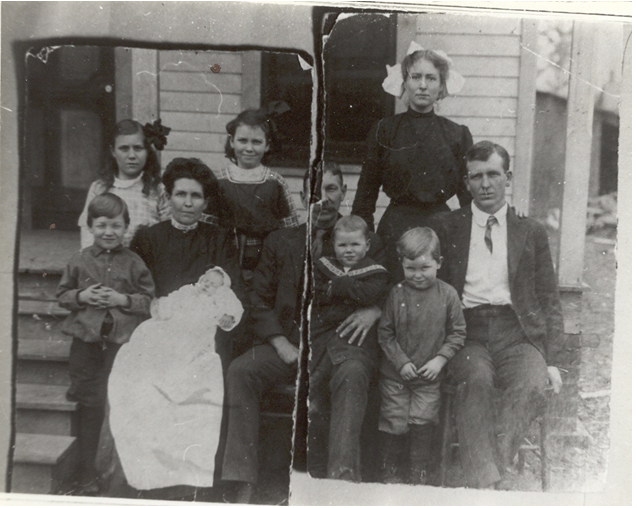
William Henry Boyd
family with Beecher
and Hattie Brown
Back row:
Bertha's daughters
Ellen and Katie,
Beecher's wife Hattie,
Front row:
Bertha's son John,
Bertha (baby Julia on
lap), William Henry
(with Mary on lap),
son Jim, Beecher
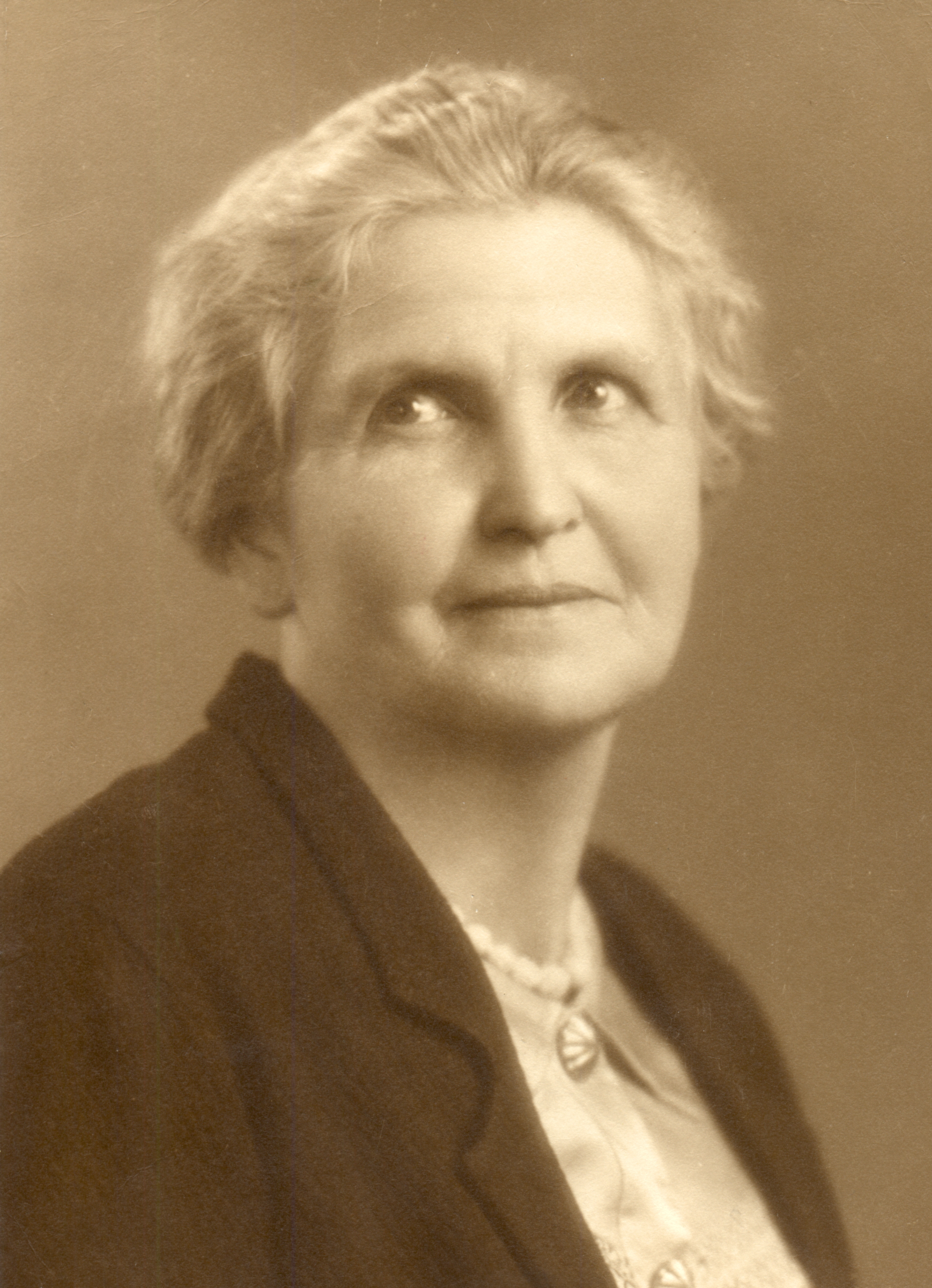
Boyd
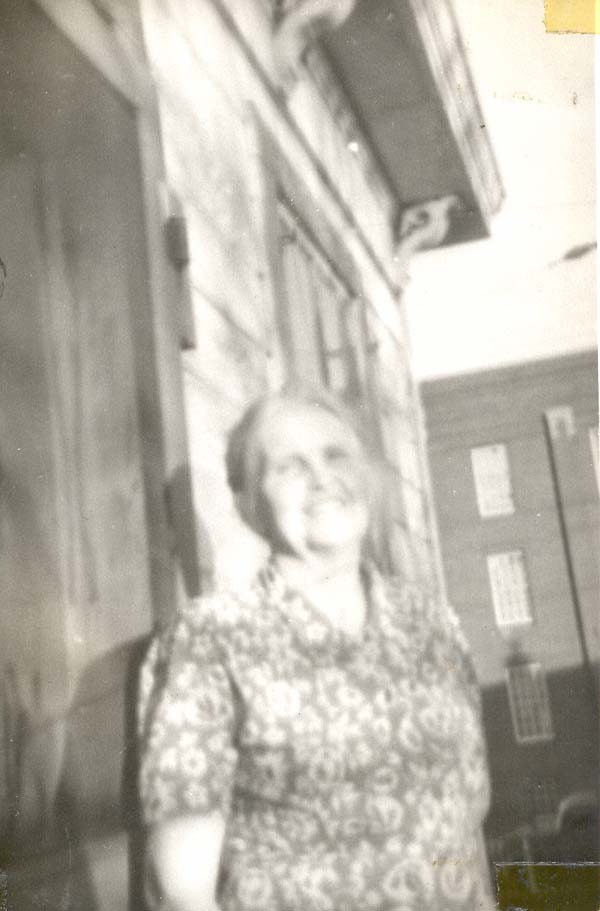
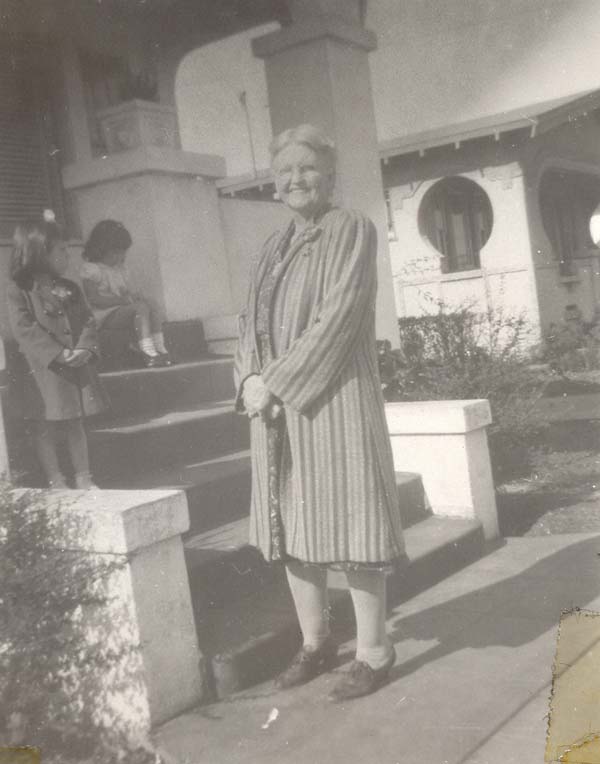
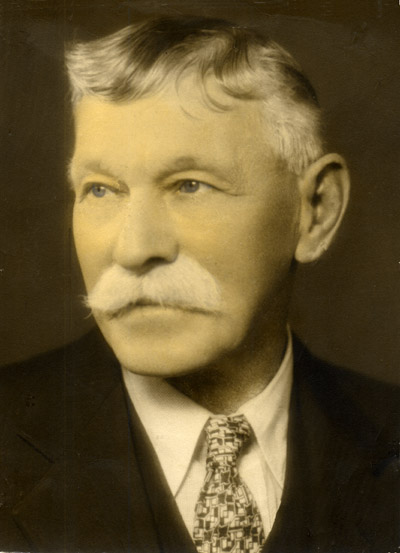
(also known as
William Henry
Richardson)
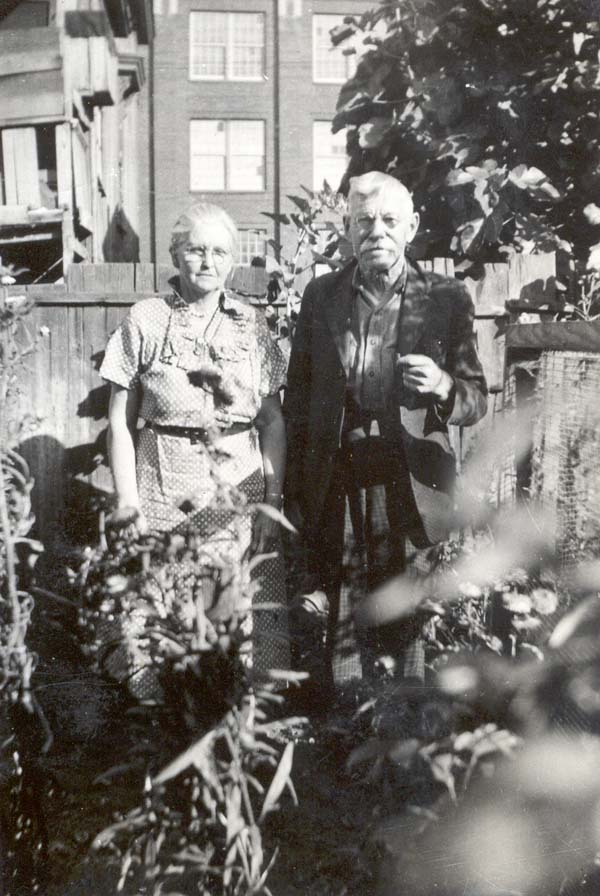
Bertha
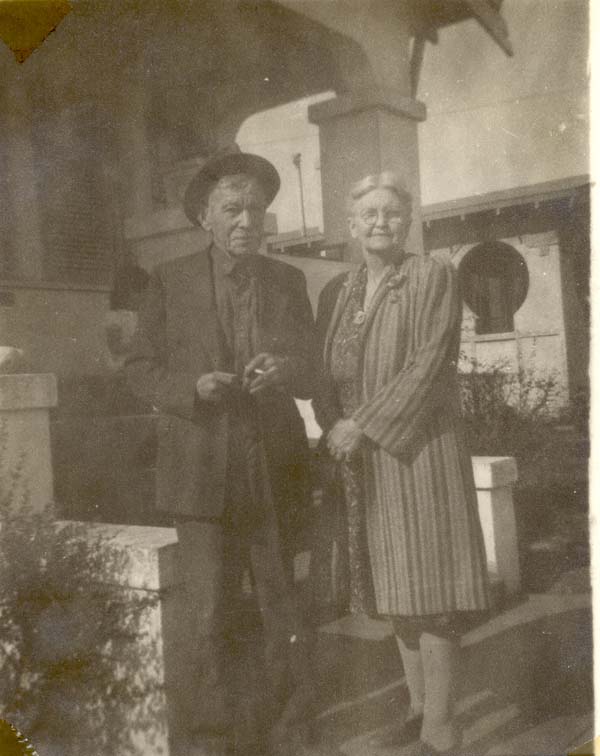
Bertha
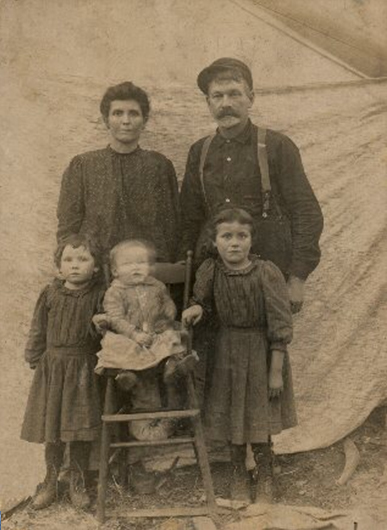
Henry Boyd with
their children
(left to right),
Katie, John, and
Ellen
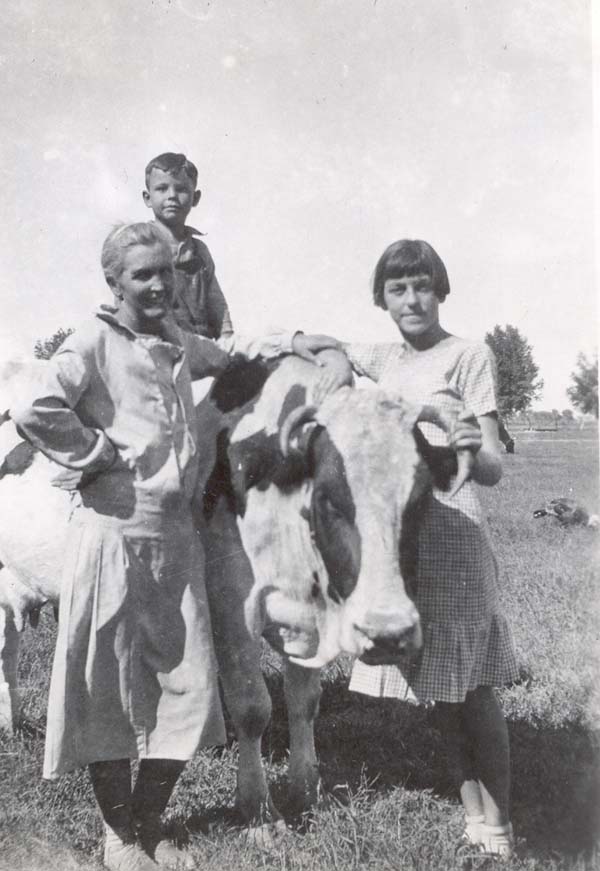
Boyd with son Frank
and daughter Julia
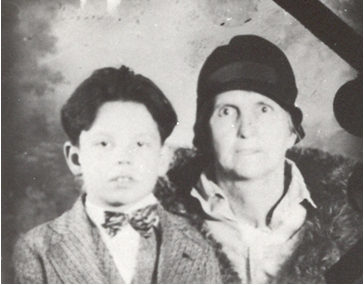
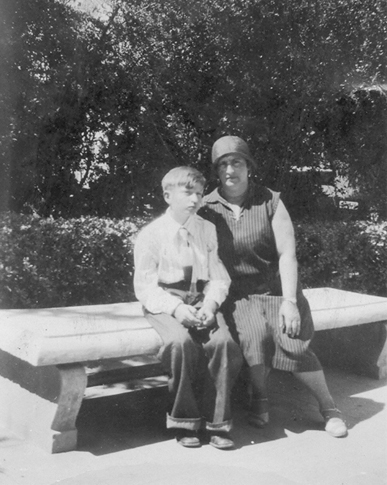
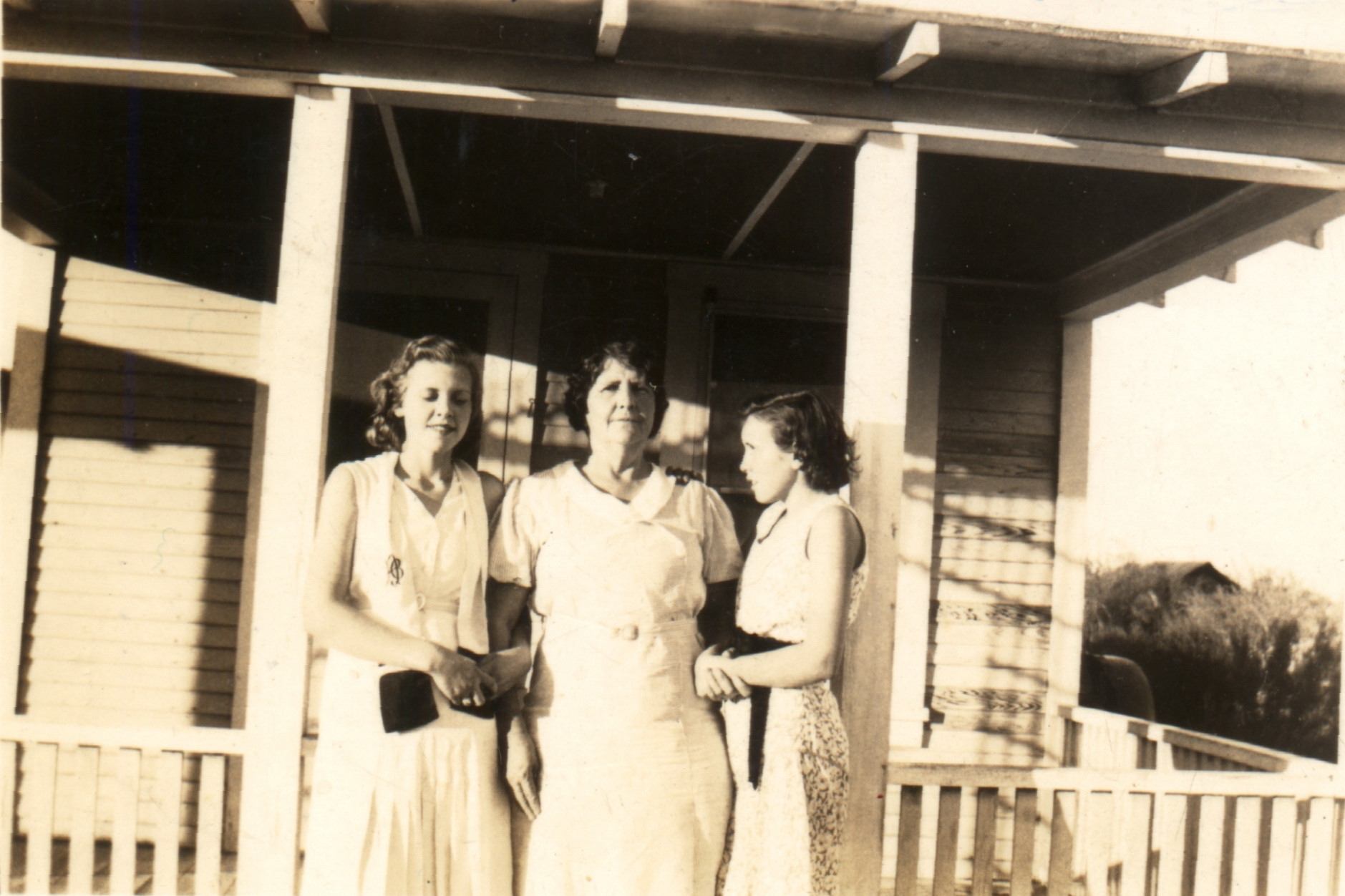
Eastwood (in center;
uncertain of the
identity of the other
two in the photo)
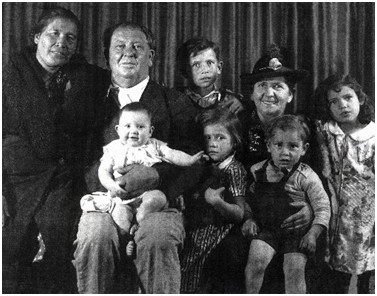
family with Ardella
(Brown) Eastwood
Back Row: Julia,
Homer, Homer Joe,
Ardella, Julie Ann
Front Row: baby
Jimmy, Diamond
Josephine, and Billy
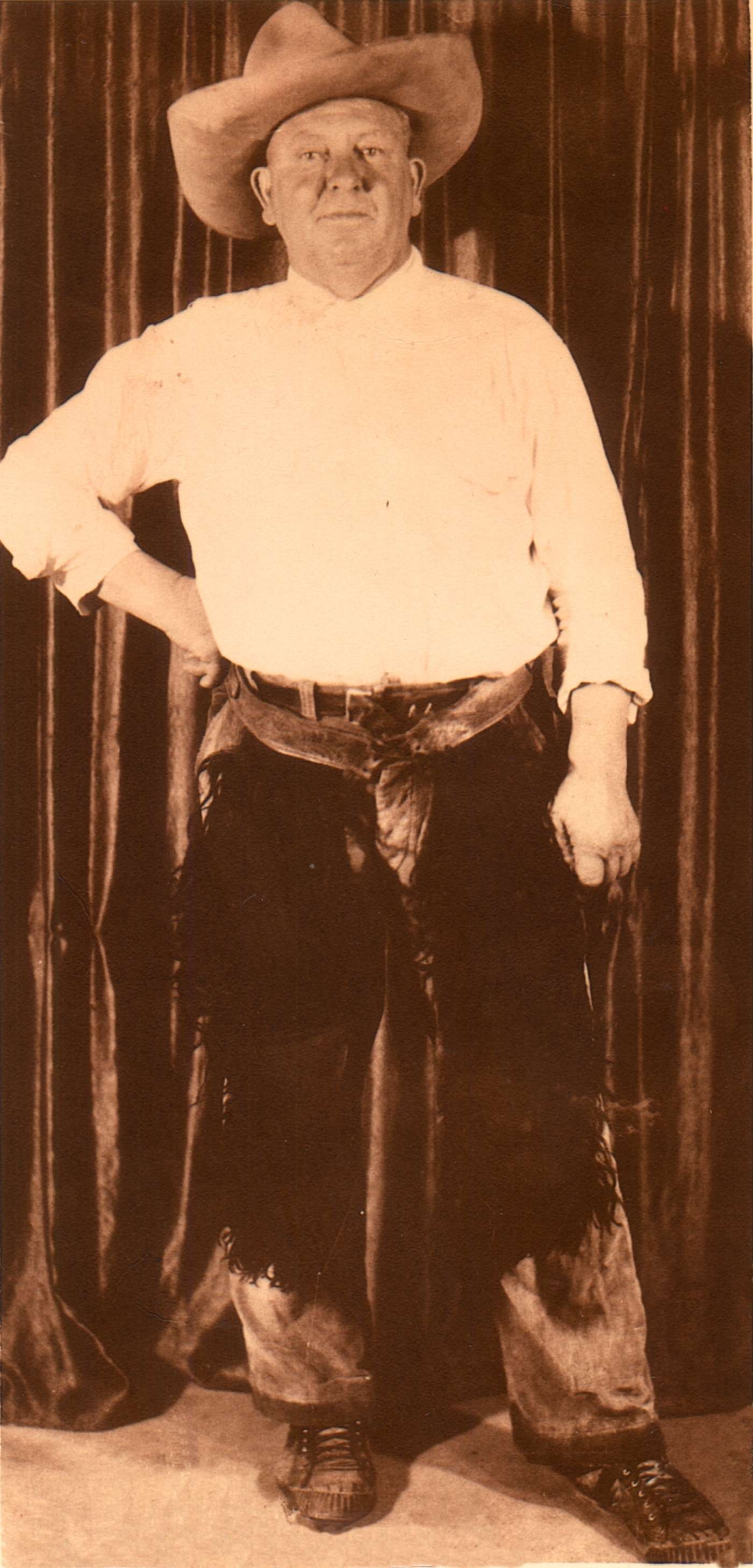
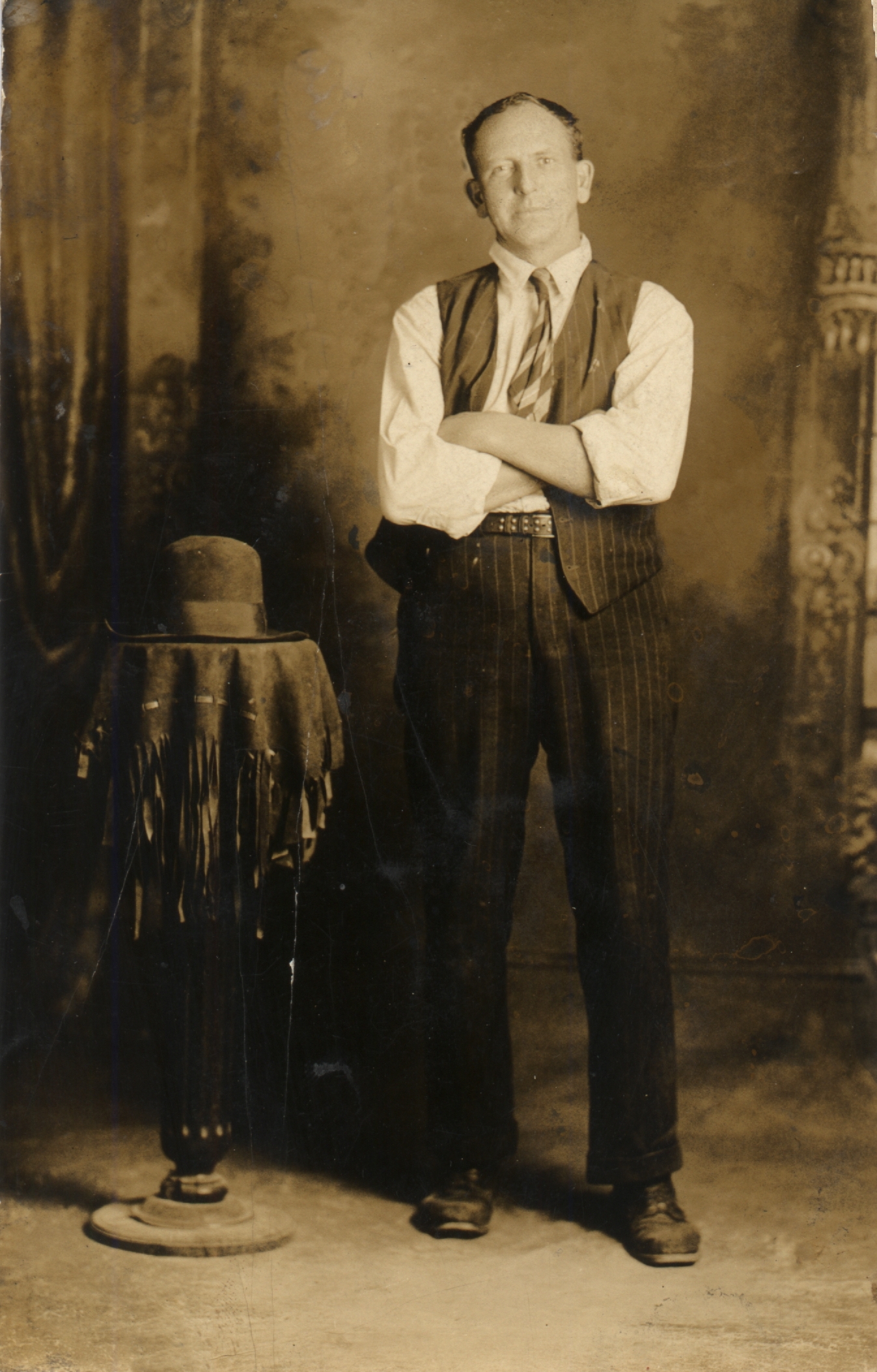
Bertha
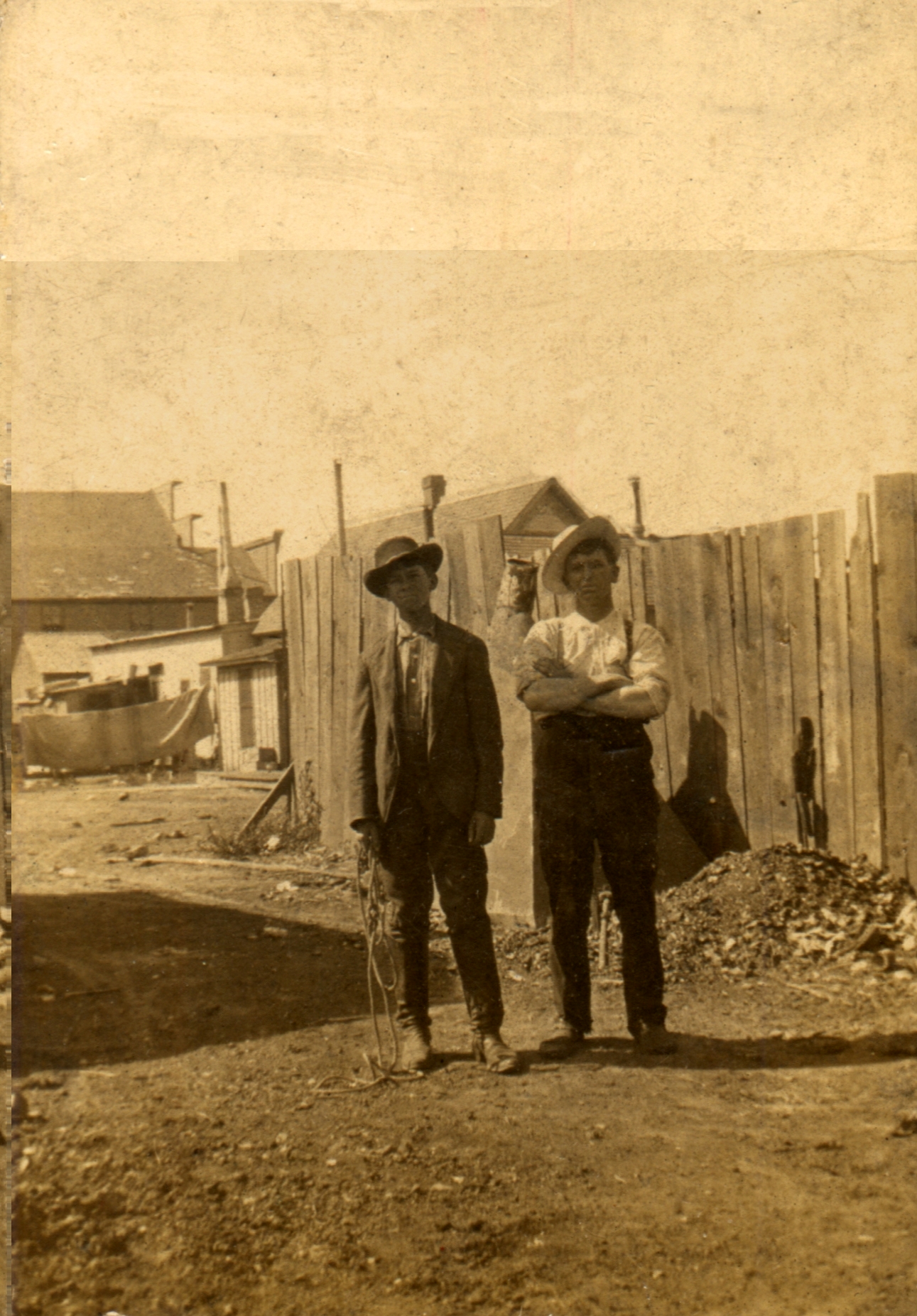
another man (not
sure which is
Homer)

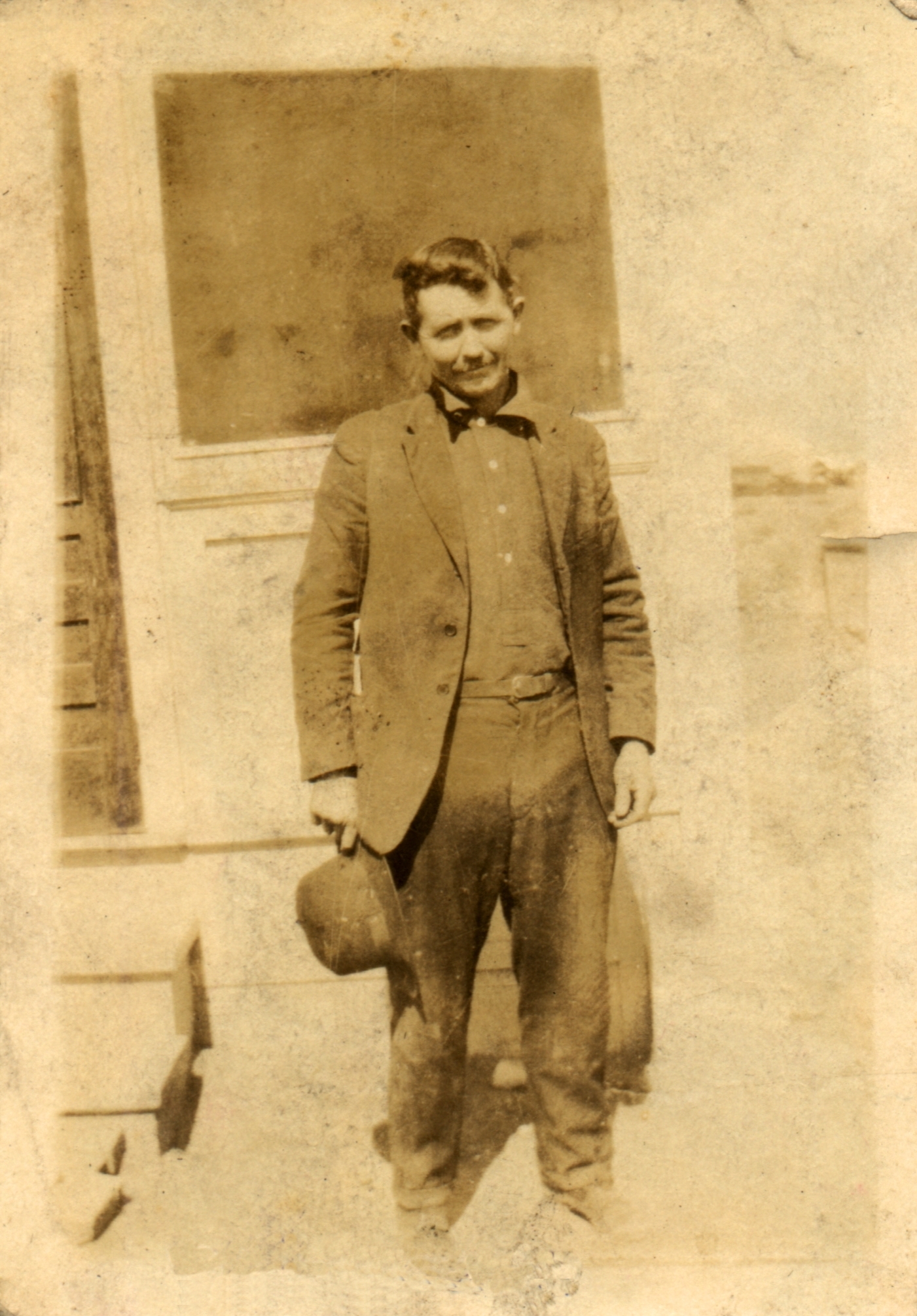
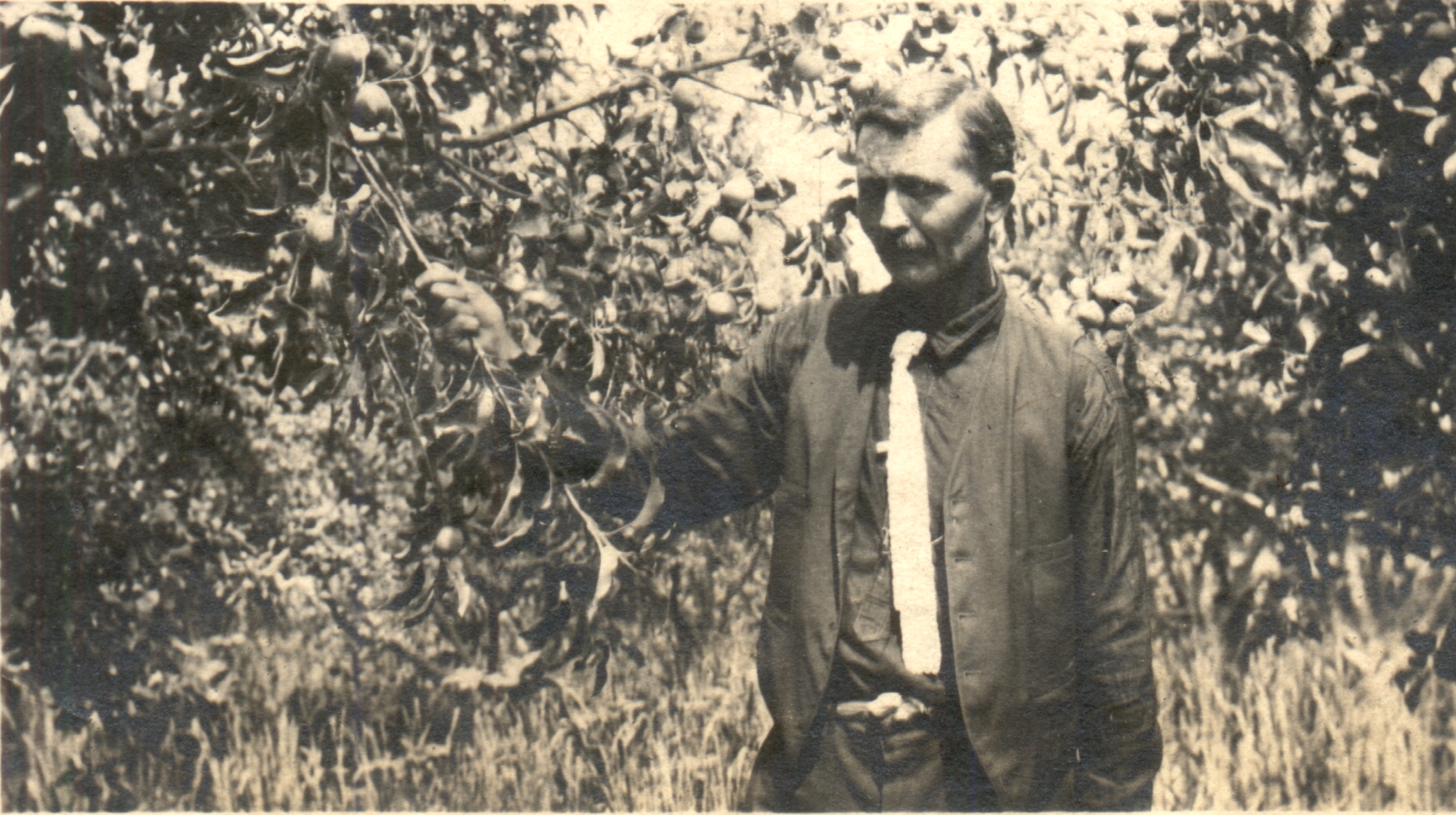
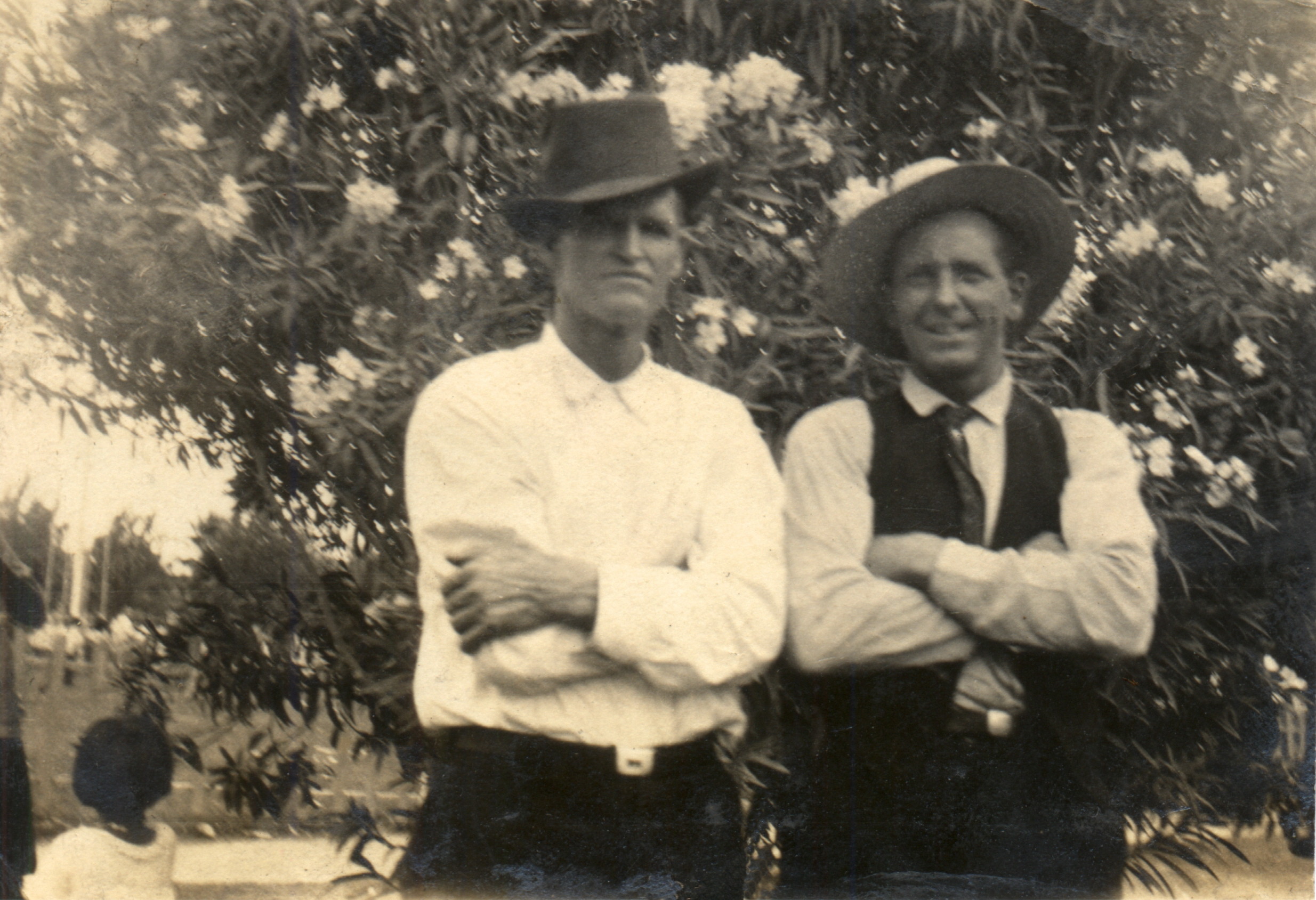
(probably on right)
and unidentified
man
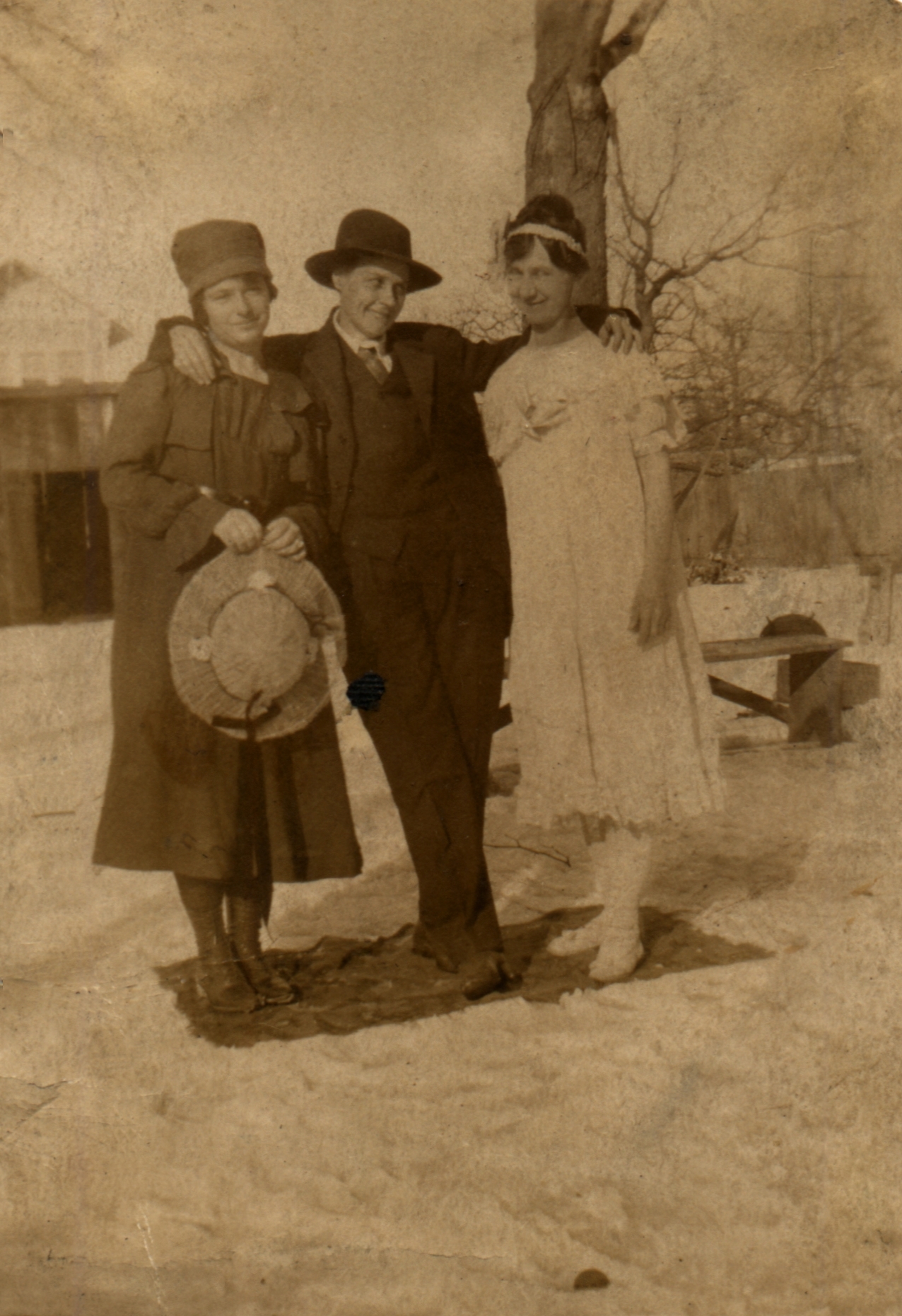
two unidentified
women
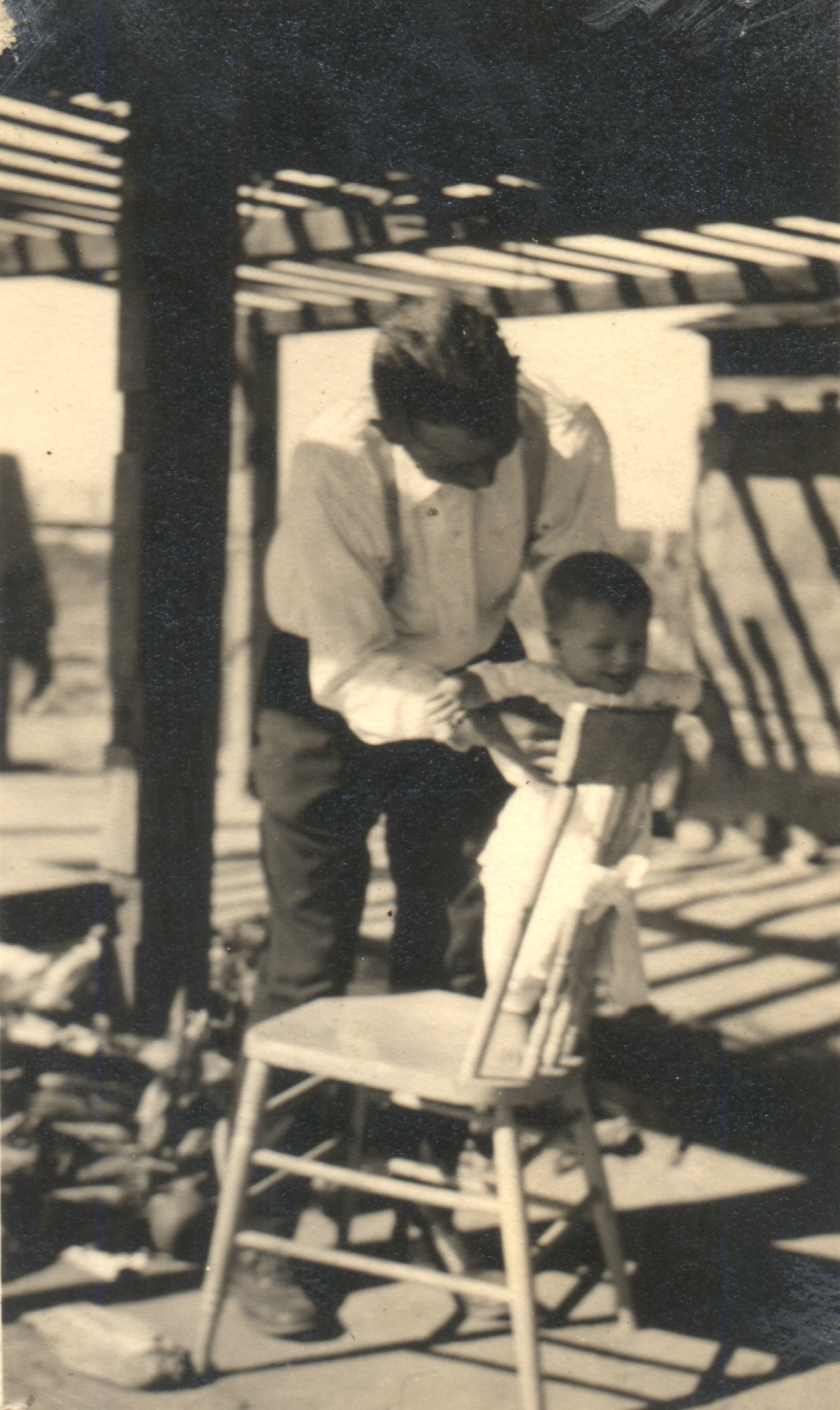
unidentified child
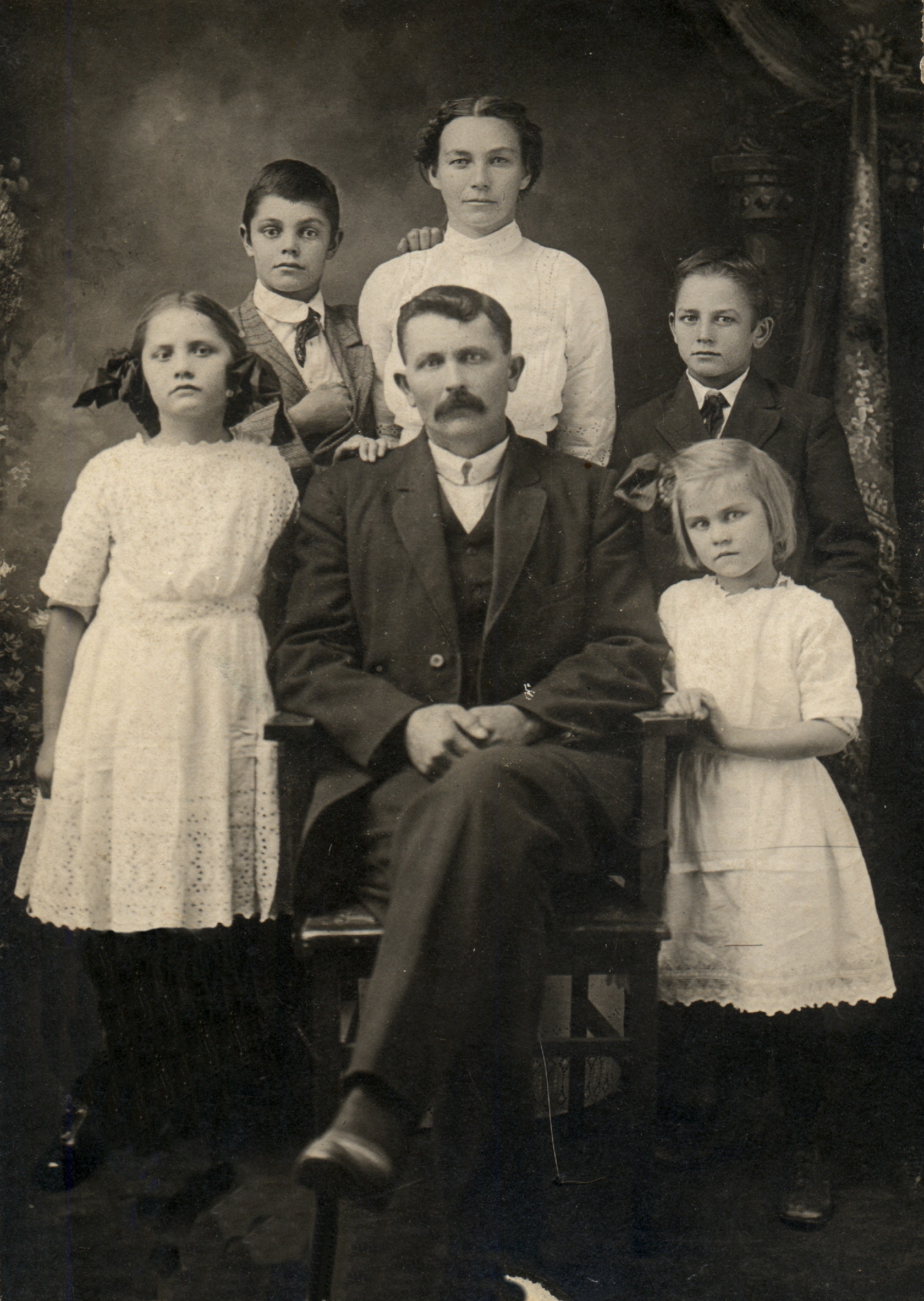
"James Brown"
The people in this
photo have been
identified as likely
(left to right)
Olive L. Ennes,
Ory Lewis Ennes,
Alonzo Ennes (also
known as James
Brown), Ada Jane
(Arnold) Ennes,
Fredrick Leon
Ennes, and Irene
Lovena Ennes
(For more
information about
this photo and
the Leon and Ory
photo, click here
for a PDF.)
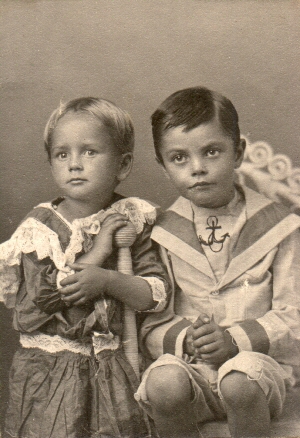
"Leon & Ory Brown"
These two boys
were probably Ory
Lewis Ennes and
Fredrick Leon Ennes
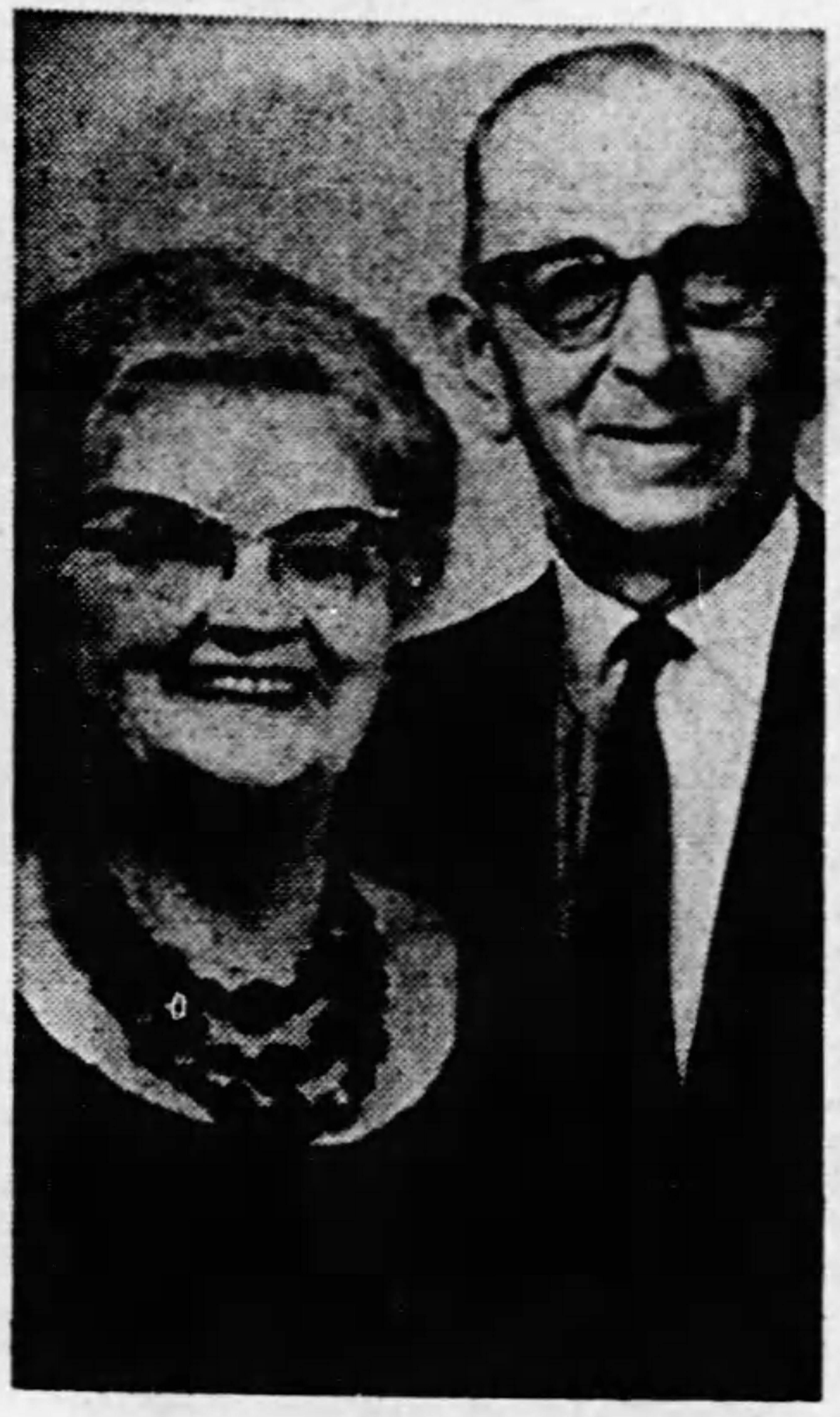
Chauncey Tungate
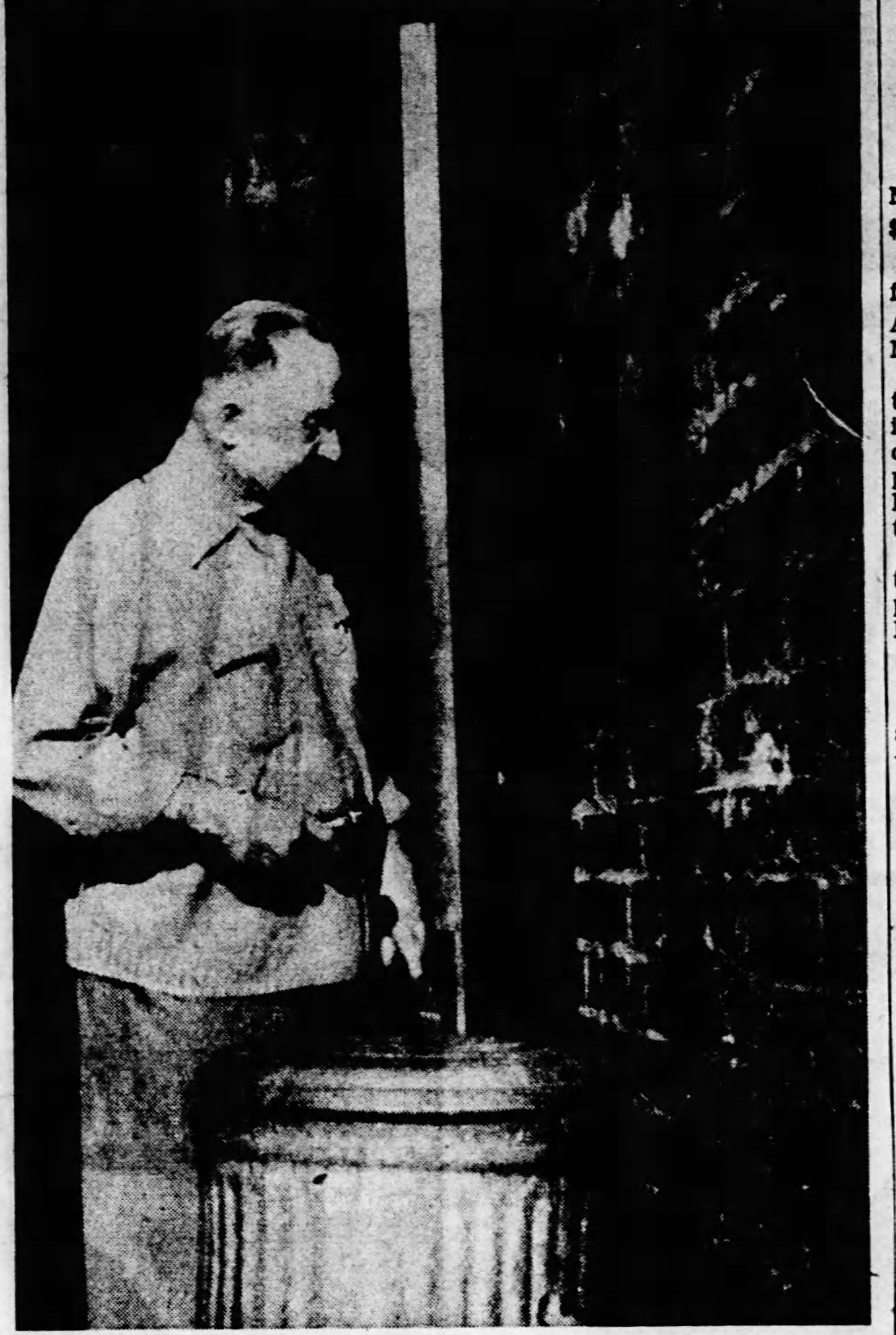
checking business
doors as a
merchant
policeman
Source Materials
Click on each category below to expand and see the copies of sources used to create the biography above (copyrighted and other restricted items are listed in the summary of sources above but not included below). Click again to close.
Images of pages from a letter are shown below as a thumbnail. Click on the thumbnail to view a larger version of the page in another tab.
Letter written by Alva Parks Brown:
Source: Letter from Alva P. Brown, undated (probably about 1917-8), presumably to one or more of the children of his first marriage, scanned from a photocopy in the possession of Darryl W. Boyd (grandson of Bertha Amanda Brown).
Note: The scanned photocopy above may or may not be the complete letter but I was only able to find the two photocopied pages shown above. The date is estimated from a statement in the letter that Alva's son Charley A. Brown has enlisted in the army and will be going to France. The application for a military headstone for Charles Alva Brown states that he enlisted 12 Dec 1917, thus the letter was likely written shortly after that date. As for the recipient(s) of the letter, Alva would not have been writing Martha as information from daughter Bertha's son indicates that she died in 1910. He also states, "what has become of Birtha she uste to rite to me [----] sometimes," so the recipient would not be Bertha but someone who might know of her whereabouts. He also mentions his wife (Louisa), son Charley, "the girls" (most certainly Goldie and Leona), and sister Emma Boyd. Most likely he sent this letter to one or more of his children by Martha. MB
Interview of Frank Richard Boyd, November 1988
Darryl “Bill” Boyd: Interview with Frank R. Boyd, Thanksgiving
Day 1988.
Alice Boyd: All right, when were you born?
Frank R. Boyd: (Laughs.) It says on my birth certificate.
AB: (Laughs.) Where you born?
FRB: Oh, in Phoenix.
AB: What was your family doing in Phoenix?
FRB: I’ll tell ya, my mom had, they thought she had
tuberculosis. She was sick and they told her to go to a warm climate
but that was up in Arkansas and from Arkansas, Mom and Dad, they went
down to Texas. And they lived in El Paso, Texas for a while. Mom had a
bakeshop there, a laundry or a bakeshop, I know, one of the two. And
my dad and my mom worked together. And when my dad got his fingers cut
off is down in there too somewhere but I’m thinking, you know…
DB: What was he doing when he got his fingers cut off?
FRB: He was in railroad. He was in railroad. That’s what they always
did. Well, then they went down there and then they went from there,
they come to live in Arizona and come to Prescott, yeah, they come to
Prescott. And there’s another town right now, I seen it on television,
it’s pretty big now, but at that time, it was just a little ol’ town
---. ‘Cause, I know ‘cause, when there in the war, I seen it. But that
was before I was born and I was born on East Van Buren Street. You
know, that’s the main drag of Phoenix, on East Van Buren, at that
time, it was a, I seen the house because Mom and Dad bought a, when
they sold their, after they sold their dairy, Mom and Dad bought a
smoke shop or, well, I can’t hardly explain what it was, but I know
they sold candy there. And it was made out of, uh…
DB: Some type of store or something?
FRB: It was a store but it was made out of old signboards. The
house, and we lived in the back of it and in the front, they, it was
next door to the house where I was born. And the house that I was born
was right next-door and I can remember it yet. They had stairs up to
the second floor and it had a big old palm tree in the front yard, I
can remember that.
AB: So that’s what they were doing when you were born? They had
a store?
FRB: No, no, that’s after. That’s just before we come to
California.
DB: Back up now, where did they get the dairy and where was that
at?
FRB: That was in Laveen, Arizona.
DB: That was after Texas.
FRB: Yeah, after I was born.
DB: OK.
FRB: And that’s that one where they had a house and I remember
the insides wasn’t finished yet, didn’t have no sheetrock. Their house
was brand new and we lived in it and we had a dairy, too, the dairy
there and they had bottling machine where they used to bottle all the
milk and we had a dairy truck that’d go deliver. They had a, it was a
little, small, regular dairy going. Not just a kind of little farm or
anything.
DB: They delivered this stuff, too, then?
FRB: They delivered, John delivered it. John went off and spent
all the money on girls and stuff and then took off and that’s, you
know that picture you seen on the train, where’s it’s on the track,
the railroad track? And you see that picture of him right here? That’s
where he didn’t tell nothing to Mom ‘cause all the money went and he
lost it all.
DB: Oh, yeah, yeah, yeah, yeah.
AB: And he took off with all the money, huh?
FRB: Yeah, well, he didn’t take off the money, he just
(laughing)…
AB: He just took off.
FRB: …He just took off. And then all the good-looking girls, he
let them have the milk for nothing, you know! You know, just kept
delivering milk, they didn’t pay the bills, and he never did collect
it.
DB: Oh, geez. So, what, they lost the dairy there?
FRB: Yeah, yeah, and that’s down there where I first started the
school, Levine, in Laveen, Arizona. That’s when I, Julia was going to
school, too, at the same school, my sister Julia.
DB: Yeah.
FRB: She’s ten years older than me, see. But she’s about ready
to ---.
DB: Who did all the milking the cows?
FRB: Mary and Julia. My mother and my dad and everybody.
DB: The whole family did, huh?
FRB: Yeah, yeah and I remember I’m the only one who could stay
in bed ‘til daylight come.
DB: Oh, is that right?
FRB: (Laughs.) Yeah. That’s the house my niece Ruthie was born in.
Ruthie was born there.
AB: How long’d you live there?
FRB: Oh, not long.
AB: Not long. Where’d you go after that?
FRB: No, no, we didn’t live there too long.
AB: Where’d you go?
FRB: Go back to Phoenix. And I remember one time we went to down
to, well, I remember when my sister was killed in Ajo, Arizona, when
she was killed.
AB: How was she killed?
FRB: With the dynamite.
AB: Oh.
FRB: Somebody put dynamite under her house and Mary, at that
time, was down with, living with her, was down there in Ajo, staying
with her. And Mary just happened not to go home that night, went over
to my aunt and uncle’s house, my aunt and uncle, see, both of my
uncles was down there homesteading most all the whole town of Ajo. And
that Kenicott mines or something come in and they started mining it
and my uncle had the only well in the whole town. And they was
trucking water in, they sell two of them for a barrel of water. That
was a lot of money at that time.
AB: Good deal.
FRB: And my uncle was the butcher in the town.
DB: And who was this now?
FRB: Uncle Homer.
DB: Homer.
FRB: Yeah, he was the butcher and he was married to an Indian,
named her Julia, the Indian.
DB: OK.
FRB: And they had a vegetable wagon and he took all the --- in
the ---, sold all the entrails and stuff after he killed a cow, go
down to Indian town, Indian reservation, and he’d sell them like
crazy. Had a great big wagon, like a trailer that he pulled behind
there. And it was like a vegetable wagon. And he even made homemade
ice cream and he had ice cream for the kids, he’d give the kids ice
cream, he’d give most everything away. He’d just, you know. But he did
slaughter cows and sell the meat up there.
DB: And you guys were living at, at where at, at that time?
FRB: We were living at Phoenix.
DB: At Phoenix at that time.
FRB: Yeah, and at that time, in Phoenix now, this was when I was
little and this is, we lived right, uh, in that, I got a picture of
the house where my mom and dad is setting on the lawn in front of this
white house.
DB: Uh-huh.
FRB: That’s where we was living at that time and that’s when I
got run over by a car, at the same time. My dad wasn’t at home. He
couldn’t get a job. He was pretty old. Dad was close to sixty and then
he had his right hand all crippled up. You know, he had only one
finger on it. And they got him a job as a watchman at the onyx mine.
Now, how far out of town of Phoenix, I don’t know but I know it was
quite a ways and he would come back about every two weeks and he’d
come back every two weeks in a Model T Ford truck, you know, with the
hard rubber tires on it.
DB: Yeah.
FRB: You know, and one time we went out to see him while he was
working there, you know. He come back and while he was gone, I was hit
by a car, and, uh…
DB: How’d you get hit by a car?
FRB: Oh, I’ll tell you, Mom pulled up and she says we’re gonna
go to town and I had a friend across the street, name was Genie, I
called him Genie Boy. And I asked Mom, I don’t want to go, I don’t
want to go. She says, Okay, she says. I want go back and play with
Genie Boy. We was playing on his swing in the backyard. And she says,
Okay, she says, Now, wait ‘til I go, now wait. I says, I’m going back.
And she says, OK, you go back and play. She says, Now wait here ‘til I
see it’s all clear, okay, it’s all clear. I started out and a guy in a
Model T Ford car hit me in the back and drug me, oh, to the corner of,
I don’t really know, but I know it’s about a half a block. And I wore
those short pants at that time and the buttons hung on the bumper. And
that’s the only thing that kept me alive. The car would’ve run over
me. And it drug my face all off in the front, you know. And I remember
because I couldn’t walk for a month. They took me to the hospital and
---. And I remember Dad come to see me and I could hardly walk to him.
---
AB: How old were you?
FRB: About five, five, six years old, maybe six. That was about
right after that picture was taken, you know that I showed you with
the short pants.
AB: Mm-hmm.
FRB: Yeah, I can remember going there and playing. And we used
to get on the swing and wind up, used to get so sick. (Laughs.) Wind
up there. Couldn’t walk. That is the same, that was the time that, you
know, kids’re always interested in stuff. Like my Dad used to smoke
and he had Bull Durham, you know Bull Durham. And they had Bull Durham
sacks and I know, Mom said, oh, he give me one and then they says I
always wanted the Bull Durham sack to play with, you know, ‘cause we
didn’t have as much toys. And Mom says, yeah, we used to send those,
we used to save those for your grandpa, Dad’s father, and he’d send
them to Dad, he says, he used to think he was saving gold in them.
DB: (Laughs.) Little sacks of gold, huh?
FRB: Little sacks of gold.
AB: Did you ever meet your grandpa?
FRB: No, no, I never did.
DB: What do you know about him?
FRB: Nothing.
DB: Nothing, huh?
FRB: Just what I just told you.
DB: When did he die? Do you know?
FRB: Nope. I don’t know.
DB: You weren’t around.
FRB: I don’t know. I have no idea.
DB: No idea, huh?
FRB: No. That’d be Squire.
DB: Squire.
FRB: While we were there, while we were there, my aunt Julia
came to see us. You know, that was when that picture was taken. You
know, I just --- how old I was because I was in that little old coat,
looked like about three, four years old, I don’t know. But that’s when
she come and I can remember her, ‘cause my sisters always talked about
her. Oh, she said she had rabbits, jackrabbits; they kicked the side
out of a barn. And I can imagine a rabbit big as a horse! (Laughs.) At
that time, see, she lived in El Paso and not very far from El Paso,
just over the border, was her ranch, is where they first started in
New Mexico and that’s the Pecos. You’ve heard of the Pecos. That’s
where Billy the Kid and all that rough stuff all gone on down in
there. And my aunt, too. But everybody, if you read the book at that
time, read all the history books, everybody, what they do, go out and
brand cows that didn’t have no brands. And that wasn’t really stealing
cows but that’s the way they did things. And they just go out. You
want something? You want some money? You go out in the desert and
round you up some calves and cows and brand them and sell them. And,
you know, that’s what they used to kid about my aunt, rustling cows
all the time. And, by the way, my sister Katie told us, now this is
Katie’s word, and my mother never did say a whole lot, never did want
to tell me anything about my aunt. But Katie says that that ---, that
Senator, that Senator, uh, what’s his name? The Teastone…
DB: Teapot…
AB: Oh, Teapot Dome Scandal?
FRB: Yeah, scandal, lived right next door, his ranch was next
door and they were good friends. And he was a real good friend of the
senator. And my Dad was down there at one time. Now, this is Katie’s
story, that when Dad was down there, they start, I do know that they
had problems about rustling and one thing or another and my uncle was
in problems and my dad run away. And Katie said that’s why he changed
his name to Boyd because there were problems down there. But my uncle
cleared it up and they turned around and sued the government and won
the case against the government for, oh, thousands of dollars. Of
course, thousands of dollar at that time was kind of like a fortune,
you know. And that was the little bit that I heard about it.
DB: You had fever down there, too, or something. Scarlet fever
or diphtheria?
FRB: Diphtheria in Ajo.
DB: In Ajo, huh?
FRB: Yeah, this was before my sister was killed.
DB: This is before, huh?
FRB: Yeah, it was ten…
DB: What were you doing in Ajo then? Is this after Phoenix?
FRB: We were visiting.
DB: Oh, you were living in Phoenix?
FRB: Yeah, and my mother was visiting, we just visiting down
there to my uncle. Uncle Homer lived there and Jim, Uncle Jim lived
there for a while ‘til he got where he thought they were catching up
with him. He was always feeling like he was chased by the law.
DB: Well, why, why is that?
FRB: Because he went and killed that guy when he was sixteen
years old. See, what happened was my grandmother in Ohio, she had the
money, she sold property there in Ohio, she got mad at her husband and
everybody looked down on a divorced woman. She was pregnant at this
time, she had a whole bunch of kids, and all by herself, she took off
with a wagon, with the kids, and my mother was probably one of the
oldest ones ‘cause she told about it all the time. And they left Ohio
and went to Arkansas. Well, in Ohio, this guy sold her the land, sold
my grandmother the land, or somehow got her money for it. Then she
thought she was buying the land out right. It was hers ‘cause the down
payment, she gave the guy the money that she had. And then she went
down there and found out that after she’d paid the balance off, they
worked and cleared it, my mother cleared it with the kids and the
orphans and all that. And after they cleared it, he says no. My
grandma was gonna sell it and get another place and just rent it out.
But he says, Nope, you can’t rent it because, in the contract, it was
a lifelong lease.
AB: Oh.
FRB: And he says, You can’t move off and you have to stay there.
If you let anybody else move on, you lose the property. Well, this
irritated my uncle and he went there, and he went up there and the guy
was in this little house and my uncle was sixteen. He had a .22 rifle
and he says, and he told the guy, What’re you doing cheating widow
women and orphans? You know, and the guy started to reach in his
pocket for a derringer. And my uncle let him have it. And he took off
and they had, what my mother said they had whitecaps. It’s like
vigilantes. And he was scared to get caught, so he took off on the
run, he went to Kansas. And that’s when my uncle said he seen the
Dalton boys. He thinks they were Dalton boys ‘cause he was working in
the field for somebody in Kansas and these four guys come up and asked
him where Coffeeville was, at least, you know, that’s the story, you
know. It could have been, could not have been.
AB: Maybe.
FRB: But my uncle Jim, from that day on, he always carried a gun,
always, ---. And he homesteaded that place down here, on the border of
California, he’d swear up and down that they used to smuggle dope
across there. And he said they’d like to get him out of the road. He
says he sleeps with his gun. One time, he bought him a Model T Ford,
drove a Model T Ford ---, and he had a 12-gauge shotgun by him all the
time, it fell over and put great big holes in the back of the car and
the back of the car looked really funny! We went there when I showed
you that 1937, 1938, that one where I, the picture, you know, that one
of me, this one.
AB: Uh-huh.
FRB: This one here.
AB: Yeah.
FRB: That was on that trip we all took. My mother, myself and
Katie and Wally went on that trip. And the reason we had the money to
go on that trip, Frank got his World War I pension. They give pension
--- at that time. And Katie bought a ’36, a 19-, uh, a Chevrolet at
about one years old at that time, and she had that car at one year
old, so we went on a trip and we went down to Mexico, we went to Ajo,
and then we went to the beaches and all that kind of stuff.
AB: All right.
FRB: So that’s what happened then.
AB: Okay, what about your dad? What do you remember most about
your dad? What was he like?
FRB: Eh, I don’t know. Remember now, he, I’ll say one thing for
him, I never had a beating from him. Never ever, ever, ever, ever beat
me. Never hit me ever. But he’s beat all my other brothers and
sisters. They told me that I was lucky because he mellowed out. He got
old and mellowed out! ‘Cause they said he used to take a big stick or
strap, a razor strap and used to strap the h— out of them, that’s what
my brothers and sisters said! I don’t know. ‘Cause you know, kids
imagine that kind of stuff.
AB: Yeah.
FRB: And Mom told me that her mama picked him for her. She says,
My mama was sweet on him. And she said my grandma was kind of sweet on
him and she picked him, thought he was real, I guess, my dad, when he
come to town, courting girls and stuff, he dressed up pretty good. And
I suppose he had a pretty, he had a job with the railroad, he had some
money and bought himself a, you know, and then too, he had an
education, he was eighth grade. That’s equivalent of a couple of years
of college now. In the eighth grade, at that time. And all his folks
were all educated. Him too. And Squire, you know. I don’t know, he
never did tell me too much about his own folks. Just Aunt Julia is all
we know of anything at all.
AB: He never talked much about his parents.
FRB: No, no. Just he used tell me about apples and having, down
in the basement, having apples, always had their apples down there and
they had apples they could see through, you know. Yeah, like glass.
AB: Yeah?
FRB: Then, he said in Wisconsin, they had all kinds of apples
---, that’s what he said.
DB: He’s the one that seen Edison?
FRB: Yeah.
DB: Thomas Edison?
FRB: That was when he was nineteen years old. Yeah, he told me
he went there to Niagara Falls and seen Edison’s, when Edison put the
light on display, the electric lights on display. Him and his mama. I
just think it was about the time that that picture was taken, I just
think. If you could check when Edison put the lights on display, you
could more or less tell. I think that was taken, like I told you, I
estimate that was taken in 1882, see, because he’s nineteen and he was
born in ’64. Oh, he told, he told you too, course you were too little
at the time.
DB: Oh, I never knew him really.
FRB: Huh?
DB: I never really knew him.
FRB: No.
DB: Now he used to fish too. Where?
FRB: Oh, in Lake Erie? Yeah, he told me about fishing off the
Lake Erie. He fished Lake Erie and catch eels off the bridge. He never
used no hooks. No, he said that they would swallow the hook and he’d
just pull them up and could get the whole d— eel off that way.
DB: So, somewhere in his teenage years he must have been around
Lake Erie somewhere, huh?
FRB: Yeah. Well, you know, that ain’t far from, Lake Erie, that
ain’t far from Niagara Falls.
DB: Right.
AB: That’s true.
FRB: Yeah.
AB: Now, you said he never let you win a game?
FRB: Huh?
AB: He never let you win any games.
FRB: Oh, no, no, he was a h— of a checker player. He played for
blood! When he played checkers, there was no nothing. He played for
blood. He wanted to beat anybody that come play with him. Yeah,
I used to play chess with him, too. And that, the reason why I played
chess, because I couldn’t beat him at checkers. And he never knew
chess and he went to chess and he learned to play chess. But him and
me, it was about even-even ‘cause I had learned it at school and
different places. And I could more or less hold myself at chess but
checkers I could never win. Never and cards neither. Cards, he could
whip me all the time. He knew all kinds of tricks. He could deal
himself a blackjack anytime he wanted. I guess he learned that while
he was working on the railroad, you know.
DB: So, then you lived in Phoenix, right?
FRB: Mm-hmm.
DB: When you lived in Phoenix, then where’d you go from Phoenix?
FRB: Well, from Phoenix, that’s when we left there when I was
seven and me and Mama, Mama drove, we had a touring car, a Dodge
touring car, maybe a 1924, ’26 touring car Dodge and, you know soft
top. And Mom drove. Mom, Julia, and myself. We left there, that little
store I was telling you about in Phoenix, that little store where they
sold candy bars. That’s near that other house because Ruth Myers lived
around the corner and then that house, the one of Mom and Dad setting
on the lawn is right across the street, or a block away. Actually, you
walk to an empty block to get to their house, then you come over here
and then down here you come and this is the Van Buren Street, East Van
Buren. And this is where the little store was. Now, that’s all
business, you got big old skyscrapers here now. And then the other
thing, my folks owned, when they come here to California, they bought
some land in New Mexico and they bought maybe 25 acres or something of
oil land. And it’s right in the town of, oh, right in the center town.
I’d go there now; it’s all town, if I’d owned that. It’s all went back
for back taxes, though. Dad didn’t pay no taxes on his property.
DB: You come in a Dodge touring car? Is that how you come to
California?
FRB: Yeah, yeah, and Mom drove.
DB: Sounds like the Grapes of Wrath!
FRB: Well, it kind of, it would be, you would guess it would be
like the Grapes of Wrath truck the one I could remember to, you know.
Now, you think about it, yeah.
DB: Why did they leave?
FRB: Why did we leave? Because they gonna get a job, see, in
Arizona there, that was in that little old store and we wasn’t really
making a living there. And Dad couldn’t get no work. There was no work
and he’d already thought they’d worked in the mines all out and we
lost the dairy. And Katie was out here. Mary had already come out here
to California. So, they wrote and they said that they were doing, I
don’t know, they come out here, Marysville, and Mary lived that place.
That’s taken of me; did I show you the one of me carrying Ruthie?
That’s where that was taken and we lived there for a while.
DB: So, they came to Marysville, California first?
FRB: Yeah, yeah.
DB: When was this? Do you know what year that was?
FRB: I was…
DB: How old were you?
FRB: Seven years old.
DB: You were seven?
FRB: Yeah, so, 1929, ’29, about 1929. I was seven… ’22… ’29,
1929, yeah. Just before Depression hit. And we got to Marysville and
then Katie was living in San Francisco. I’d never seen Katie before in
my life.
DB: Your own sister?
FRB: Yeah, I’d never seen her before in my life and she come to
there and I was always expecting something good because Julia had been
with her for ---. And she kind of, Julia always really thought that
she was real neat and all that. So I was expecting the Queen to come
out. I was disappointed! (Laughs.) You know how kids are! Well,
anyway, I come back with her to Frisco and she had a place for her and
Frank and had that Peggy living with them. That was over there in ---.
I didn’t like Katie much at all. No, I stayed a couple of days in
Frisco and I was sure glad when my mama come. And we moved down here,
boy, on 80 Street. That was the first house they had, down on 80
Street and then, we moved from 80 Street and let me think now, we
moved from 80 Street, we moved up to 28, where whatchanoodle had the
house, he had the shootout, what’s his…
DB: Cleaver.
FRB: Cleaver. Edward Cleaver. We lived in that house.
DB: How long where you at the one at 80 Street? Do you remember?
FRB: Oh, not long, Bill. I don’t think we was there much over
two, three months.
DB: Oh, is that right?
FRB: To get established is all, when we first come to
California. And then we was in Marysville, Mom worked in Gridley in
the cannery, went to work in the cannery at Gridley and she put me,
Dad wasn’t there, but she put me in like a daycare center. And they,
Del Monte, would have a place with toys and all that and you go stay
there all day. To me, it was like going to prison.
AB: You didn’t like that.
FRB: Oh, I didn’t like that!
AB: Where was your dad?
FRB: Well, he was in, right here in Oakland. He had the address
here and John, John come, too.
DB: Why did he leave and come out here?
FRB: Trying to get work.
DB: Trying to get a job?
FRB: Yeah, trying to get work, Bill.
AB: Now he’s the one who got in trouble for making silver coins,
right?
FRB: My dad? Yeah.
AB: Yeah, when was that?
FRB: Well, now, we lived in, I’m just going to tell you, we
lived in Oakland quite a while. And I sold newspapers with him and one
thing and another. He sold newspapers down, he had a newsstand down in
Oakland. Course he couldn’t get a job because of his hand, you know
what I mean. And then course you could see how old he was, over sixty
years old. And then Katie was in San Francisco when we got the big
---, so she wanted us to come over there to live. So we went over to
Frisco to live and this was around, I guess I was about eight or nine
years old when we went over there to live. That’s when the Depression
was really struck pretty hard at that time. And my Dad, I come home
from school from Frisco, and they had all kinds of boxes of money,
cigar boxes, you know. (Laughs.) There was fifty cents and, oh, that
really, he hid them all. Don’t let him see them going! Don’t let him
see them, don’t let him see them! I can remember that. They were
trying to hide me from seeing them, you know. And, --- finally says,
What the heck. He says ---. I seen them rolling it on the edge of a
file, you know. They’re rolling, putting the --- on it.
DB: Putting the serrated edges on the edges.
FRB: Yeah, and Dad plated them. And then I even seen them
melting, they melt, what they do is go down to the secondhand store
and at that time, you could buy silver brushes, pure silver brushes
with backings of silver, you could them buy for two bits. And they
made the money almost out of the silver. They had almost solid silver
in them!
AB: You were telling me how they made them.
FRB: Yeah, made them out of plaster of Paris. What they’d do is
take two boxes and they’d tie them up square and, oh, I’d say about
that height, and then they’d pour about that high and they pour it
with plaster of Paris. And then they’d take and shove the fifty-cent
on top down like this and on top and in the middle. And then when that
dry, they take another square that matched that other square, you know
what I’m talking about. But first, what they did was take and dig like
little funnels in the corners, the four corners.
DB: Match holes.
FRB: Match holes, see. And then they’d put this other square of
wood on top and then they would pour the plaster on top of that, see.
And then they, after it dried…
(End of Side 1)
FRB: --- up there on that end and then you’d tie it together
with rags, you see, and a little tiny dent hole and then you would
pour the, well, they had stuff cooking all the time on the stove, on a
gas stove and they’d throw pennies in it…I think it was pewter, I
don’t know what the…
DB: Alum?
FRB: Yeah, I guess there was some of that. But they threw a lot
of stuff into that pot to melt for the metal, see. And then they would
throw the silver brushes and what, then they melted and coated it with
alimony or something. My brother John told me one time and it was a
chemical process. And this, Squire taught my dad that, you know, years
ago, and Squire…
DB: It’s handed down!
AB: A family tradition!
FRB: Yeah, well, no, it was a thing that when they first come
here, a lot of people made counterfeit dimes and quarters and nickels.
They never did no --- money ---.
DB: How’d he get caught?
FRB: Well, he didn’t get caught spending it. He decided to quit,
no more. He just used, was during Depression, to get something to eat
with for the family, I’ll just tell you the truth. And he quit and he
broke up the molds already and towed them away. And he had some of the
money up into the stove and they had a wooden stove. Mom moved away,
Mom got mad. She says, I’m not gonna let Frank see that no more, and
she says, We have no business living there. She says, We’d rather
starve. So that was the --- and me and my mom come back and that’s
when she started working for Mrs. Rothenberg, you know, the Jewish
lady. And she give us a house to live in. My dad never moved in. And
then, he went from there, he went to Mary’s house. Katie had went on a
trip and he went over to Mary’s house and her husband was a king, he
was a burglar. This is during Depression and what he did was to get
her, she worked before she married him, she worked as a cook in the
big houses up in Piedmont and Berkeley at that time for rich people.
And he got her to show her how to get in those houses where she worked
and he went and he robbed them and he got caught. And my dad was doing
also a little bootlegging. What I mean is he didn’t make the whiskey,
he’d buy the five gallons of alcohol in a five gallon can, bring it
home, put it in the bath tub, and burn some sugar and some different
stuff, I seen him do that, and then give me a penny for every bottle I
could find, little whiskey bottle, and we’d pour it in and they would
go sell the whiskey to make some money to go live on. This is during
Depression. And, well anyway, my dad wasn’t doing anything. And he got
caught robbing, my brother-in-law, he got caught robbing and he told,
Well, why are you getting me for. He says, Get my father-in-law. He
says, He’s been counterfeiting, bootlegging, and everything. So, they
come up there and got my dad. But, you know, they only give him one
year. That’s all. My dad went up there and that’s when we learned. My
mama come home crying and she says, You know, your name’s not even,
well, my name’s not even Boyd, she says, My name isn’t even Boyd, she
says, But they told me down there. She says, Legally, we are Boyds.
She says, Mrs. Boyd, don’t you worry. You are Boyd and your boy’s name
is Boyd. And don’t you worry, his name is Boyd, he was born a Boyd,
it’s on his birth certificate, and legally now you are Boyds, she
says. That what the detective told my mother ‘cause that worried my
mother. That’s when they found out, but Mom should’ve known before
since she had Richardson. --- His name was Richardson, see.
DB: Where’d go to jail? What prison?
FRB: He went to…Well, you know, I wrote to them and asked what
my dad, what his father and mother’s name was. And that’s up in, oh,
Florence’ll tell you.
DB: Yeah, we have the thing. It says Squire Boyd on it.
FRB: Yeah, yeah, all right, and they says Squire Boyd, didn’t
it.
DB: No, Esquire Boyd.
FRB: Esquire Boyd and, Richardson, uh.
DB: Caroline Richardson.
FRB: Caroline Richardson. That’s right.
DB: Right, so, they didn’t even really know, I don’t think.
FRB: No, I don’t think so. That’s all they give us.
DB: But where he go to jail? Which jail did he spend a year in?
FRB: That’s what I’m telling you, right? The one we sent to for his…
DB: I know, but where is that?
AB: In California?
FRB: No, in Oregon, in the Puget Sound.
DB: Oh, in the Puget Sound? OK.
FRB: Yeah. And Dad was a gardener there.
DB: He’s was a what?
FRB: Gardener.
DB: Gardener at the…
FRB: Yeah, that’s what he did. They even didn’t lock him up.
They keep him on gardening.
DB: Oh, minimum security, then?
FRB: Yeah, it was minimum security.
DB: How old was he? He was pretty old.
FRB: Yeah, well, I guess so. Uh, hmm, let me try to think now. I
was twelve at the time, I think, and Dad was about seventy-two.
DB: Oh, geez.
AB: What was your mom like?
FRB: My mama?
AB: Yeah, sounds like a good lady.
FRB: Yeah, she tried to be. She always wanted me to go to church
and wanted me to be a preacher, wanted me to always…(Laughs.) Push me
for religion all the time. You seen that book that Mom, uh, Grandma
had there, I told you I started. You look in it. Them were given to
me. Every Sunday, I would get a card for going to Sunday School and
she had me having a scrapbook and one thing or another of the
Christian cards and all.
DB: What church did she belong to?
FRB: Well, originally she raised all my brothers and sisters as
Seventh-Day Adventists. And they all went to the Seventh-day Adventist
school, how long, some of them that’s all they ever went to, was
Seventh-day Adventist school, I don’t think…
DB: Arkansas, right?
FRB: Yeah, in Arkansas and in Texas and even in Arizona. I
remember going to Seventh-day Adventist church when I was a little
baby ‘cause they said every time that lady would sing, I would cry out
and they would have to go out. And I remember Mom would cook
everything Friday night. No cooking on Saturday at all. No nothing but
going to church. That’s all we ever went to, early church or late
church. Well, Mormons do the same thing or used to. And that was a lot
of teachings were a lot like Mormonism.
DB: You were raised Seventh-day Adventist?
FRB: Yeah, until we come to California. Now, when we come to
California, I don’t think Mom found a Seventh-day Adventist church, so
she sent me to a Baptist church and then she would send money to the
Jewish synagogues. She tithed herself, ten percent of everything she
got. If we didn’t have nothing, she sent ten percent of nothing. But
she always, always, if we got a dollar, ten cents of it went to just
some church. And they used to ask her, How come you do that. And she
says, Well, it’s God’s money. And said, Well, how do you know who to
send it to. Mom says, That’s God’s money, she’s not cheating Him out
of it, if the people that she gives it to is cheating God. She’s not
doing it. That’s the way my mother always felt.
DB: She give it to all the churches?
FRB: Any church, any church she thought was doing some good,
that was doing good for, you know, for Christianity, work.
DB: So you were raised as a Baptist?
FRB: Eh, kinda like, I went to Baptist most of the time and then
even one time, we went to Holy Roller church, you know, for a while.
DB: Pentecostal?
FRB: Yeah, Pentecostal, yeah.
AB: Did you like that?
FRB: Comme ci, comme ca. The only thing I really liked about it was
the good singing. (Laughs.) Did a lot of singing.
AB: Did she ever talk about her parents?
FRB: Oh, yeah, she talk about her mama all the time, her mama.
And that’s the one that I told you that was redheaded and that’s the
one that I told you that come from, that bragged about the blue blood
in her veins and that the one I told you that jumped the boat in
Florida. That’s my mother’s mother. And that’s one I told you had the
relations, they supposed to be some high mucky-muck in England. And
after he’d, already after he died or something, some like lawyers or
something come here from England, hunting him down. And they says,
Well, if he didn’t want no part of it, we don’t either. So they says,
Let’s deny that he would anything to do with them. So when they come
question, asking if any of their relations, if they know, they’re from
their father, I don’t know, I don’t really know what it was. This is
the story I got from my mother when I was a little boy. And she says
that they denied it and I always says, Gee whiz, they could’ve had a
castle over there, Mom, we got nothing but a d— dump around here!
(Laughs.) So used to I couldn’t see that. And couldn’t see her giving
ten percent away when meals, we didn’t where the next meal was coming
from.
DB: She didn’t like her red hair, huh? She used to comb her hair
with what, with a lead comb?
FRB: That’s the same bunch on there. And that might be some of
those pictures you got of the ladies, of them old pictures you got
there and you know those, that one you got. And that something Boyd,
her name was Boyd. It’s in the album there.
DB: Right.
FRB: That’s some of those and that’s through her, uh, that’s
that one there, Martha Ennis.
DB: Tell me the story about Homer. Tell me about Homer with the
guy that…
FRB: …he killed?
DB: Yeah, yeah, tell me about that.
FRB: He killed a guy, too.
DB: Yeah, tell me about that.
FRB: Yeah, both of my uncles did! Yeah, well, he married an
Indian, --- Luz, she’s the one that…
DB: She lives down in Southern California.
FRB: Yeah, she lives in Arizona now. This one’s on the
reservation. And she’s the one that, Junior is the one that graduated
from Brigham Young University and he’s also the one, the first Indian
they say, the first Indian, I read it in there, the first Indian to
get a federal grant for, educational grant or for something, I forgot,
but he was the first Indian. But it didn’t say that he was just half
Indian because my uncle was his father, see. So that makes him a
half-breed.
DB: That’s Homer’s son.
FRB: Yeah, that’s Homer’s son. But Homer had, I’ll tell you
what, he lost about six kids all in one day, that wagon I told he
carried vegetables on?
DB: Yeah.
FRB: That thing got a fire, gasoline, and they were all on that
wagon and burnt them kids up and what he did, he went and made a great
big room like this one, and they tried to, the town…
DB: Underground?
FRB: Yeah, he dug it and my, uh, I think John helped, no, John
helped him with his other boy, the one that died with diphtheria. He
lost a lot of kids, he did. Well, anyway, they built a whole room and
made cement walls into there and all. And he went into there and laid
all the bodies in there and then he cemented the whole room in, in
Arizona, early in the day, in Ajo, right in the town. And they were
trying to make him stop and they couldn’t stop him. The law wasn’t
strong enough there to stop him! And it’s another thing is, they come
there and they was going to make him go to the, he was the same guy
that had a kidney infection and this was before they had anesthesia.
And they held him down and jabbed a knife and drained his kidney out
the side. Well, this last one he died in the hospital. You seen that
paper said he had the strength of three or four men?
DB: Yeah.
FRB: Well, he’s the guy and he would break right out of, they’d put
him in a straightjacket, when he’d passed out, he woke up, he was in a
straightjacket, they’d take him to the hospital because he didn’t want
nothing to do with the hospital since they done that, and he’d just
straightens out and just straighten that jacket right out.
DB: Ripped the sleeves out of it?
FRB: Ripped it right out of there! Well, him and my brother Jim,
I’ll tell you something funny. Him and Jim, Jim went down there and
they’d get a few drinks in them and they go out to butcher cows. And
they’d go wrassle the d— cows!
DB: Pick them up?
FRB: Oh, yeah, they’d pick them up and then haul them up and
then cut their throats. And then my uncle would grab a cup and drink
the hot blood as it was coming out of the cow when they were
butchering them. Jim would tell you that. He had a good time with
Uncle Homer.
DB: How did he kill the guy?
FRB: Well, anyway, he married Julia, her name was Julia and he
had this place were he butchered and sold, actually where he did all
the butchering, like a store, actually. And then in the back he had a
place. I went back there and helped him freeze ice cream and one thing
and another. And one time when I come from the Army, when I was in the
Army, I stopped there for a couple of days and he had me, he said,
Here, Frank, work these out. You know, I didn’t know what they were, I
washing them all, hanging them all on the line. It was the guts. And I
said, What are you going to do with these? He says, Well, he says,
Never mind. He says, I’ll take care of them. So the next morning, I
get up in there, I smelled a tripe. This is tripe, he says. And the
next morning, he was cooking. And he says, Ready for breakfast?
Smelled a real good smell, smelled like sausage and I went in there
and it was the tripe had cut up! And it smelled real good but I
couldn’t eat nothing, I couldn’t eat nothing, nothing! But my uncle
could eat like an Indian. He didn’t think nothing of it.
DB: Now how did he kill that guy? You still haven’t told us the
story yet.
FRB: Oh, okay, now in that same house, he took, now I’ll tell
you another story about him, too. But well, anyway, the guy come
knocking at the door, the Indian from the reservation, he’d been
staying with Julia before, now Indians don’t get married, you know,
they don’t have no marriage ceremony or anything. They’re there
together for a while and they have kids. He might take off, the buck
might take off and he might come back in a week or two and he might
not never come back. That’s Indian life, you know. Navajos included.
Well, anyway, somehow my uncle had met Julia and he married her. And
he brought her to his house, they had family, and he had all those
kids. Well, anyway, before they had all the kids, he had just a
couple, this Indian come drinking and he was looking for Julia ‘cause
he had lived with her before. And he come knocking at the door. My
uncle says, Go away, go away. He says, You have no business here. He
says, She’s my wife; I’m married to her. And he tell that to a drunken
Indian, see. And so he come around. He kept circling the house and,
all of a sudden, he broke in the back door. And he come in the house
and there was a club in my uncle’s closet, right in the house. And
they was going to do is, Hey Mr., his name was Mr. Brown. Mr. Brown,
he says, you’re going to have to come down to police headquarters.
And, No, he says, I ain’t going to do that. So, they brought the court
right to my uncle’s house cause they said he was too strong, they was
afraid of him, they was afraid of him! He wouldn’t take no nothing not
from nobody. But there wasn’t anything he wouldn’t help people and
I’ll tell you, one guy, one bum come through there and he was hungry
and everything. So my uncle took him in and he give him a job, let him
make some money and all that. And one time my uncle had a cash box and
the money was gone! And so he figured this guy had all the stuff
packed. He used to sleep right in the same house with my uncle, see.
And the guy had all the stuff packed and my uncle seen it. And so he
says, I’m going to get my money back.
DB: What did he think he was going to sneak away or something?
FRB: Yeah, he was going to sneak away when everybody went to bed
that night. So my uncle didn’t say nothing to him and he figured
that’s where my money is, my uncle said, you know. So that night,
before the old guy ---, he barred all the doors, put great big bars on
all the doors and all the windows. And the guy was laying there in a
little cot there and there was a great big stove inside. My uncle
started a big fire in the stove, getting red as heck. And then he
pulled out his --- and he had a meat cleaver and a chopper and
different stuff and he sharpened the knives. And the guy was lying
there, see, wondering what the matter with my uncle, what the matter
with, you know…
DB: Yeah, what’s he doing?
FRB: …Homer, what’s the matter with Homer? Whatcha doing? He
says, Well, I got a cheat; I’m going to chop him up and burn him up in
this fire. And he kept sharpening. And the guy got to thinking about
and he got so scared, he jumped up. I’ll give you the money back! I’ll
give you the money back! And he started giving the money back. And my
uncle set him on the road and told him to never come back again. But
that guy was so scared! (Laughs.) I’ll tell you another little thing;
my uncle had a little sense of humor, though. You know, his wife, I
told you was an Indian, Julia was an Indian.
DB: Yeah.
FRB: And he says, Man, he used to say, My mama used to cook ---
than you and you’re a good cook, the fact is, what she says to cook
best was baked watermelon. She says, You’d like a baked watermelon? He
says, yeah, oh, that’s the best thing, my mother used to know how to
bake watermelon better than anybody. She went and baked him a
watermelon. And he come home, and he says he come home and he says it
dried up but he says he ate it! (Laughs.) He says, ‘cause he ate it,
he says, after he told her that and she went and did it, he went and
ate the darn big watermelon.
DB: So, when you came here to Oakland, after you stayed on what
street over there, by Romak?
FRB: 80 Street, yeah.
DB: Then you moved to where?
FRB: Well, we lived up there on 28th Street for a while, you
know and then we moved up on 26th Street, it was right across the
street. I could show you better. You remember that forging place that
was over there, near the park?
DB: Near Romak. Yeah.
FRB: Yeah, yeah, you know the park is over there, on that side?
Hmm…
DB: Near Hollis Street, anyway.
FRB: Yeah, near Hollis, up there by Peralta and one thing or another.
26, 28, 29…
DB: ---
FRB: Yeah, and then we moved from there down to Fifth Street and
from Fifth Street, that’s when I think they went to San Francisco,
just about the time Dad was over in Frisco, we moved to Frisco with
Katie. And from there we come back and everything. And they got, me
and my mom to Seventh Street, in this house where, worked for Mrs.
Rothenberg and my dad was, I don’t know, with Katie and with Mary. And
then he got caught and put in jail. And then we went and got, we moved
several places, we moved one place on 12th Street and then finally on
22nd Street, by 22nd and Filbert. And then at that house, uh, John had
already gotten married while we lived down on Seventh Street and Julia
got married down there and Jim was already married before he come
here. What happened to Jim and John when they were young, well, you
can figure they were about nineteen, about nineteen, I guess, nineteen
or twenty, they used go out there in Phoenix, this was before they
come to there, and they would hook onto the guys that would buy the
cotton and they had big wagonloads of cotton. And they’d hook on the
cotton and sneak off at night and take it to the gin the next morning
and sell it. And Jim got caught. And they put him in jail. And that’s
when we left. Jim was still in jail when we left and we come to
California. And when Jim got out of jail, he married Ruth there in
Phoenix and he come here.
DB: That’s his first wife?
FRB: Yeah, and then they come here. Well, anyway, that was down
on Fifth Street and if you look on that picture you got of us sitting
on the stairs.
DB: Yeah.
FRB: That was about that time. At the same time, my dad had a
shotgun at that time and I remember playing with Ruthie when I was
about seven years old, pulled the trigger and d— near killed her!
DB: ---
FRB: 12-gauge shotgun. Thing shot a big hole, I remember shot a
big hole in the floor. Oh gosh, it was a big old hole in the floor!
Kicked me, I pulled the trigger and they didn’t even have it, just
like this and I was about seven years old. Boom! I didn’t remember
nothing else.
DB: (Laughs.) Is that right? Did it knock you out or just kick
you back?
FRB: Kicked me back. I was aiming it at Ruthie, pointing it at
Ruthie! But it didn’t get her because it kicked away, see. Then, from
there, I moved --- the icehouse. And then my dad come back and my
brothers were working at Herrick’s Ironworks.
DB: How old were you there? When they were working at Herrick’s.
FRB: I just went into the sixth grade.
DB: You were about eleven years old then.
FRB: Yeah, I was just in the sixth grade and going into junior
high school, I just started into junior high school at Lowell Junior
High School, which was down on Market and 14th. And that was a junior
high, and they, from Lafayette and there. But the first school I went
to in California is right across the street from Romak, you know that
old school?
DB: The old school right over there on Peralta.
FRB: Yeah, I did know the name of that. But that’s the first
school, that’s where I learned to read in that school.
DB: Oh, I’ll be darned. That’s across the street from where I
work.
FRB: Yeah, that’s where I learned to read. And also that’s where
I used to help the janitor there and he used to give me brushes and
all that. I’d stay after work and work and help clean up the
blackboards and stuff, just as a volunteer, you know.
AB: Is that when you took the canoe under the bridge? I remember
you telling me a story about that.
FRB: No, this was a lot later. Now then we moved to, when we was
down by the icehouse on 22nd Street, then we moved to 16th Street
because Jim was working at Herrick’s. Herrick’s owned the house and
they rented the house to us for ten dollars a month. And we moved in
that house and Dad come back, living with us, see. Mom was on WPA at
that time, working on WPA.
DB: What was she doing?
FRB: Sewing quilts for WPA, sewing quilts. Mary was, too. And we
lived right across the street from Herrick’s and that’s where I built
the boats when I was living there. Maybe twelve or fourteen years old
and I used to go swimming every day, either down at the bay or up to
Temescal, Lake Temescal. But every day, I’d go swimming, every day on
summer, this is summertime. And I rode two kayaks down there, I
remember taking them both down there. And I’d float them around
Treasure Island and halfway to, one time, we got too close to Alcatraz
and the Coast Guard picked us up and brought us home. And oh, my dad
never beat me but you know.
DB: Well, you’d float the kayaks underneath that bridge when
they were building the bridge.
FRB: Oh, yeah, yeah, yeah.
DB: Which bridge? The Bay Bridge?
FRB: The Bay Bridge. On this side where they, not the San
Francisco side.
DB: The Oakland side.
FRB: On this side. And they were building, by the way, they were
building Treasure Island at that time. That used to not be just a,
that used to be a --- and all that flat back there was nothing. They
filled that up.
DB: That was made, manmade.
FRB: That’s all manmade and they put the World’s Fair there. The
1938 World’s Fair was there, see.
DB: I remember you were telling me about them guys when they
were riveting up there when you were going underneath that bridge.
FRB: Yeah, and they dropped those on there. And I think the d—
guys up were fooling around, throwing them at us, they hit the water
and --- they’d go, you know.
DB: They were hot rivets, huh?
FRB: Yeah, yeah. They were putting tracks in, at that time they
put a train down on the bottom deck. The train went there and the
trucks went on the side of the train on the bottom, both ways, this
way and this way. And that’s where my brother John went out of
control, steering broke.
DB: Yeah.
FRB: And glanced off. And he come home as white as a sheet. He
was on the San Francisco side.
DB: The upper deck, what’d they do? They have the upper deck.
They have the cars on it?
FRB: That’s for cars. Both…
DB: Both directions?
FRB: Both directions. And down below was for trucks and trains
both directions. That’s when they first made it. I remember when they
first opened the bridge, you know, and the first guy on it over the
bridge was President Hoover, I don’t know what the president at the
time, he was the first guy over the bridge, in a car, on the Oakland.
DB: You used to go swimming there; you used to jump off those
pile drivers.
FRB: Yeah, they had big pile drivers. You, they higher than
telephone poles, higher than telephone poles and you climb up those
things and you swing your arms around like this, so keep straight down
so you --- and hit it sideways ‘cause if it you hit it sideways,
sometimes knock the wind right out of you and you could kill yourself.
Then too, it had to be high tide because down below at the low tide
the piles would come out of the water. So we was diving down between
the piles when we jumped, we jumped between the piles! But we never
did go that deep on high tide, you know.
DB: You’re lucky you’re alive.
FRB: Aw, I don’t know, we had a little fun as kids. And we’d go
and we’d take a big lifeboat, oh, my friend had a, oh, I suppose it
was twenty-eight foot long. And about four, five, six of us kids would
get on the oars and row it out on the flats over there in the low
tide. In the low tide, we wouldn’t dive no more, we’d take that boat
over there and swim off like an island out there, like an island out
there in the middle. And every once while, you’d step on a ray or
something. But then they never did bother us. Catch crabs and
different stuff. Yeah. And that’s before the bridge; I used go out
there a lot before the bridge was built. And that was the end for the
key system, the end where the ferries would come and they’d take the
train out at the end. Right where the bridge takes off, they used to
have a pier there and ferries would come in there and the key system
would come. And people would get off the trains and get onto the ferry
and go to San Francisco. And then they had another ferry at the end of
Broadway. They called it the Nickel. It cost you five cents to go to
San Francisco. They called it the Nickel Ferry. And one time, they had
the San Francisco medical college is still there, you know, and this
guy was bringing a human head home and he had it wrapped in the paper
and the alcohol stuck to the face. This was in the newspaper, too. And
he was riding the ferry and he had the head setting next to him on the
bench, he was reading. And a lady come up there and seen that and she
screamed! And they thought they had a ghoulish murder, you know. But
they didn’t, this guy was a medical student studying eyes, ears, and
nose.
(End of Side 2)
(Transcribed by Michelle A. Boyd, August 2000. Interview took place at the home of Frank and Florence Boyd in Martinez, CA.)
Images of the notes are shown below as a thumbnail. Click on the thumbnail to view a larger version of the notes in another tab.
Notes taken by Alice C. Boyd of Alva and Martha's grandson Frank Boyd's memories and knowledge of his family:
Pages 28-31:
ALONZO HAVINGTON ENNES-OLIVE BIRD
Alonzo Havington Ennes, eldest son of William and Margaret Snell Ennes
was born at Schenectady, York State, November 17, 1819. In 1834 he
moved with his parents to what later became York Center, York
township, Union County, Ohio. Here at the age of sixteen, he taught
school and helped his father clear land.
On September 19, 1846, Alonzo H. Ennes married Olive Bird in Union
County. Rev. D. Dudley performed the ceremony.
Olive Bird's parents came from York State in 1819, to Cuyahoga County,
Ohio, near Cleveland. There they lived for several years. Then they
moved to Logan County, Ohio, where on November 17, 1827, Olive was
born. She was an only daughter in a large family of boys. In 1839, the
Bird family moved from Logan County to a farm in Washington township
in Union County, Ohio, about five miles southeast of Mount Victory.
Here the family grew. Many Birds served, and two died as Union
soldiers in the Civil War. One of Olive Bird's brothers, Gorham,
became one of Union County's prominent citizens.
After their marriage, Alonzo and Olive Ennes lived in Union County
until 1865. He taught school and farmed. Here they had the following
children:
Ordella, born 8/21/1847
Martha Jane, born 8/10/1849
Ellen Elizabeth, born 4/3/1853
Amanda Enore, born 2/26/1859
Lincoln Garibaldi, born 9/26/1860
Sylvester Beecher, born 6/26/1863
They then moved to Henry County in February 1865, where Sarah Olive
Ennes was born September 11 of that year.
In the 1860's, Texas Henry County, Ohio was a thriving village with
mills and factories. Texas was located on the Miami and Erie Canal
which ran from Toledo to Cincinnati. It was about 25 miles up the
Maumee River from Toledo. Here on April 14,1865, Alonzo Havington
Ennes and wife Olive purchased 204 acres for $7000.00 cash from Buel
G. Fish and his wife Eliza according to the records in the office of
register of deeds, in volume 11, page 309, at Napoleon, Ohio.
On this property in Washington township, north of the Canal and
bordering Texas on the east, Alonzo and his wife Olive lived and died.
Olive Ennes and her baby died here in childbirth on the sixth of June,
1869, at age of 41. It is said that her death inspired her son,
Lincoln, who was only 9 at the time to become a doctor for there were
no doctors available at his mother's death. As a result, Lincoln
graduated from two of America's medical schools, Michigan and Long
Island College of Medicine.
Alonzo Havington Ennes died Jan. 6, 1879. On New Years Day that year
while butchering hogs, he cut his hand and blood poisoning set in.
Doctor Hag was out of town. His son Lincoln was in medical school and
no other doctors were available.
In his teens, Alonzo became an Advent, a faith which he and several of
his children followed all their lives. Alonzo was liberal in his
belief. He not only kept the Sabbath Day holy, but he kept Sundays
holy also. He would not do anything nor permit any members of his
household to do anything on Sunday that would disturb people of other
faiths. There was no Advent Church at Texas. His daughter Sarah tells
how they used to worship.
On Saturdays in the afternoon, Alonzo Ennes gathered his family in
front of the fireplace in the big dining room. There, by the fireplace
light, if it were cold, or by candle light if it were warm, (Alonzo
never had a lamp in the house) he would read from the Old Ennes Bible,
which had been handed down from generation to generation since the
three sons left the Erne River Valley in Ireland nearly 200 hundred
years before. After reading a passage from the Bible, they had a short
prayer after which, if the weather was nice he took the children in
the woods. Although there were no newspapers, Alonzo read many books,
all by candlelight. He made the woods and outdoors interesting to his
children by his nature stories. One of the books owned and read by him
was "The Life of Abraham Lincoln" of whom he was an ardent admirer.
The book, published before Lincoln's death is now in the possession of
Mrs. Mary Wilkins, one of his grandchildren.
When the Community Church was built at Texas, Sarah Ennes stated that
Alonzo Ennes was instrumental in getting the church finished by giving
a large contribution towards its completion. Although always an Advent
by faith, he wanted other churches to thrive. Alonzo Ennes was an
ardent worker. It is said that during the busy season, he never took
the harnesses off of the horses that worked his large farms. He had
his children work in the fields too, with him. At mealtime he usually
sent Sarah and the younger children to the house to get meals ready
while he and the older children remained in the fields, for their
mother was dead.
THE OLD ENNES FARMS AT TEXAS, OHIO
The Alonzo Ennes farms at Texas had rich soil. The valleys along the
streams running through them were heavily forested with large black
walnut, shagbark hickory and sycamore trees. These woods were a
squirrel-hunters paradise because of the many nuts.
The large barn on the Alonzo Ennes Farm was about eight rods north
from the Canal. Between the barn and the house was a large garden and
an orchard of apple, peach and quince trees. The large farmhouse had a
large basement. South of the house next to the garden, was a large
granary. Next to the granary was a horse-powered treadmill used to run
a large fanning mill next to the granary.
In those days the grain was cut by scythe or cradles, bound into
sheaves, hauled in, then stacked near the fanning mill. There the
grain was thrown on hard ground and trampled by a team of horses going
round and round in a circle. It was then flailed with heavy sticks
tied together with raw hides. Then the chaff and grain was thrown into
the horse-powered fanning mill which blew the chaff and the straw from
the grain. The grain was stored in the large granary until it was
hauled to the gristmill which was located at the Canal Lock at Texas.
There it was ground into flour and feed. The gristmill burned about
1894.
Those were busy days for the girls on the Old Ennes Farm. They not
only did the housework and work in the fields but they made the
hundreds of tallow candles needed for lighting the home, and also
those used in the many square-tinned lanterns used in the barns and
stables. The girls also made the lard and the apple butter over an
open fire in a large iron kettle outdoors. In fact, they made nearly
everything except the shoes they wore on their feet.
Over the years, Alonzo bought many farms so the Alonzo Ennes Farm at
Texas, Ohio was originally composed of many smaller places with
buildings on each of them. These farms were located north of the Canal
on the east side of Texas.
After Alonzo's death in 1879, each of his children, with the exception
of Lincoln, who had been given money for his medical education, was
given a portion of his holdings.
Ordella, his eldest daughter, who married David Bowker, died in 1871.
Martha Brown, with her large family inherited the Alonzo Ennes home,
buildings and land where she and the Ennes family had lived.
Ellen Hanchett received and lived on the Ennes farm between Martha's
and the village of Texas.
Amanda Bellinger was given the farm east and north of the Paddy
McGrain Place. The Bellingers sold their property and moved to
Findlay, Ohio when the oil boom hit there.
Lincoln Garibaldi Ennes was given money for his medical education in
lieu of a farm.
Sylvester Beecher Ennes inherited the place between the Old Ennes Farm
and Sarah Olive Miller farm which east of Paddy McGrain Place.
Sylvester lived on this Ennes place during 1890-1893, then moved to
the Ennes farm east of the Old Ennes farm bordering Miami and Erie
Canal's Wide water on the north. There, he and his family lived until
1896 when he sold it and moved to Au Gres, Michigan."
ALONZO ENNES—OLIVE BIRD CHILDREN
...
MARTHA JANE ENNES married Albert Brown. They had five children, three
boys and two girls. Albert Brown was a salesman. He ran a huckster
wagon to County Fairs and door to door selling things like spring
seats, water pumps and hundreds of items in demand then.
Young Sylvester Beecher Ennes traveled with Albert on his many trips.
It was a hard life for them and a harder life for Martha, his wife,
who lived with her father at the Old Ennes Farm taking care of her
children. After Ordella died in 1871, Martha was the oldest. Alonzo
Ennes gave her the Old Family Bible.
Shortly after her father Alonzo died in 1879, Martha left Brown, took
her family, the Bible, which had the Ennes family records back to 1666
in Ireland, few belongings and went to Arkansas. On the way the boat
was wrecked while on the Mississippi. The Bible and her belongings
were lost, but the family survived. Several years later she came back
to Texas with her youngest son Edward and visited. She was never heard
from again after she returned to Arkansas.
Source: Ennes, Calvin, A Bit about the Ennes, privately printed
manuscript, Au Gres, MI, 1969. Transcription available at http://www.boydhouse.com/darryl/ennis/book/cover.htm,
last accessed 8 Jan 2019.
Note: Calvin was Alonzo and Olive's grandson, through their son,
Sylvester Beecher. MB
Calvin and Richard Brown
Calvin Brown was born on June 14, 1788, Coventry, Connecticut, the
son of Richard and Nancy Brown. At the age of 14, he accompanied his
parents to Oneida County, New York. Near the breaking out of the War
of 1812, he came on to the Holland Purchase and located on a farm in
the north-east part of the town of Elba. At the time very few
improvements had been made in the town. Foot paths by marked trees and
ox-sled trails through the woods, constituted the channels of travel.
After making an opening upon his land and building, a rude tenement,
he sold out his "betterments" and returned to Oneida County. In 1813
he married his wife Nancy. He returned to Elba in 1824 and located
himself near his first selection, where he remained until his death.
He became a member of the Methodist Church at its first organization
in the town. Calvin died on April 4, 1871 and Nancy followed very
shortly after on October 8, 1871. They are buried in Pine Hill
Cemetery, in the southeastern part of the cemetery, next to the church
that he helped to establish. They had 3 children: Richard C., Ruanny,
and Eliza and they also adopted a son, Orsemus.
Richard C. Brown was born in Rome, New York in 1814. He was married
twice; his second wife being, Miss Clara C. Barr, daughter of Phineas
Barr, Jr. whom he married in February of 1870. Typhoid pneumonia
claimed his life on March 16, 1875. He left 2 children; Adele, who
married William H. Cole and Lina who married Charles Morris.
Orsemus Brown was born on August 17, 1811 and orphaned at the age of
4. His father had been robbed and murdered. The Brown's took him
in and adopted him as their own. On January 1, 1838, he untied in
marriage with Miss Diantha Parks, the oldest of the 13 children of
George Washington and Mary Parks. They had five children; Tristam
Delos, George Washington, Franklyn C., Emma J. and Alva P. In their
later years they moved to Canadagua to live with their son Tristam,
and that is where they died. Diantha passed away on January 28,
1893 and Orseumus on August 7, 1893. The bodies were brought back to
Elba and interred in the Pine Hill Cemetery.
Source: Benz, Scott, Town of Elba 175th Anniversary, Genesee County Publications Corp., 1995, pgs.189-190.
Images of the birth registers are shown below as thumbnails. Click on each of the thumbnails to view a larger version of the register in another tab.
Ohio
Texas
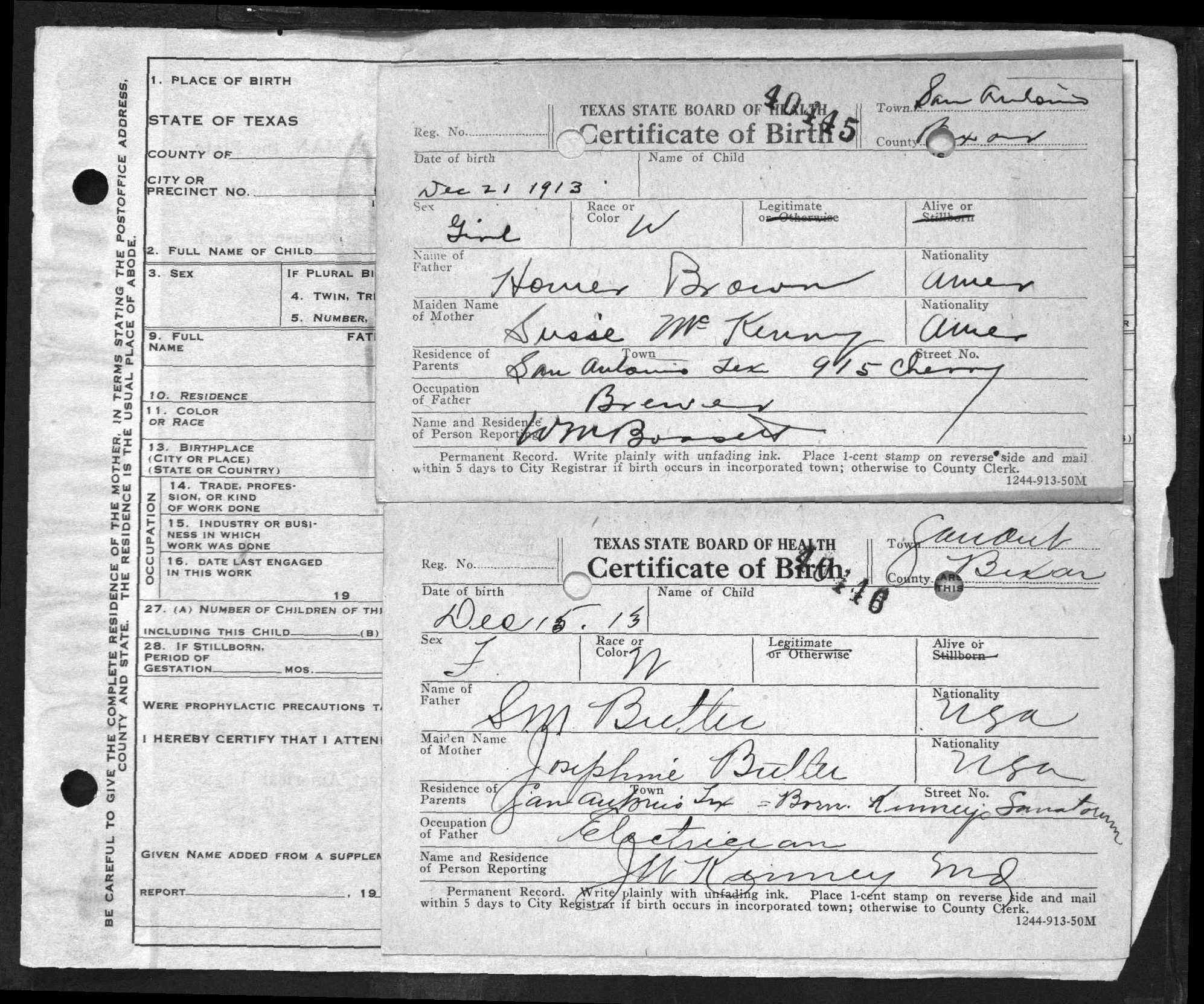
and Susie (McKenny)
Brown
21 Dec 1913
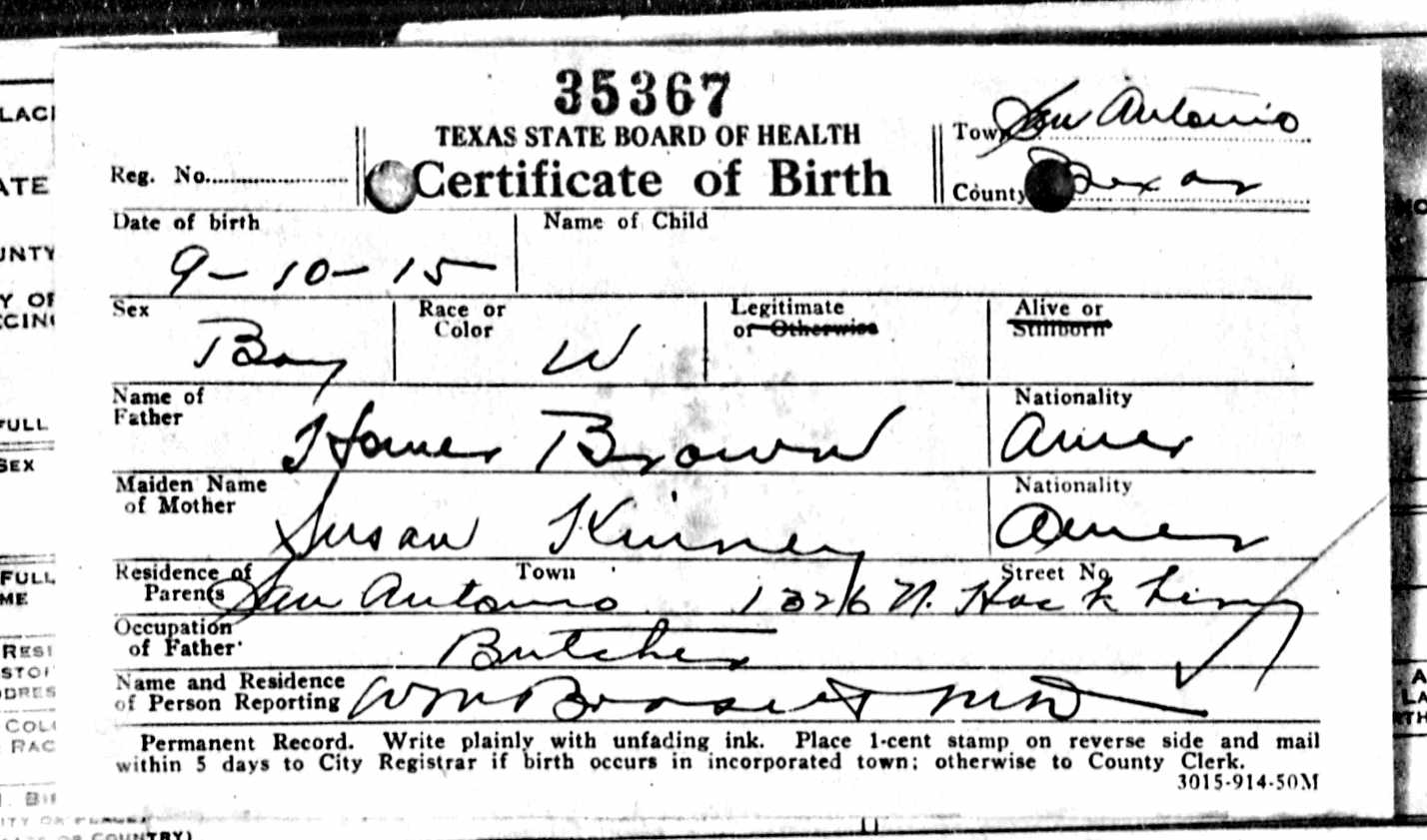
Susan (Kinney)
Brown
10 Sep 1915
Source (left image): "Texas Birth Certificates, 1903-1935," database with images, FamilySearch (https://familysearch.org/ark:/61903/1:1:XL9Q-8BW : 9 March 2018), Homer Brown in entry for Brown, 21 Dec 1913; citing San Antonio, Bexar, Texas, United States, certificate 40445, Texas Department of Health, Austin; FHL microfilm 4,145,110.
Source (right image): Ancestry.com. Texas, U.S., Birth Certificates, 1903-1932 [database on-line]. Provo, UT, USA: Ancestry.com Operations, Inc., 2013. Original data: Texas Department of State Health Services. Texas Birth Certificates, 1903–1932. iArchives, Orem, Utah.
Arizona
Source: Ancestry.com. Arizona, Birth Records, 1880-1935 [database on-line]. Provo, UT, USA: Ancestry.com Operations, Inc., 2015. Original data: Arizona Department of Health Services. Arizona Birth Records.
Michigan Births and Christenings Index
Name: Beecher Delos Brown
Gender: Male
Birth Place: Eaton, Michigan
Birth Date: 10 Aug 1871
Father's name: Alva P Brown
Mother's name: Martha Jane
FHL Film Number: 966583
Name: Floyd Moore
Gender: Male
Birth Place: Rutland, Barry, Michigan
Birth Date: 22 Apr 1889
Father's name: Adelbert Moore
Mother's name: Francis Moore
FHL Film Number: 1008315
Source: Ancestry.com. Michigan, Births and Christenings Index,
1867-1911 [database on-line]. Provo, UT, USA: Ancestry.com Operations,
Inc., 2011. Original data: "Michigan Births and Christenings,
1775–1995." Index. FamilySearch, Salt Lake City, Utah, 2009, 2010.
Index entries derived from digital copies of original and compiled
records.
Ohio Births and Christenings Index
Name: Alonzo O. Brown
Gender: Male
Race: White
Birth Date: 10 Feb 1876
Birth Place: Washington, Henry, Ohio
Father: Alva P. Brown
Mother: Martha J. Ennes
FHL Film Number: 423626
Name:
Bertha A. Brown
Gender: Female
Race:
White
Birth Date: 13 Jan 1878
Birth Place: Washington, Henry, Ohio
Father:
Alva P. Brown
Mother: Martha J.
Ennes
FHL Film Number: 423626
Name: Brown
Gender: Male
Birth Date: 16 May 1882
Birth Place: Washington, Henry, Ohio
Father: Alva P. Brown
Mother: Martha J. Ennes
FHL Film Number: 423626
Name: Chas. V. Sumaker
Gender: Male
Birth Date: 2 Jun 1898
Birth Place: Ft. Recovery, Mercer, Ohio
Father: Wm. Shumaker
Mother: Minnie Hart
FHL Film Number: 914953
Source: Ancestry.com. Ohio, Births and Christenings Index, 1774-1973
[database on-line]. Provo, UT, USA: Ancestry.com Operations, Inc.,
2011. Original data: "Ohio Births and Christenings, 1821-1962." Index.
FamilySearch, Salt Lake City, Utah, 2009, 2011. Index entries derived
from digital copies of original and compiled records.
Michigan Births
Name: Mary Louise Bisel
Birth Date: 18 Oct 1895
Birthplace: Bellevue, Eaton, Michigan
Gender: Female
Father's Name: John F. Bisel
Father's Birthplace: Mich.
Mother's Name: Ella Bisel
Mother's Birthplace: Mich.
Reference ID: item 2 p 238 rn 427
GS Film number: 2322563
Digital Folder Number: 4207245
Image Number: 819
Source: "Michigan Births, 1867-1902," database with images,
FamilySearch (https://familysearch.org/ark:/61903/1:1:NQZJ-8XZ : 10
March 2018), Ella Bisel in entry for Mary Louise Bisel, 18 Oct 1895;
citing item 2 p 238 rn 427, Bellevue, Eaton, Michigan, Department of
Vital Records, Lansing; FHL microfilm 2,322,563.
Name: Adna Vale Fuller
Birth Date: 23 Feb 1886
Birthplace: Battle Creek, Calhoun, Michigan
Gender: Male
Father's Name: Adee Vale Fuller
Father's Birthplace: New York
Mother's Name: Sylvia Anna Mcardill
Mother's Birthplace: Michigan
Reference ID: item 1 p 375 rn 454
GS Film number: 2320843
Digital Folder Number: 4207268
Image Number: 307
Source: "Michigan Births, 1867-1902," database with images,
FamilySearch (https://familysearch.org/ark:/61903/1:1:NQ89-XN1 : 10
March 2018), Sylvia Anna Mcardill in entry for Adna Vale Fuller, 23
Feb 1886; citing item 1 p 375 rn 454, Battle Creek, Calhoun, Michigan,
Department of Vital Records, Lansing; FHL microfilm 2,320,843.
Name: Roy C. Tungate
Birth Date: 23 Nov 1886
Birthplace: Johnstown, Barry, Michigan
Gender: Male
Father's Name: Elmer E. Tungate
Father's Birthplace: N.Y.
Mother's Name: Ola M. Tungate
Mother's Birthplace: Mich.
Reference ID: item 2 p 135 rn 766
GS Film number: 2320842
Digital Folder Number: 4207267
Image Number: 1236
Source: "Michigan Births, 1867-1902," database with images,
FamilySearch (https://familysearch.org/ark:/61903/1:1:NQZ1-SVH : 10
March 2018), Ola M. Tungate in entry for Roy C. Tungate, 23 Nov 1886;
citing item 2 p 135 rn 766, Johnstown, Barry, Michigan, Department of
Vital Records, Lansing; FHL microfilm 2,320,842.
Images of the marriage certificates are shown below as thumbnails. Click on each of the thumbnails to view a larger version of the certificates in another tab.
Ohio
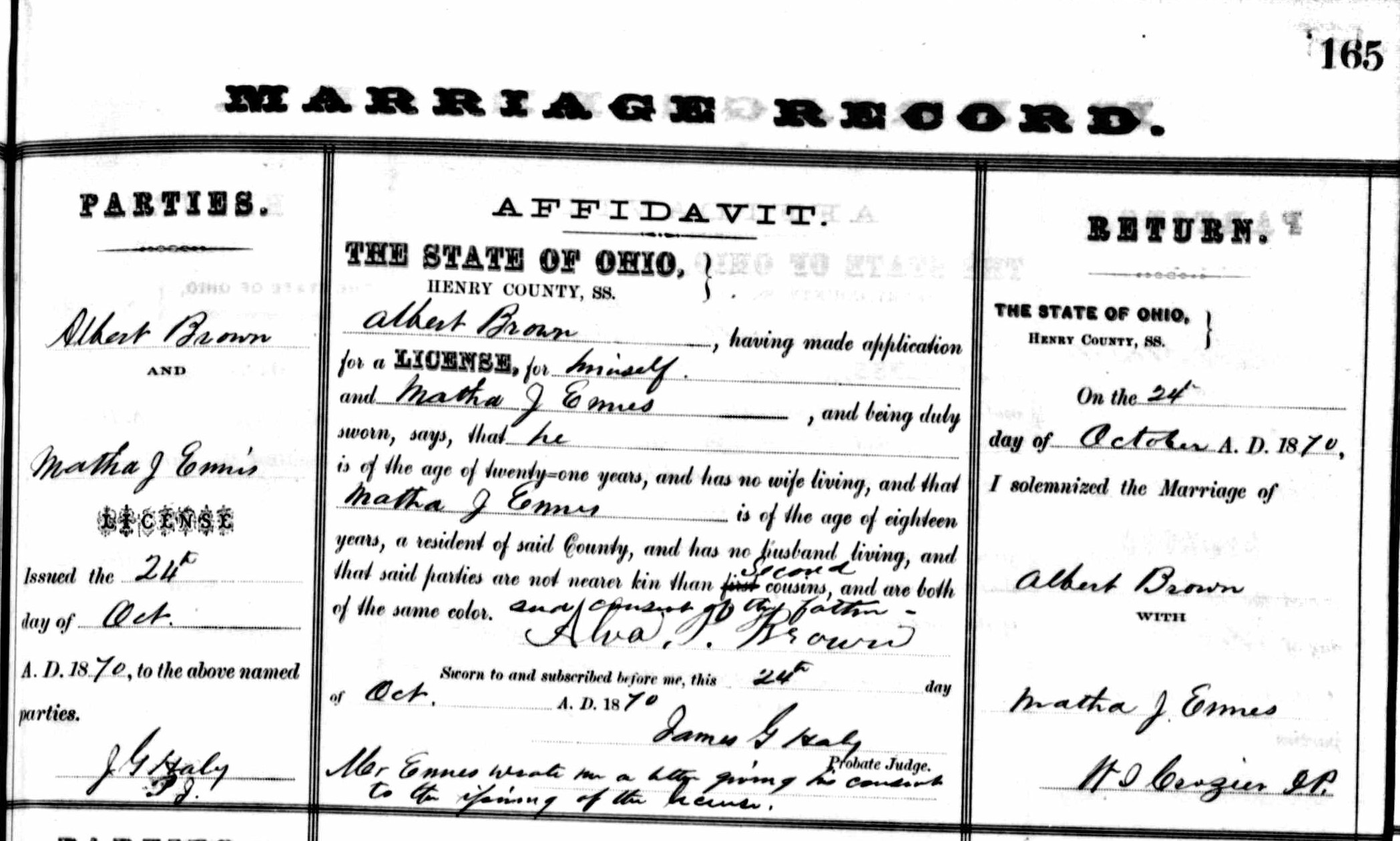
and return,
Albert Brown and
Matha J. Ennis,
24 October 1870
and return,
Alva P. Brown and
Martha J. Brown,
1 August 1881
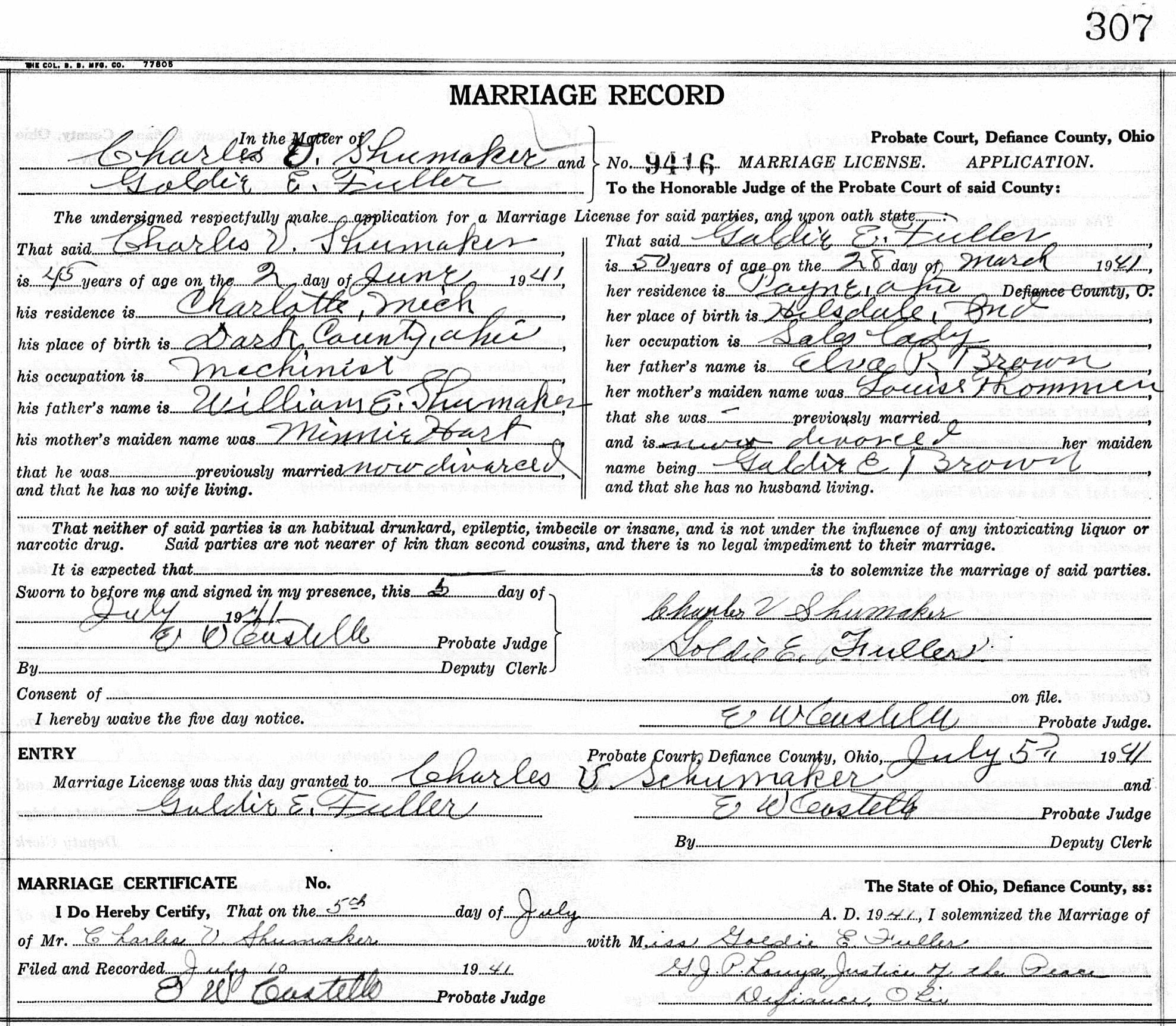
Charles V.
Shumaker and
Goldie E. Fuller,
5 Jul 1941
Source: Ancestry.com. Ohio, County Marriage Records, 1774-1993 [database on-line]. Lehi, UT, USA: Ancestry.com Operations, Inc., 2016. Original data: Marriage Records. Ohio Marriages. Various Ohio County Courthouses.
Arizona

certificate,
J. E. Brown and
Luz V. Bedoya,
4 Aug 1927
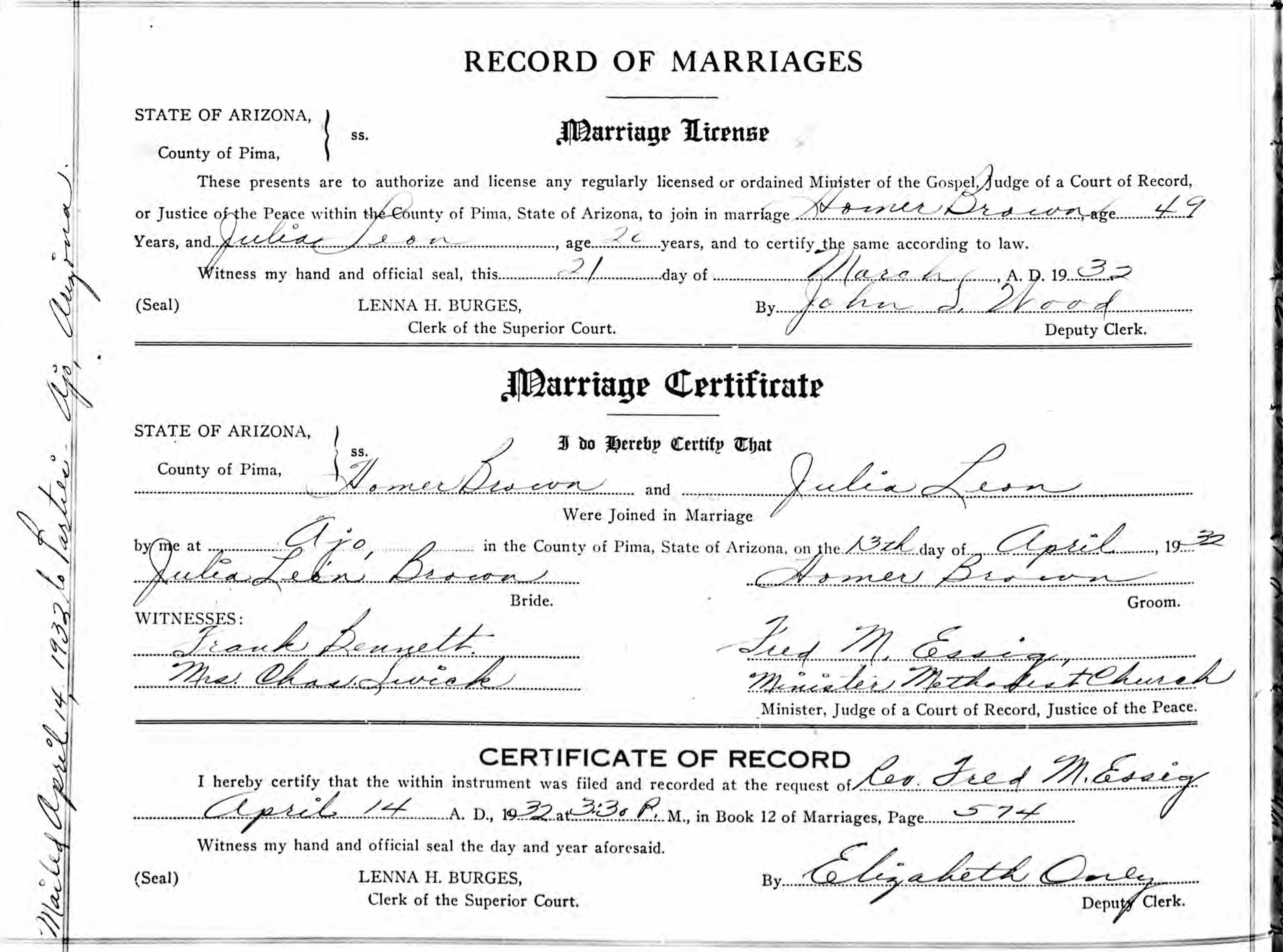
certificate,
Homer Brown and
Julia Leon,
21 Mar 1932
Source: Ancestry.com. California, Marriage Records from Select Counties, 1850-1941 [database on-line]. Provo, UT, USA: Ancestry.com Operations, Inc., 2014. Original data: Marriage records, select counties and years. California State Archives, Sacramento, California.
Michigan
Source: Ancestry.com. Michigan, County Marriage Records, 1822-1940 [database on-line]. Lehi, UT, USA: Ancestry.com Operations, Inc., 2016. Original data: Marriage Records. Michigan Marriages. Various Michigan County marriage collections.

and Leona L. Brown,
12 Dec 1913

Goldie E. Brown
Rogers,
17 Jul 1919

Maude E. Cassady,
24 Nov 1919

Mary Louise Bisel,
24 Oct 1923

Hazel I. Winslow,
3 Dec 1925
Source: Ancestry.com. Michigan, Marriage Records, 1867-1952 [database on-line]. Provo, UT, USA: Ancestry.com Operations, Inc., 2015. Original data: Michigan, Marriage Records, 1867–1952. Michigan Department of Community Health, Division for Vital Records and Health Statistics.
Source: "Michigan Marriages, 1868-1925", database with images, FamilySearch (https://familysearch.org/ark:/61903/1:1:N32Q-LRM : 15 January 2019), Earl J. Rogers and Goldie E. Brown, 1910.
Arkansas
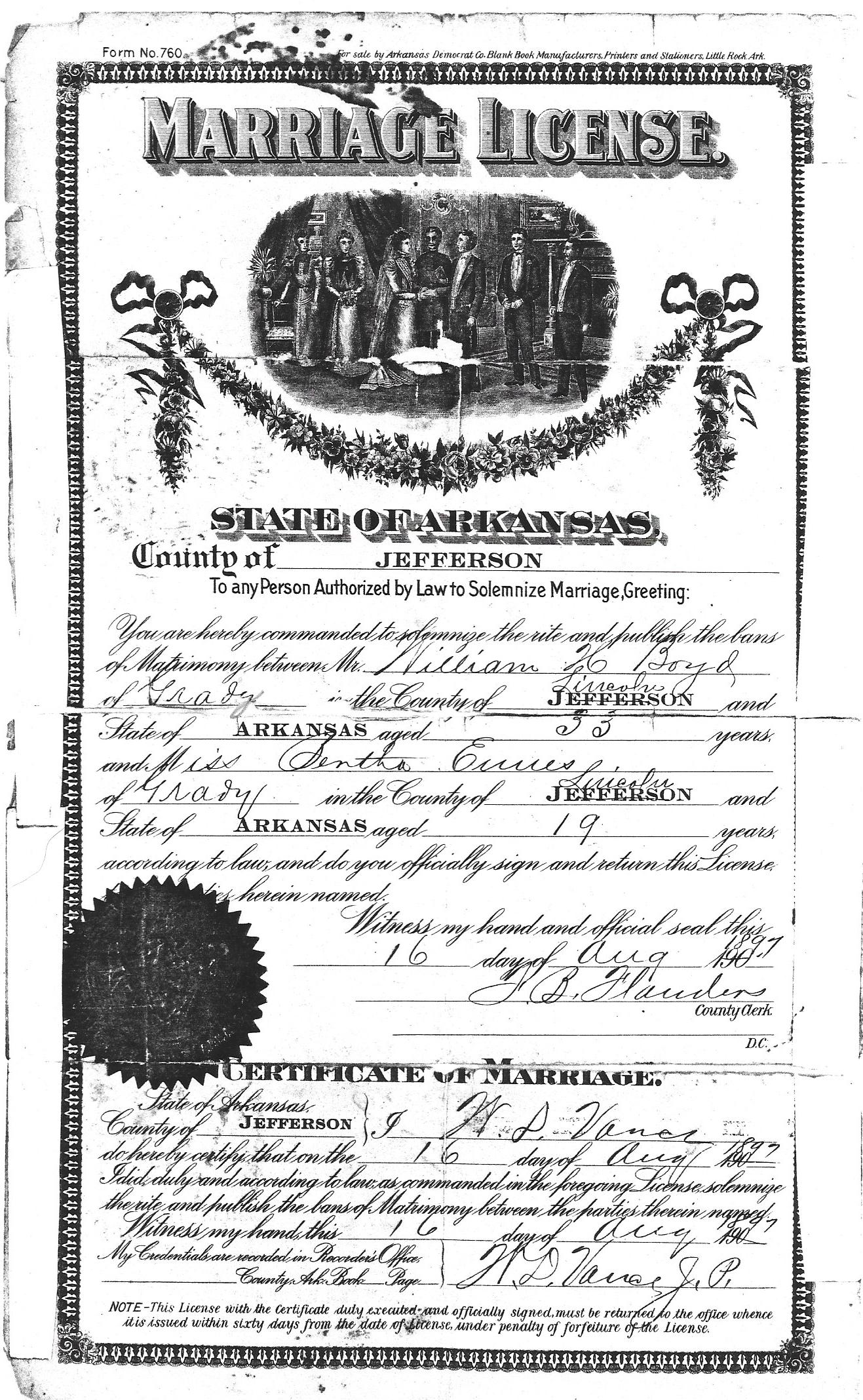
William H. Boyd
and Bertha Ennes,
16 Aug 1897
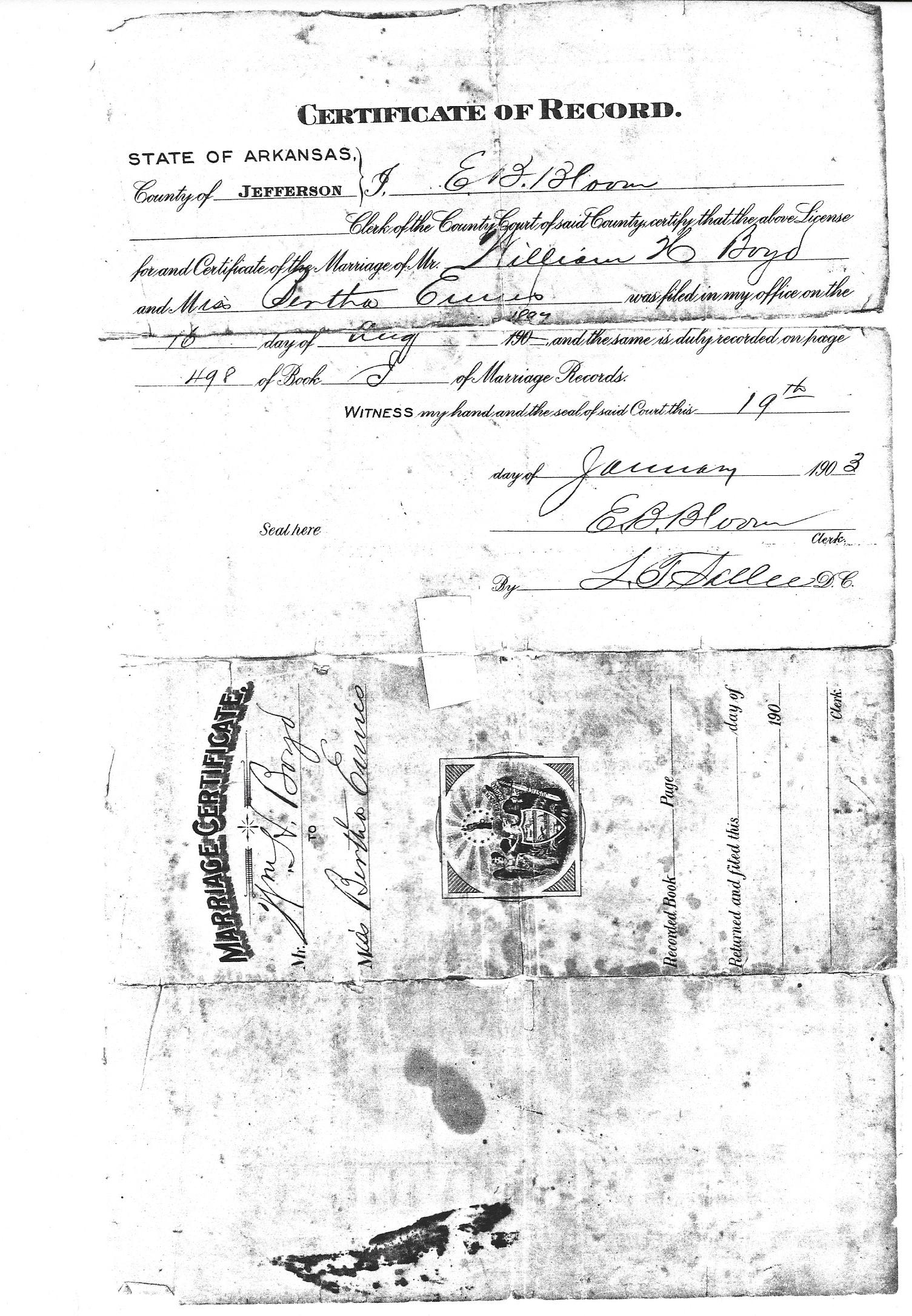
William H. Boyd
and Bertha Ennes,
16 Aug 1897
Source: Copy of marriage licenses and certificates, in possession of Darryl W. Boyd.
Ohio County Marriage Records
Name: Charley V Shumaker
Gender: Male
Age: 27
Birth Date: abt 1900
Marriage Date: 11 Mar 1927
Marriage Place: Lucas, Ohio, USA
Father: Wm Shumaker
Mother: Minnie Hart
Spouse: Hazel Prosser
Film Number: 002168492
Source: Ancestry.com. Ohio, County Marriage Records, 1774-1993
[database on-line]. Lehi, UT, USA: Ancestry.com Operations, Inc.,
2016. Original data: Marriage Records. Ohio Marriages. Various Ohio
County Courthouses.
Indiana Select Marriages Index
Name: Alva P. Brown
Gender: Male
Marriage Date: 14 Aug 1888
Marriage Place: Fulton, Indiana
Spouse: Louisa Thoman
FHL Film Number: 1871126
Reference ID: 223
Source: Ancestry.com. Indiana, Select Marriages Index, 1748-1993
[database on-line]. Provo, UT, USA: Ancestry.com Operations, Inc.,
2014. Original data: Indiana, Marriages. Salt Lake City, Utah:
FamilySearch, 2013.
Arkansas County Marriages Index
Name: Dela Brown
Gender: Female
Age: 22
Birth Year: abt 1880
Residence: Pine Bluff, Jefferson, Arkansas
Spouse's name: William Chisholm
Spouse's Gender: Male
Spouse's Age: 22
Spouse's Residence: Pine Bluff, Jefferson, Arkansas
Marriage Date: 23 Aug 1902
Marriage License Date: 22 Aug 1902
Marriage County: Jefferson
Event Type: Marriage
FHL Film Number: 983324
Name: Della Chism
Gender: Female
Age: 22
Birth Year: abt 1881
Residence: Pine Bluff, Jefferson, Arkansas
Spouse's name: Oth Estwood
Spouse's Gender: Male
Spouse's Age: 21
Spouse's Residence: Pine Bluff, Jefferson, Arkansas
Marriage Date: 6 Jun 1903
Marriage License Date: 1 Jun 1903
Marriage County: Jefferson
Event Type: Marriage
FHL Film Number: 983325
Name: Homer Brown
Gender: Male
Age: 32
Birth Year: abt 1881
Residence: Pine Bluff, Jefferson, Arkansas
Spouse's name: Susie McKinney
Spouse's Gender: Female
Spouse's Age: 18
Spouse's Residence: Junet, Grant, Arkansas
Marriage Date: 5 Feb 1913
Marriage License Date: 4 Feb 1913
Marriage County: Jefferson
Event Type: Marriage
FHL Film Number: 983116
Source: Ancestry.com. Arkansas, County Marriages Index, 1837-1957
[database on-line]. Provo, UT, USA: Ancestry.com Operations, Inc.,
2011. Original data: "Arkansas County Marriages, 1838–1957." Index.
FamilySearch, Salt Lake City, Utah, 2009, 2011. "Arkansas County
Marriages, 1838–1957," database, FamilySearch; from Arkansas Courts of
Common Pleas and County Clerks. Digital images of originals housed at
various county courthouses in the State of Arkansas. Marriage records.
Barry County, Michigan Marriage Index
Name: Goldie Brown
Gender: Female
Marriage Year: Abt 1910
Marriage Place: Barry, Michigan, USA
Residence Date: 1 Jan 1910
Spouse: Earl Rogers
Spouse Gender: Male
Source: Ancestry.com. Web: Barry County, Michigan, Marriage Index,
1839-2012 [database on-line]. Provo, UT, USA: Ancestry.com Operations,
Inc., 2015. Original data: Web Services. Barry County Clerk.
http://internal.barrycounty.org:8081/clerk/web/splash.jsp: accessed 19
March 2012.
Michigan Marriages
Name: Adna Vail Fuller
Event Type: Marriage
Event Date: 1 Jun 1909
Event Place: Battle Creek, Calhoun, Michigan
Gender: Male
Age: 23y
Birth Date: 1886
Birthplace: Battle Creek
Father's Name: Vail Fuller
Mother's Name: Sylvia Anna Mcardil
Spouse's Name: Margaret Elizabeth King
Spouse's Gender: Female
Spouse's Age: 24y
Spouse's Birth Date: 1885
Spouse's Birthplace: Ibion Co., Tenn
Spouse's Father's Name: R. M. King
Spouse's Mother's Name: Rose Downing
GS Film Number: 2342684
Digital Folder Number: 4209122
Image Number: 158
Source: "Michigan Marriages, 1868-1925", database with images,
FamilySearch (https://familysearch.org/ark:/61903/1:1:N3VR-8CB : 15
January 2019), Rose Downing in entry for Adna Vail Fuller and Margaret
Elizabeth King, 1909.
Images of the marriage certificates are shown below as thumbnails. Click on each of the thumbnails to view a larger version of the certificates in another tab.
Michigan Divorce Records

Mary Louise Brown,
13 Jan 1913

Goldie E. Rogers,
31 Mar 1919
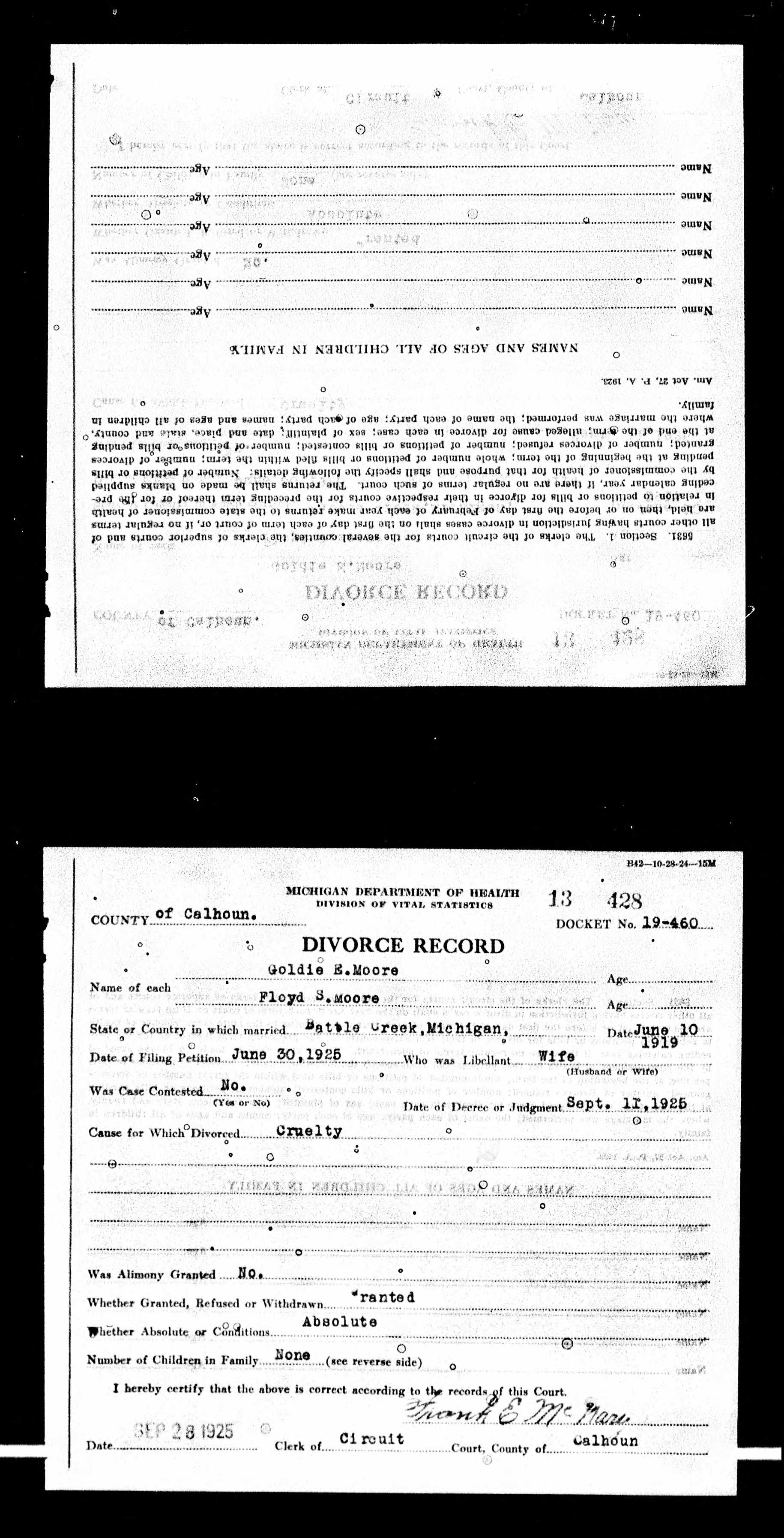
Goldie E. Moore,
17 Sep 1925
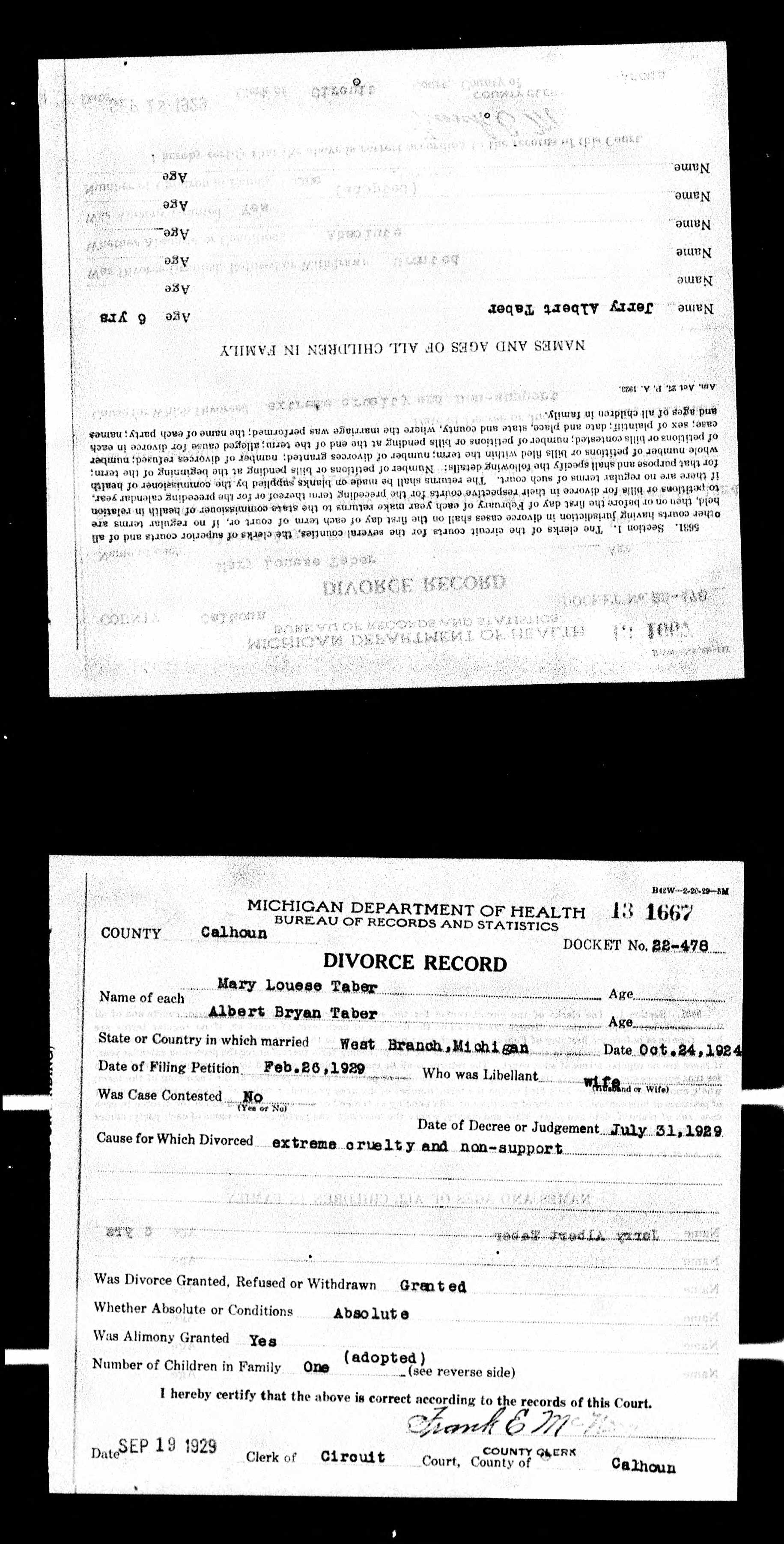
Mary Louese Taber,
31 Jul 1929
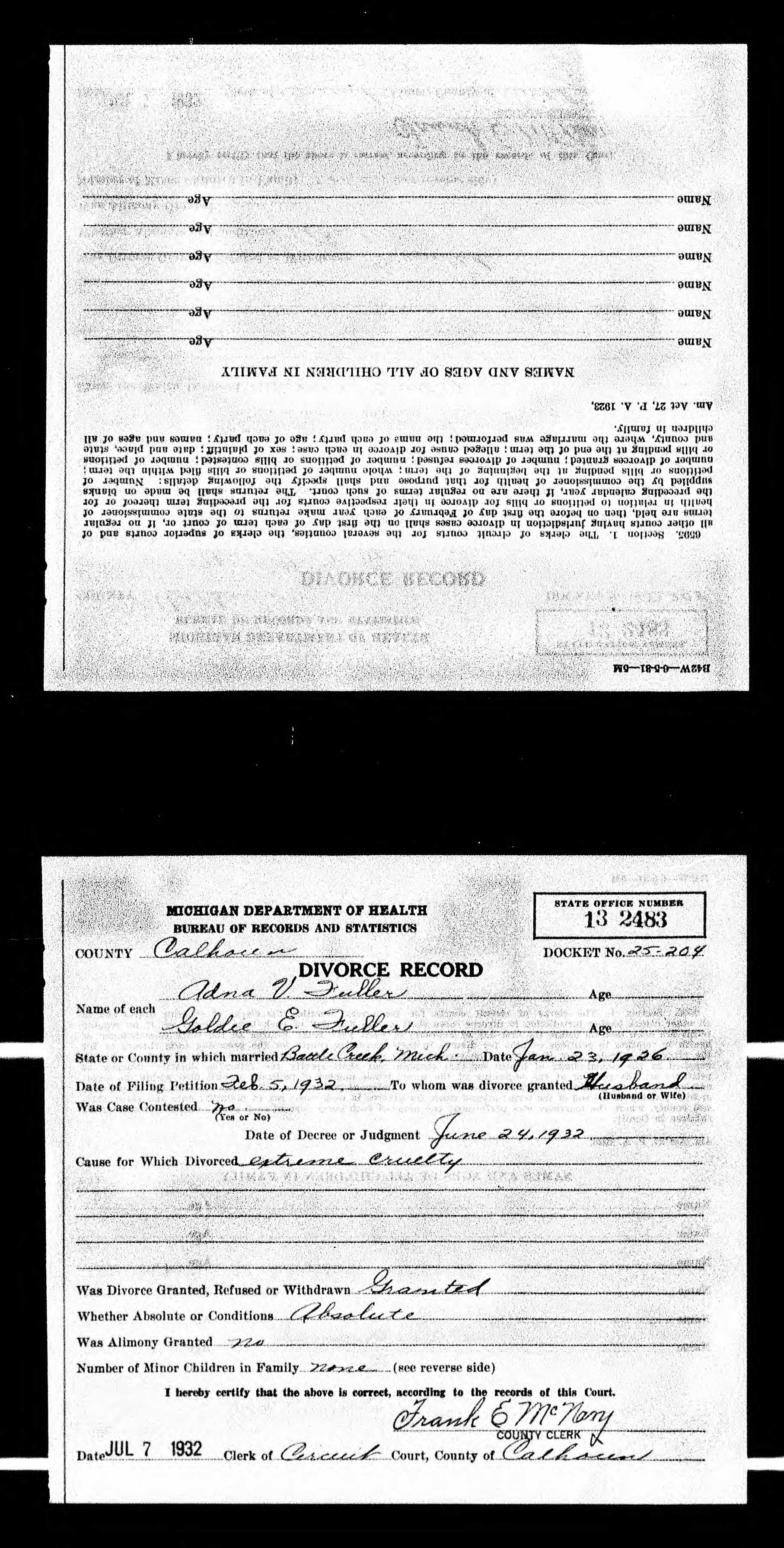
Goldie E. Fuller,
24 Jun 1932
Name: Goldie E Shumaker
Marriage Date: 5 Jul 1941
Marriage Place: Ohio
Decree Date: 7 Jun 1943
Decree Place: Calhoun, Michigan, USA
Spouse Name: Charles V Shumaker
Number of Children: 0
Divorce Status: Granted
Name: Charles Shumaker
Marriage Date: 11 Mar 1926
Marriage Place: Toledo, Ohio
Decree Date: 10 Jun 1938
Decree Place: Eaton, Michigan, USA
Spouse Name: Hazel Shumaker
Number of Children: 0
Divorce Status: Granted
Source: Ancestry.com. Michigan, Divorce Records, 1897-1952 [database
on-line]. Provo, UT, USA: Ancestry.com Operations, Inc., 2014.
Original data: Michigan. Divorce records. Michigan Department of
Community Health, Division for Vital Records and Health Statistics,
Lansing, Michigan.
Divorce Record of Alva and Martha (Ennis) Brown
Court of Common Pleas, began and held at the Court House in Napoleon in the County of Henry and State of Ohio, on the 25th day of January A.D. 1881. Before the Hon. J.J. Moore Judge of said Court. Be it remembered that on the 1st day of November A.D. 1880 was filed in the Clerk’s office of said Court the following Petition for Divorce to wit:
| Martha Brown, Plaintiff. | The Court of Common Pleas of Henry |
| Against | County and State of Ohio |
| Alva Brown, Defendant. | Petition for Divorce |
The said Martha Brown Plaintiff and Petitioner of said County of
Henry respectfully represents to this Court that she has been for the
year last past and more the resident of the State of Ohio and is now a
bona fide resident of the said County of Henry. This plaintiff further
says, and showeth that on or about the 17th day of October A.D. 1870,
at Texas in said Henry County and State of Ohio, she was married to
one Alva Brown of the same place and whom she prays may be made apart,
defendant in this petition, and that she had while living with the
said Alva Brown the following Children which are now living to wit
Alva Beecher Brown seven years old, Alonzo Orsmas Brown, four years
old, Bertha Amanda Brown, two years old, and Ardella Margaret Brown,
an infant six weeks old. And this plaintiff further shows that the
said Alva Brown defendant regardless of his marital duties toward said
plaintiff has been guilty of gross neglect and Extreme cruelty toward
said plaintiff, that on or about the 21st day of October 1880, the
said defendant violently took hold of this plaintiff and then and
there pinched and shook her in a violent manner and then threatened to
throw her said plaintiff into the street and plaintiff further says
that said defendant on the 24th day of October 1880 again took hold of
said plaintiff in a violent and forcible manner and then and there
shook her, pinched and twisted her arms around and so injured it that
she could not use it properly for the soreness and lameness thereof in
consequence of the injury produced thereby. And this plaintiff further
says that said defendant on the 18th day of October 1880 abandoned
said plaintiff and took with him all the household goods and
provisions belonging to the family and all the clothing of said
plaintiff & her children except what they had on, taking then and
there even the pillow from under their infant child lying in a rocking
chair.
And this plaintiff further says that she has in her own right the
title in fee simple of the following real estate to wit:— The South
West quarter of the South West quarter of Section 25 and 25 acres off
of the North and off of the North West quarter of Section 36 in Town
6, North of Range 8 East in Henry County, Ohio, also in same Town and
Range the NE ¼ of the NE ¼ of Section 35, on which last tract there is
a mortgage of $600.00. And this plaintiff says that said defendant is
the owner in fee simple of the East half of the South East quarter of
Section 26 in Town 6 North Range 8 East aforesaid less 20 acres off of
the North side, and 20 acres off of the South side thereof
constituting 40 acres of land.
Your petitioner this plaintiff therefore prays that the said Alva
Brown may be duly notified of this petition according to law, that he
be required to answer the same and that on the final hearing hereof
she may be divorced from said Alva Brown that the custody of said
children may be decreed to her, that a reasonable alimony may be
allowed her and for such other and further relief as the nature of her
case and equity may require.
Martha Brown= By J.H. Tyler, her atty.
Martha Brown
vs.
Precipe.
Alva Brown
Issue summons against said defendant together with a certified
copy of this petition returnable according to law.
Oct. 30, 1880
J.H. Tyler, Pltfs. atty.
(-- for) costs: A.M. Willard
Afterwards on the first day of November A.D. 1880 was issued from the
Clerk’s office of said Court the following Summons in Divorce to wit:
Summons In Divorce
| The State of Ohio | To the Sherrif of Henry County: |
| Henry County | You are commanded to notify Alva Brown that Martha Brown has |
filed in the office of the Clerk of the Court of Common Pleas of
Henry County and State of Ohio a petition (a copy of which is herewith
served in him) charging him with Gross neglect of duty and extreme
cruelty and asking that she be divorced from him and that alimony be
allowed her and for other proper relief said petition will (stand --
--) during the term of said Court next ensuing, and six weeks from and
after the
(--)
the 15th day of November A.D. 1880.— Witness my signature as Clerk of
our said Court of Common Pleas at the – of said Court at Napoleon this
1st day of November A.D. 1880.
O. E. Barnes
Summons endorsed as follows to wit
Henry Common Pleas = Martha Brown = against = Alva Brown. Summons on
petition for Divorce and alimony. J.H. Tyler, Pltfs. atty. Summons
returned endorsed as follows: to wit:
Received 10 o’clock A.M. on the 2nd day of November A.D. 1880 and on
the 11th day of November A.D. 1880, I served the same by delivering to
the within named (defendant –) thereof also in the same day and at the
same time served on the within named defendant a certified copy of the
petition.
Geo. Daum, Sheriff.
Fees $3.05
By E.B.
Barnes, Dpty
“
And afterwards on the 24th day of January A.D. 1881 was filed in the Clerk’s office of said Court the following Answer to wit:
| Martha J Brown.—Plaintiff. | The State of Ohio, Henry County Court of |
| Against | Common Pleas |
| Alva P Brown.—Defendant. | Answer and Cross Petition |
And so comes the said Alva Brown Defendant and for answer to the said
Martha J Brown plaintiff’s petition saith: That he admits that he was
married to said plaintiff as she in her said petition hath averred and
that they are now husband and wife. That as the fruits of said
marriage they have the children as set out in plaintiff’s petition and
that the time of the commencement of this action the owner of the
lands as stated and described in plaintiff’s petition: said defendant
denies each and every other allegation contained in plaintiff’s
petition and said defendant by way of cross-petition says: that said
plaintiff disregarding her duties of a wife toward said defendant she
has been guilty of gross neglect of duty toward this said defendant
that on or about the 18th day of October A.D. 1880 said plaintiff
deserted said defendant and has ever since been absent and away from
her said husband and family without any fault or provocation on the
part of said defendant. Defendant further shows that the said Martha
J. Brown regardless of her marital duties toward said defendant did on
the 17th day of May A.D. 1880 at the house of said defendant in the
Township of Washington, in the County of Henry, and the State of Ohio,
commit adultery with one Ely Bolinger and that also on the 14th or
15th of May, also on the 25th of April A.D. 1880 at said defendant’s
house did commit adultery with said Ely Bolinger and at other and
sundry times the dates of which cannot be given exact. And also when
said Bolinger was away kept up an improper correspondence by letters
with said Bolinger.
Said defendant therefore prays that he may on the final hearing of
this cause be divorced from the said Martha J Brown, and that the
custody of the said children may be decreed to said defendant and for
such other and further relief the nature of his case and equity may
require.
Alva P Brown
By John A King, Attorney for defendant
And afterward at the January Term A.D. 1881. (To wit Febry 11th/81) came the following Journal Entry to wit:
Martha Brown No
702 Petition for Divorce
vs And vows
the said parties by their attorneys and thereupon this
Alva Brown
cause came on for hearing upon the petition of said plaintiff the
answer and cross-petition of said defendant the plaintiff’s reply
thereto and testimony, and was argued by counsel on consideration
whereof the Court finds due notice of the filing and pendency of this
petition was given and personally served on said defendant together
with a certified copy of said petition by the Sheriff of this County
according to law, and the Court further finds that the said defendant
has been guilty of extreme cruelty toward said plaintiff as she in her
said petition has alleged, and the Court further finds that each of
said parties hereto is seized in fee simple of the real estate in
plaintiff’s petition described.
It is therefore adjudged and decreed the marriage relation heretofore
existing between said parties be and the same is hereby set aside and
wholly annulled and the said parties wholly released from the
obligations of the same; and it is further adjudged and decreed that
said defendant do pay to said plaintiff for her reasonable alimony the
sum of $250, payable as follows to wit: $50 in Thirty days from this
date, $50 in six months thereafter, $50 in Twelve months, $50 in
Eighteen months.— and $50 in Two Years:
And it is further ordered and adjudged that said judgment and decree
for the sum of $250 as aforesaid rendered be and the same is hereby
made a lien from this date upon the lands of said defendant which are
in plaintiff’s petition described to wit: The East half of the South
East quarter of Section 26 in Town 6 North Range Eight (8) East in
Henry County, Ohio less 20 acres off of the North side and 20 acres
off of the South side thereof: containing 40 acres of land.
And it is further ordered adjudged and decreed that said plaintiff be
and she is hereby given the custody, nurture, education, and care of
said Alva Beecher Brown, Alonzo Omas Brown, Bertha Amanda Brown, and
Ardella Margaret Brown, until the further order of this Court. And it
is further ordered that said plaintiff pay all the costs of this
action and proceedings and taxed to $
except the costs of said defendant’s witnesses.
J.J. Moore
Presiding Judge of said Court.
Source: Martha J. Brown v. Alva P. Brown, from Complete Record, Henry Common Pleas, January Term, A.D. 1881, transcription of a photocopy in possession of Darryl W. Boyd.
Images of the death certificates are shown below as thumbnails. Click on each of the thumbnails to view a larger version of the certificates in another tab.
Michigan
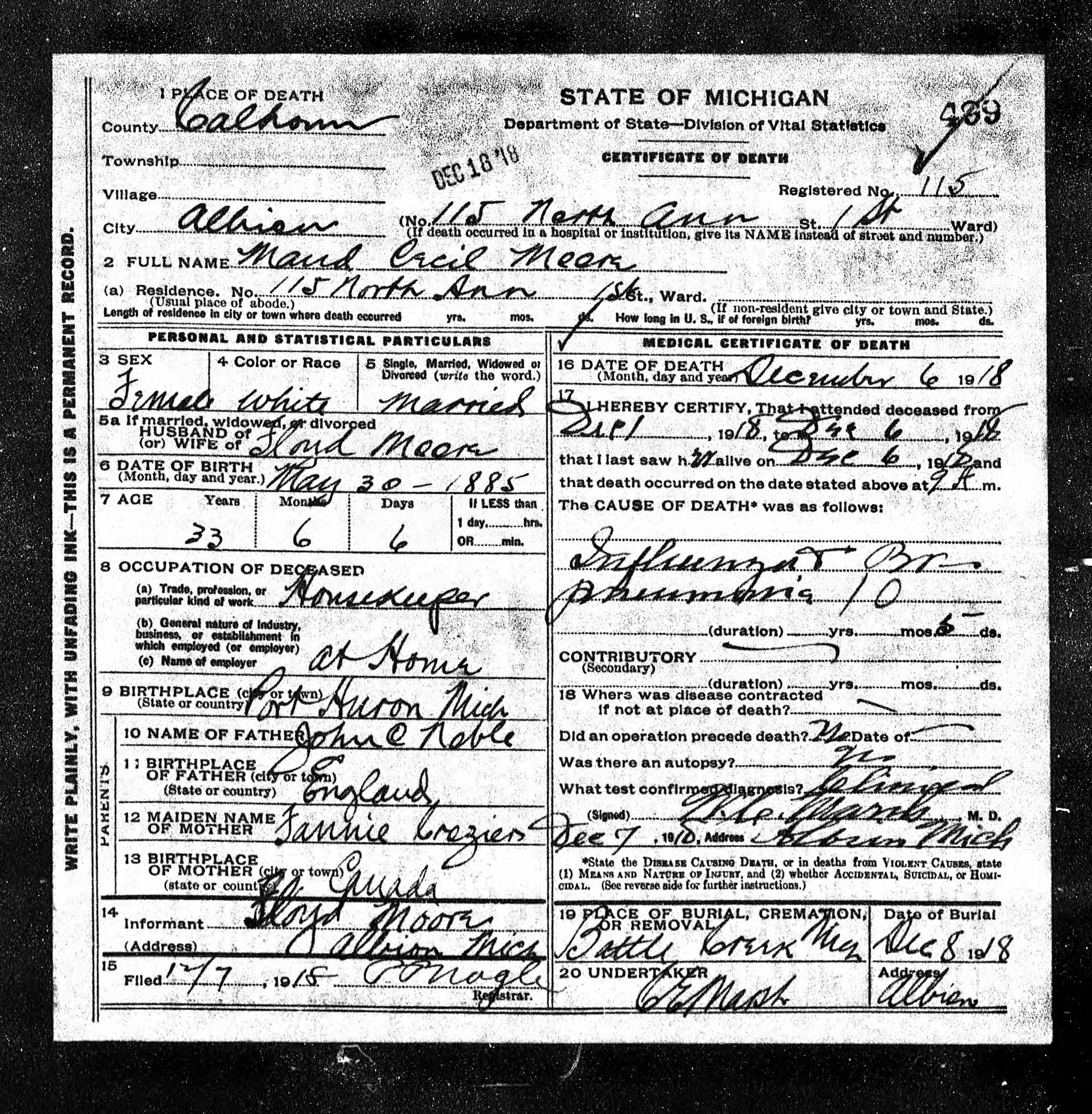
6 Dec 1918
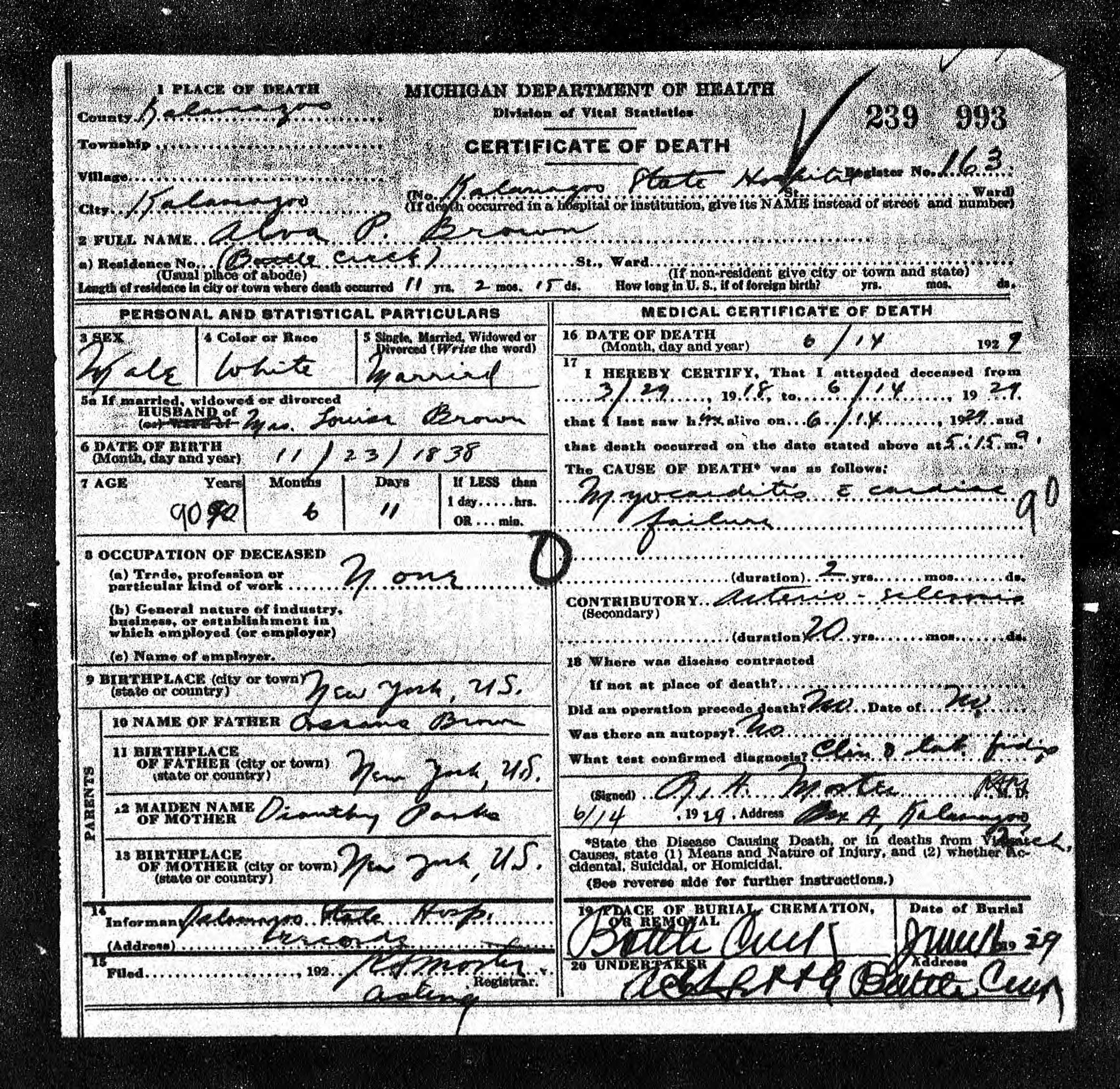
14 Jun 1929
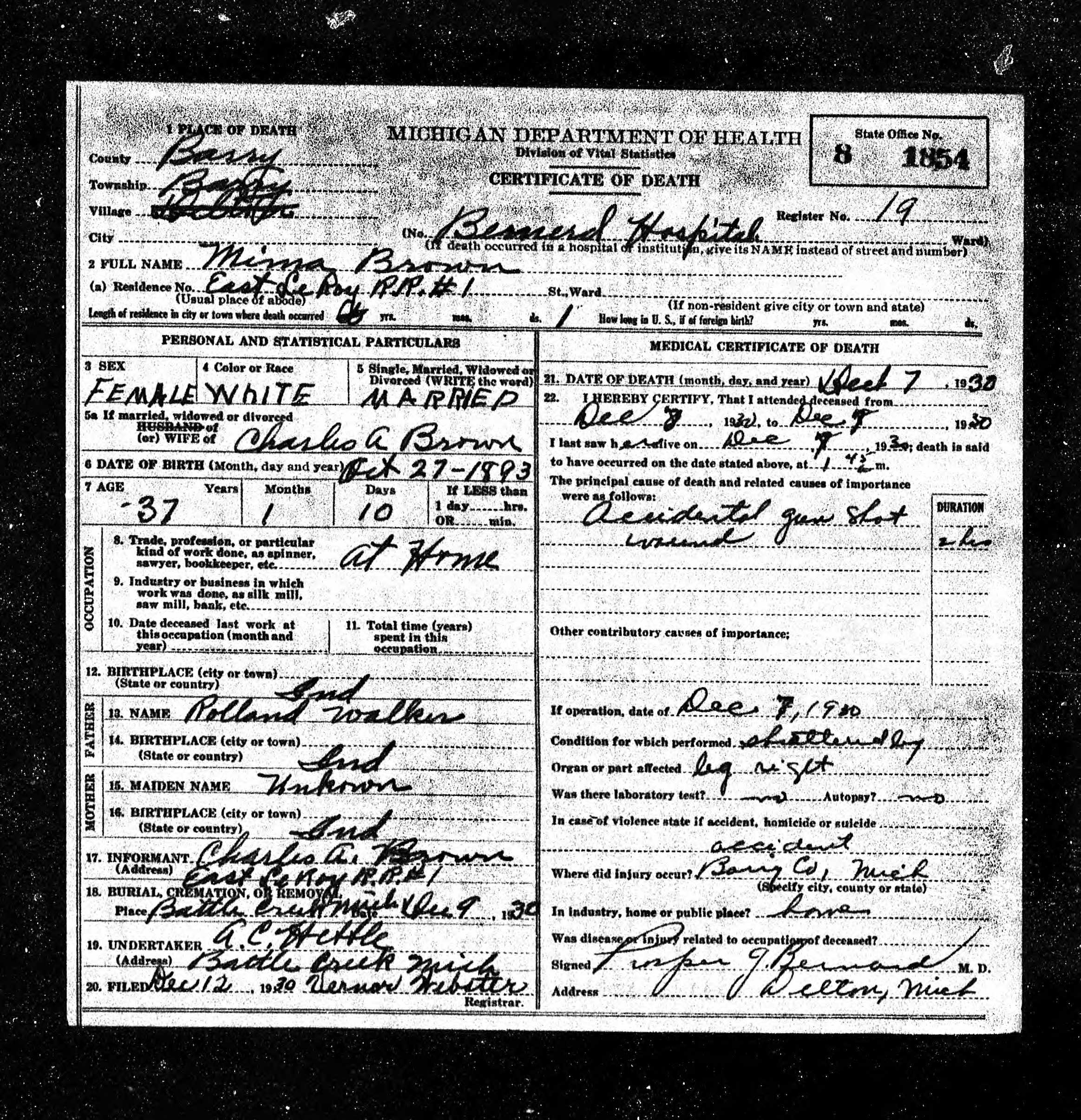
7 Dec 1930
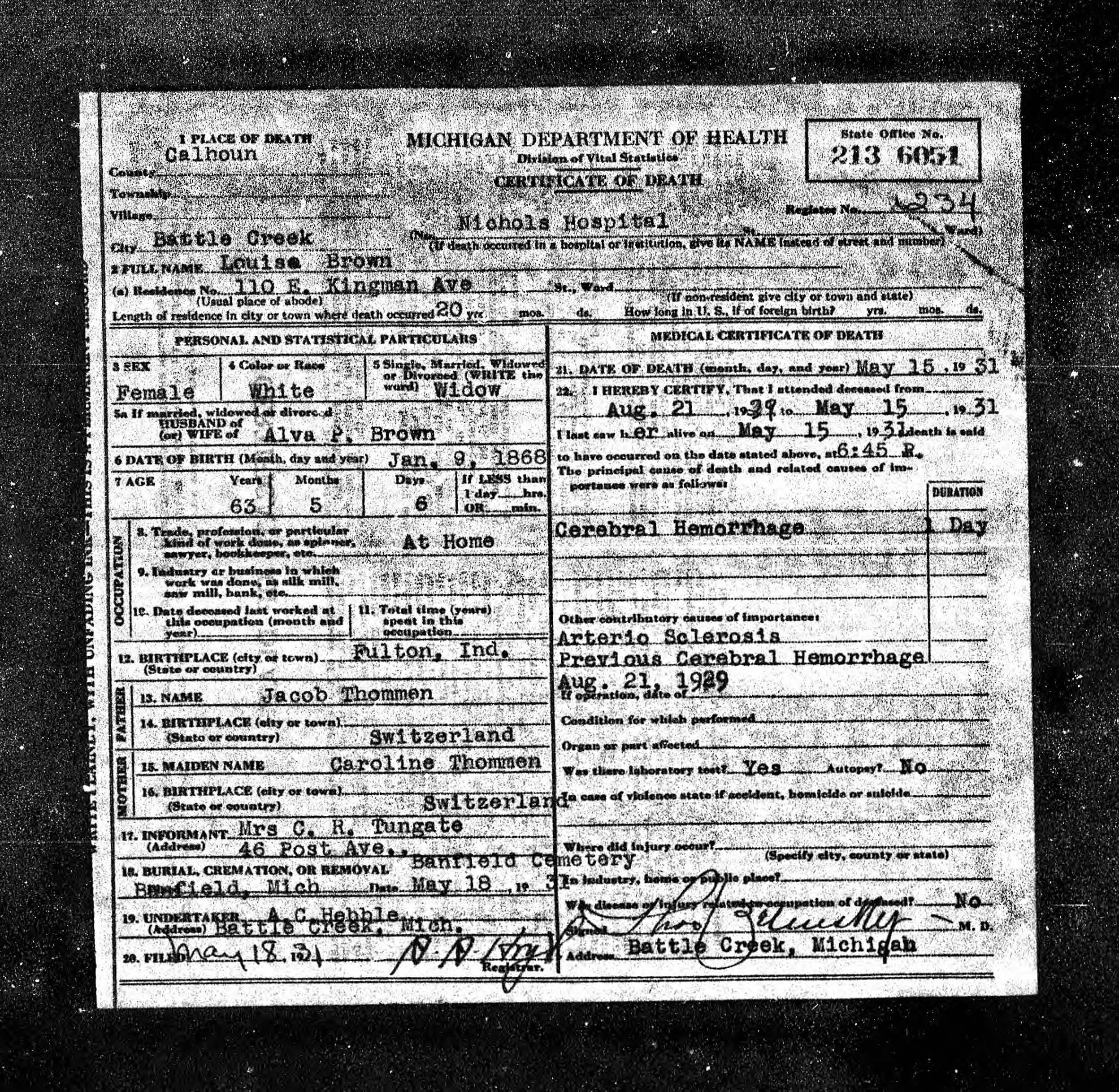
15 May 1931
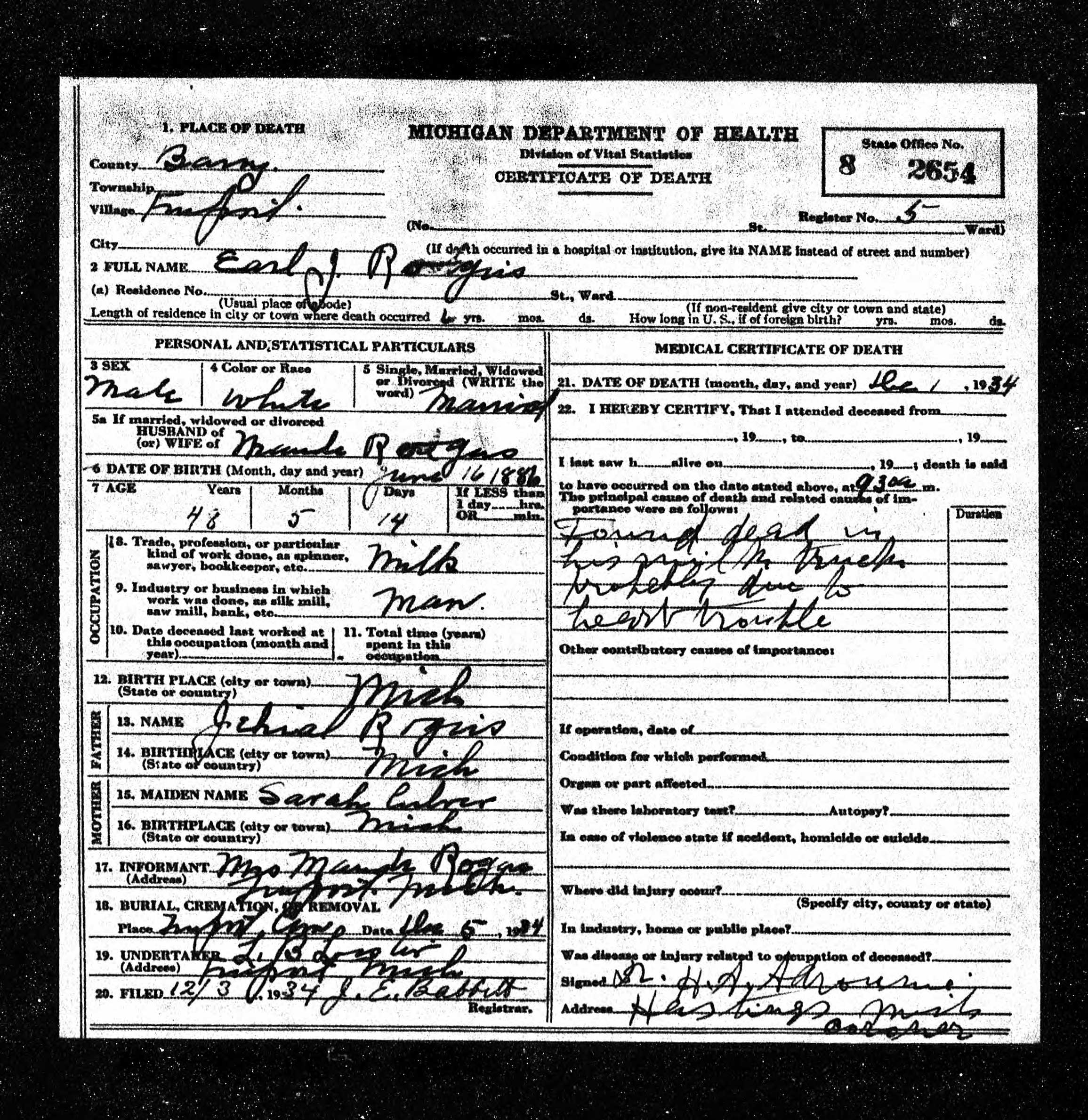
1 Dec 1934
Source: Ancestry.com. Michigan, Death Records, 1867-1950 [database on-line]. Provo, UT, USA: Ancestry.com Operations, Inc., 2015. Original data: Death Records. Michigan Department of Community Health, Division for Vital Records and Health Statistics, Lansing, Michigan.
Arizona
Source: "Arizona Deaths, 1870-1951," database with images, FamilySearch (https://familysearch.org/ark:/61903/1:1:FLV8-7XM : 10 March 2018), Billie Brown, 1925; citing Ajo, Pima, Arizona, reference , Department of Library and Archives, Phoenix, Arizona; FHL microfilm 2,114,562.
Source: Ancestry.com. Arizona, Death Records, 1887-1960 [database on-line]. Lehi, UT, USA: Ancestry.com Operations, Inc., 2016. Original data: Arizona Department of Health Services. Arizona Death Records.
California
California Death Index
Name:
William Henry Boyd
Social Security #: 557182367
Gender:
Male
Birth
Date:
12 Feb 1864
Birth
Place:
Rhode Island
Death
Date:
6 May 1955
Death
Place:
Alameda
Father's Surname: Boyd
Name:
Bertha Boyd
[Bertha Brown]
Gender:
Female
Birth
Date:
13 Jan 1879
Birth
Place:
Ohio
Death
Date: 6
Jun 1954
Death Place:
Alameda
Mother's Maiden Name: Ennis
Father's Surname: Brown
Name: Ordella Margaret Eastwood
[Ordella Margaret Brown]
Gender: Female
Birth Date: 17 Sep 1877
Birth Place: Ohio
Death Date: 11 Jul 1957
Death Place: San Bernardino
Mother's Maiden Name: Ennis
Father's Surname: Brown
Name: James E Brown
Social Security #: 572124146
Gender: Male
Birth Date: 10 Feb 1876
Birth Place: Ohio
Death Date: 6 Feb 1960
Death Place: San Diego
Mother's Maiden Name: Ennes
Name: Luz Brown
[Luz Bedoya]
Social Security #: 550420623
Gender: Female
Birth Date: 26 Oct 1908
Birth Place: Mexico
Death Date: 31 Dec 1993
Death Place: San Diego
Mother's Maiden Name: Velasco
Father's Surname: Bedoya
Name: Irene L Stackhouse
[Irene L Brown]
Social Security #: 548584934
Gender: Female
Birth Date: 5 May 1908
Birth Place: Texas
Death Date: 20 Oct 1993
Death Place: Los Angeles
Mother's Maiden Name: Arnold
Father's Surname: Brown
Source: Ancestry.com. California, Death Index, 1940-1997 [database
on-line]. Provo, UT, USA: Ancestry.com Operations Inc, 2000. Original
data: State of California. California Death Index, 1940-1997.
Sacramento, CA, USA: State of California Department of Health
Services, Center for Health Statistics.
Florida Death Index
Name: Otho O Eastwood
Gender: Male
Race: White
Death Date: 1928
Death Place: Gadsden, Florida, United States
Source: Ancestry.com. Florida Death Index, 1877-1998 [database
on-line]. Provo, UT, USA: Ancestry.com Operations Inc, 2004. Original
data: State of Florida. Florida Death Index, 1877-1998. Florida:
Florida Department of Health, Office of Vital Records, 1998.
Michigan Death Index
Name: Leona L Tungate
Birth Date: 10 Mar 1893
Death Date: 24 Jun 1977
Gender: Female
Residence: Battle Creek, Calhoun, Michigan
Place of Death: Emmet, Calhoun, Michigan
Name: Chauncey R Tungate
Birth Date: 12 Nov 1886
Death Date: 26 Jan 1972
Gender: Male
Residence: Battle Creek, Calhoun, Michigan
Place of Death: Battle Creek, Calhoun, Michigan
Source: Michigan Department of Vital and Health Records. Michigan,
Death Index, 1971-1996 [database on-line]. Provo, UT, USA:
Ancestry.com Operations Inc, 1998. Original data: Michigan Department
of Vital and Health Records. Michigan Death Index. Lansing, MI, USA.
Order of Distribution, 29 May 1882
From the Probate Records of William A. Ennes
Anna Ennes
Widow of said
Decedent
$326.50
Frances
Davis
$75.50
Priscilla
Brooks
$75.50
Ellen
Elliott
$75.50
Maggie M.
Southard
$75.50
Thomas Hornbeck
Guardian of Lorenzo D.
Ennes
$75.50
Martha
Browne
$10.79
Ellen
Hanchett
$10.79
Amanda Ennes: now
Ballinger
$10.78
Lincoln
Ennes
$10.78
D.K. Bowker
Guar. Of the minor children of Ordilla
Bowker $10.78
Charles Hanchett
Guar. Of Sylvester & Sadie
Ennes
$21.58
$779.50
Application for Letters of Administration, 8 Dec 1880
From the Probate Records of William A. Ennes
Frances Davis Daughter Bradner, Wood Co., O.
Priscilla Brooks Daughter Lexington, McClain Co. Ill.
Ellen Elliot Daughter Carolton, Caroll Co., Ia.
Maggie M. Southard Daughter West Mansfield, Logan Co., O.
Ordilla Bowker Dec'd: Having minor children Henry Co., Ohio
Alonzo H. Ennes Dec'd: having Children Henry Co., Ohio
Lorenzo D. Ennes Dec'd: Having a Son Guar. In Union Co., O.
Source: Information from the probate records of William A. Ennes,
provided by Ruth Browne (and the Logan County Genealogical Society).
Images of newspaper articles are shown below as thumbnails. Click on each thumbnail to view a larger version of the article in another tab.
Alva Parks Brown
Progressive Batavian:
Orsemus Brown, formerly a well-known citizen of Elba, died at the
residence of his son, T. D. Brown, of Canandaigua, Aug. 7th, aged 83
years. He was born in Oneida county, N. Y., in 1810; and at the age of
ten years was left an orphan, his father having been murdered and
robbed. Calvin Brown, a well-known pioneer settler in Elba, took
Orsemus to his home and reared him up to manhood. Jan 1st, 1838, he
united in marriage with Miss Diantha Park, of Elba, a woman of
remarkable energy and enterprise. This union was blessed with five
children, all of whom are living. T. D. Brown, of Canandaigua; Alva P.
Brown, of Southern Indiana; George W. Brown, of Michigan; Franklyn C.
Brown, of Little Sioux, Iowa; and Mrs. Emma J. Boyd, of North Dakota.
And it is not a little remarkable that no death occurred in the family
until in February last when Mrs. Brown, the devoted wife and mother,
died. For a number of years, Mr. Brown has been in poor health and for
a time he was entirely helpless, but was entirely cared for by his
son, T. D. Brown. His remains reached Elba Tuesday evening and were
laid in the old cemetery by the side of his companion and other
relatives. The brief service at the grave was by his former pastor,
Rev. E. A. Wheat.
Source: Progressive Batavian (Batavia, NY), August 11, 1893.
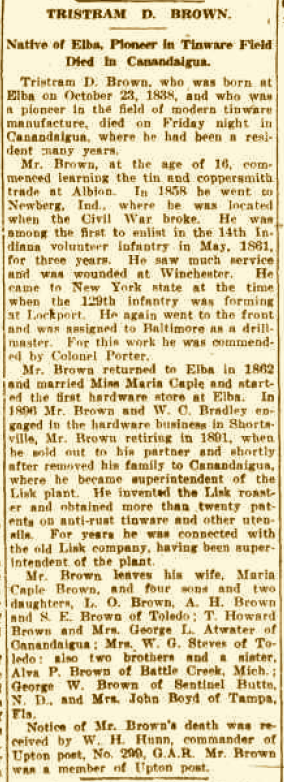
D. Brown, Batavia
Daily News (Batavia,
NY), 19 April 1920.
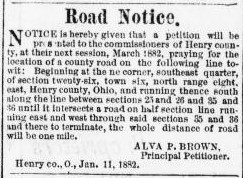
Northwest and Henry
County News,
Napoleon, OH, 9 February 1882.

Introduction: "The land, lots, and parts of lots returned delinquent by the Treasurer of Henry County, together with the taxes and penalty charge thereon agreeably to law, are contained and described in the following list, to-wit:
Washington Township"
Column headings are: Owners, Section, Description, Acres, Value, Tax
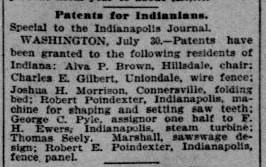
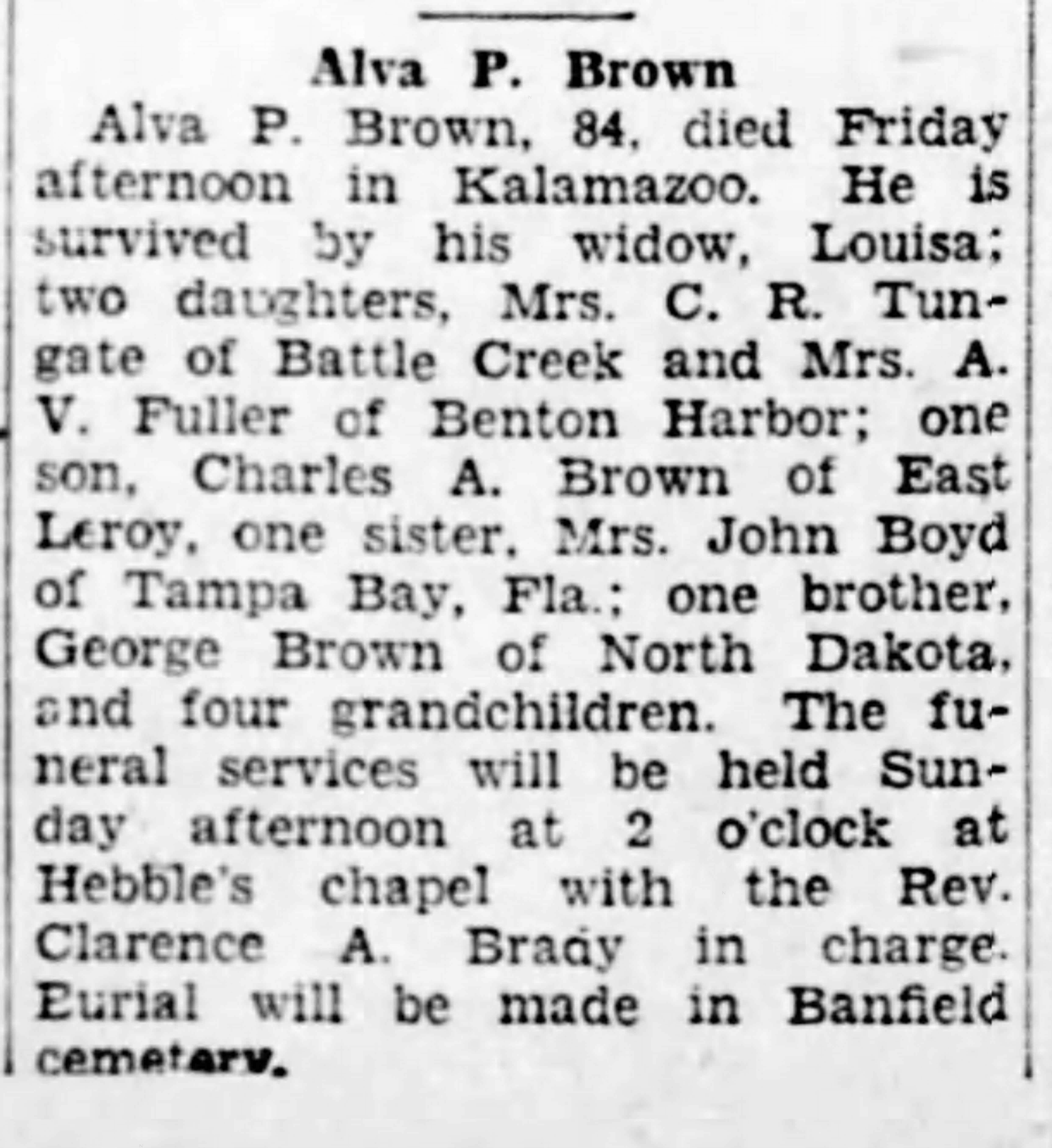
Alva Parks and Martha Jane (Ennis) Brown

Mr. Alva Brown and
Mrs. Martha J. Brown,
Democratic Northwest
and Henry County
News, Napoleon, OH,
18 August 1881.
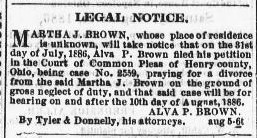
Democratic Northwest
and Henry County
News, Napoleon, OH,
5 August 1886.
Note: This notice was
also published in the
same newspaper in
different issues through
August and September
of 1886.

Alva P. Brown and
Martha J. Brown,
Democratic Northwest
and Henry County
News, Napoleon, OH,
7 October 1886.
Louisa (Thoman) Brown
James Ennis Brown
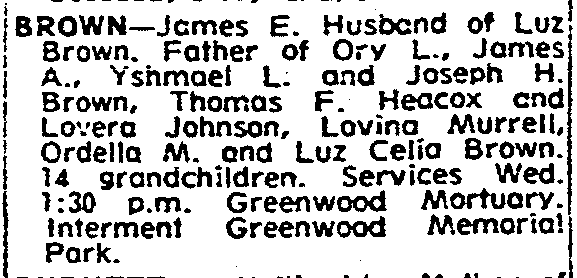
E. Brown, San Diego
Union (San Diego),
9 February 1960.
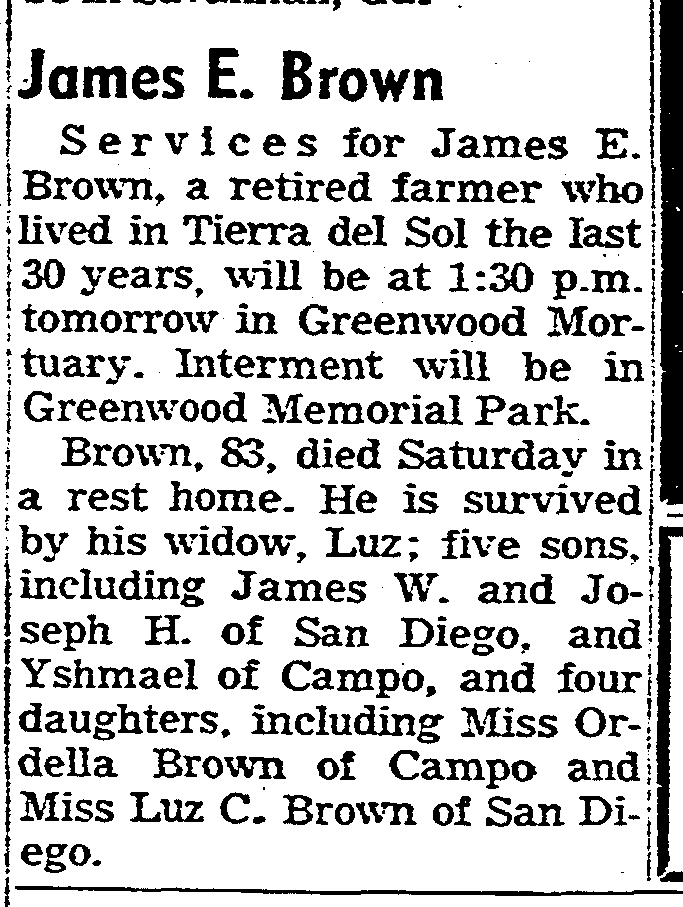
E. Brown, San Diego
Union, 9 Feb 1960,
p. 12.
Ada Jane (Arnold) Ennes

and grocery,
Albuquerque Morning
Journal (Albuquerque,
NM), 23 August 1921.
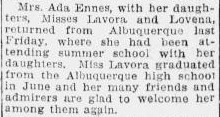
Ennes and daughters
returning from
Albuquerque,
Albuquerque Morning
Journal (Albuquerque,
NM), 4 August 1922.
Luz (Bedoya) Brown
The San Diego Union-Tribune:
Tuesday, January 4, 1994
BROWN -- Luz
BROWN -- Luz, Born in Caborca, Mexico, settled with her family in Ajo,
Arizona in 1923. She and her late husband James Ennis Brown moved to
San Diego County in 1930 and homesteaded property near the community
of Boulevard. Living in the area she raised her family of five
children: James, Ordella, Y. Louis and Joseph Brown and Luzcelia
Rankin. Known for long time as the "Candy Cottage Lady", she owned and
operated the Historic Wisteria Candy Cottage in Boulevard. Mrs. Brown
is survived by her four children, brothers and sisters Ismael and
William Bedoya, Estella Beckwith and Carmen Crites, nine grandchildren
and two great grandsons, many nieces and nephews too numerous to
mention. Beloved mother, friend and neighbor to many died Dec. 31,
1993 in La Mesa after a lengthy illness. Visitation Tues., (today) 12
to 9 p.m. Greenwood Mortuary. Services Wed. 10 a.m. St. Martin's
Catholic Church, La Mesa. Interment Greenwood Memorial Park.
Source: The San Diego Union-Tribune, obituary for BROWN -- Luz,
GenealogyBank.com
(https://www.genealogybank.com/doc/obituaries/obit/1351ACDB3B52AD10-1351ACDB3B52AD10
: accessed 4 April 2021)
Friday, January 7, 1994
Luz Brown, 85 'Candy Cottage Lady' of Boulevard
Luz Brown, whose charming, historic Wisteria Candy Cottage in
Boulevard drew visitors and mail orders from around the world, died
Dec. 31 at Community Convalescent Hospital in La Mesa after a long
illness. She was 85.
Mrs. Brown was affectionately known as "the Candy Cottage Lady" during
the two decades she owned and operated the store, which is revered for
items such as homemade candy turtles, divinity and pecan rolls. She
was the third owner of the business, which opened in 1921 in a former
one-room schoolhouse along Old Highway 80 in the East County mountain
town an hour's drive east of downtown San Diego.
Luzcelia Rankin, Mrs. Brown's daughter, learned from her mother the
secrets of making the more than 100 varieties of hand-dipped
chocolates and other candies concocted in the decades-old copper
kettles. Rankin and her husband took over the business eight years ago
so her mother could retire -- at least part time.
At that time, Rankin realized that none of the centuries-old recipes
she and her mother learned from previous owners had been written down.
Rankin jotted down the processes for making more than 100 candy
varieties. She checked measurements and temperatures and eventually
compiled the recipes.
Mrs. Brown, like her daughter, used antique recipes and only the
finest ingredients -- macadamia nuts grown in Hawaii, the best
chocolate, and butter and eggs fresh from the farm.
"We used to have families ordering candy to send to their sons who
were away during the Korean and Vietnam wars," said her son Joseph.
"People ordered candy from all over the United States."
But the best part of growing up with a candy cottage in the family
"was getting to help yourself if you stopped by," he said.
The charm, Joseph Brown said, is a family business that makes, melts,
roasts, dips and boxes about 95 percent of its own candy. With
chocolate production generally a largely mechanized, impersonal
endeavor today, there is undeniable charm to the old-fashioned
tradition -- not to mention the taste, customers say.
Mrs. Brown was born in Caborca, Mexico, and settled with her family in
Ajo, Ariz., in 1923. She and her late husband, James, moved to San
Diego County in 1930 and homesteaded near Boulevard.
While raising five children, Mrs. Brown worked part time at the candy
store and learned from the owners the secrets of making the cottage's
sumptuous treats. In 1960, after the owners died, she made a small
down payment and took over the operation -- and gained a loyal
following.
In addition to her son Joseph and her daughter Luzcelia, survivors
include another son, James.
Services were held Tuesday.
Source: San Diego Union-Tribune, obituary for Luz Brown, 85 'Candy
Cottage Lady' of Boulevard , GenealogyBank.com
(https://www.genealogybank.com/doc/obituaries/obit/129A74B9078E8260-129A74B9078E8260
: accessed 4 April 2021)
Luz (Bedoya) Brown's family candy business
Imperial Valley Press:
Family business cranks out mouth-watering confections
December 03, 2001|By LAURA MITCHELL, Staff Writer
BOULEVARD — An 80-year-old business, set in this small mountain town,
would have made a perfect setting for Norman Rockwell to paint.
Here a family has long held the tradition of making and selling
handmade candies at the Wisteria Candy Cottage.
The candy cottage sells its own mouth-watering confections of
chocolate truffles and turtles, caramels, fudge, nut brittle, taffy,
toffee and other sweets. It takes about an hour to reach the cottage
from El Centro, traveling through the mountains in eastern San Diego
County to the small town of Boulevard south of Interstate 8.
"We don't do a lot of advertising or slick things. We just do a good
job and get to know people," said owner Gordon Rankin. "Some would say
we're outmoded, but we have a lot of loyal customers in the (Imperial)
Valley."
Rankin and his wife, LuzCelia, own the Wisteria Candy Cottage, which
has been in the family since 1960, when LuzCelia's mother, Luz Brown,
bought it.
To make chocolate turtles, Rankin pours puddles of melted caramel over
a pan filled with nuts. After the caramel cools, he does the same
thing with melted chocolate.
It's fairly easy to measure the puddles to make turtles, Rankin said.
But, he joked, if you mess up, you just have to eat them.
The candy cottage makes pecan, almond, cashew and macadamia turtles.
Most of the candy comes from recipes handed down by Rankin's
mother-in-law.
Everything is handmade. There is only one machine, which is used to
make fondant, an ingredient for fudge and divinity, Rankin's daughter,
Dana Eacobellis, said.
Eacobellis is helping her father with the candy business because her
mother, LuzCelia, is sick.
LuzCelia Rankin's heart stopped for too long last June. She suffers
memory loss and is still recuperating. She and her husband, both 62,
want to retire and think it's time to hand the candy cottage onto the
next generation.
Eacobellis and her husband, Stan, plan to take over Jan. 1.
"There's a lot of satisfaction in handing the business down to the
next generation," Rankin said.
The Wisteria Candy Cottage was established in 1921 and changed
ownership several times until the 1940s, when a family named Wendell
took over, Rankin said. Luz Brown worked for the Wendells in the
mid-1940s and managed the business in the early 1950s, he said.
Brown bought the business in 1960 and it has been in her family ever
since.
"After 80 years, you have an awful lot of walk-in business," Rankin
said.
Before air conditioning came to the Valley, this town was a resort
area, Rankin said. In the summer, it's usually about 30 degrees cooler
here than it is on the Valley floor, he said.
That was when the little town of Boulevard had more shops and
restaurants, and Valley residents would move into nearby cabins or
camp out.
"People going to San Diego from the Valley and Yuma would stop here
because we were right off Highway 80," said Rankin. "When the highway
was moved to I-8, that hurt businesses here … for a little while,"
Rankin said. Then people realized the cottage was still in the candy
business.
Rankin said the candy cottage does 25 percent of its business at
Christmas.
It's just as prone to recession as any business, Rankin said, but he
thinks it has lasted because of its strong customer base.
"We get a lot of return customers. We just try to make a good product
and treat the customer the way they want to be treated. That kind of
customer base is a little more stable," Rankin said.
To find more information and directions to the Wisteria Candy Cottage
on the World Wide Web, visit www.candycottage.com or call (800)
458-8246.
>> Staff writer Laura Mitchell can be reached at (760) 337-3452
or lauramitchell9@yahoo.com
From Imperial Valley Press (El Centro, CA),
http://articles.ivpressonline.com/2001-12-03/caramels_24203237
The San Diego Union-Tribune:
The sweet spot of Boulevard
Candy shop owner continues work of grandmother, parents
By Anne Krueger
STAFF WRITER
November 22, 2005
BOULEVARD – Dana Eacobellis looks over a stained and faded recipe card
listing ingredients for the caramel her family has been making since
her grandmother's day.
She weighs the ingredients on a scale and pours them into a
55-year-old copper cooker: nine pounds of sugar, a pound of butter,
nine cans of evaporated milk.
The concoction boils and bubbles for half an hour until it turns into
a creamy golden goo. Eacobellis drops dollops of the caramel onto
trays filled with chopped pecans, cashews or macadamia nuts. Later,
each spot of caramel will be covered with chocolate to create rows of
confections.
This is how most of the candy is made at the Wisteria Candy Cottage:
by hand, using natural ingredients from recipes that have been in the
family for three generations.
"We still do it the old-fashioned way, the way my grandma taught me,"
said Eacobellis, 43.
The candy cottage is in a tidy white building off Old Highway 80 that
used to serve as a one-room schoolhouse for Boulevard. It's been a
candy kitchen since 1921.
Old Highway 80 used to be the main east-west route through San Diego
County, but travelers now have to make a slight detour off Interstate
8 to get to the shop. Few other businesses, other than an auto-repair
shop and a small grocery, have been able to survive on the lightly
traveled road.
Without much advertising or a central location, the store has become a
favorite East County spot, its reputation built on word of mouth.
The display case that takes up most of the tiny front room is filled
with such delights as truffles, fudge, divinity, peanut brittle and
pecan rolls. Glass jars of candy sticks line the windows. Except for
the sugar-free candies, it's a diabetic's nightmare.
Many who have heard of the store or have been coming there for decades
are willing to take the time to stop by. Eacobellis said about
three-quarters of her business comes from sales at the store, the rest
is by mail order.
Sugar shack
The Wisteria Candy Cottage is at 39961 Old Highway 80, about 68 miles
east of San Diego. The store is open 9 a.m. to 5 p.m. Mondays,
Wednesdays, Thursdays and Fridays, and 9 a.m. to 5:30 p.m. weekends.
It's closed Tuesdays. For more information, go tocandycottage.com.
Gina and Michael Weaver of Atlanta stopped by the shop Friday while
taking a drive along backcountry roads during a vacation in San Diego.
They decided to buy some peanut brittle and chocolate-dipped cherries.
"The lady at the cafe down the road said we need to stop," Michael
Weaver said.
Catherine Ellis, a New York playwright with a second home in Calexico,
said she's been coming to the candy store for about four years. She
doesn't eat candy herself, but lots of her friends in New York look
forward to her Wisteria candy gifts.
"I buy a lot," she said. "I get a big three-pounder that I'm sure
everything in it is wonderful because everyone seems to like it."
The candy cottage sells about 160 kinds of candy. There's no need for
preservatives – the candy doesn't last long enough.
"Everything is fresh here," Eacobellis said. "If it's peanut brittle,
it's gone in two days."
Eacobellis' grandmother, Luz Brown, began working at the store in the
1940s and purchased the business in 1950. Eacobellis' mother took over
the business in the 1970s, then her father ran the shop until he
turned it over to Eacobellis three years ago.
The store has been part of Eacobellis' life since she was a child.
During the busy holiday season, the whole family made and sold candy.
She remembers learning how to dip chocolate when she was 10, and
making peanut brittle as a teenager.
"When I walk in, sometimes the smell takes me back to childhood," she
said.
She said her mother brought candy to their La Mesa home only on
special occasions.
"She wanted it to be a treat. It was always a treat," Eacobellis said.
Eacobellis had a business cutting hair in Alpine when her father
offered her the store. She said she was ready for a change and a new
way to express herself.
The Wisteria Candy Cottage has been in business since 1921. Before it
became a candy kitchen, the building served as a one-room schoolhouse
for the community of Boulevard.
"I can create new candies. I can just do whatever I want and maintain
the quality," she said.
There is the occasional disaster. Eacobellis recalled the time she was
making a white, fluffy candy used in fudge and divinity. She was
making 50 pounds of the candy, heated to 300 degrees, when she
realized the machine used to blend it wasn't securely fastened.
"It started spinning and candy was flipping everywhere. We were here
for a week scraping the floors and the walls," she said. "We were
laughing a week later, but it wasn't funny when it happened."
Eacobellis is at the store six days a week, assisted by two full-time
and two part-time employees. Cali Nelson, 21, just started working
there and calls it her dream job. She remembers stopping by when she
was a child living in Alpine.
"We always liked to get the seafoam," she said. "Then we moved out
here and I was like, Yes! Only three miles from the cottage."
Eacobellis said she still enjoys sampling the confections she makes.
"I have a horrible sweet tooth," she said. "I eat candy every day. You
think you'd get tired of it, but I don't get tired of it."
William Henry and Bertha Amanda (Brown) Boyd
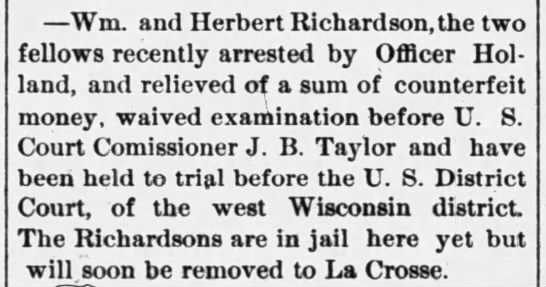
Herbert Richardson
waive examination,
Portage Daily
Register (Portage,
Wisconsin), 8 Aug
1888 (Wednesday),
page 3.
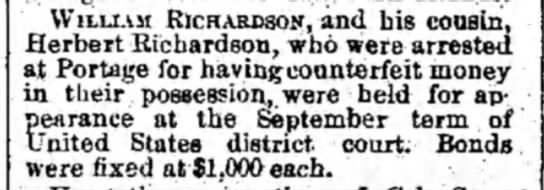
Herbert Richardson
held for September
court appearance,
The Weekly Wisconsin
(Milwaukee,
Wisconsin), 11 Aug
1888 (Saturday),
page 4.
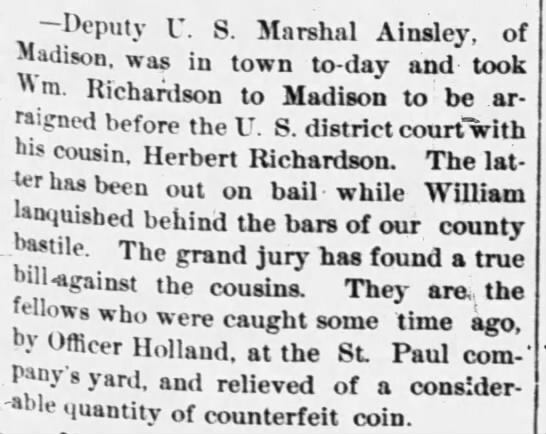
taken to Madison
to be arraigned,
Portage Daily
Register (Portage,
Wisconsin), 7 Sep
1888 (Friday),
page 3.
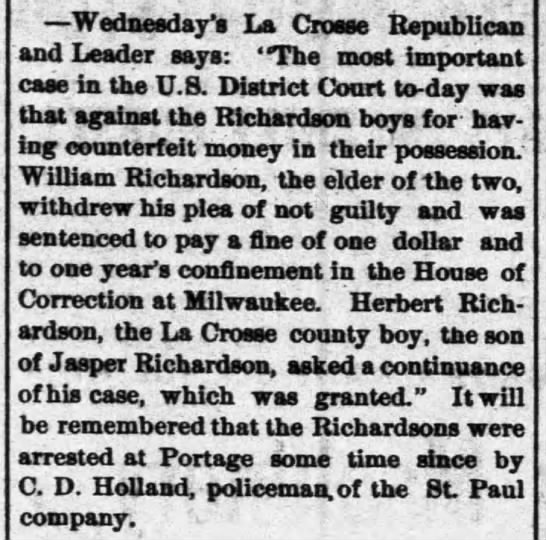
of William and
Herbert Richardson,
The Wisconsin State
Register (Portage,
Wisconsin), 22 Sep
1888 (Saturday),
page 3.
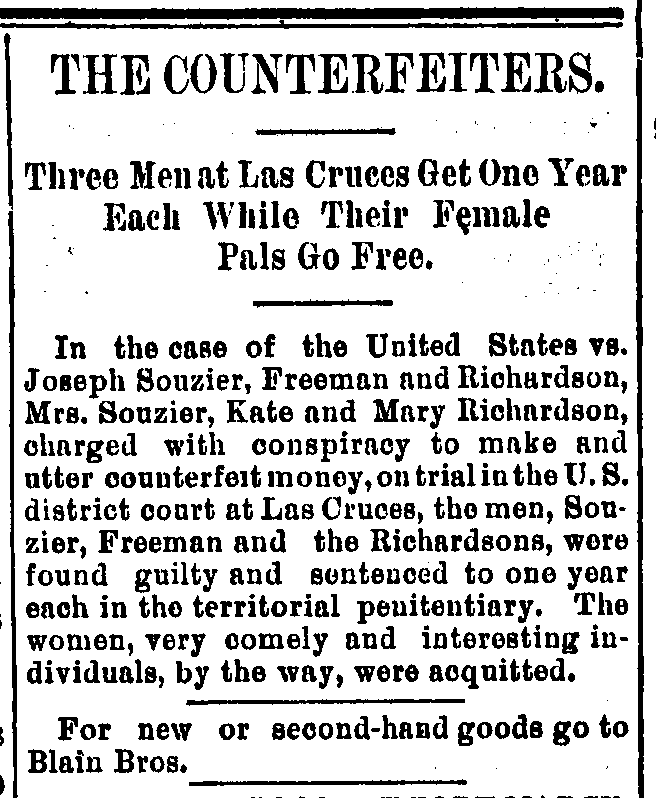
Santa Fe Daily New
Mexican (Santa Fe,
NM), 18 Sep 1893,p. 5.
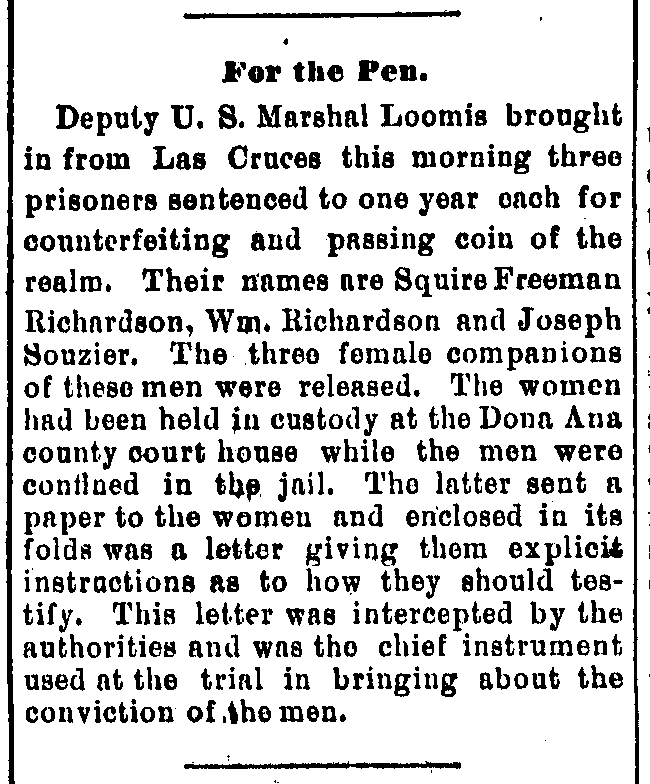
Fe Daily New
Mexican (Santa Fe,
NM), 25 Sep 1893,
p. 5.
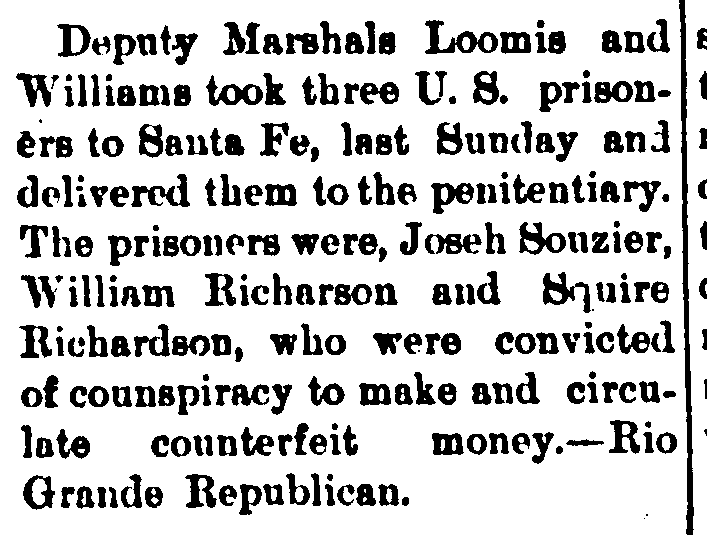
marshals delivering
the Richardsons and
Joseph Souzier to
the penitentiary,
Southwest Sentinel
(Silver City, NM),
10 Oct 1893, p. 5.
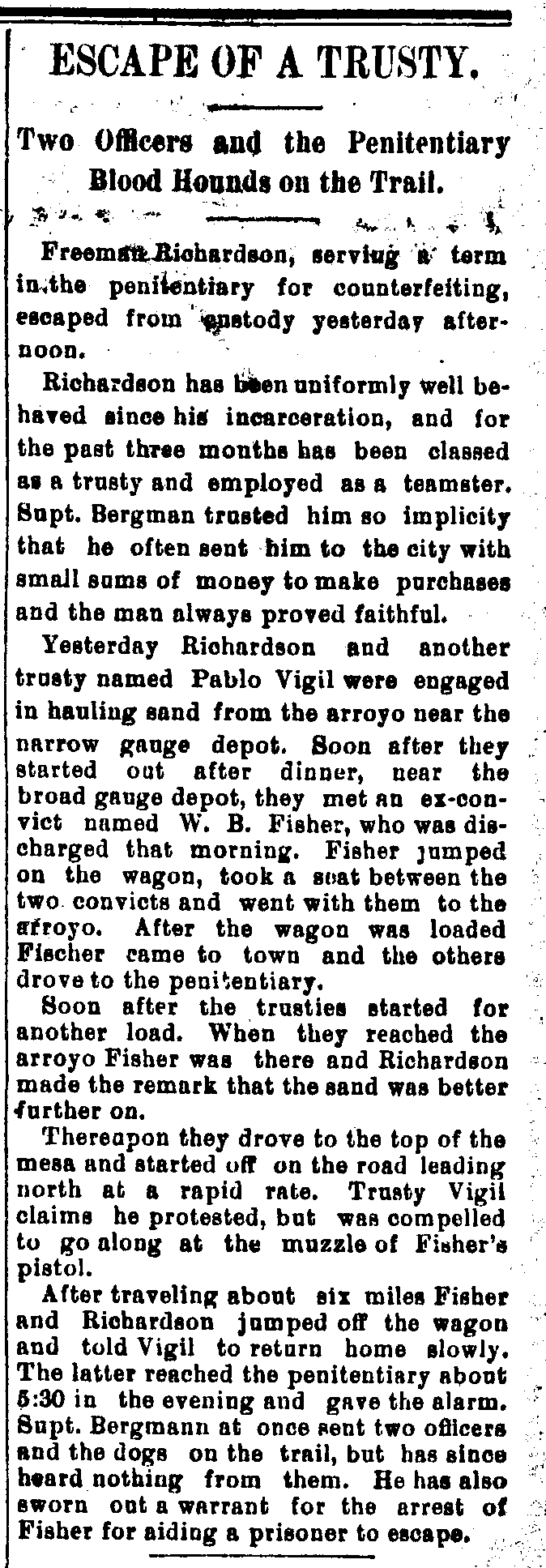
Santa Fe Daily New
Mexican, 31 Mar
1894, p. 2.

Independent
Democrat
(Las Cruces, NM),
4 Apr 1894, p. 4.

escape of Truman
Richardson,
Albuquerque
Weekly Citizen,
7 Apr 1894.
Note: The name
Truman seems to
be an error and
should read
Freeman or William.
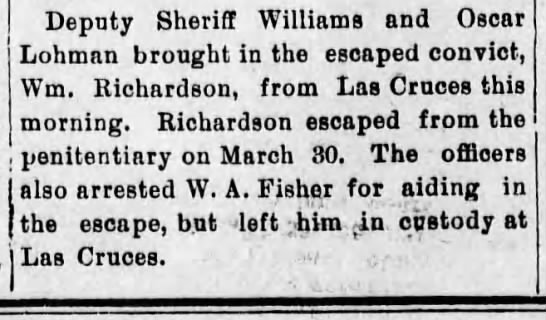
recapture of
William Richardson,
Santa Fe Daily New
Mexican, 10 Apr
1894.
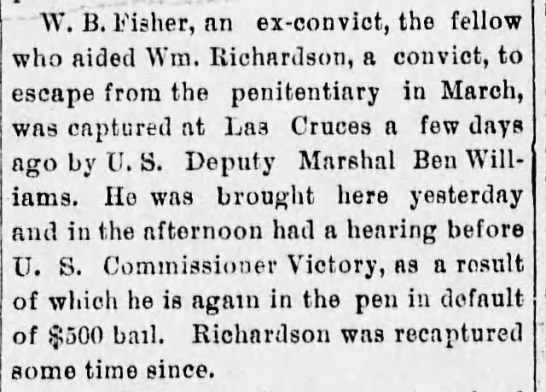
capture of W. B.
Fisher, Santa Fe
Daily New Mexican,
25 Apr 1894.

watermelons,
Arizona Republic
(Phoenix, AZ),
Tuesday 8 Jul 1924.

Arizona Republic
(Phoenix, AZ),
Tuesday 5 Aug
1924.
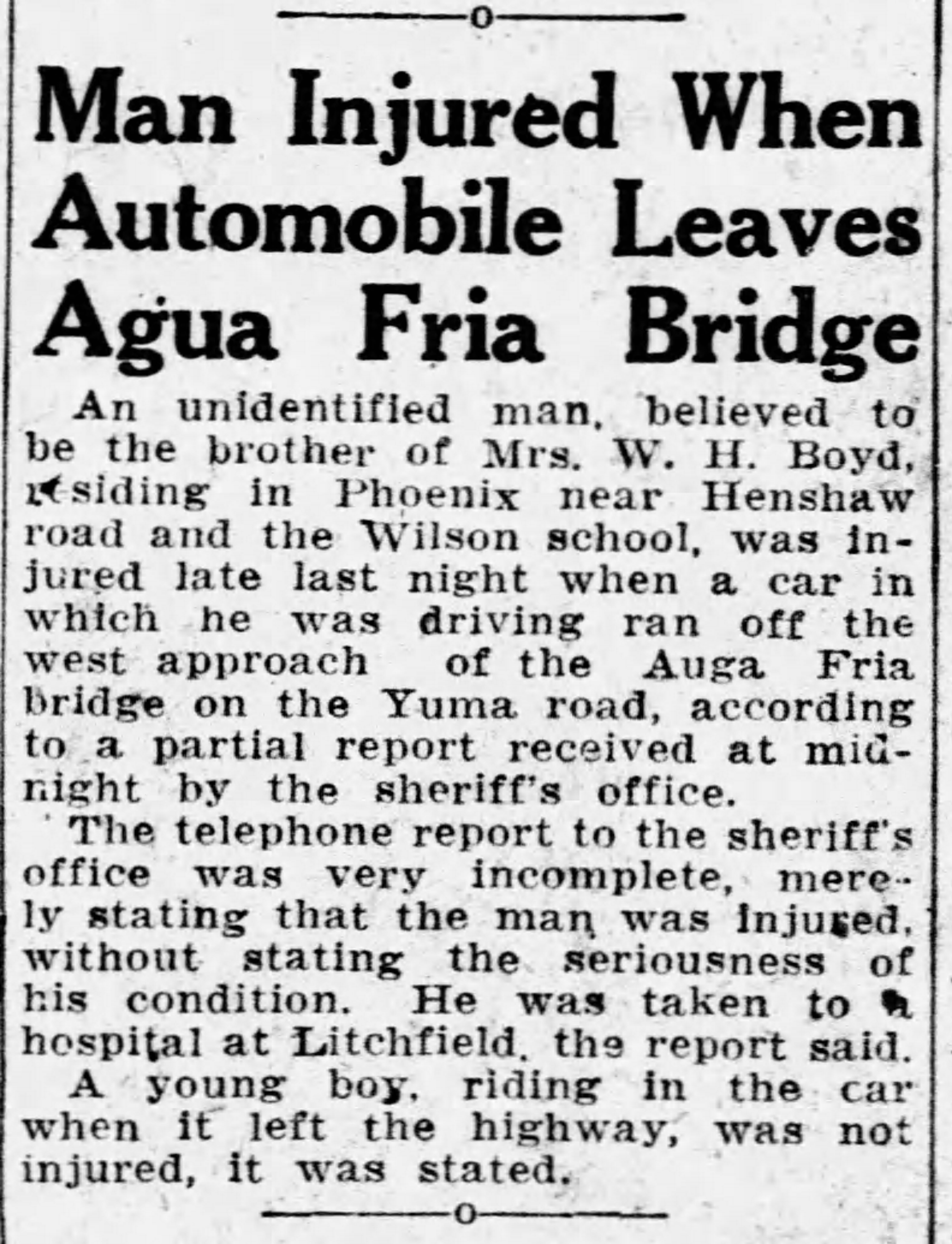

Arizona Republic
(Phoenix, AZ),
Friday 18 Dec 1925.
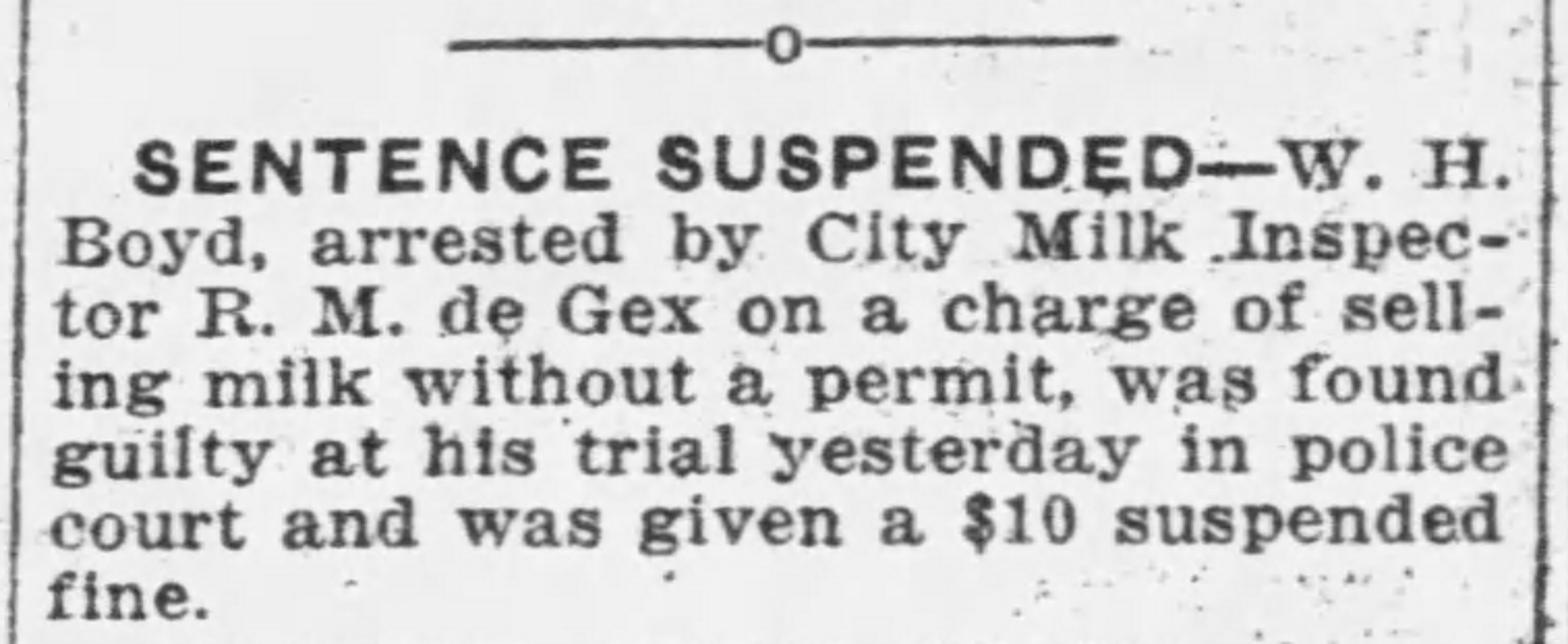
Suspended,"
Arizona Republic
(Phoenix, AZ),
Tuesday 24 Aug
1926.
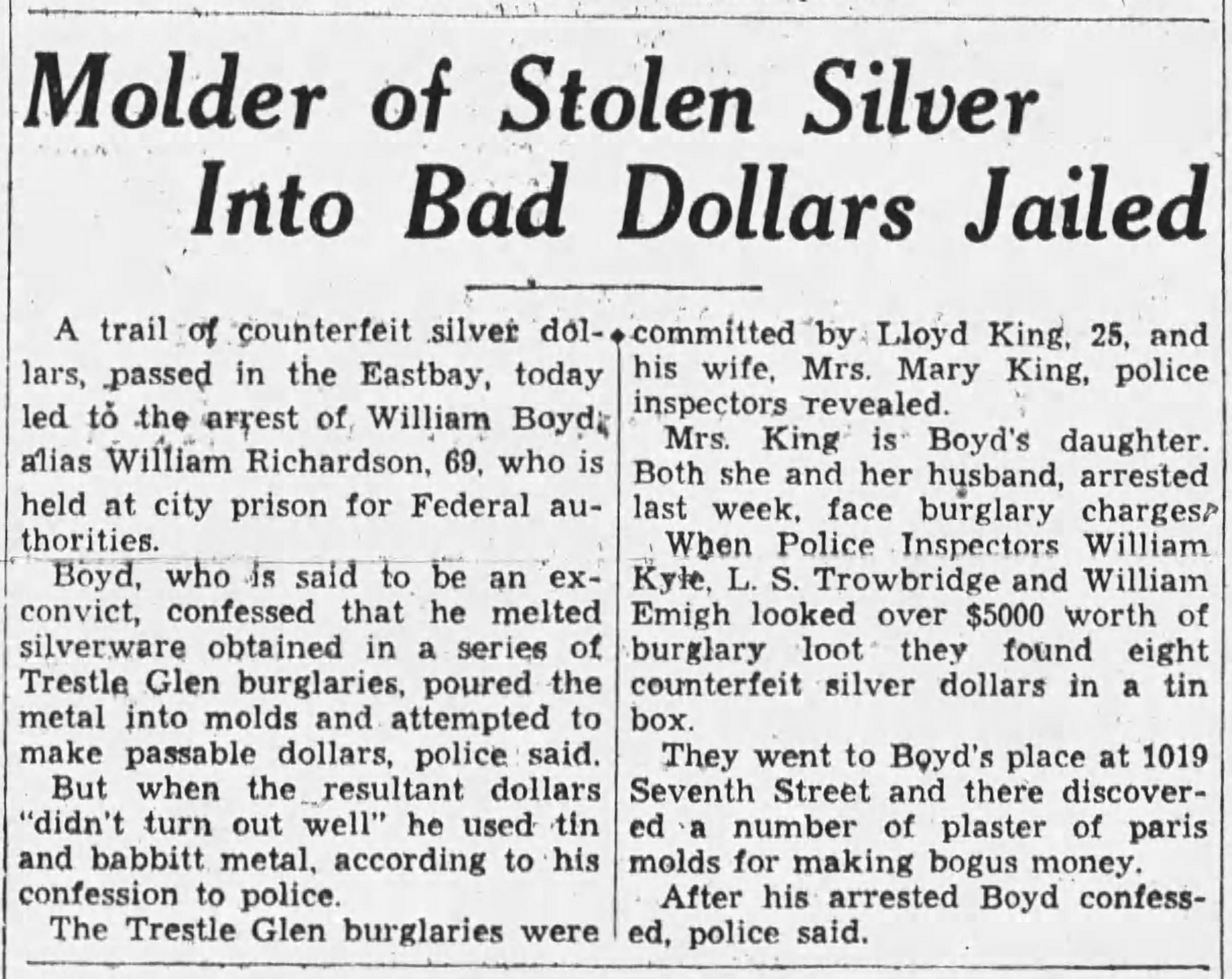
Silver into Bad
Dollars Jailed,"
Oakland Tribune
(Oakland, CA),
Monday 20 Feb
1933, p. 2.

as a Counterfeiter,"
The San Francisco
Examiner
(San Francisco,
California),
20 Feb 1933
(Monday), page 4.
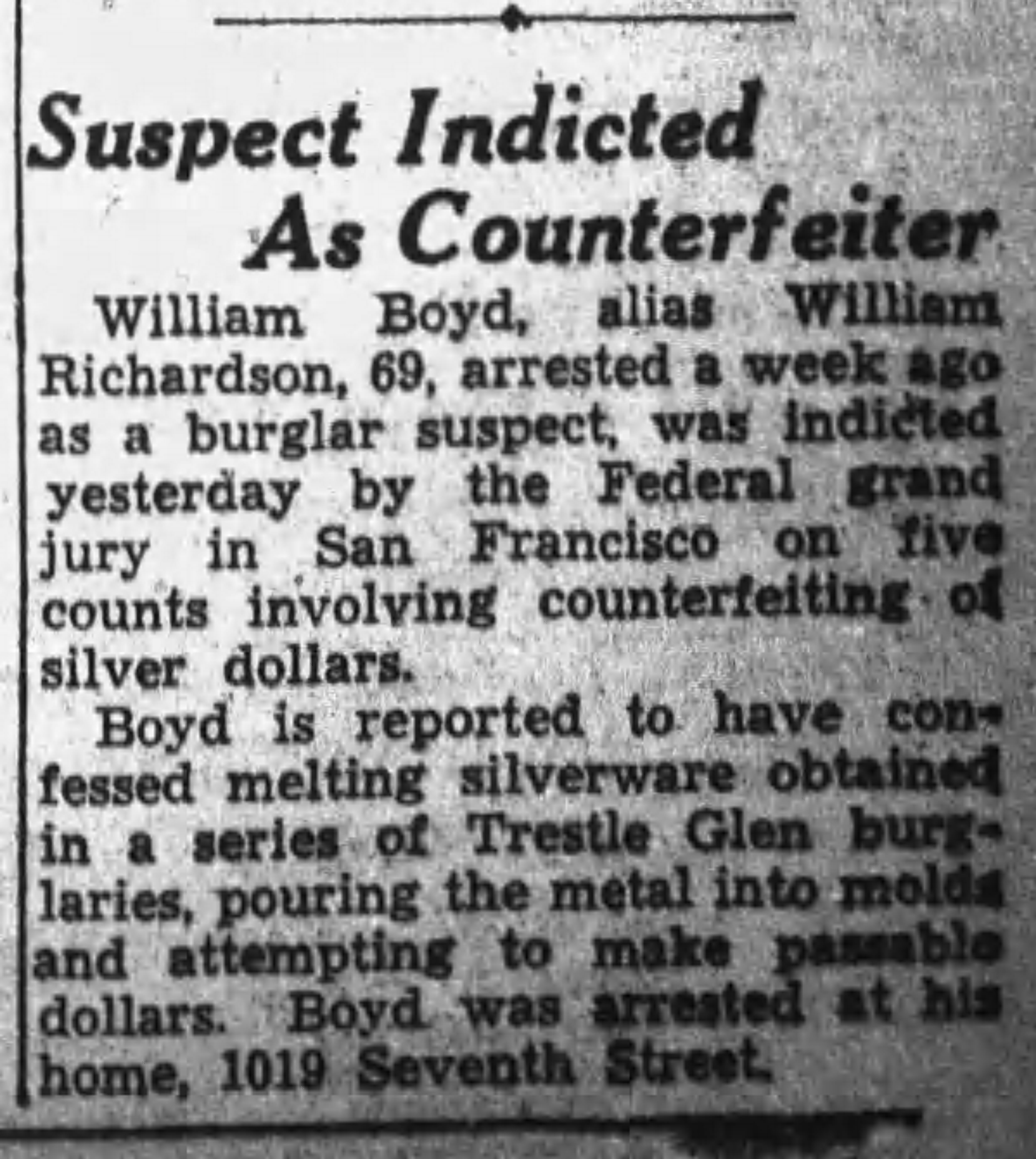
Counterfeiter,"
Oakland Tribune
(Oakland, CA),
Wednesday 1 Mar
1933, p. 30.
Otho Otholo and Ardella Margaret (Brown) (Chisholm) Eastwood
Homer Louis Brown

Burned to Death at
Ajo," Tucson Daily
Citizen (Tucson, AZ),
Thursday 28 May
1942, p. 2.
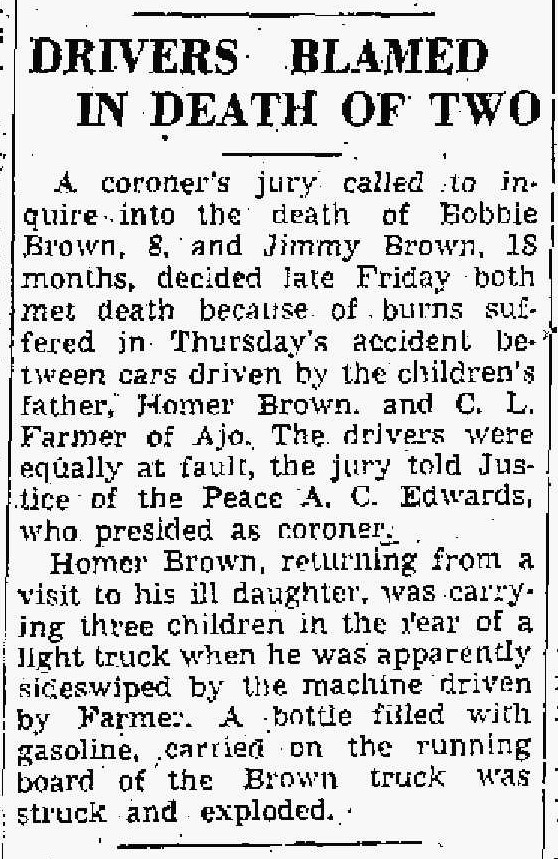
Death of Two,"
Tucson Daily Citizen
(Tucson, AZ), Friday
29 May 1942, p. 3.
Charles Alva and Mima/Mina Iva (Walker) Brown
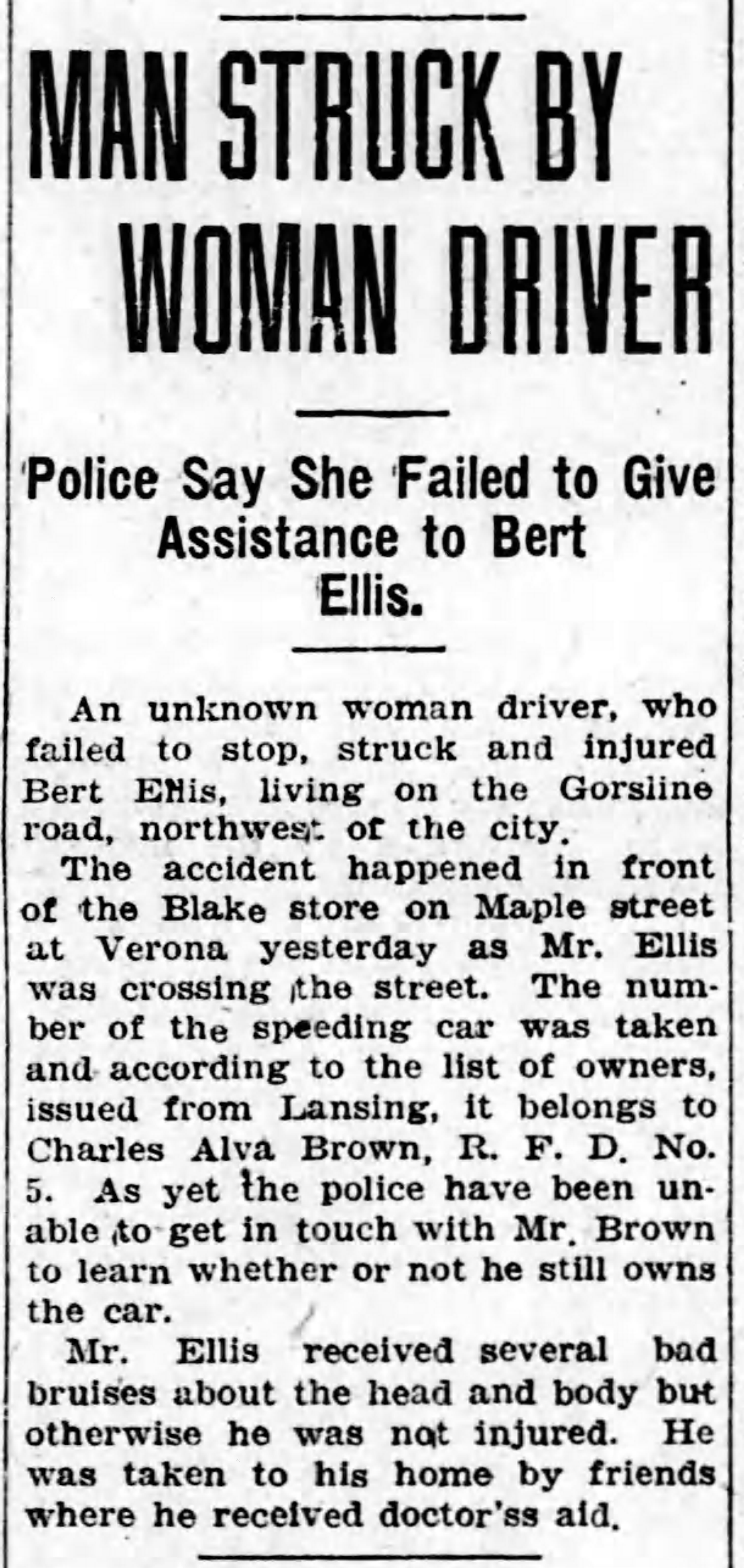


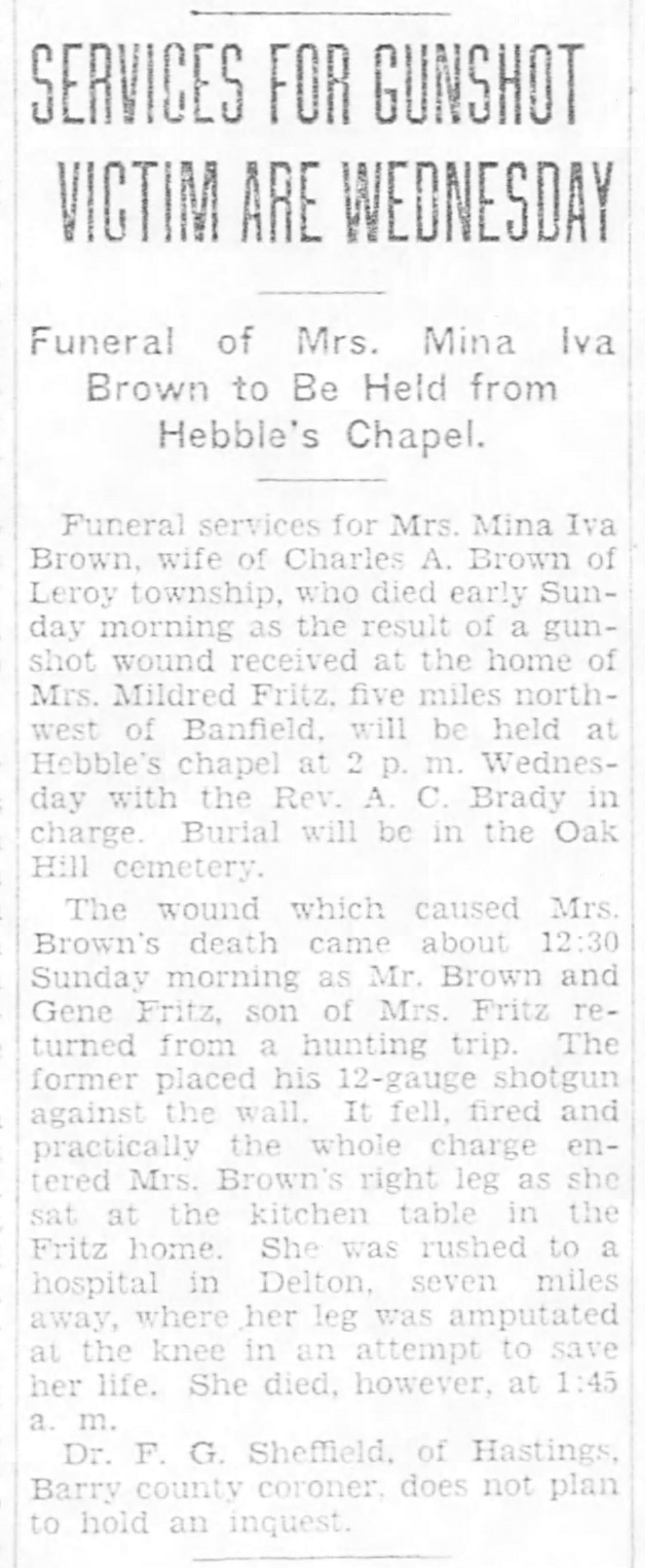
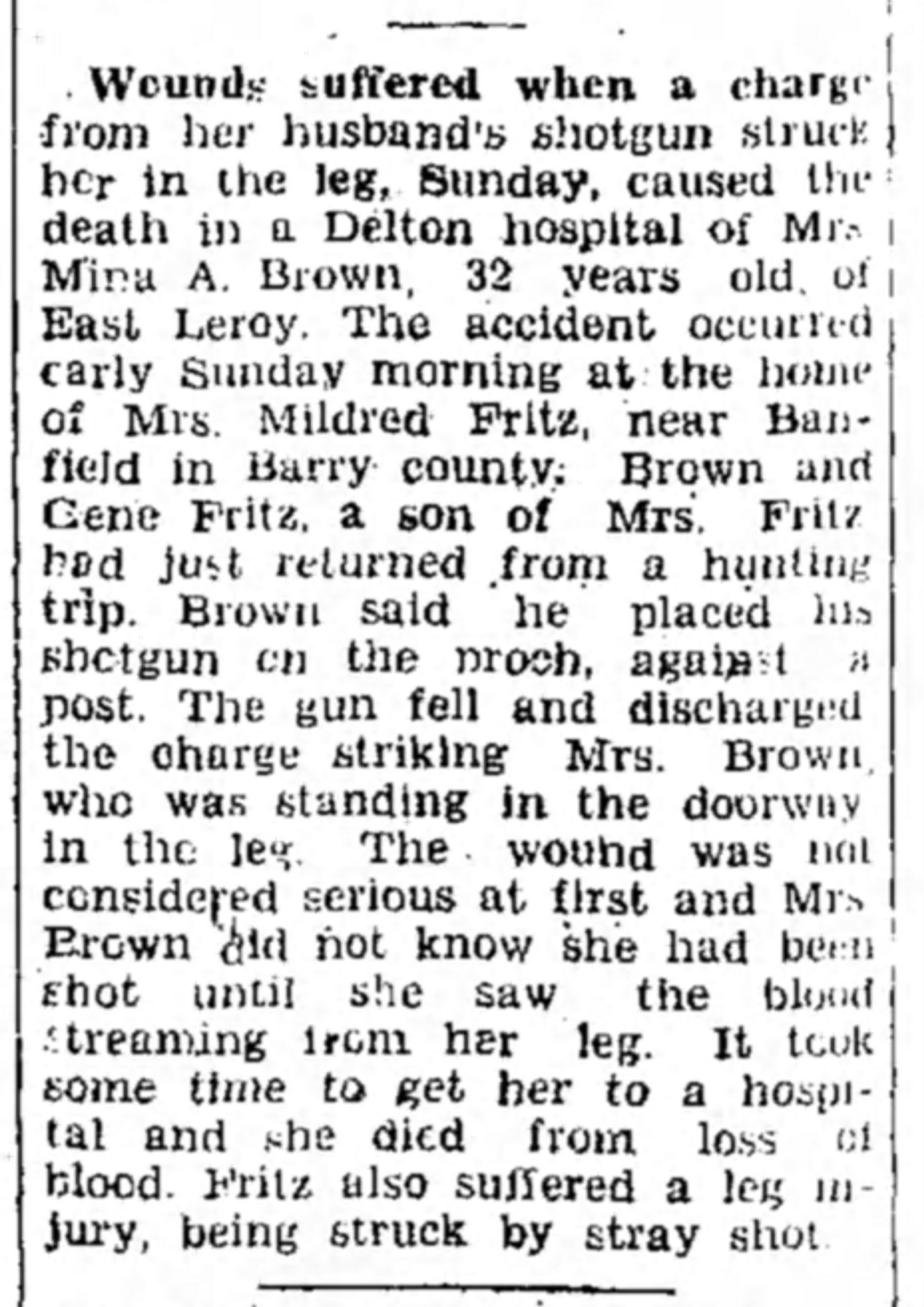
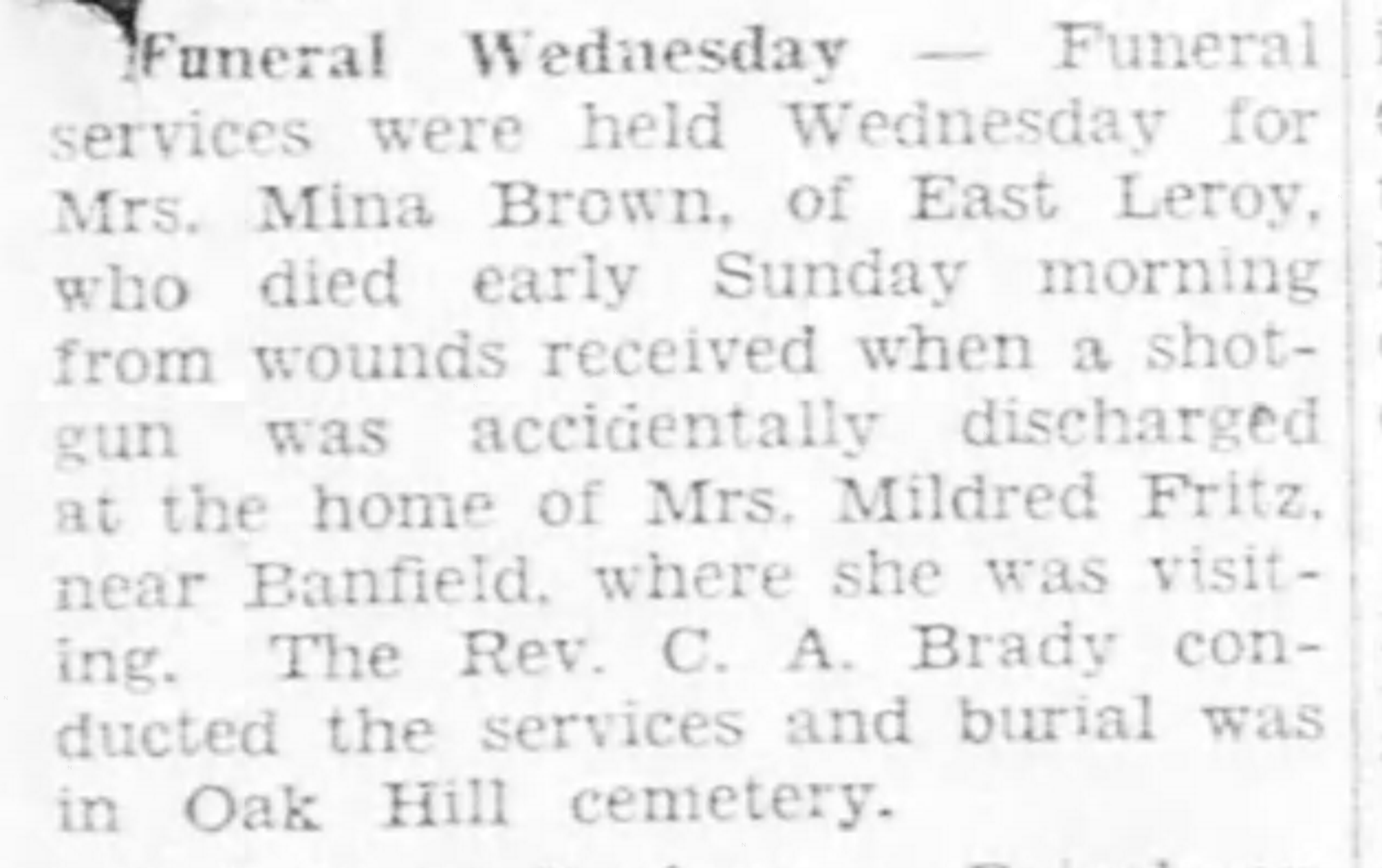
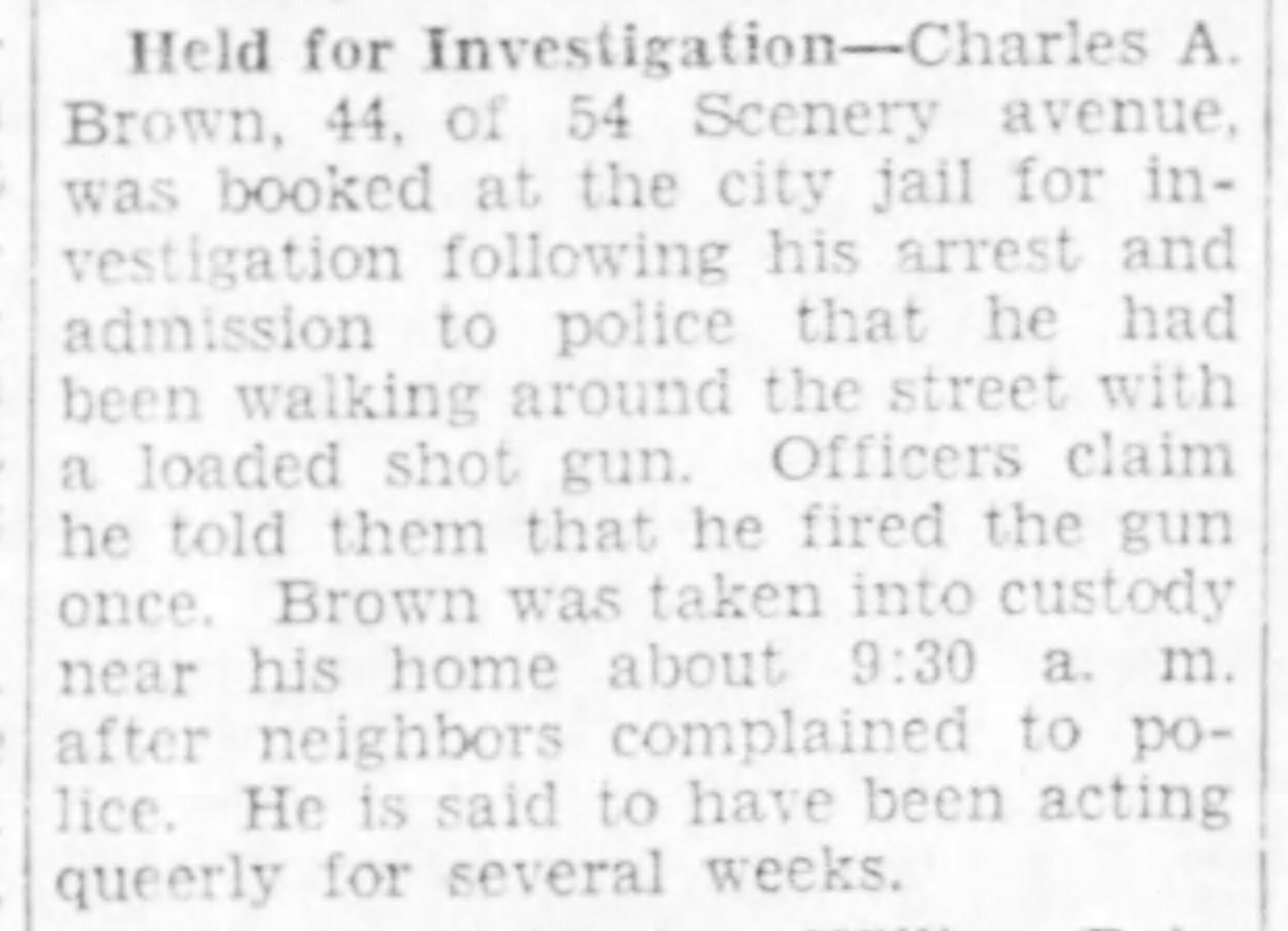
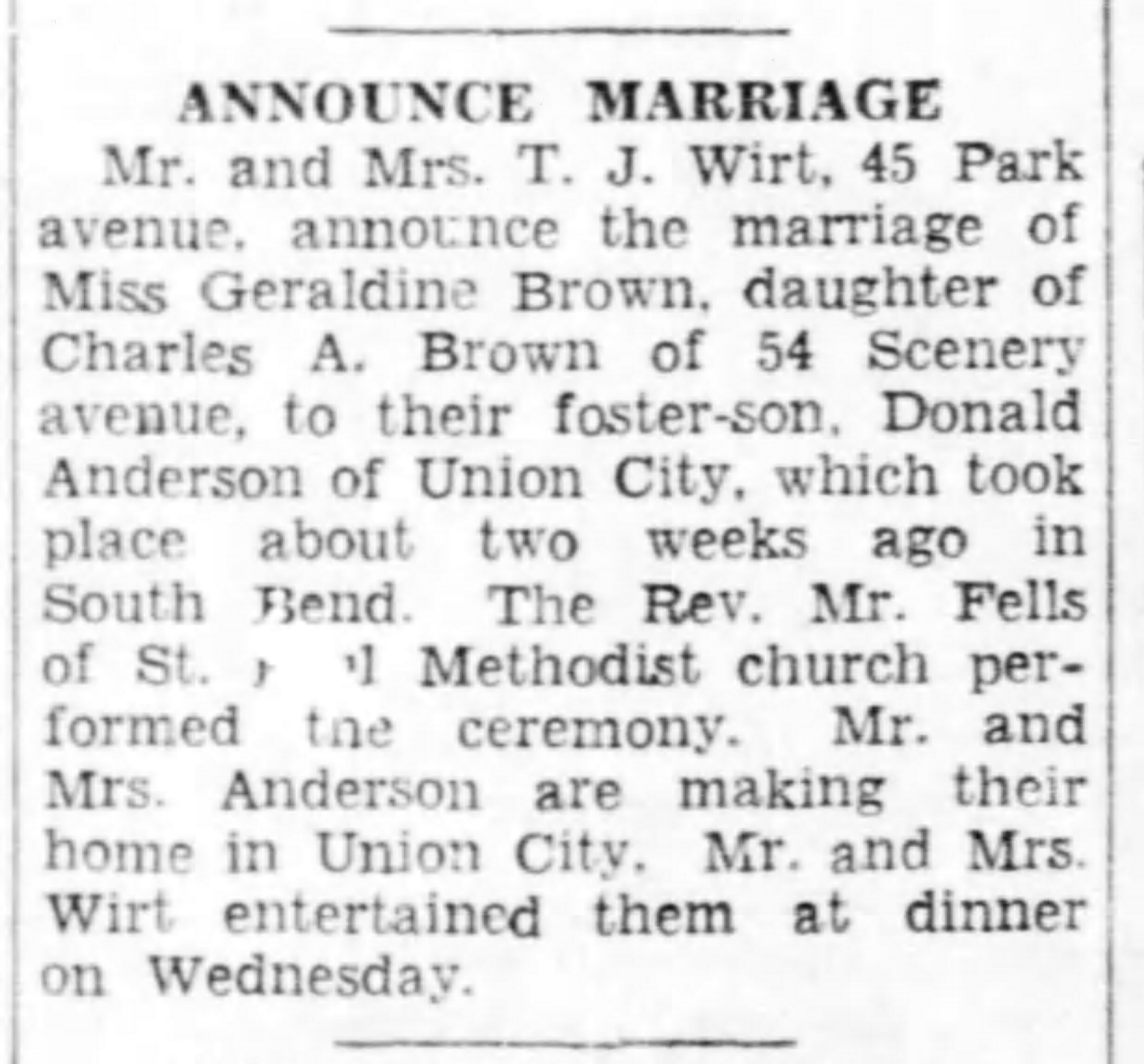
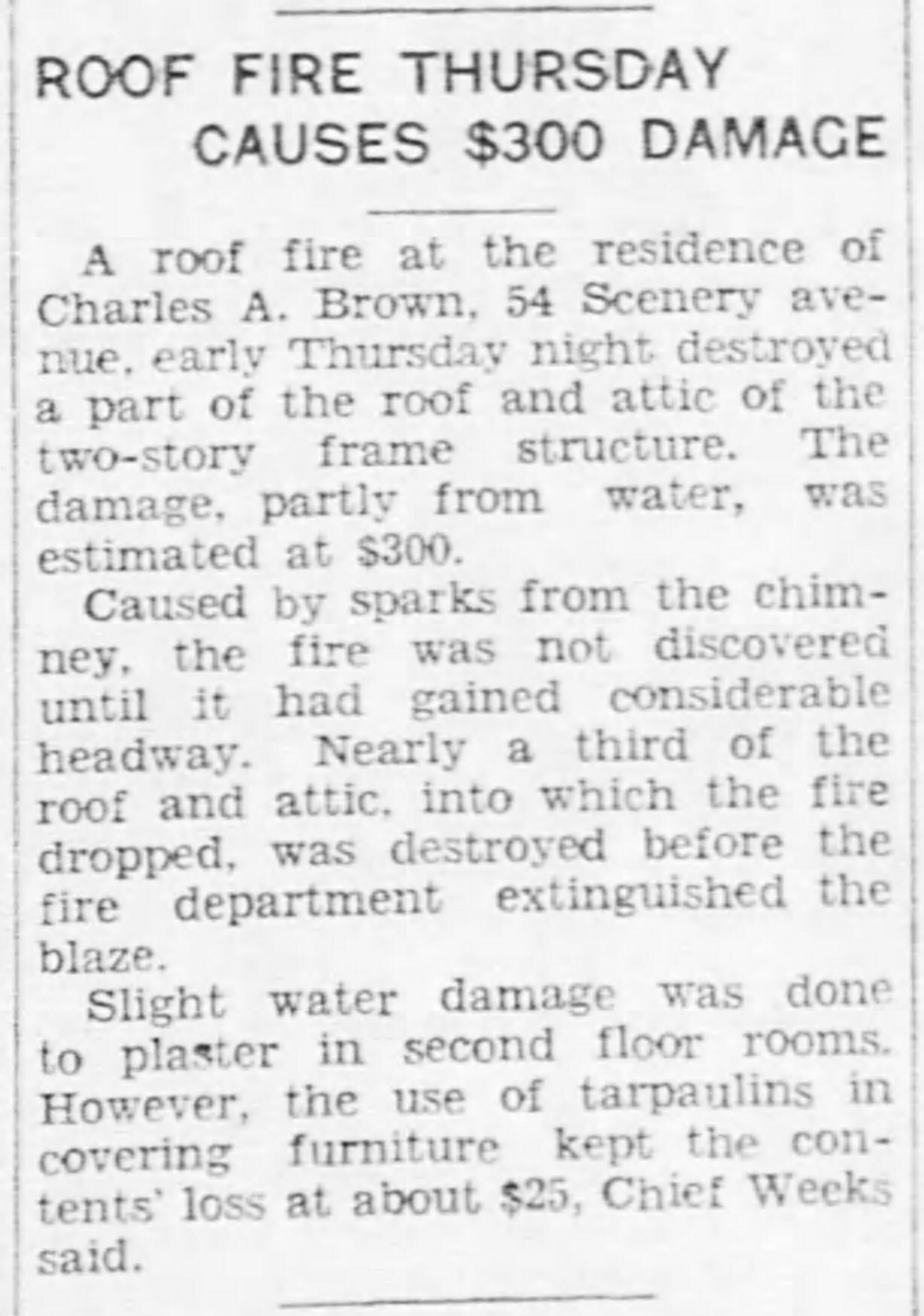
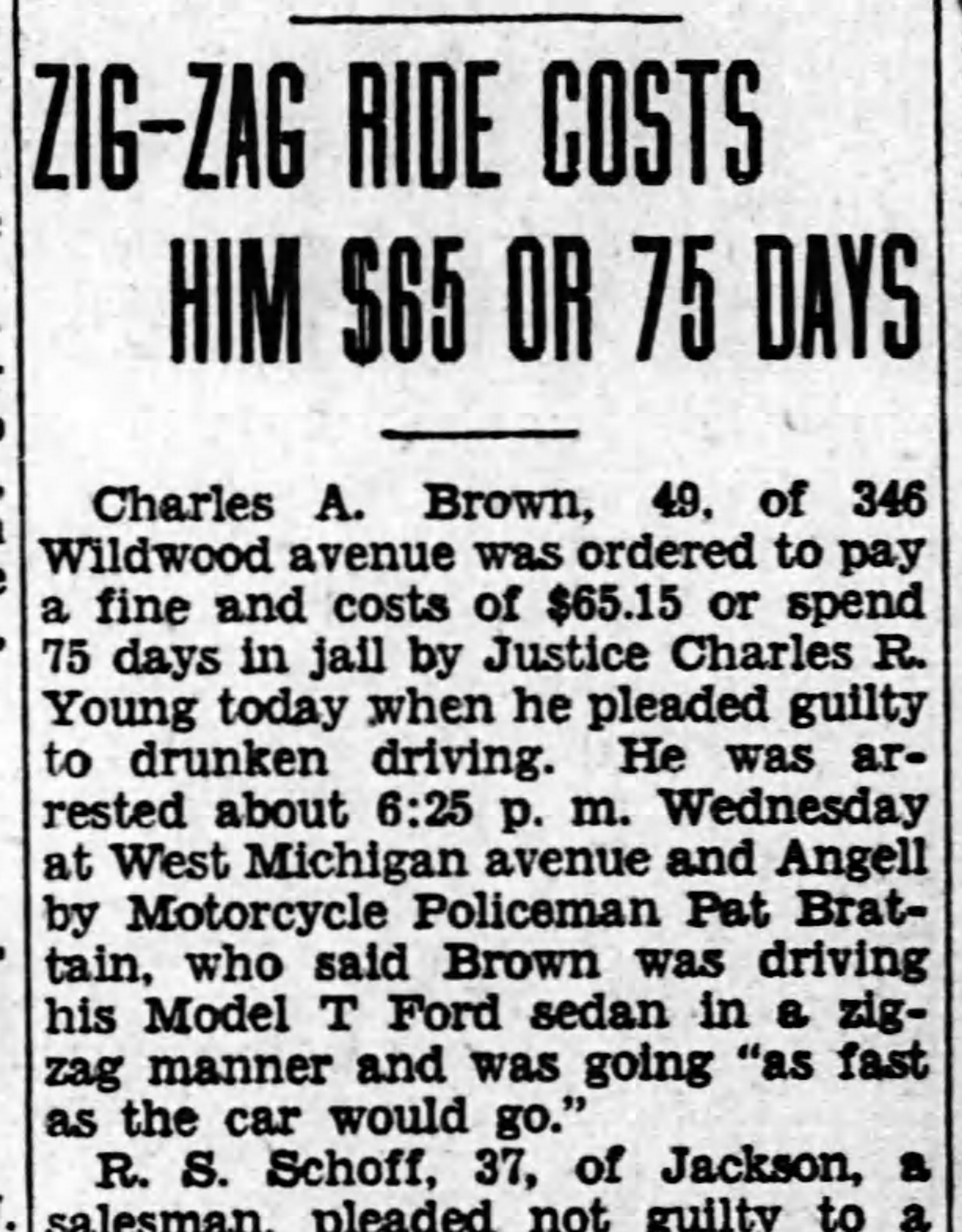
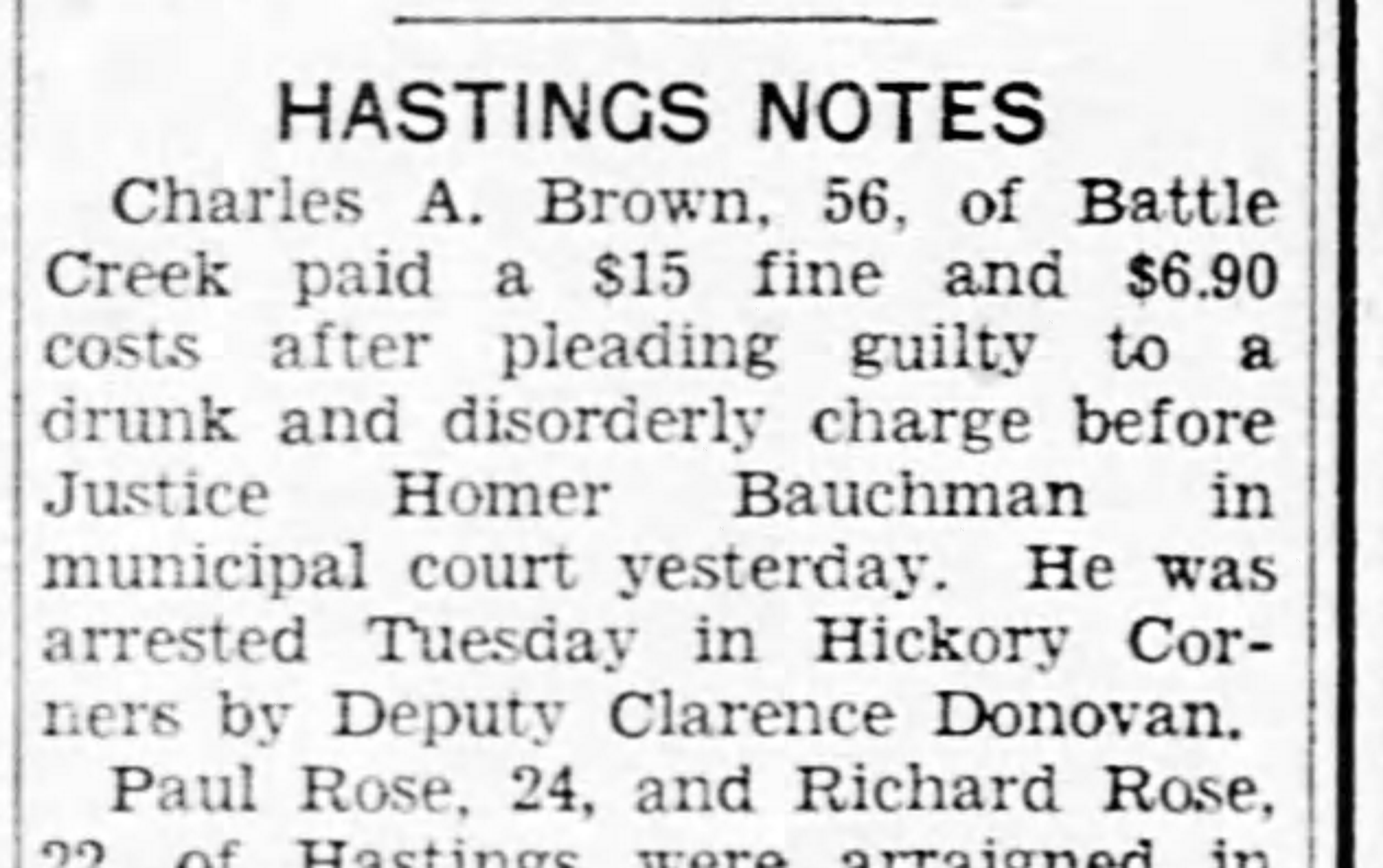
Battle Creek Enquirer
(Battle Creek, MI),
Thursday 25 April
1946.
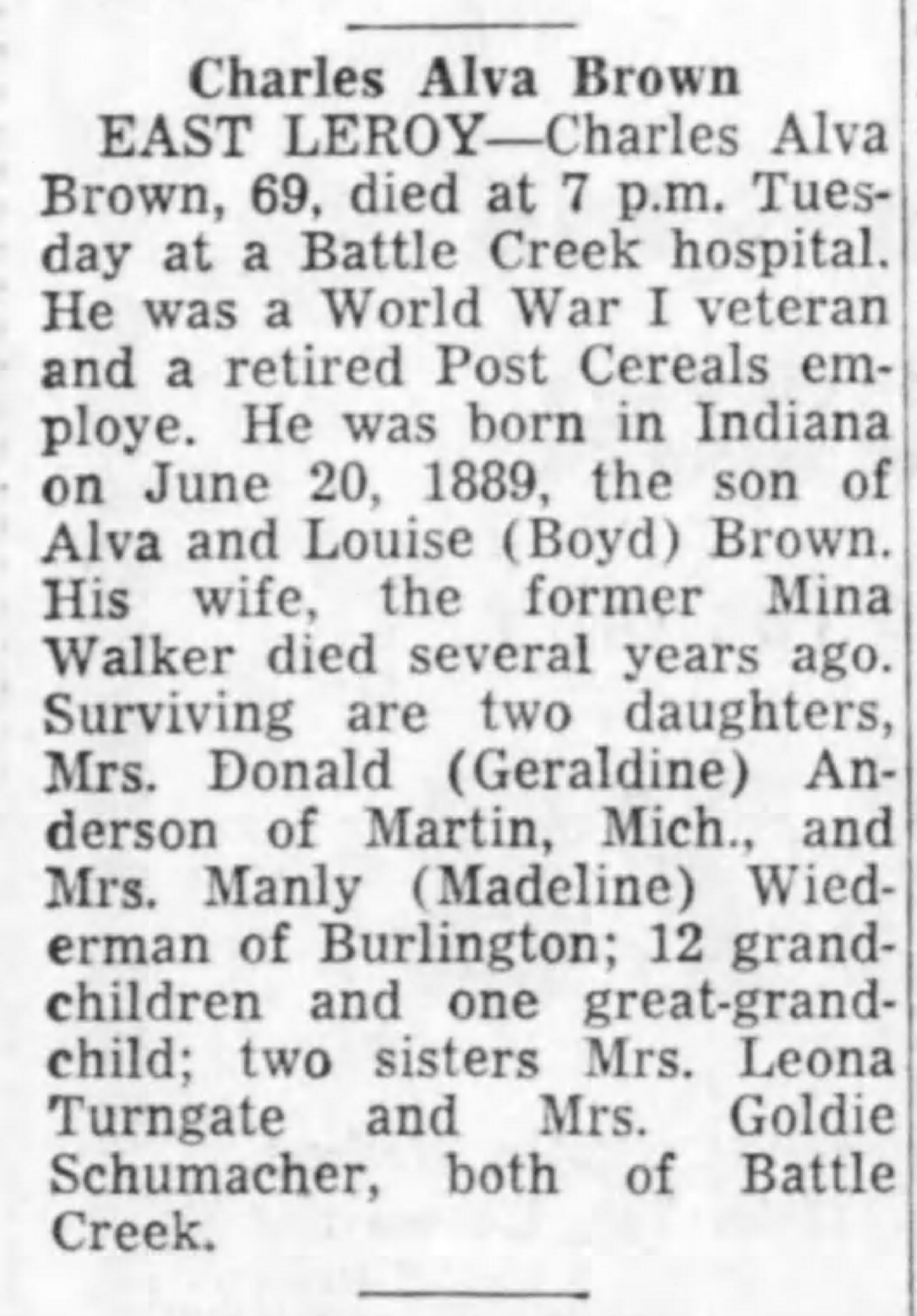
Alva Brown, Battle
Creek Enquirer
(Battle Creek, MI),
Wednesday 4 March
1959.
Goldie E. (Brown) (Rogers) (Moore) (Fuller) Shumaker
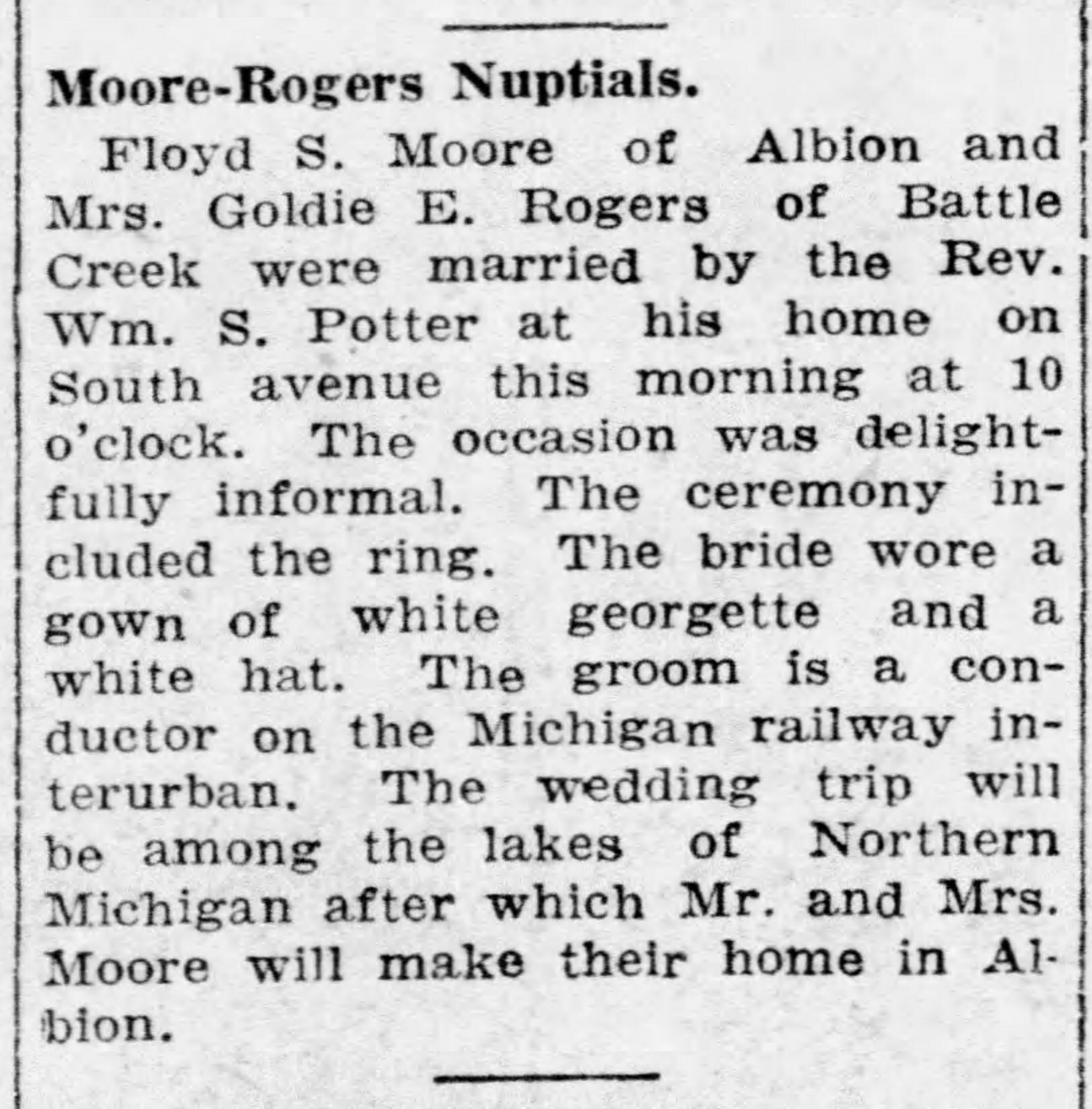
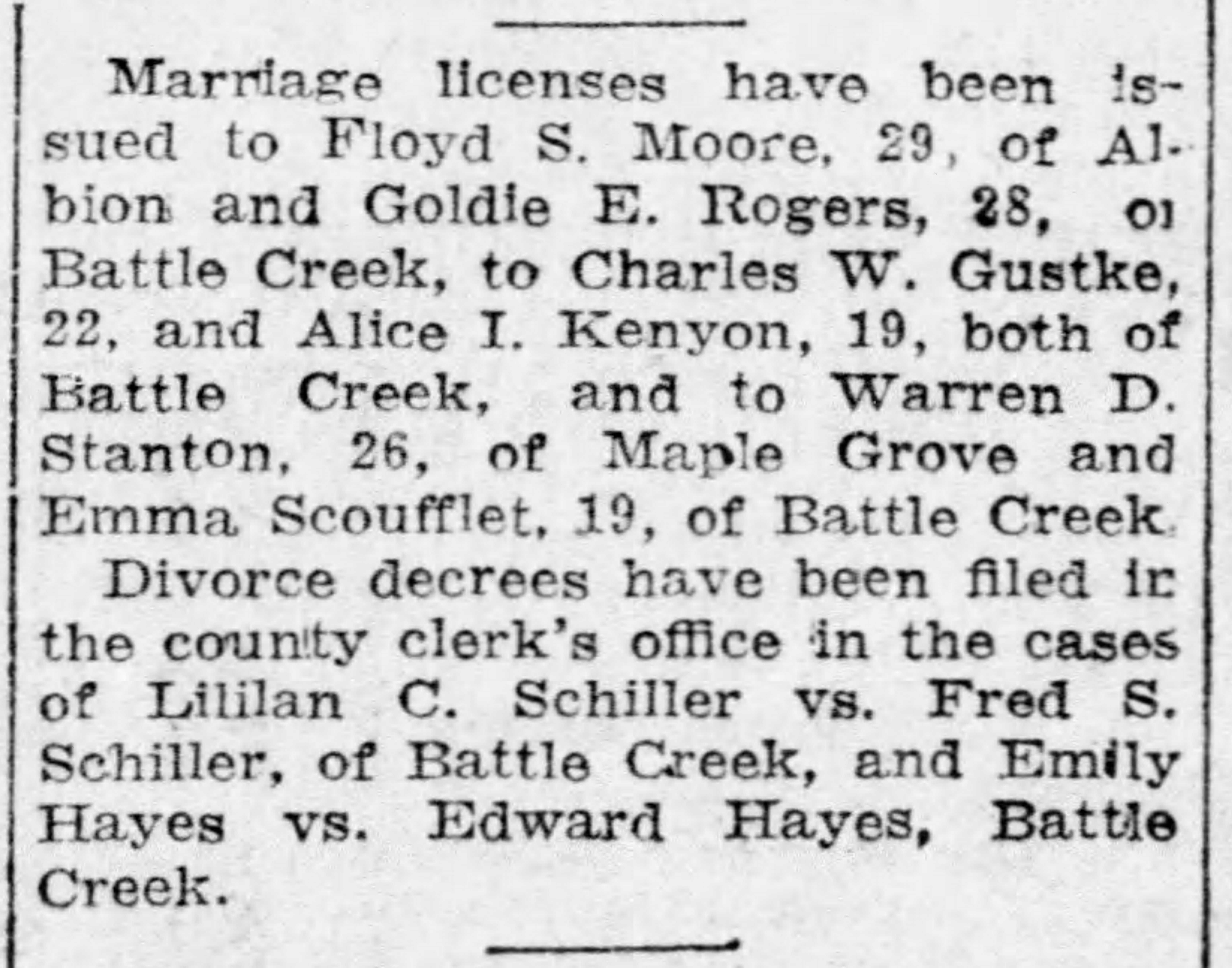
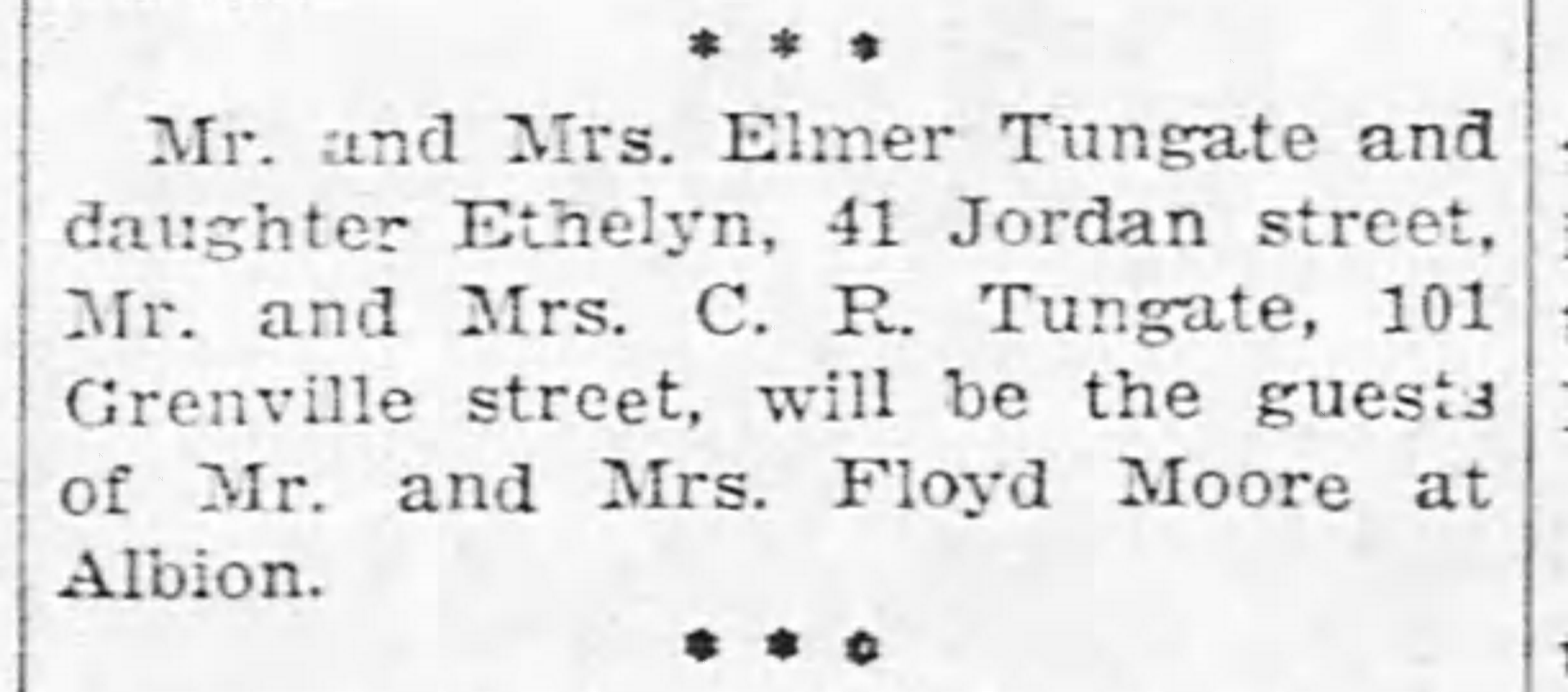
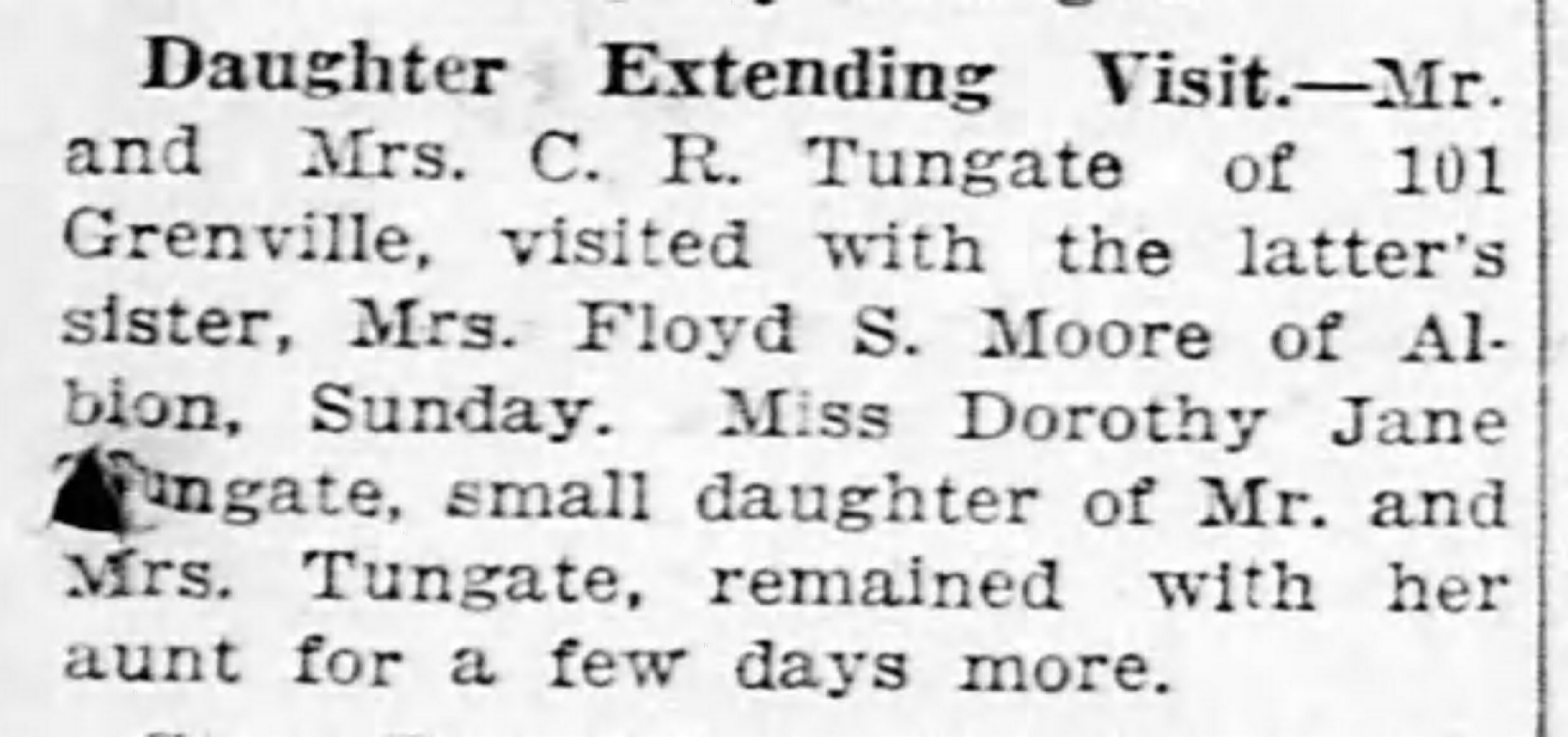
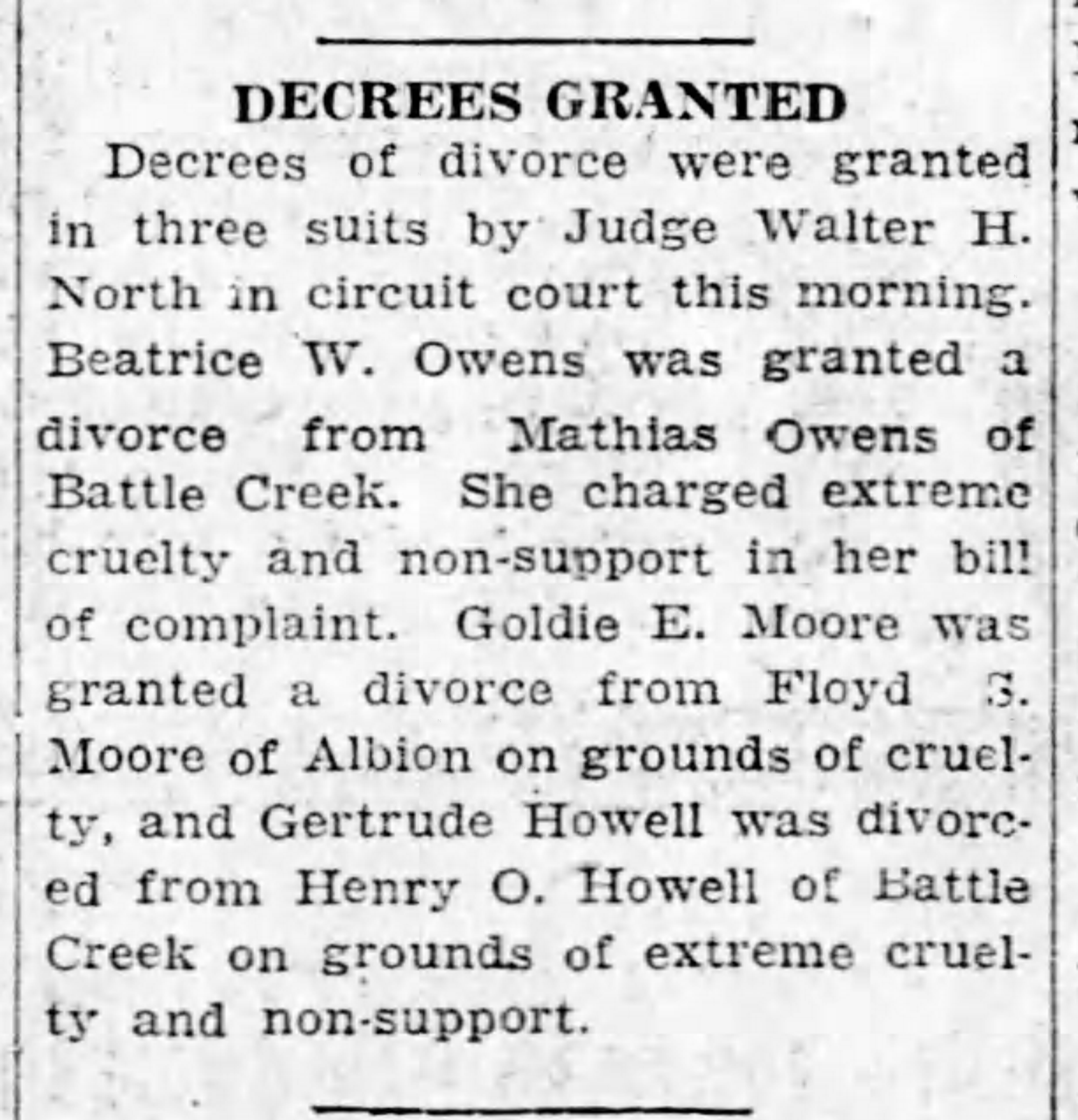
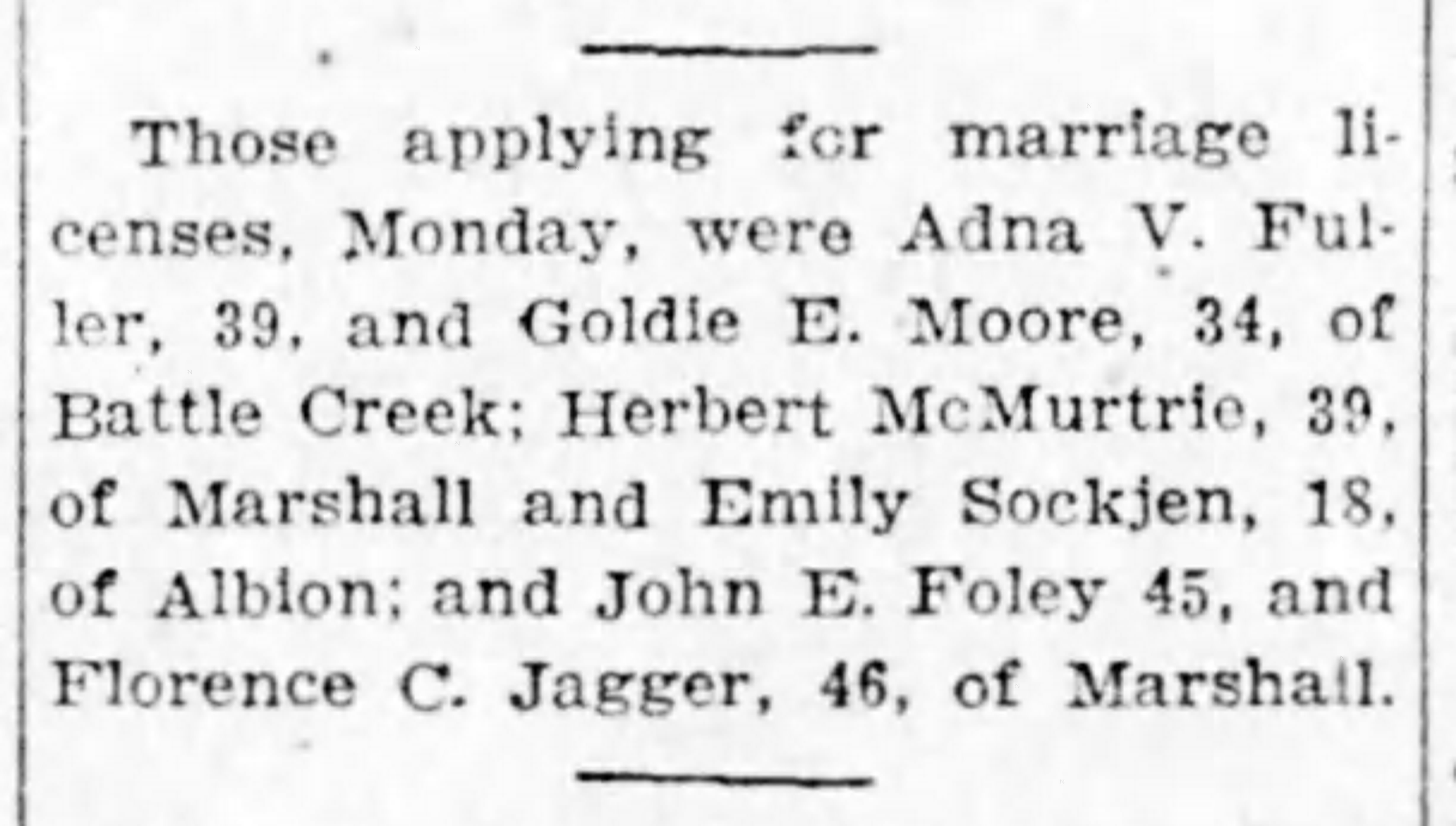
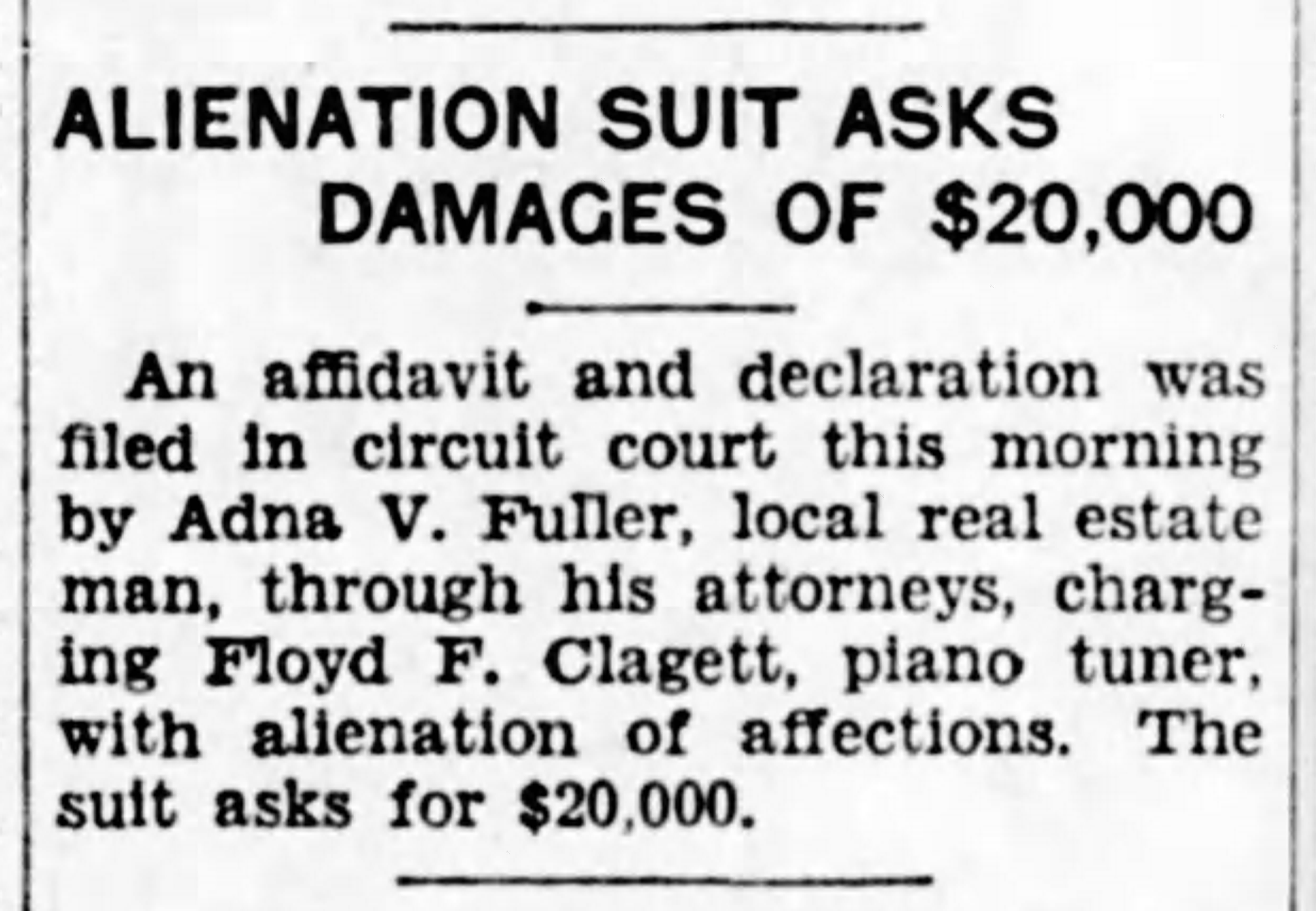
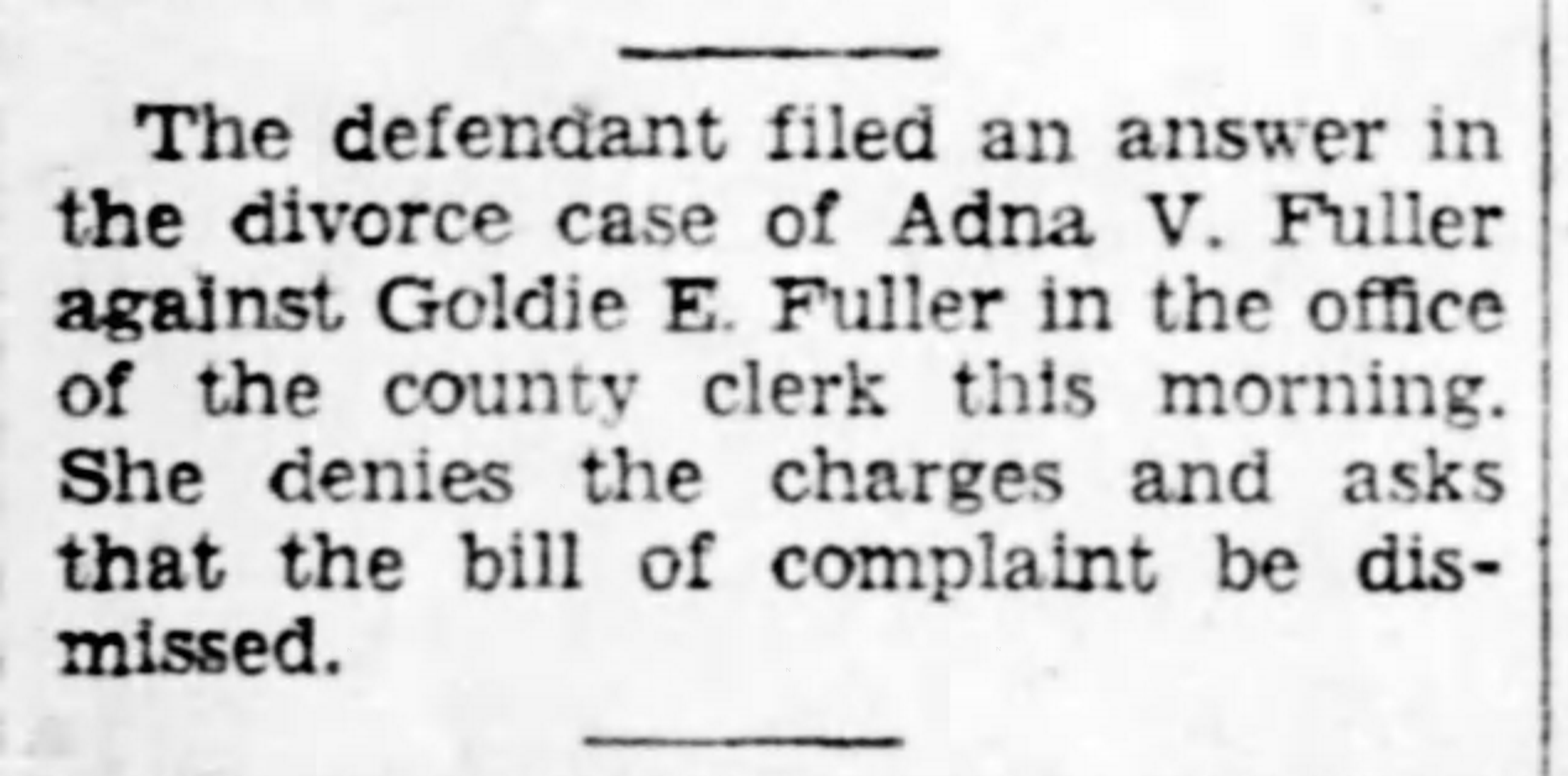
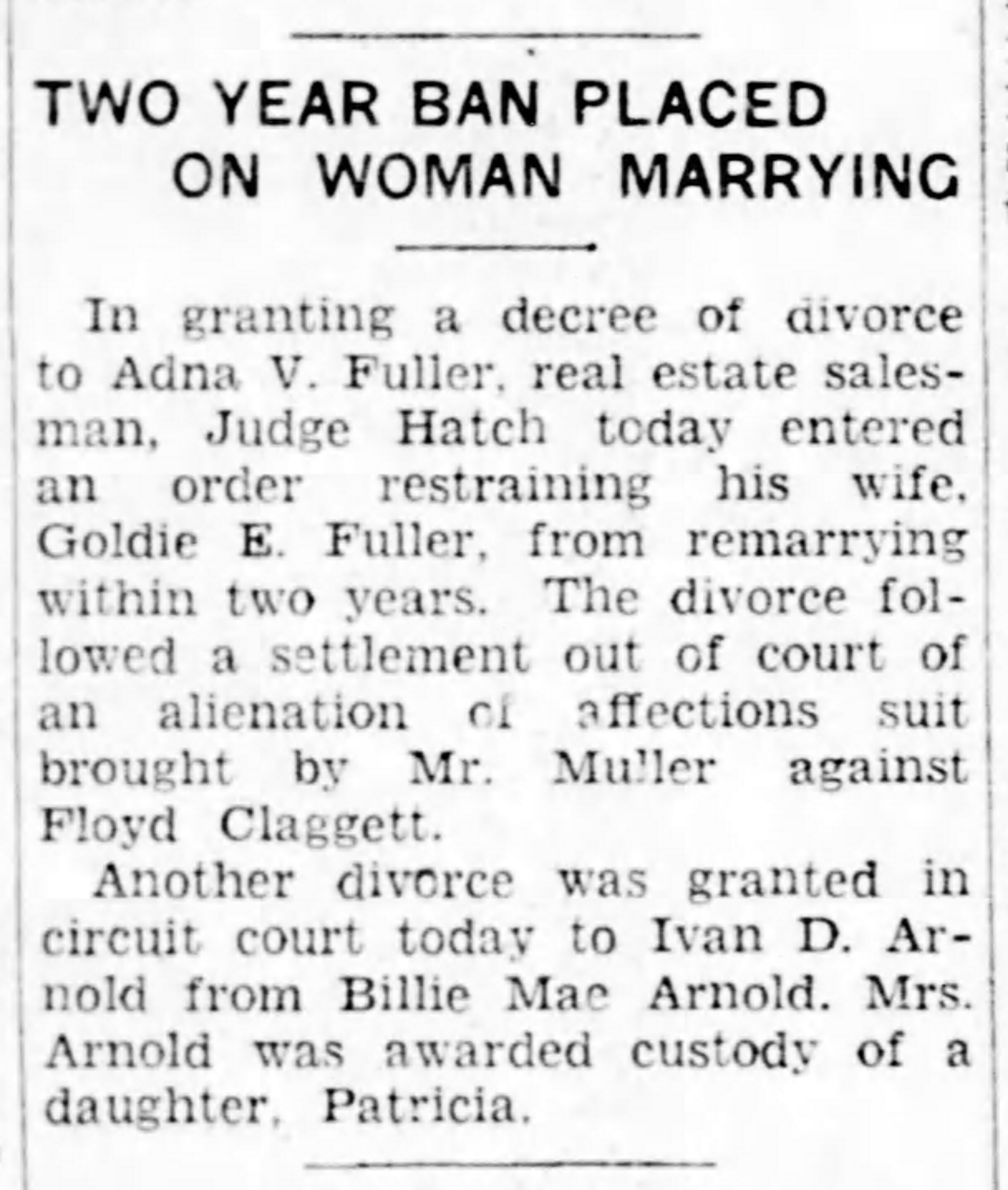
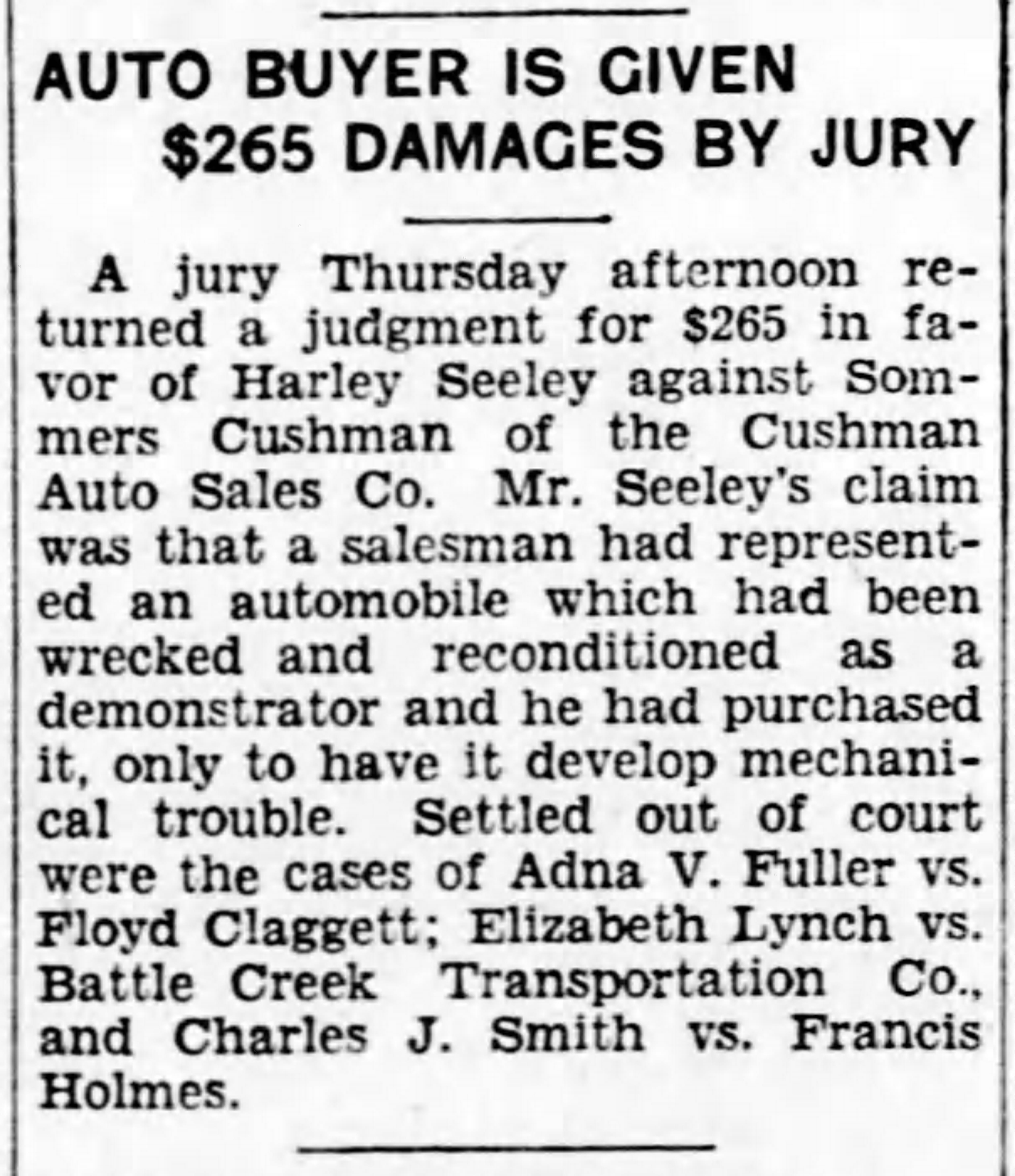
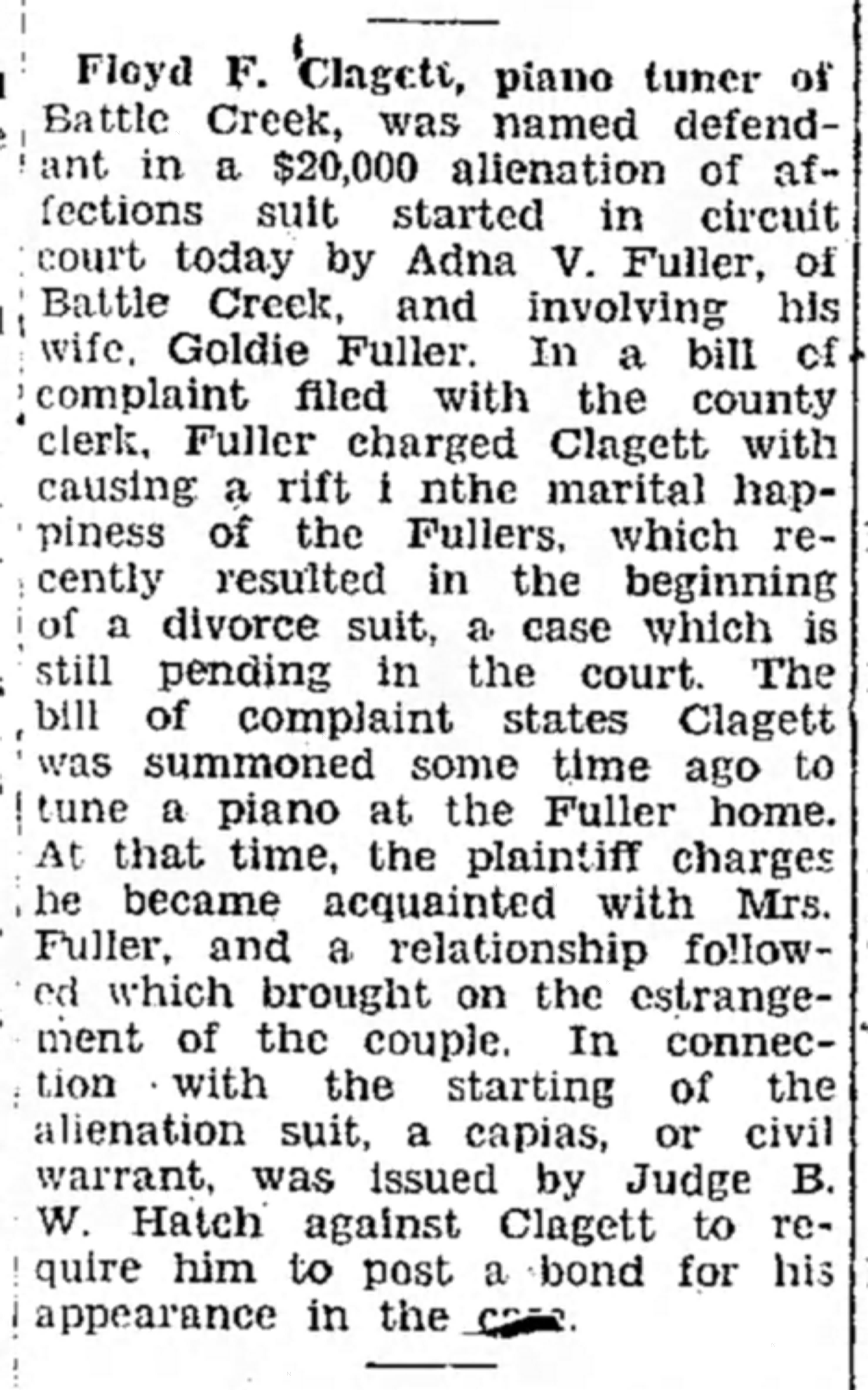
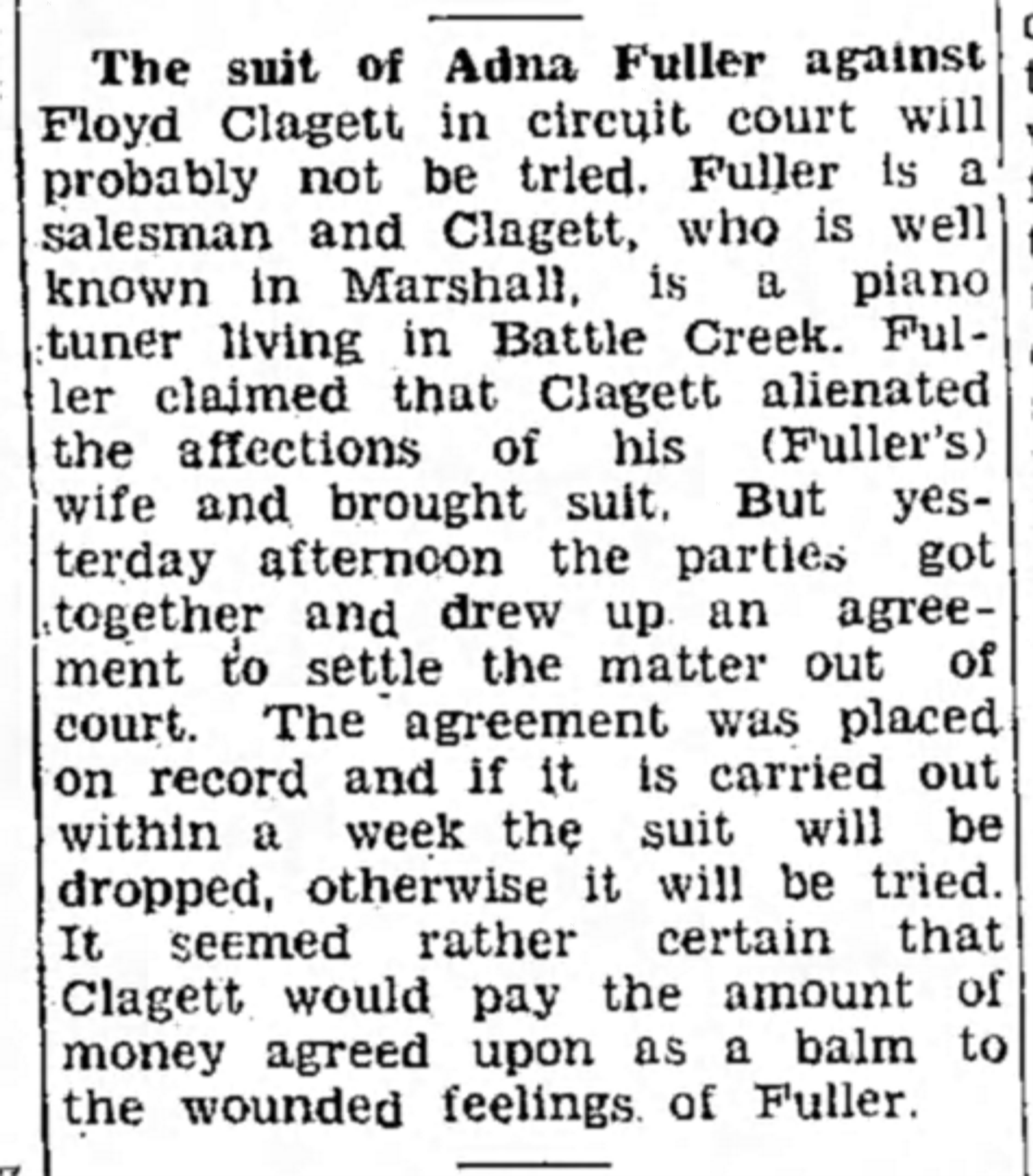
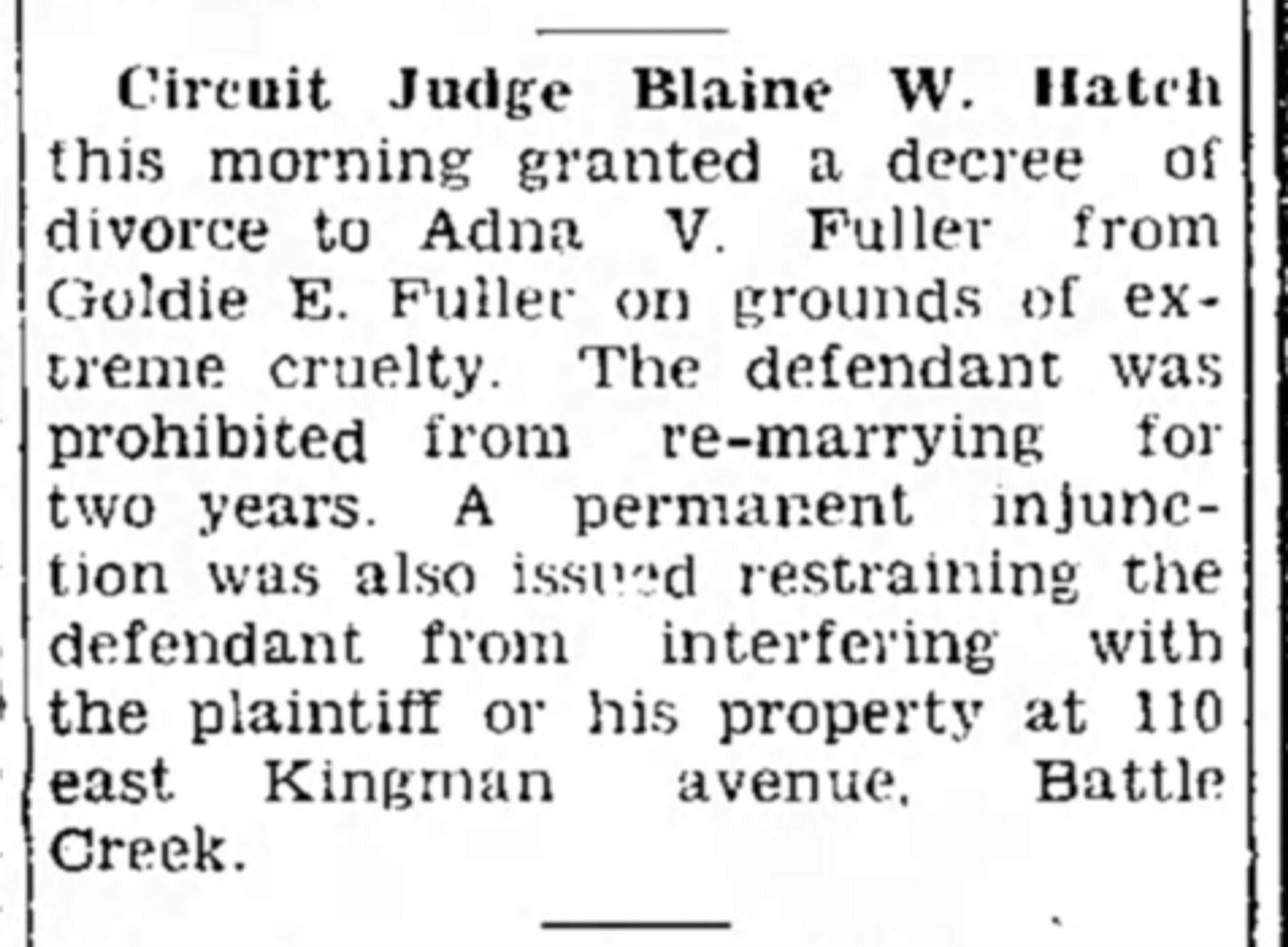


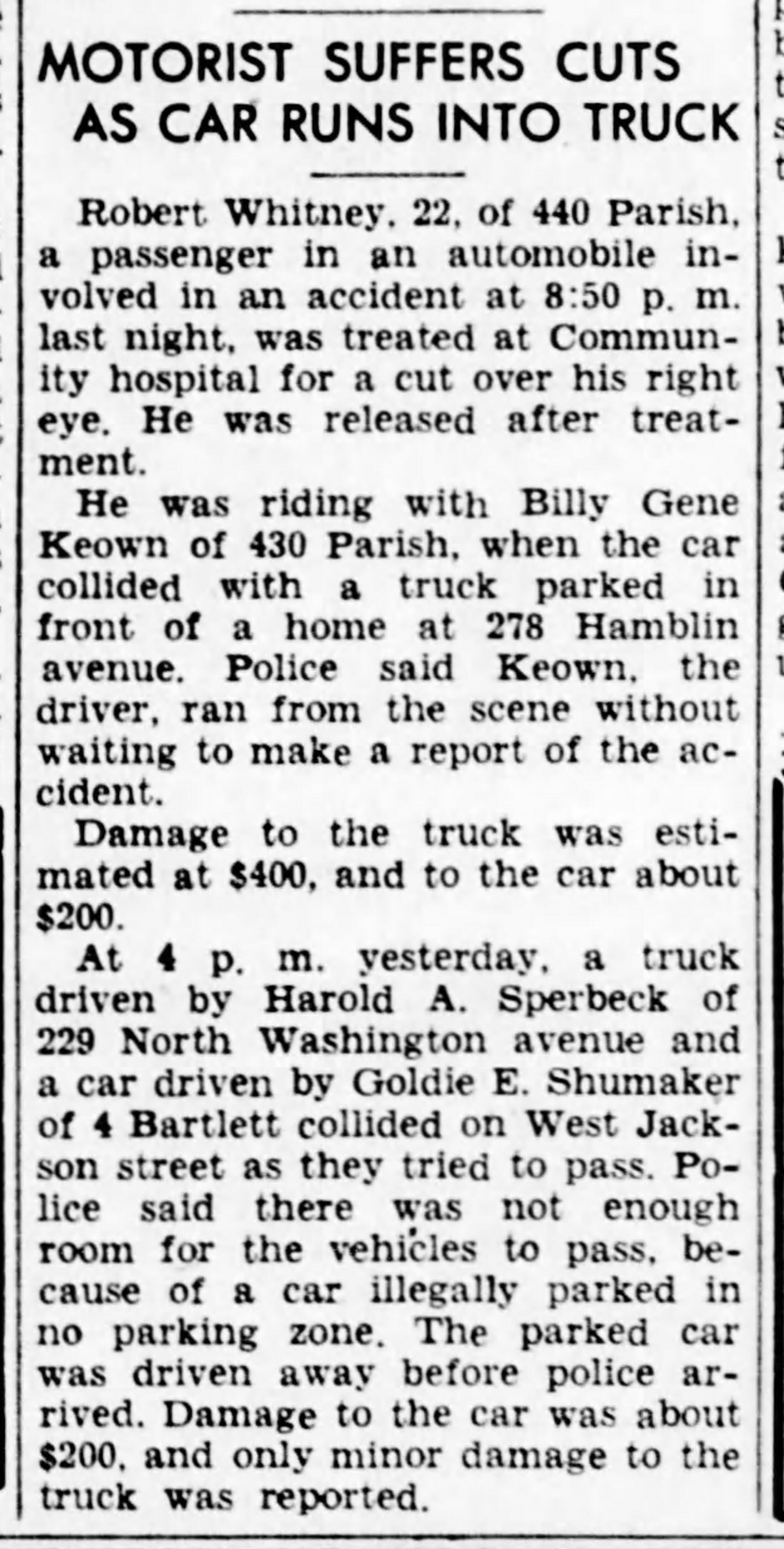
as Car Runs into
Trucks," Battle Creek
Enquirer (Battle Creek,
MI), Friday 12 January
1951.
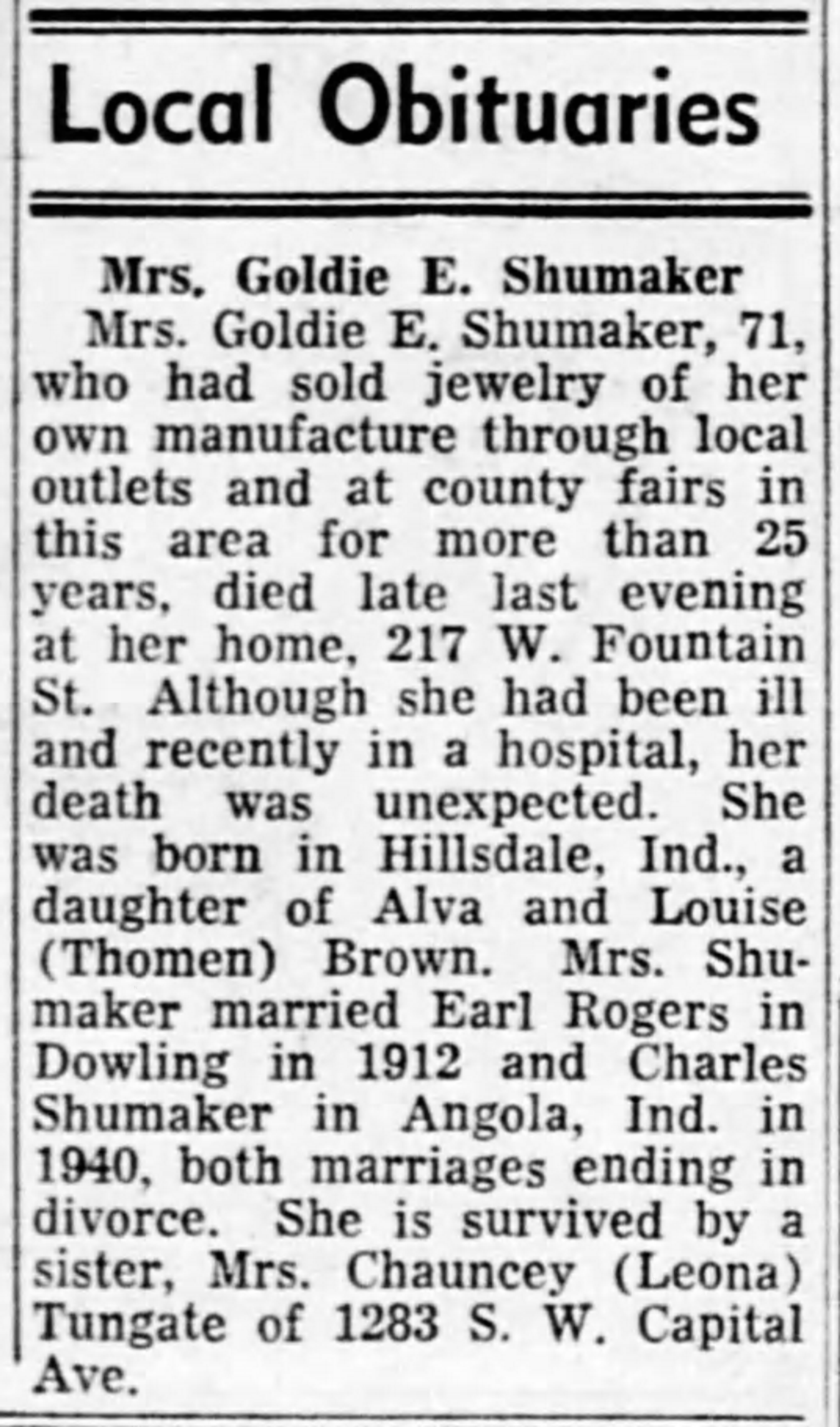
Goldie E. Shumaker,
Battle Creek Enquirer
(Battle Creek, MI),
Friday 15 June 1962.

Mrs. Goldie E.
Shumaker, Battle
Creek Enquirer
(Battle Creek, MI),
Friday 15 June 1962.
Floyd Simeon Moore
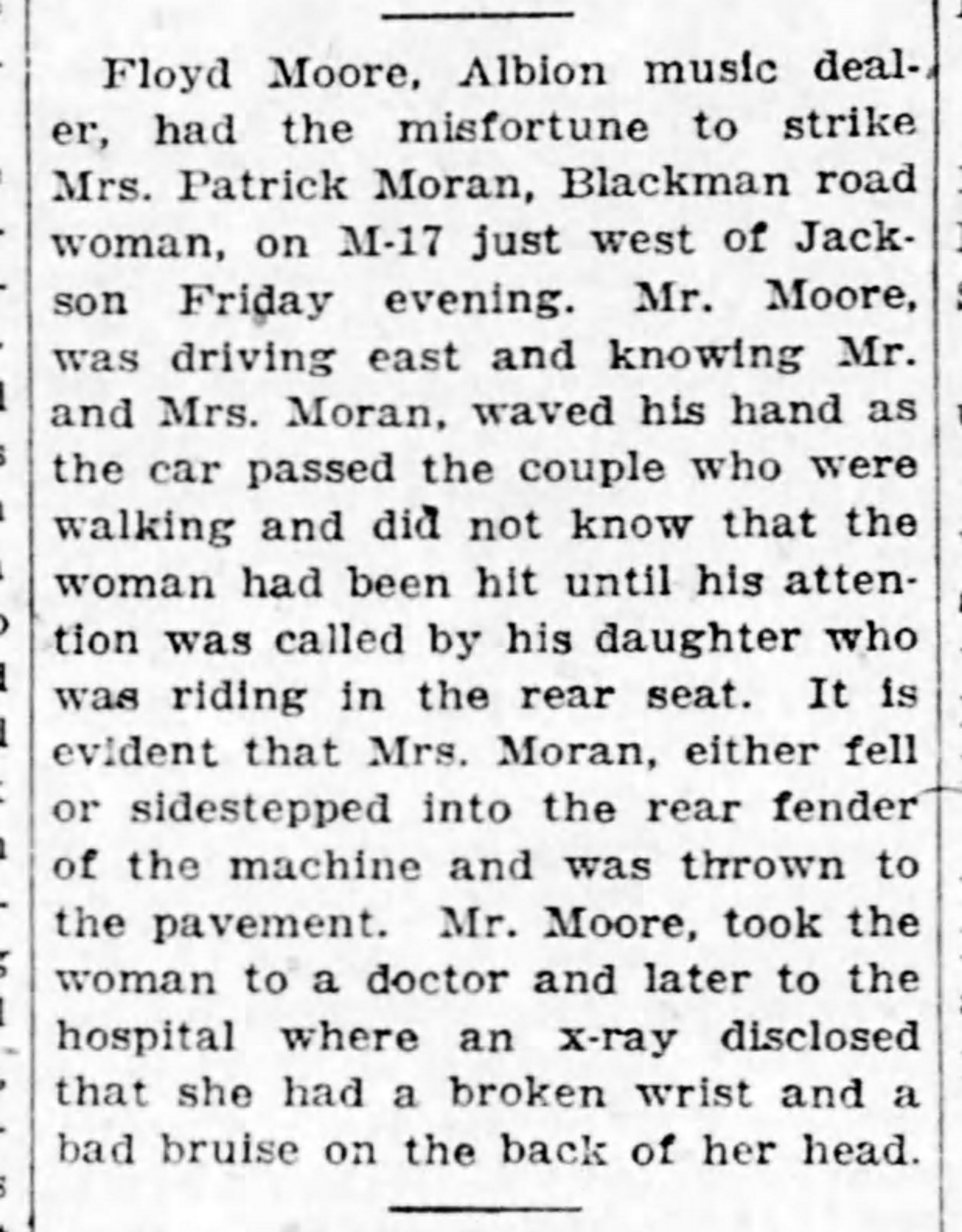
accidentally hit by
a car, Battle Creek
Enquirer (Battle
Creek, MI), Saturday
18 July 1925.
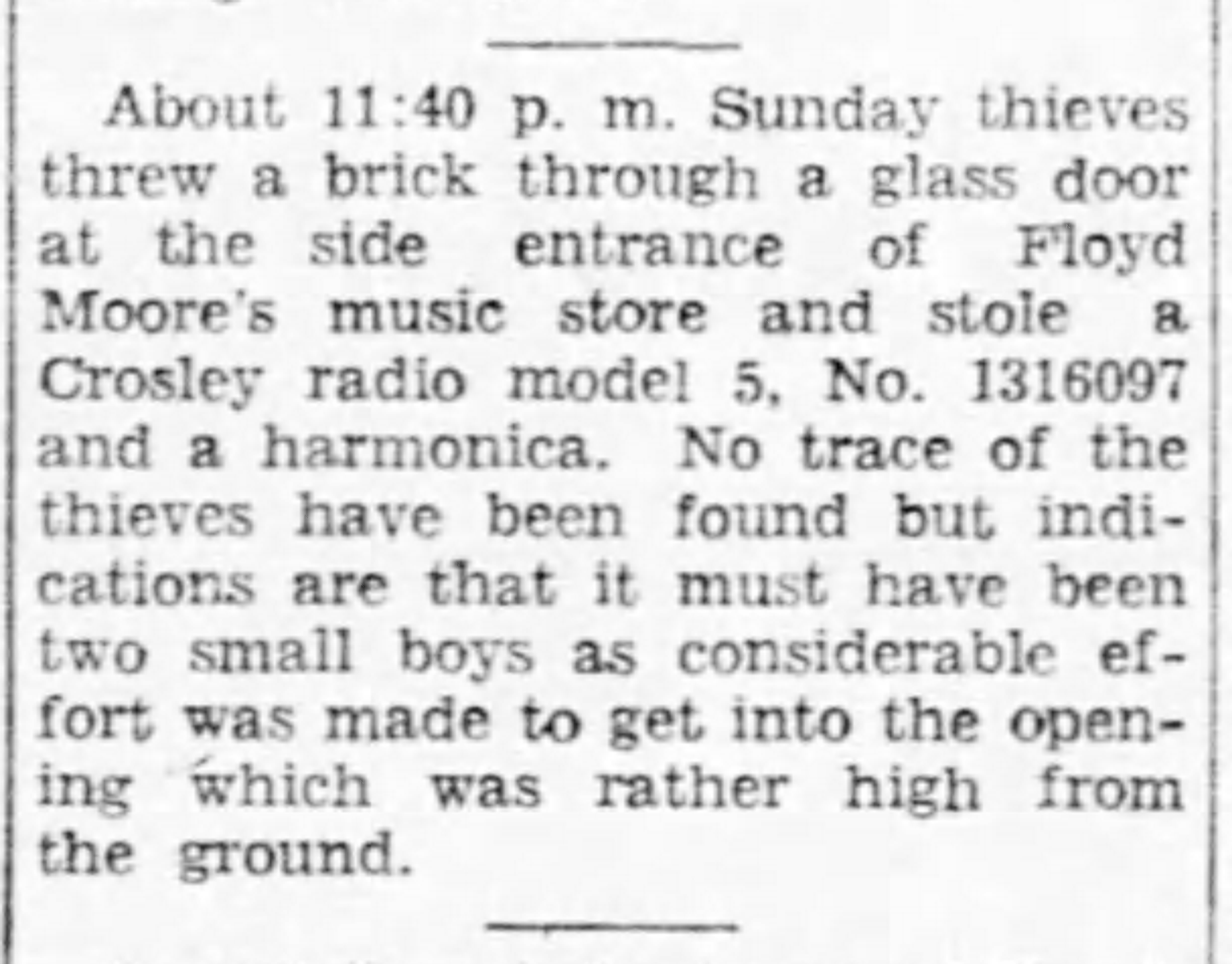
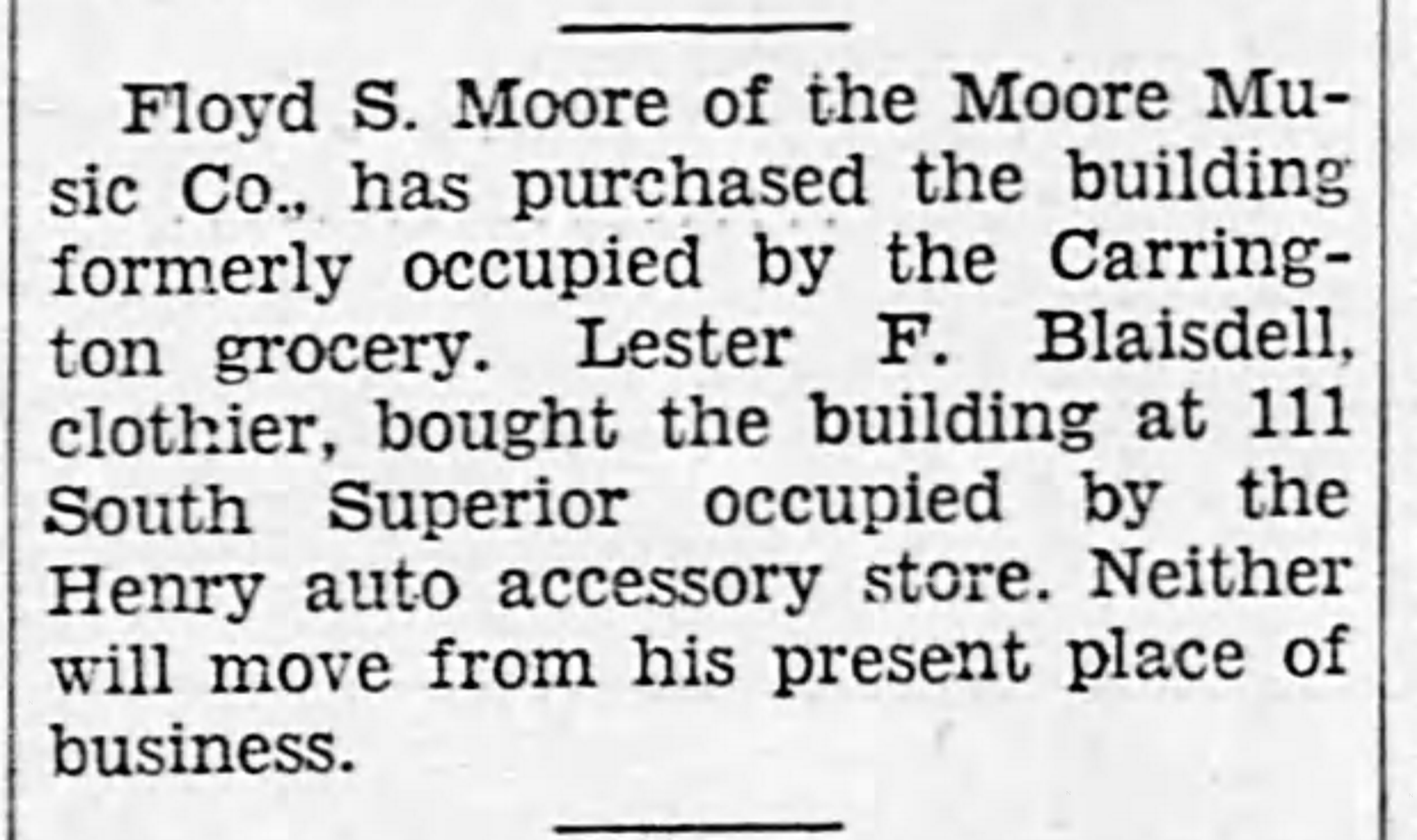

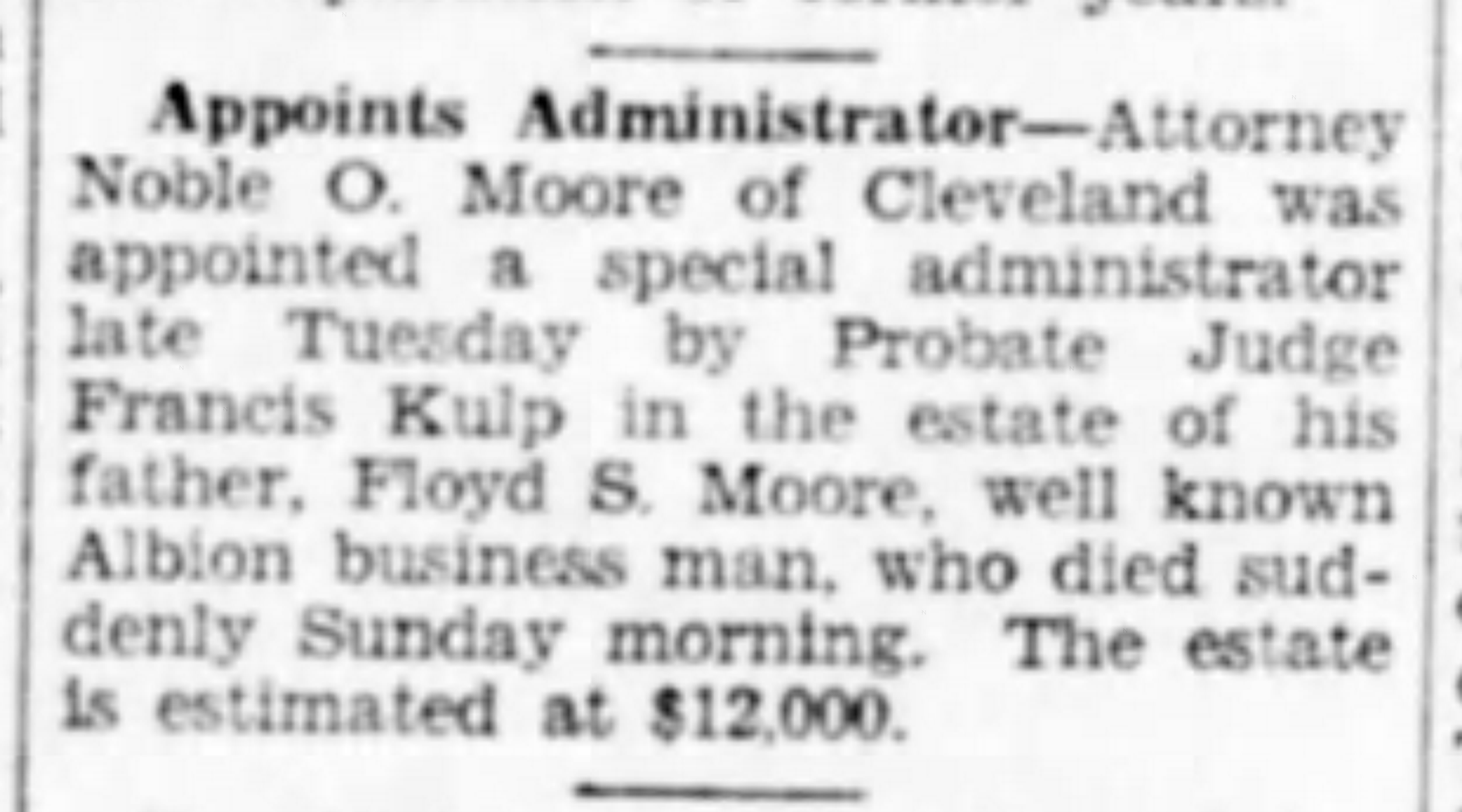
Adna Vail Fuller
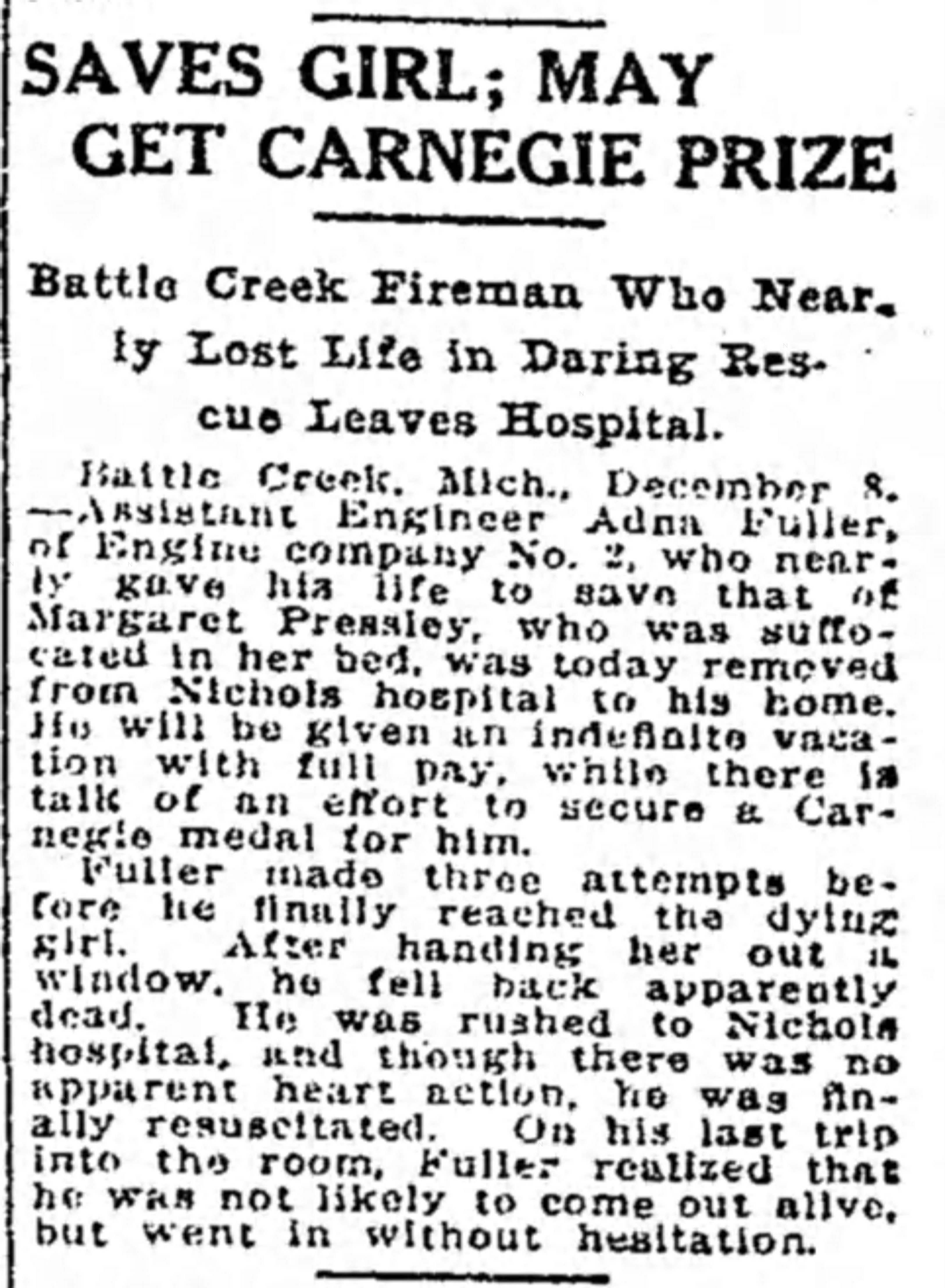
Carnegie Prize,"
Detroit Free Press
(Detroit, MI),
Saturday 9
December 1911.

Battle Creek Enquirer
(Battle Creek, MI),
Monday 22 January
1923.
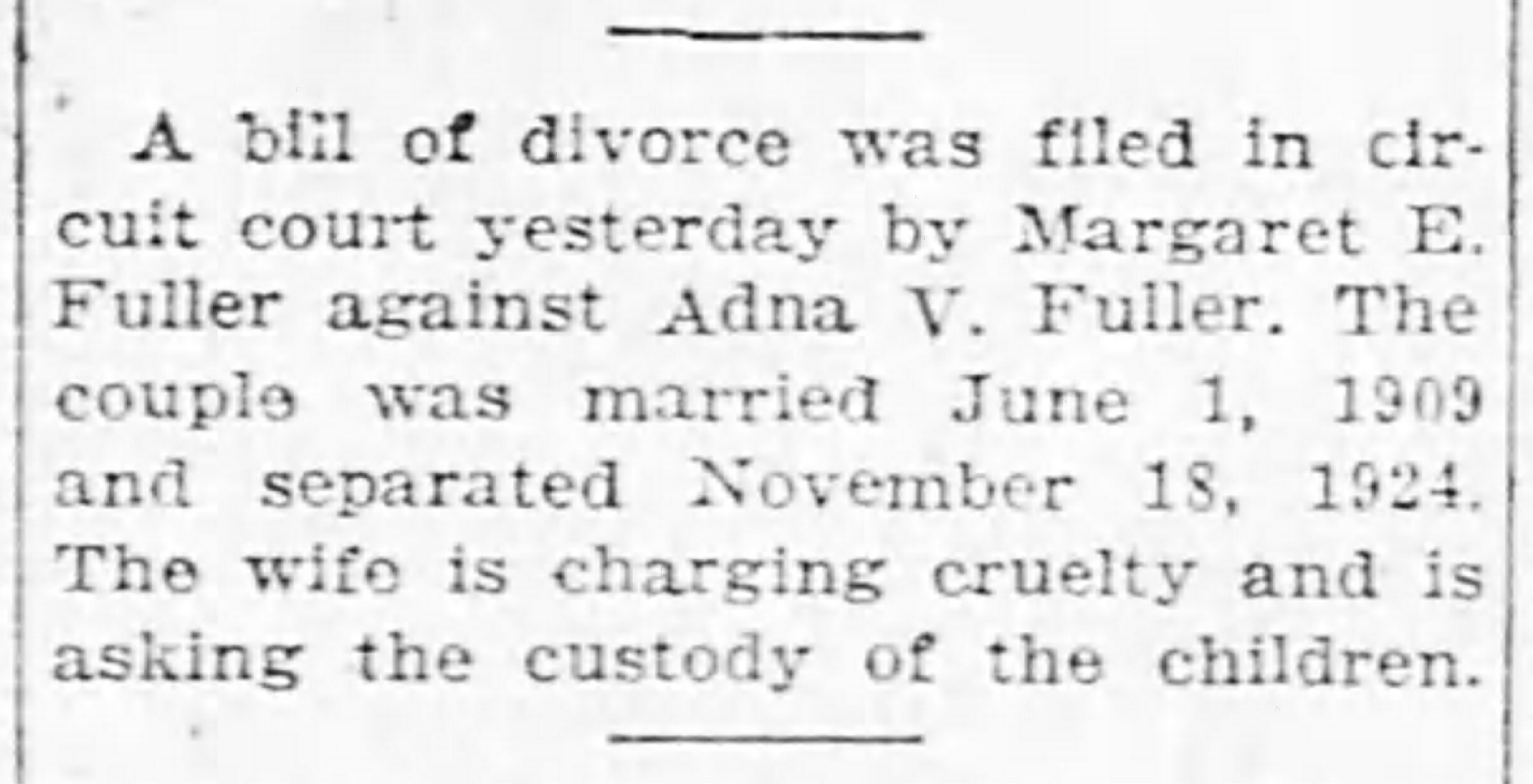
between Adna V.
and Margaret E. Fuller,
Battle Creek Enquirer
(Battle Creek, MI),
Friday 21 November
1924.
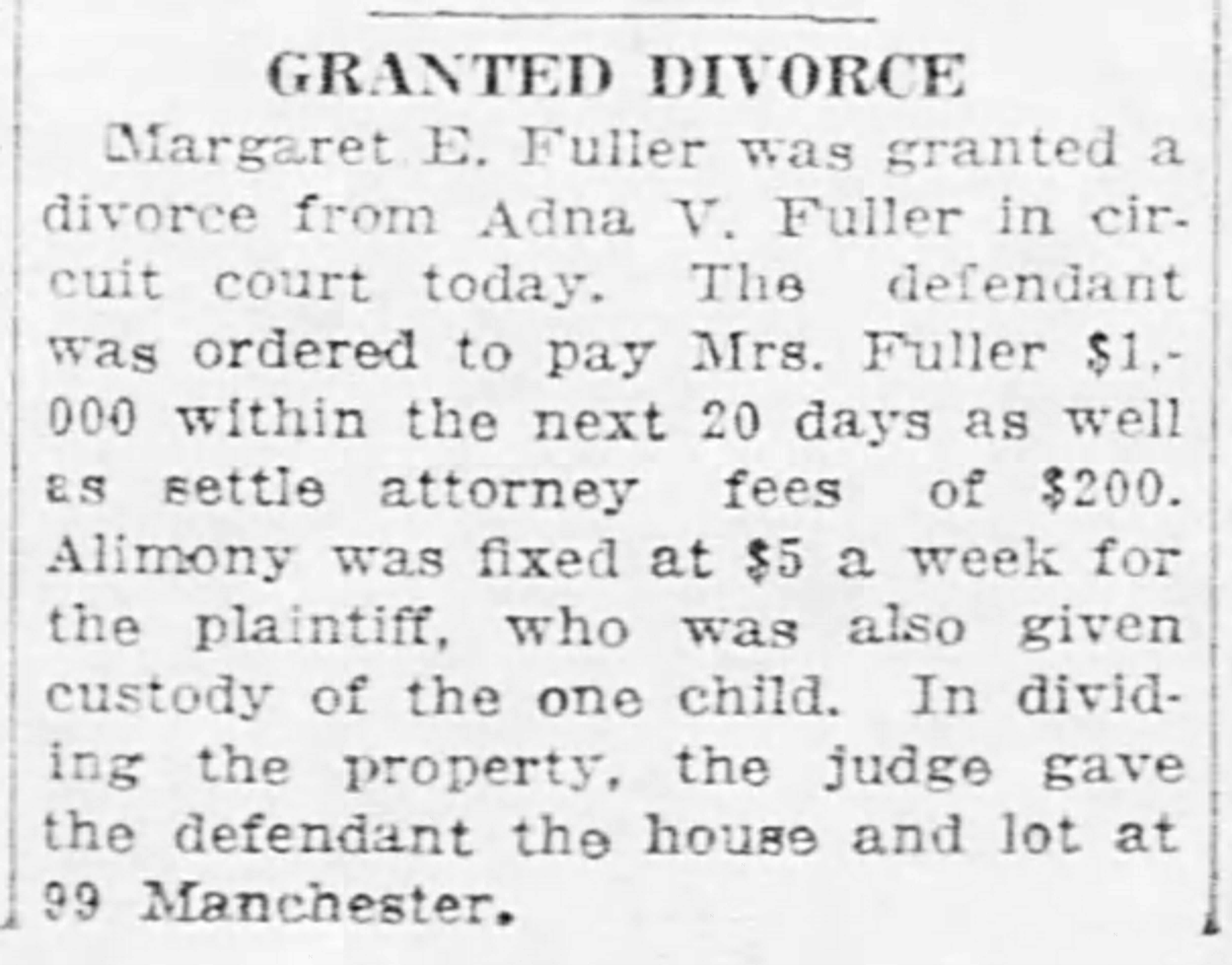
Battle Creek Enquirer
(Battle Creek, MI),
Monday 2 March
1925.
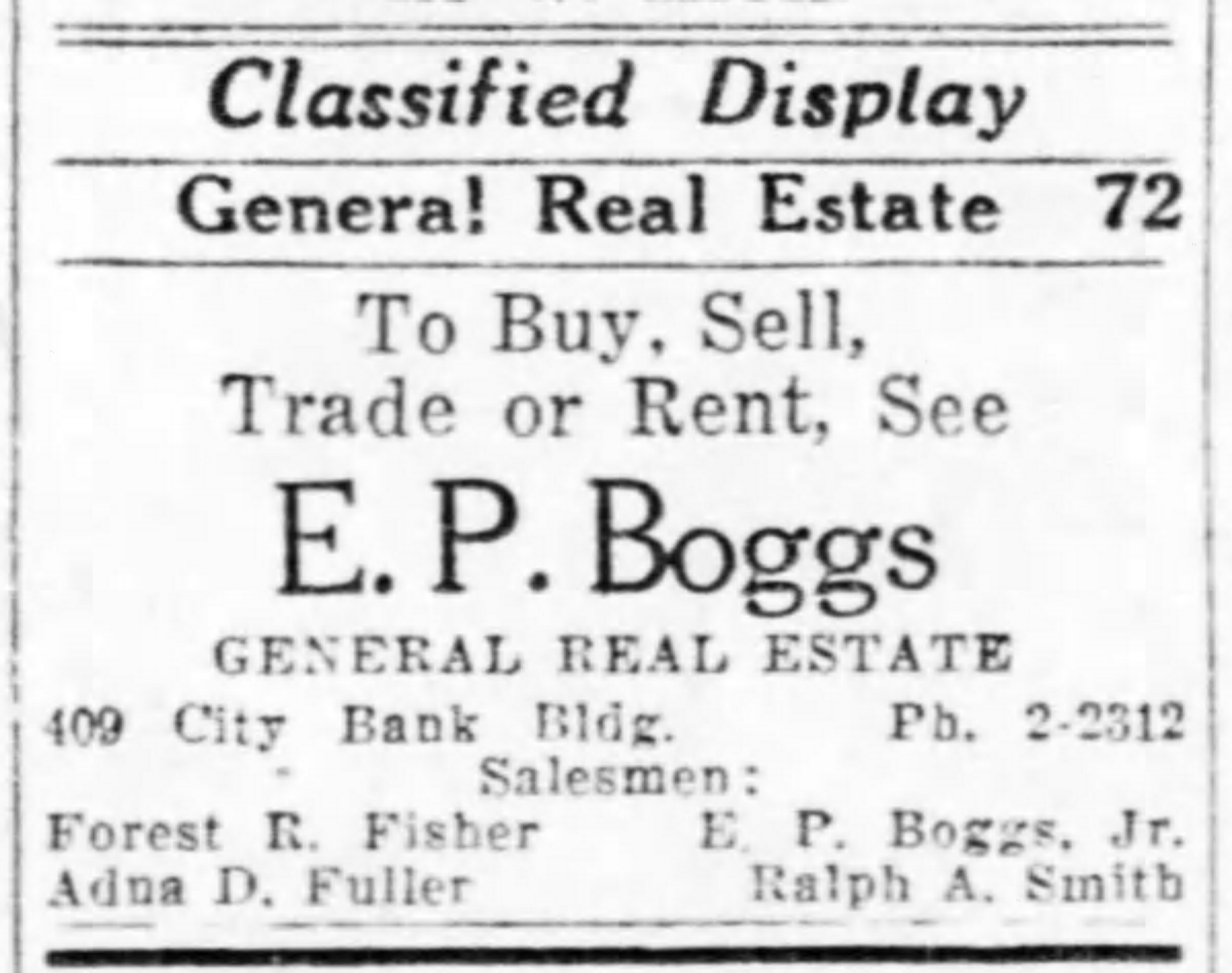
E. P. Boggs, General
Real Estate, Battle
Creek Enquirer
(Battle Creek, MI),
Friday 12 April 1935.
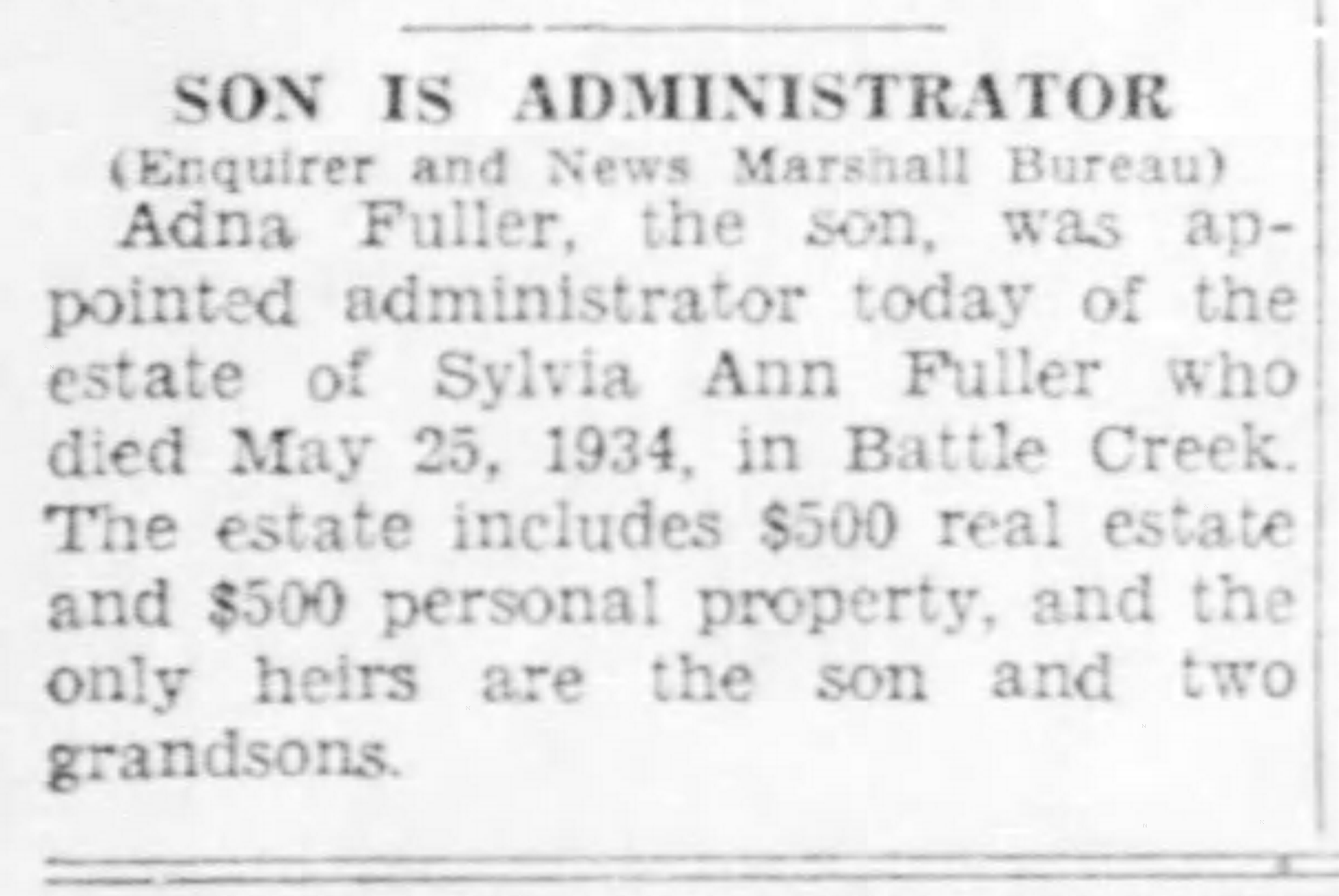
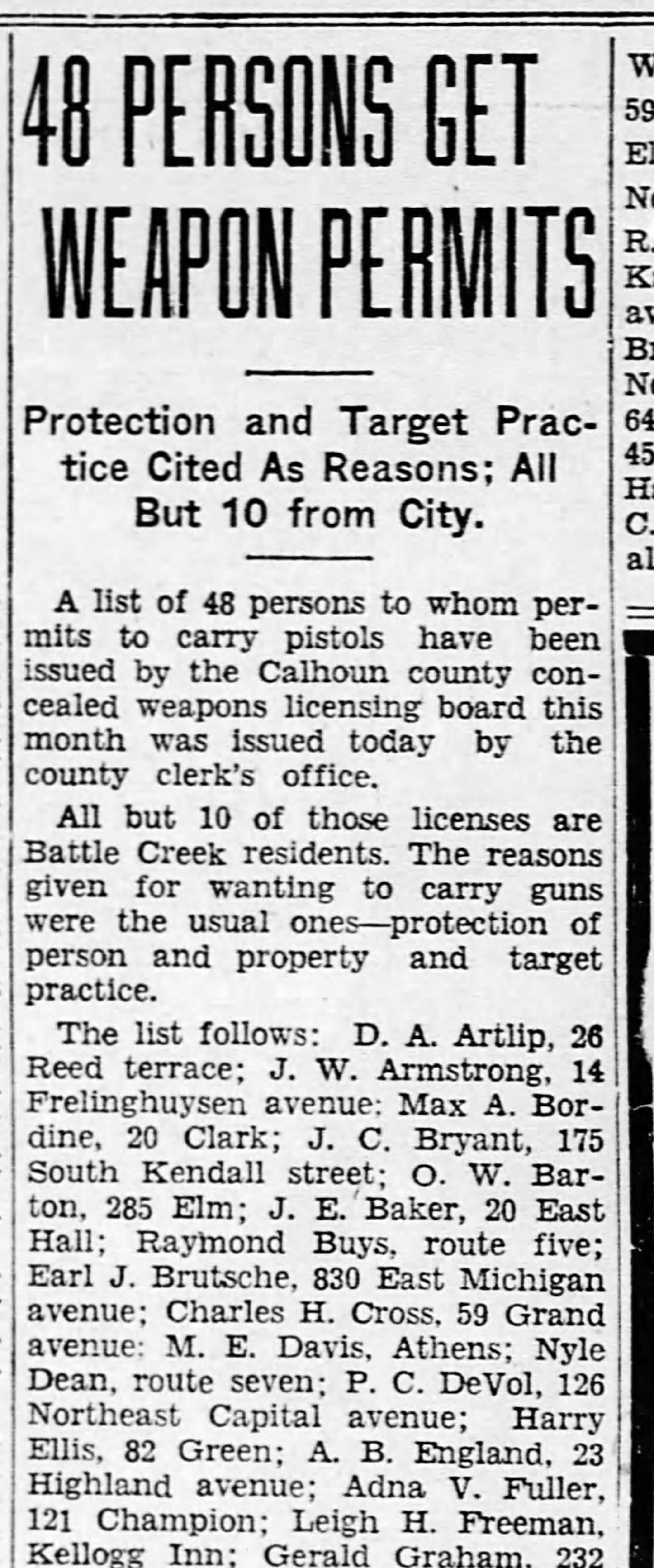
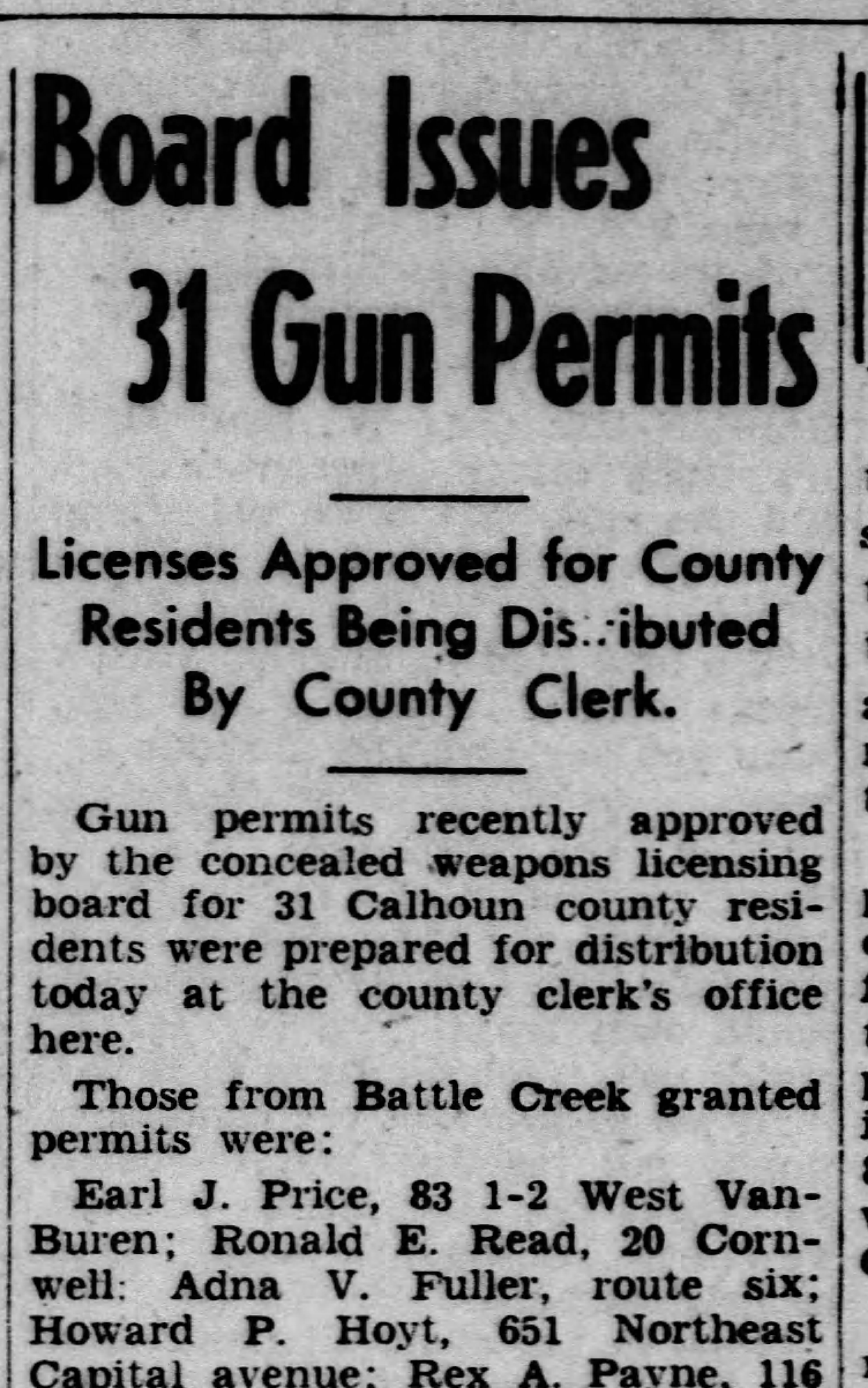
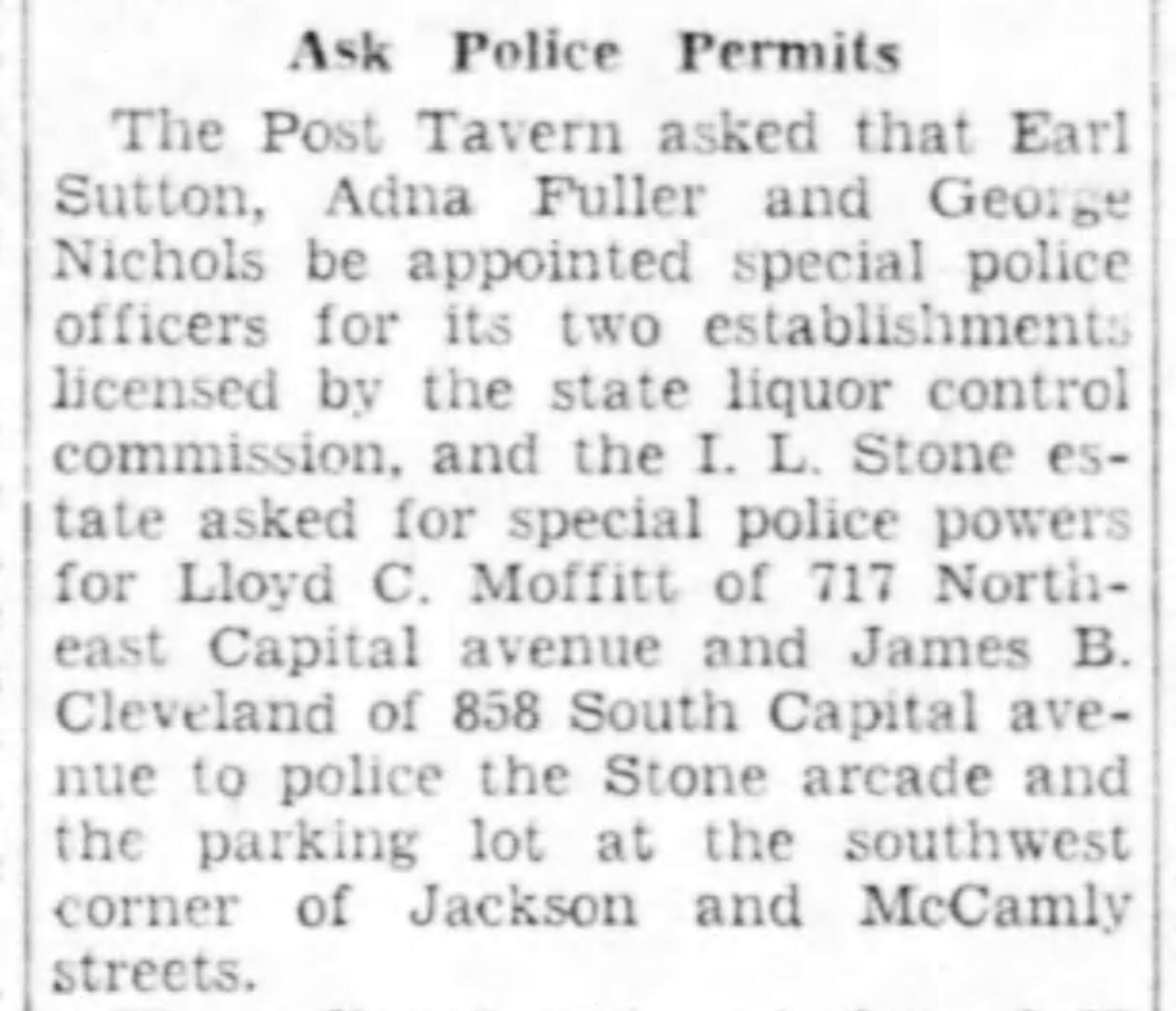
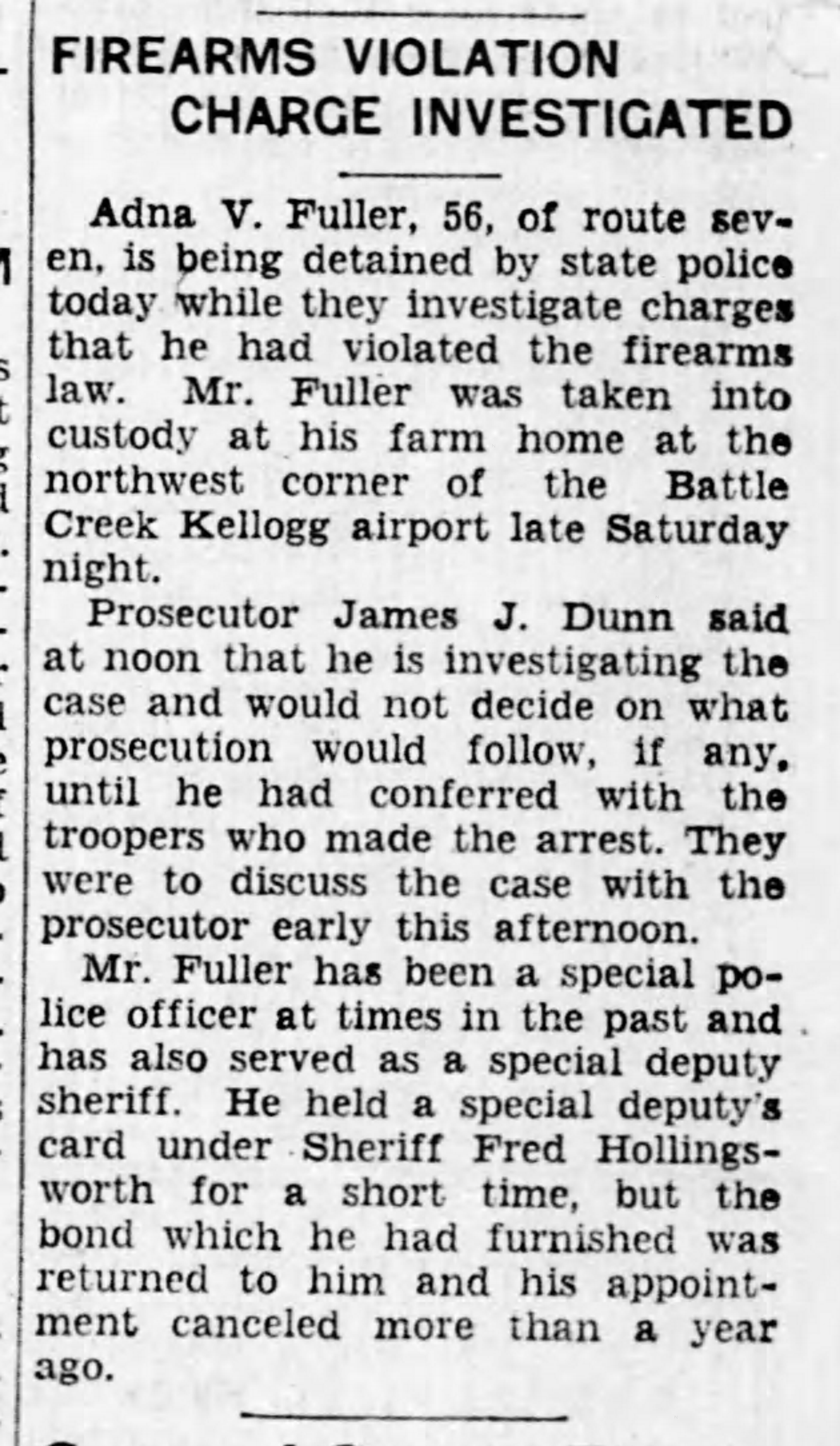

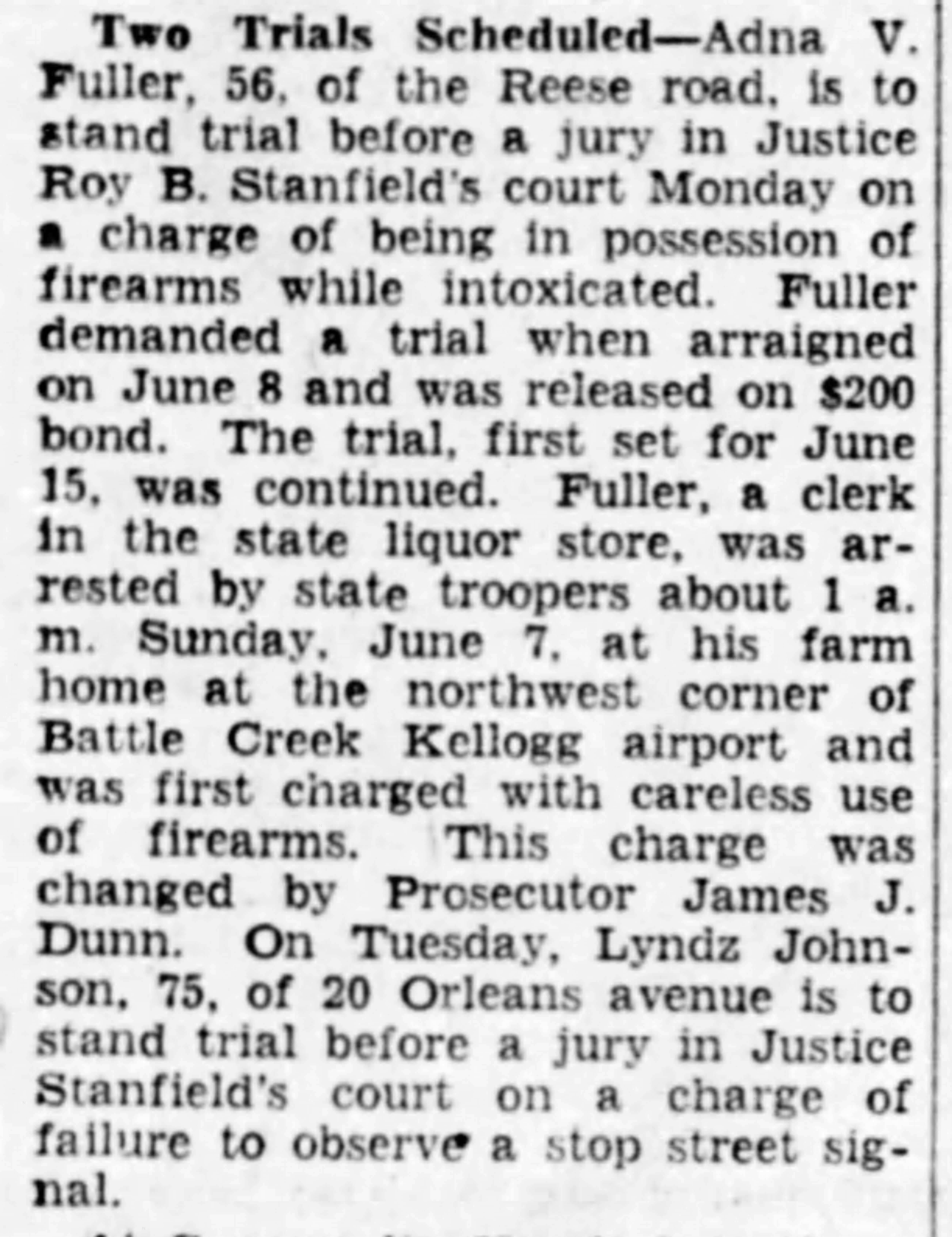
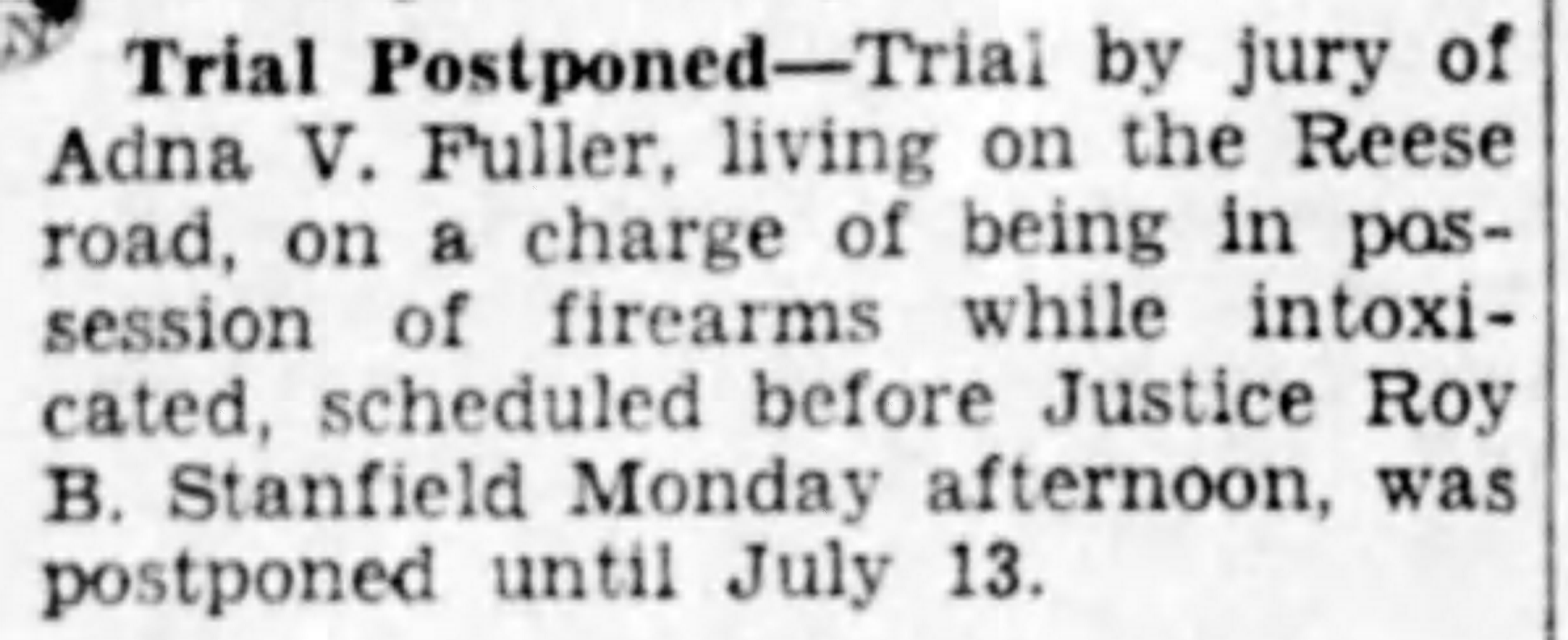
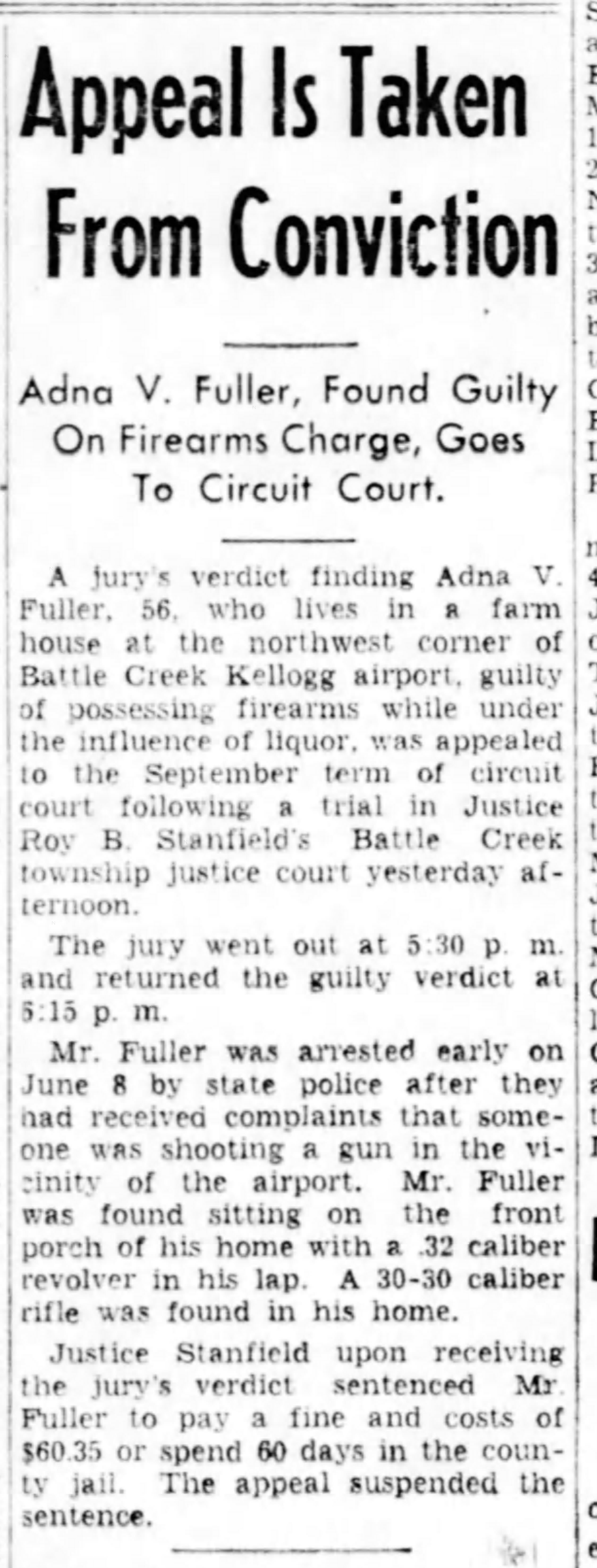
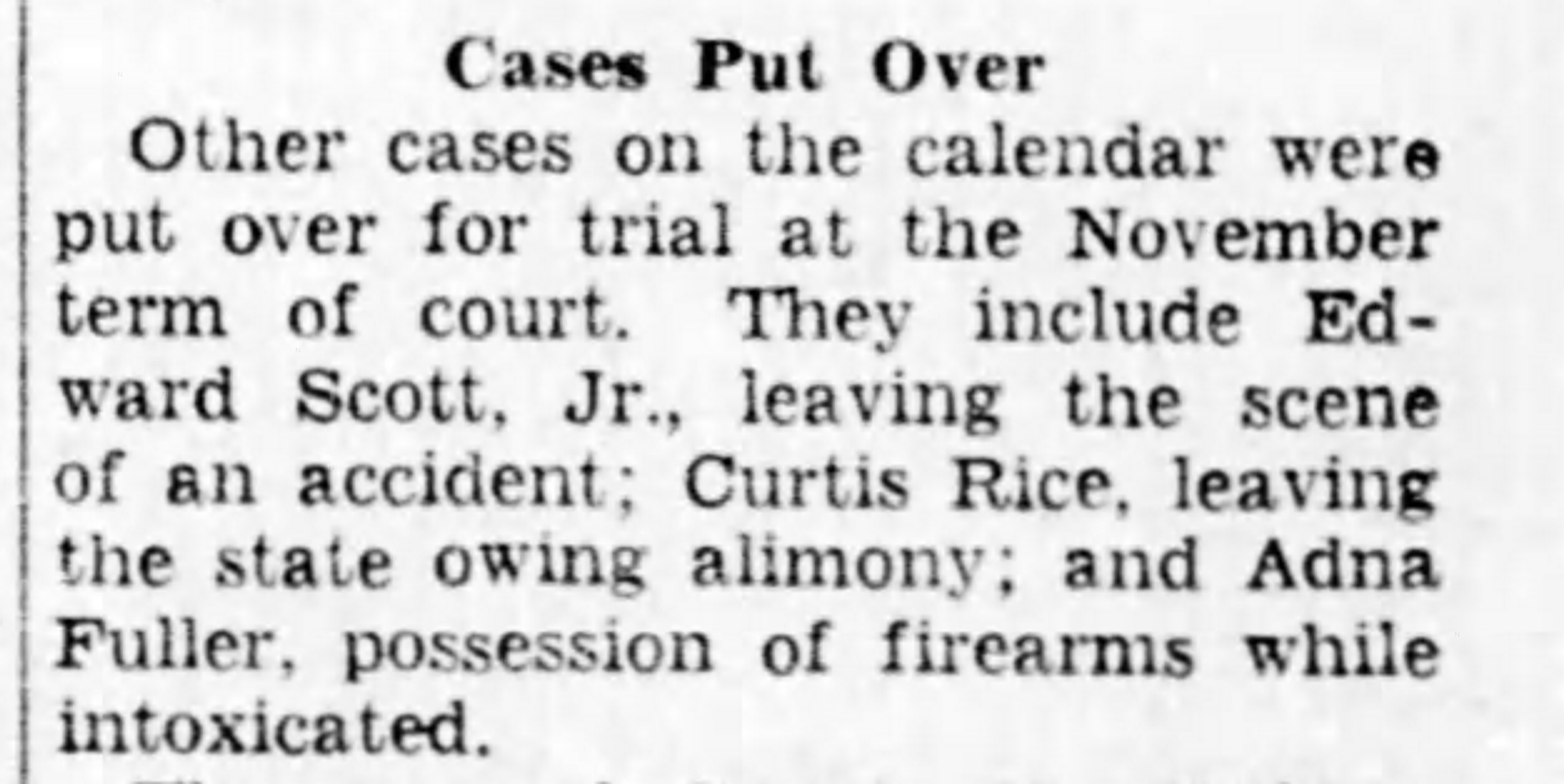
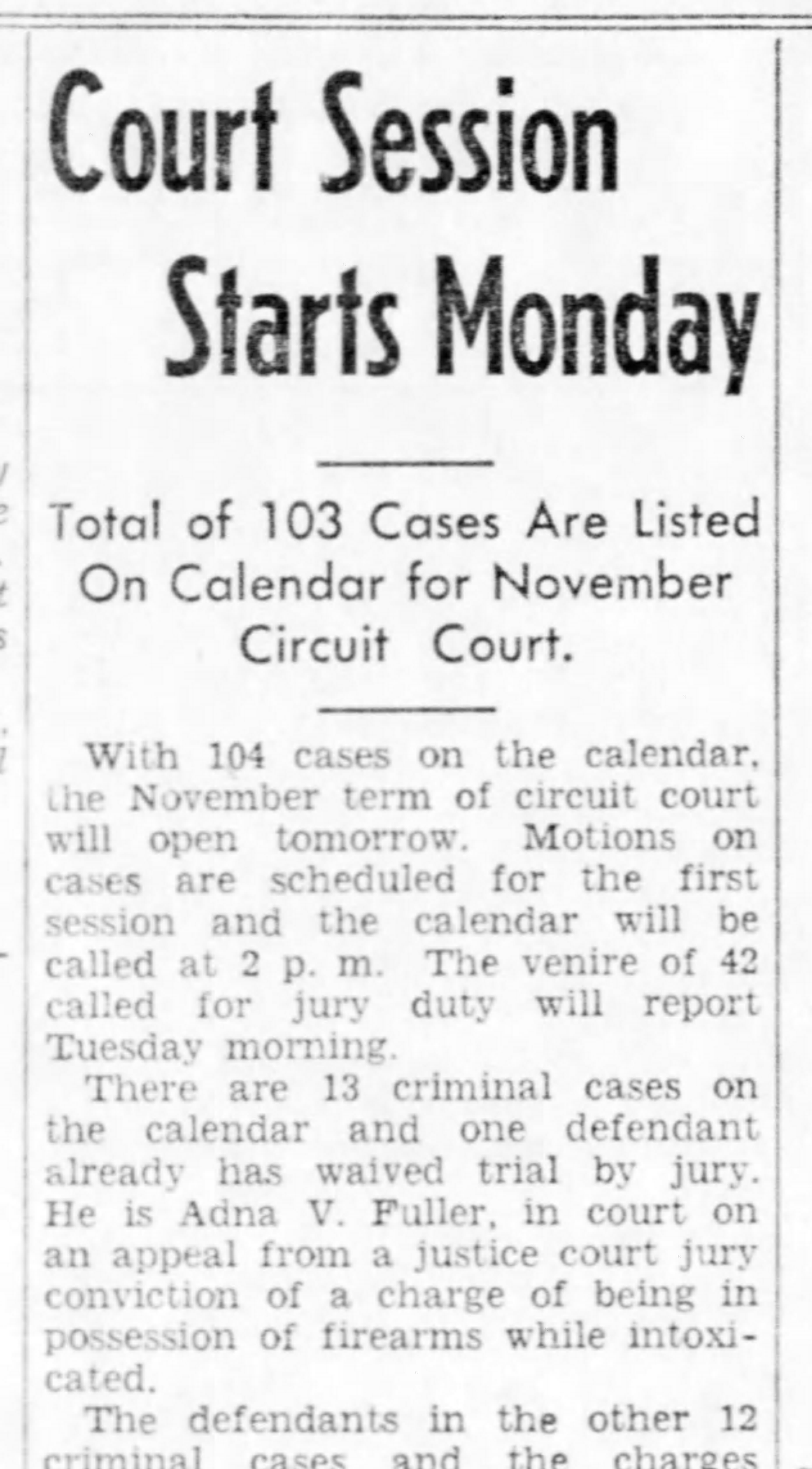

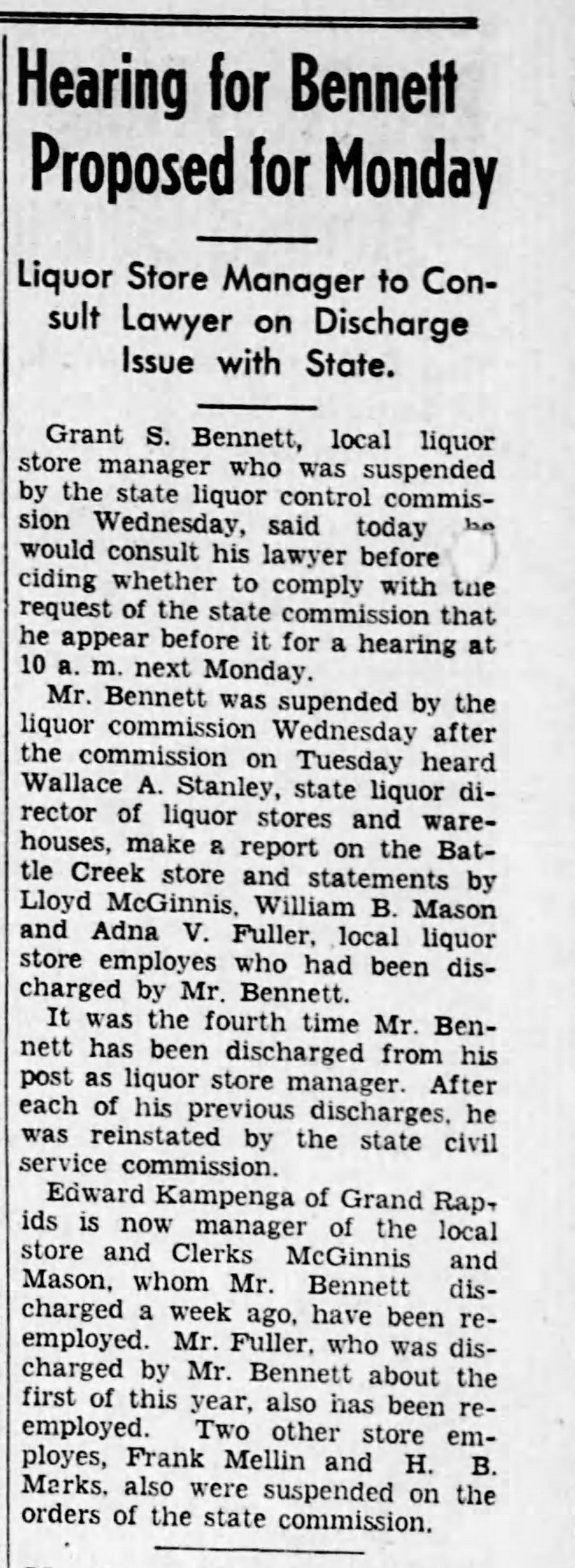
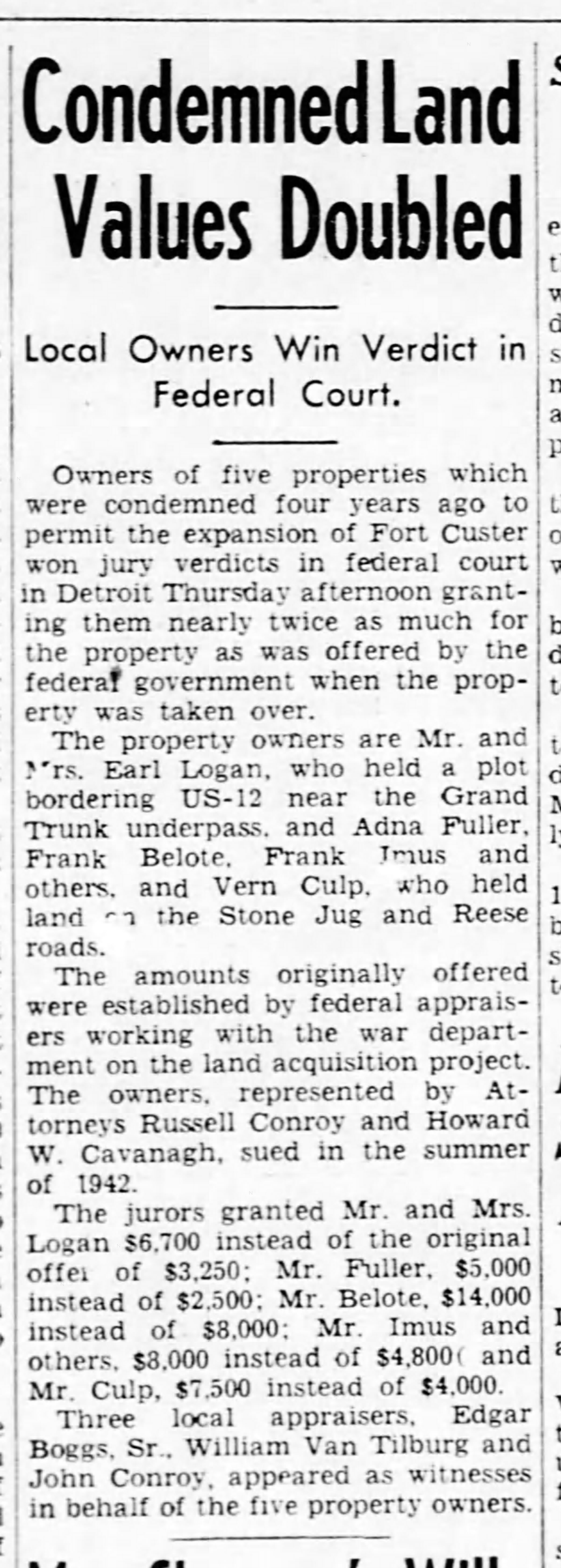
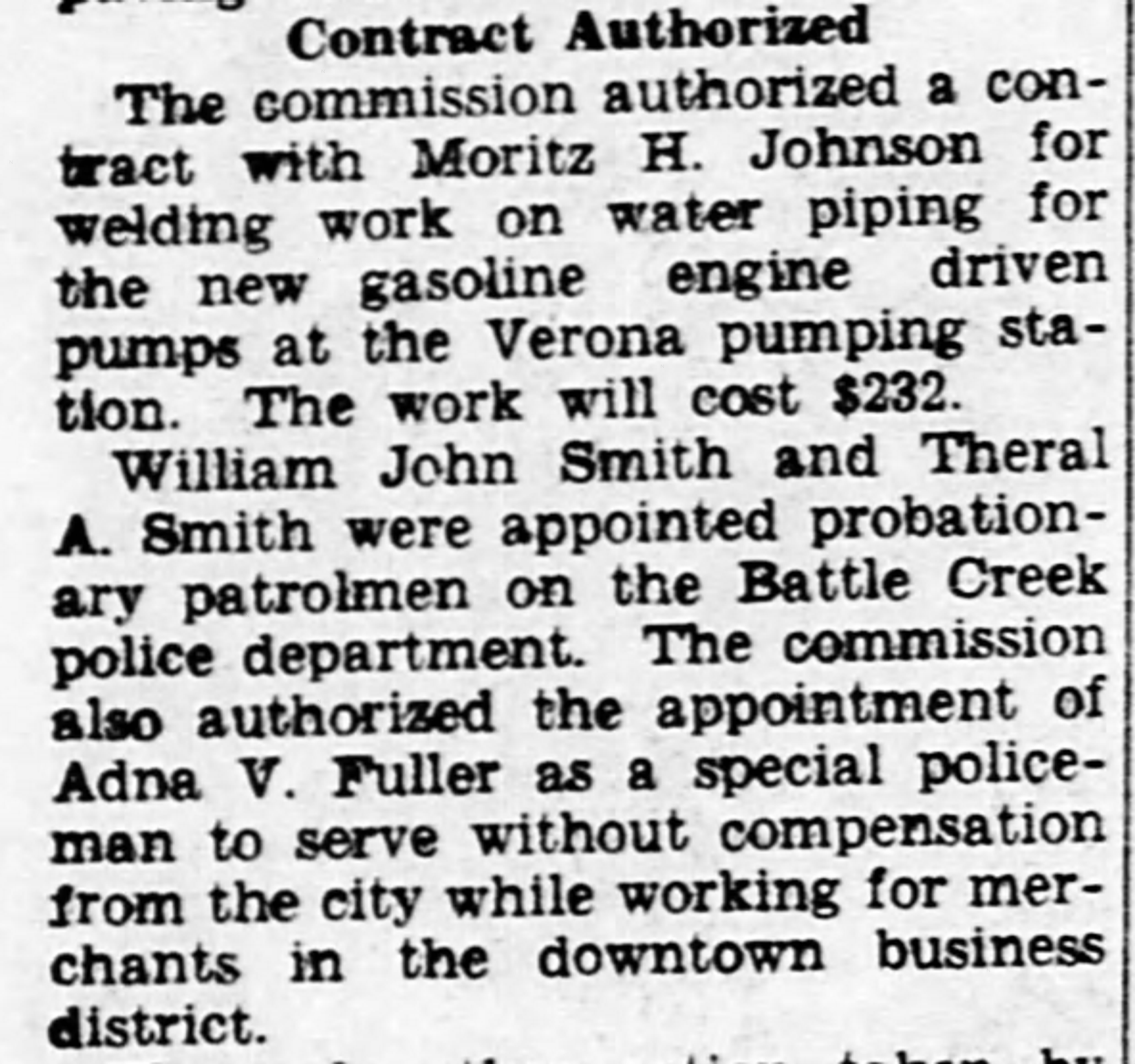

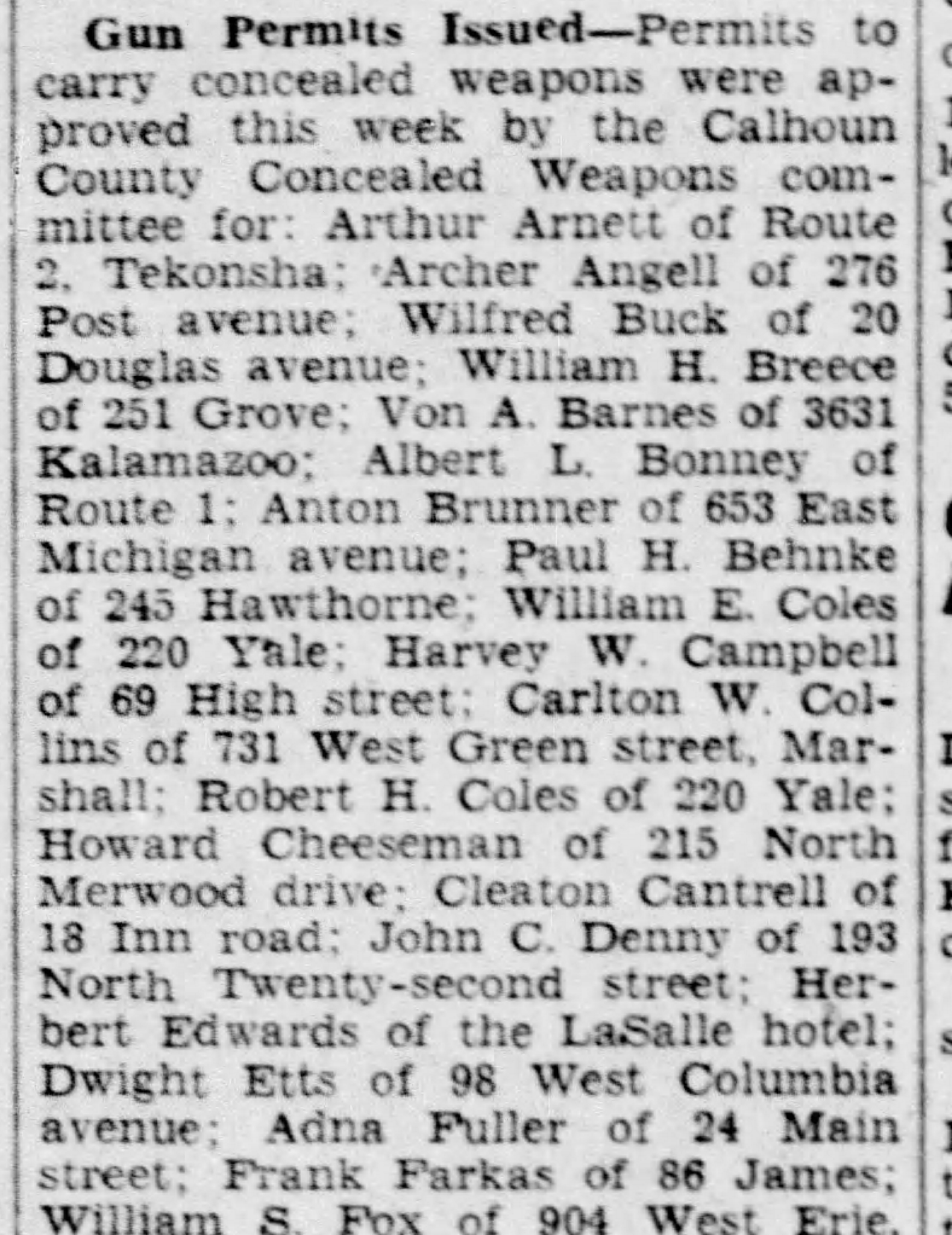
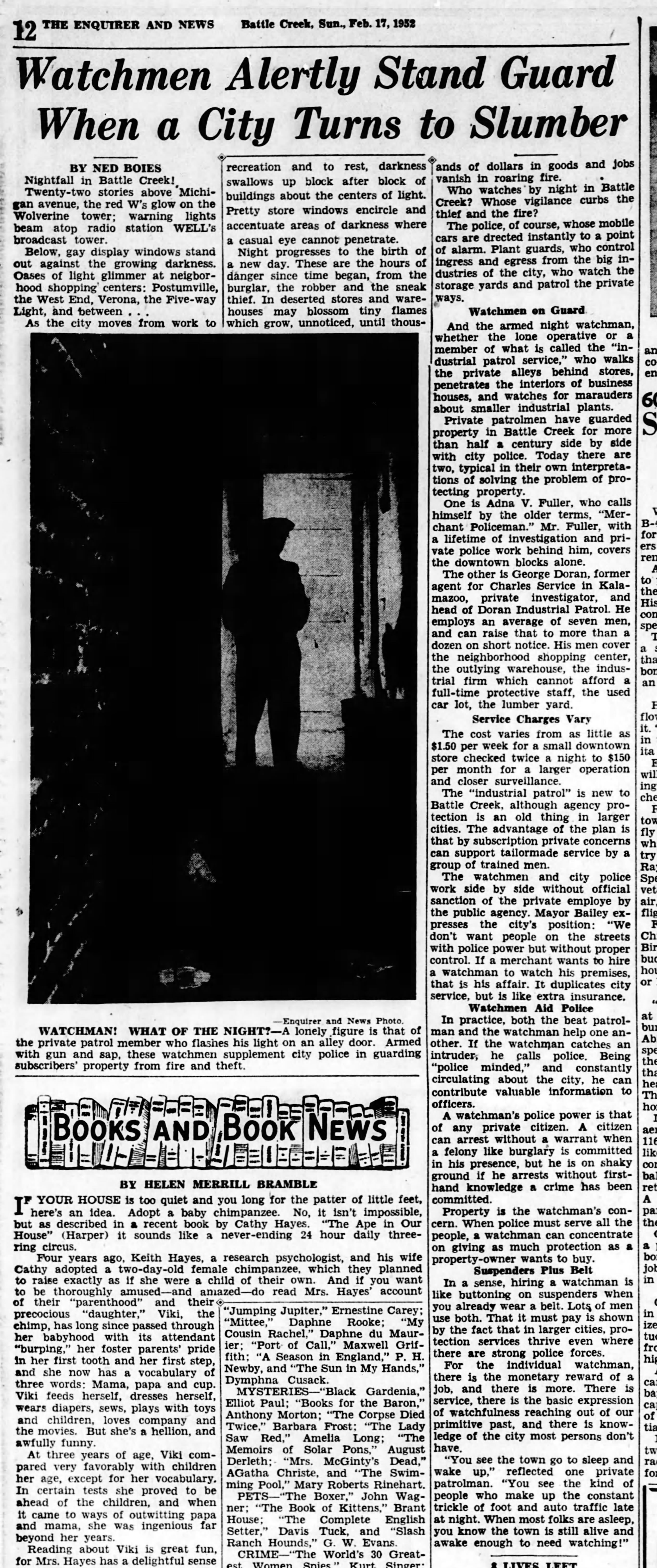
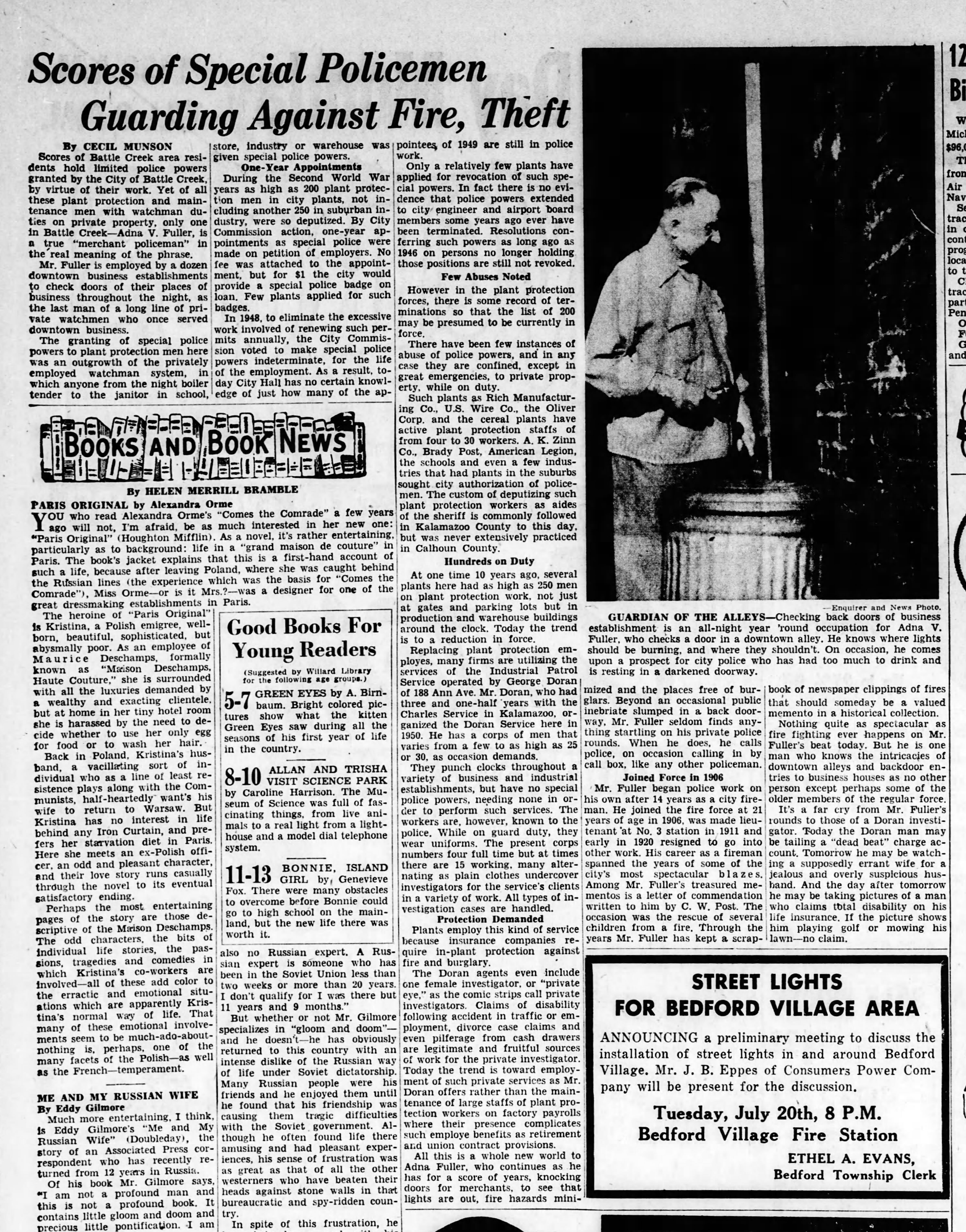


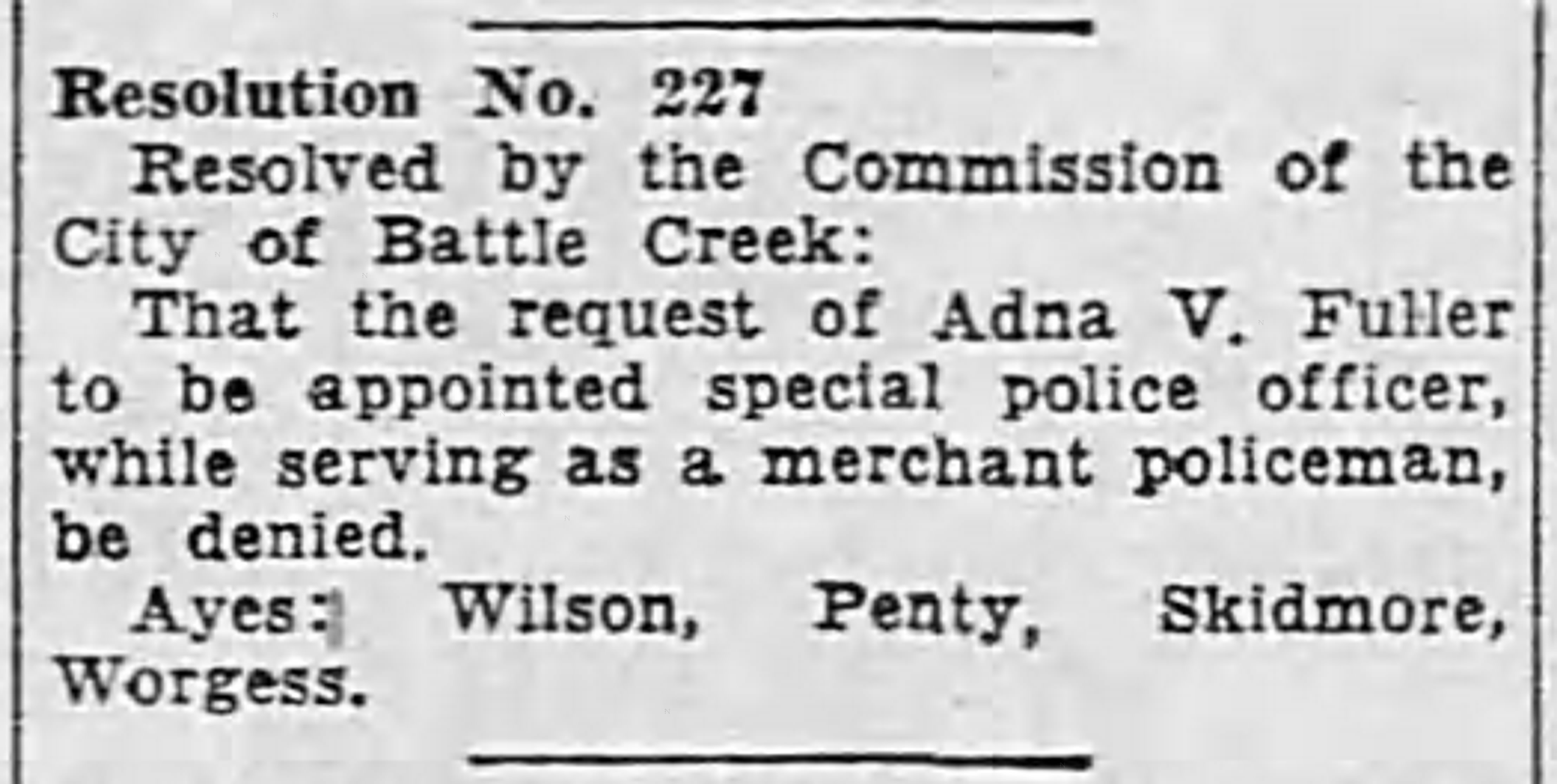
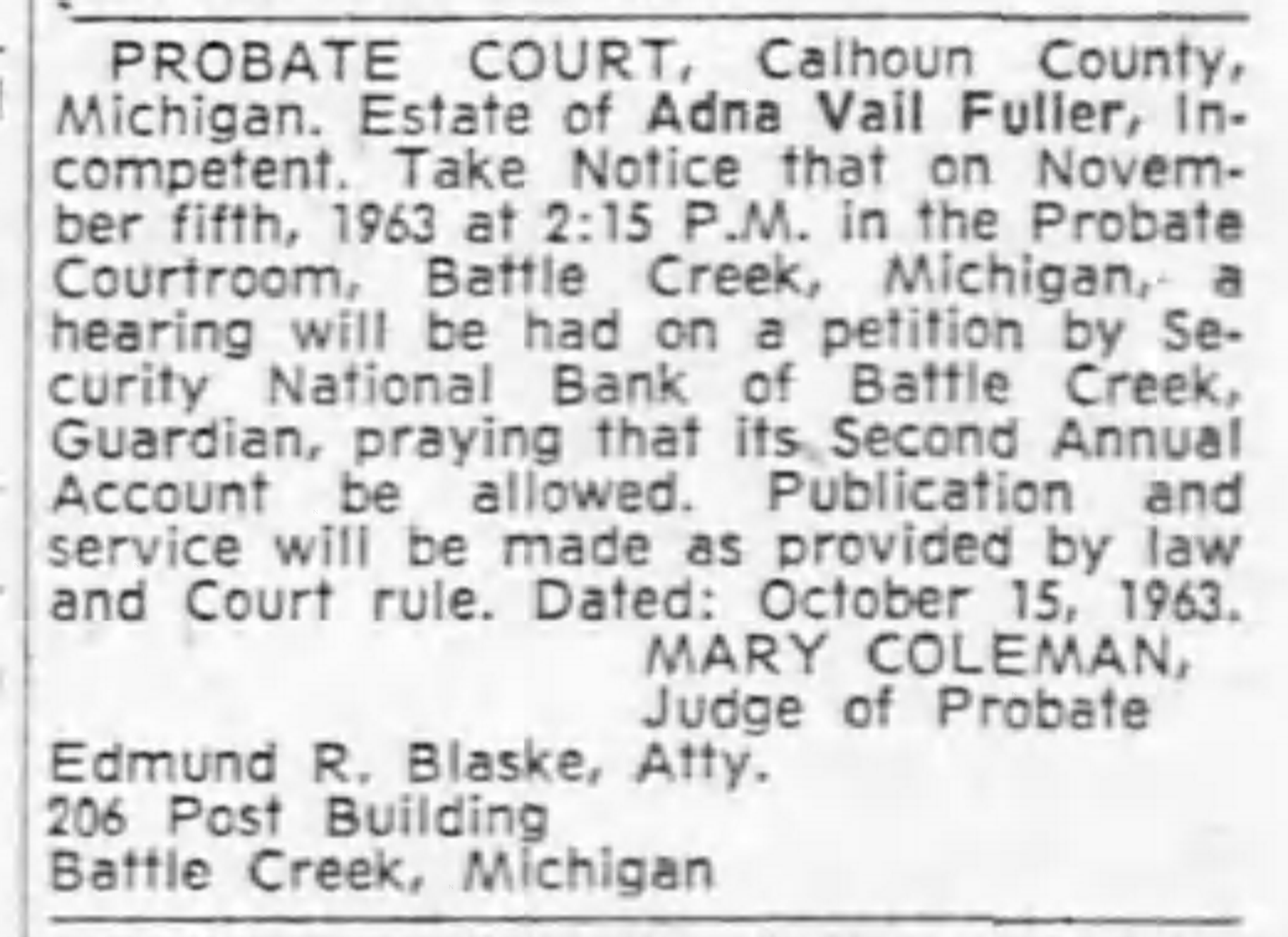
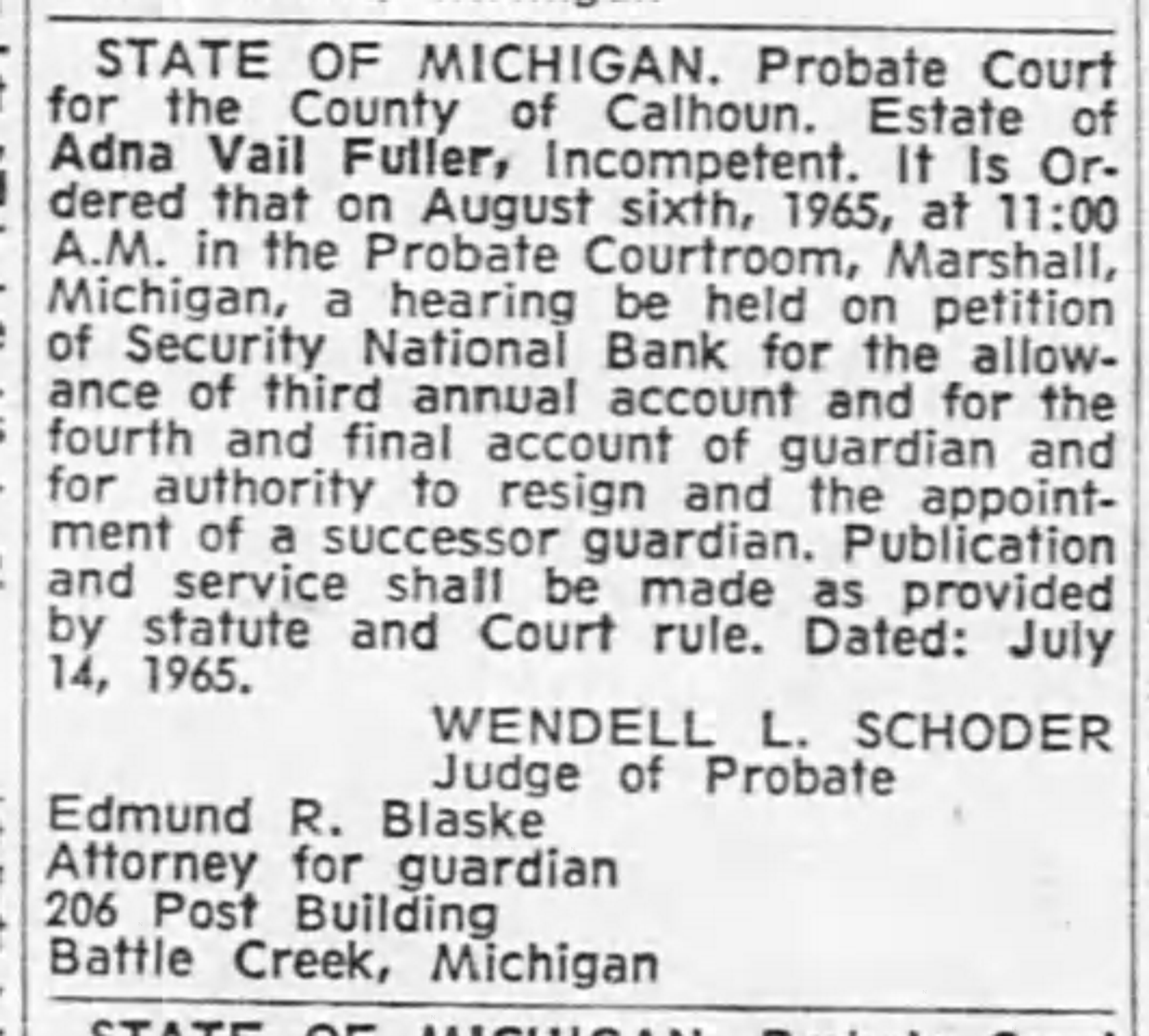
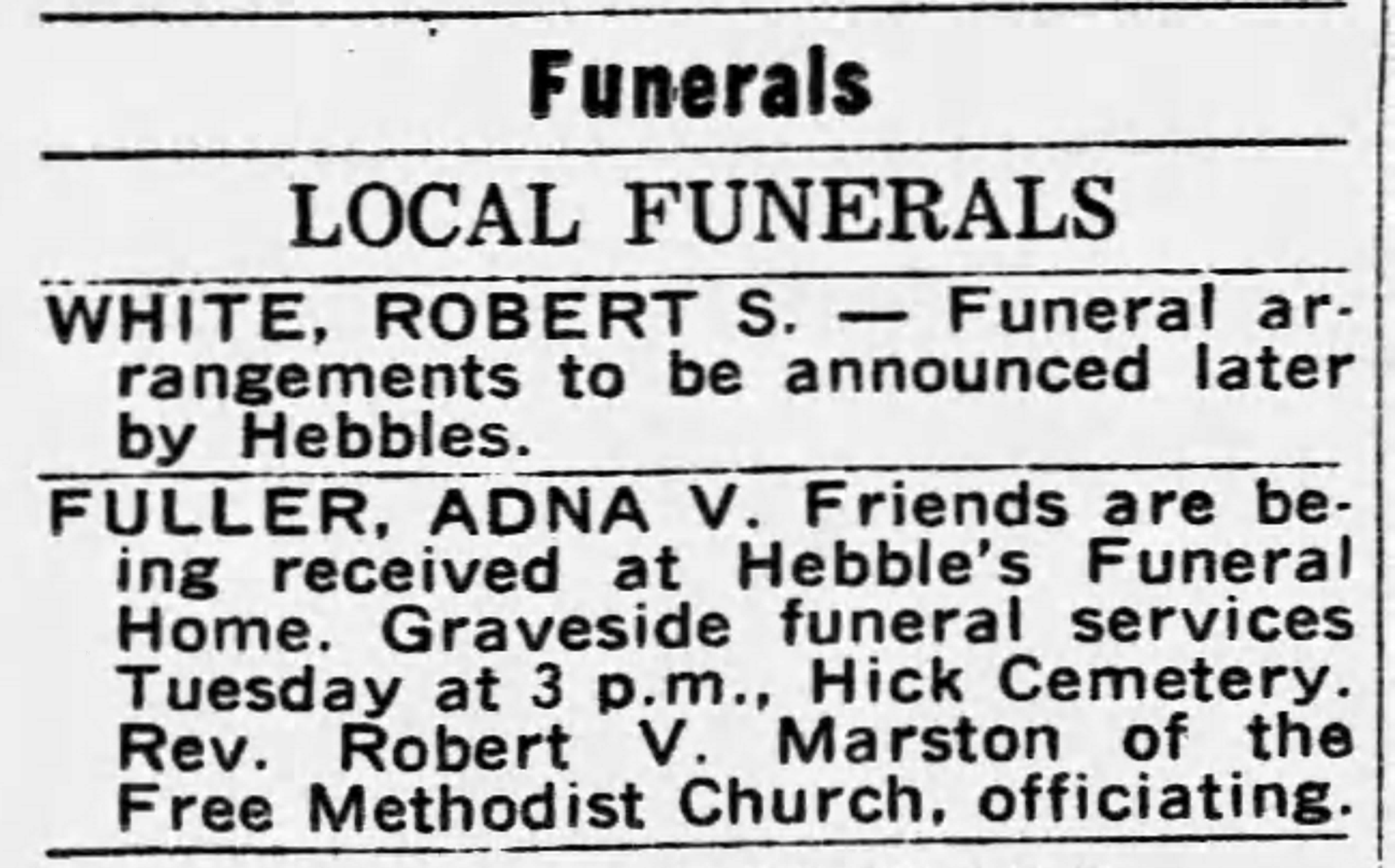
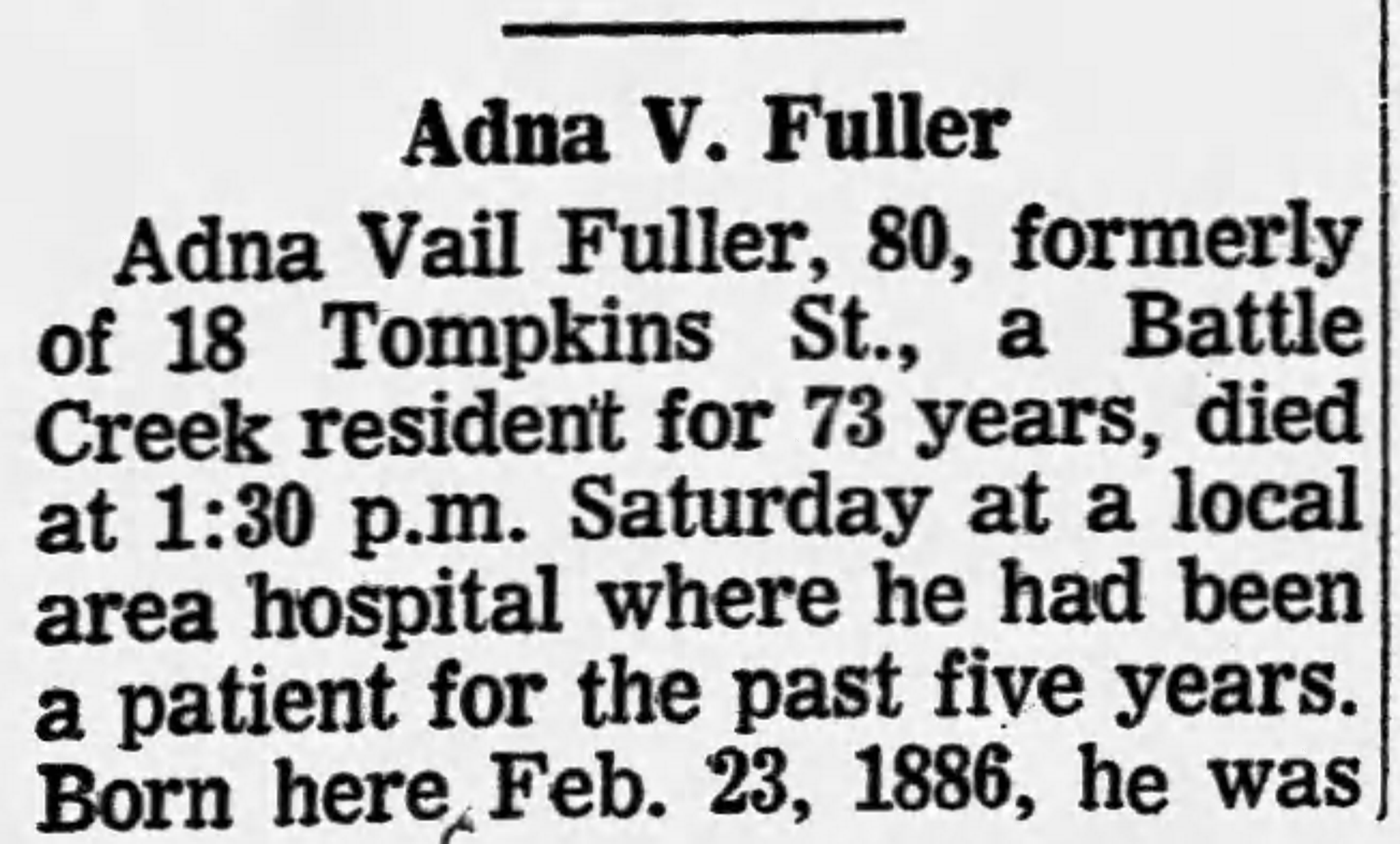
V. Fuller, Battle
Creek Enquirer
(Battle Creek, MI),
Sunday 3 July 1966.
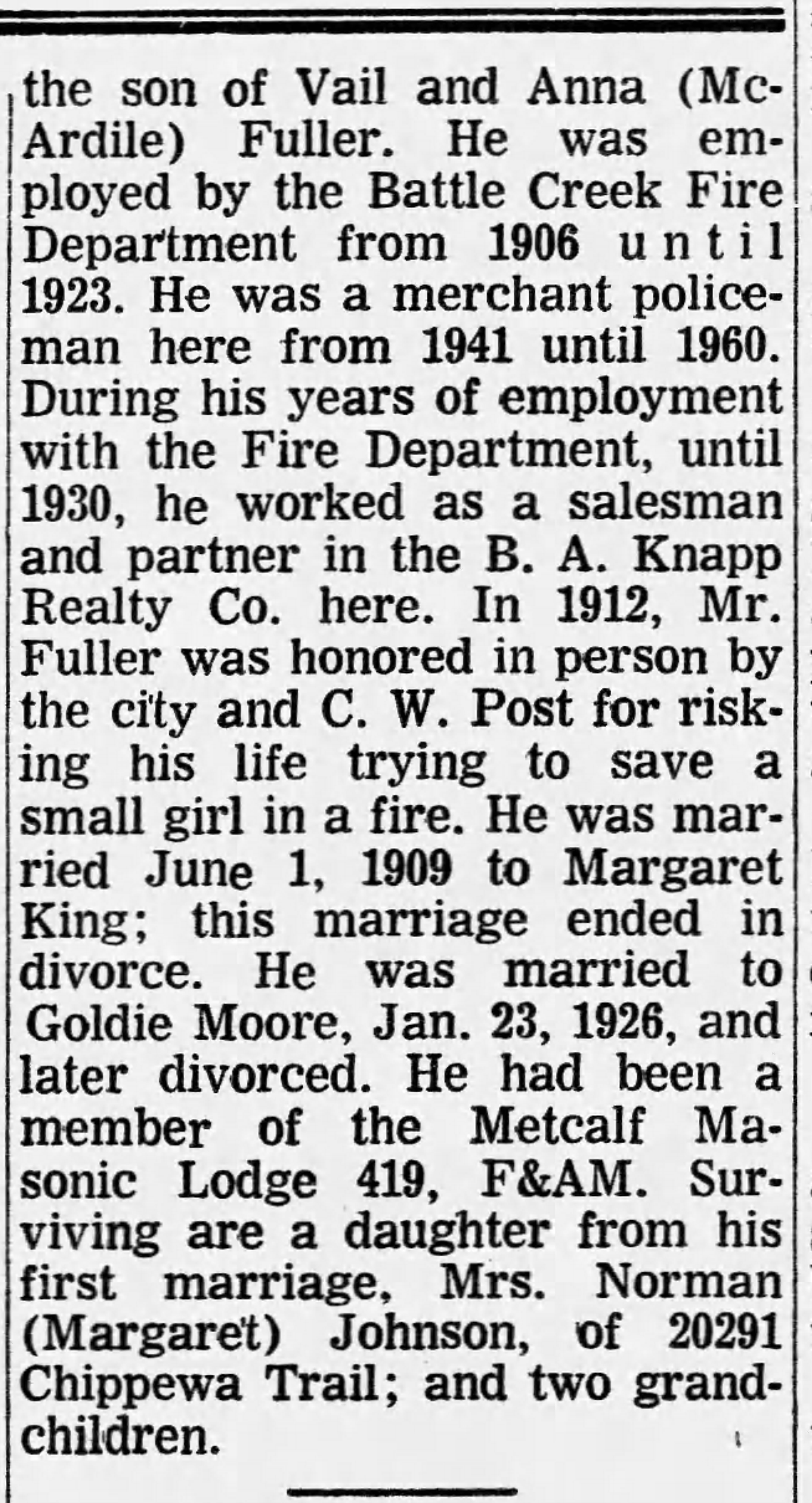
Adna V. Fuller,
continued
Charles Shumaker
Chauncey Roy and Leona L. (Brown) Tungate
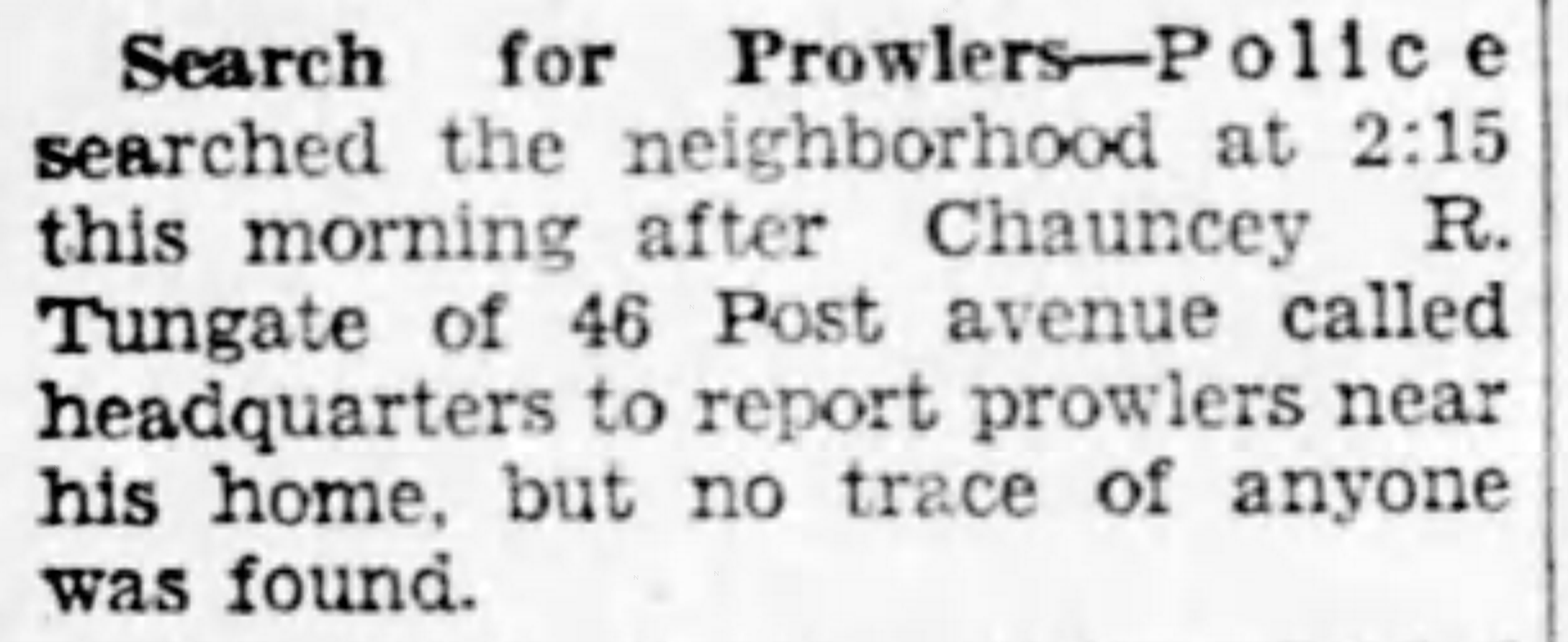
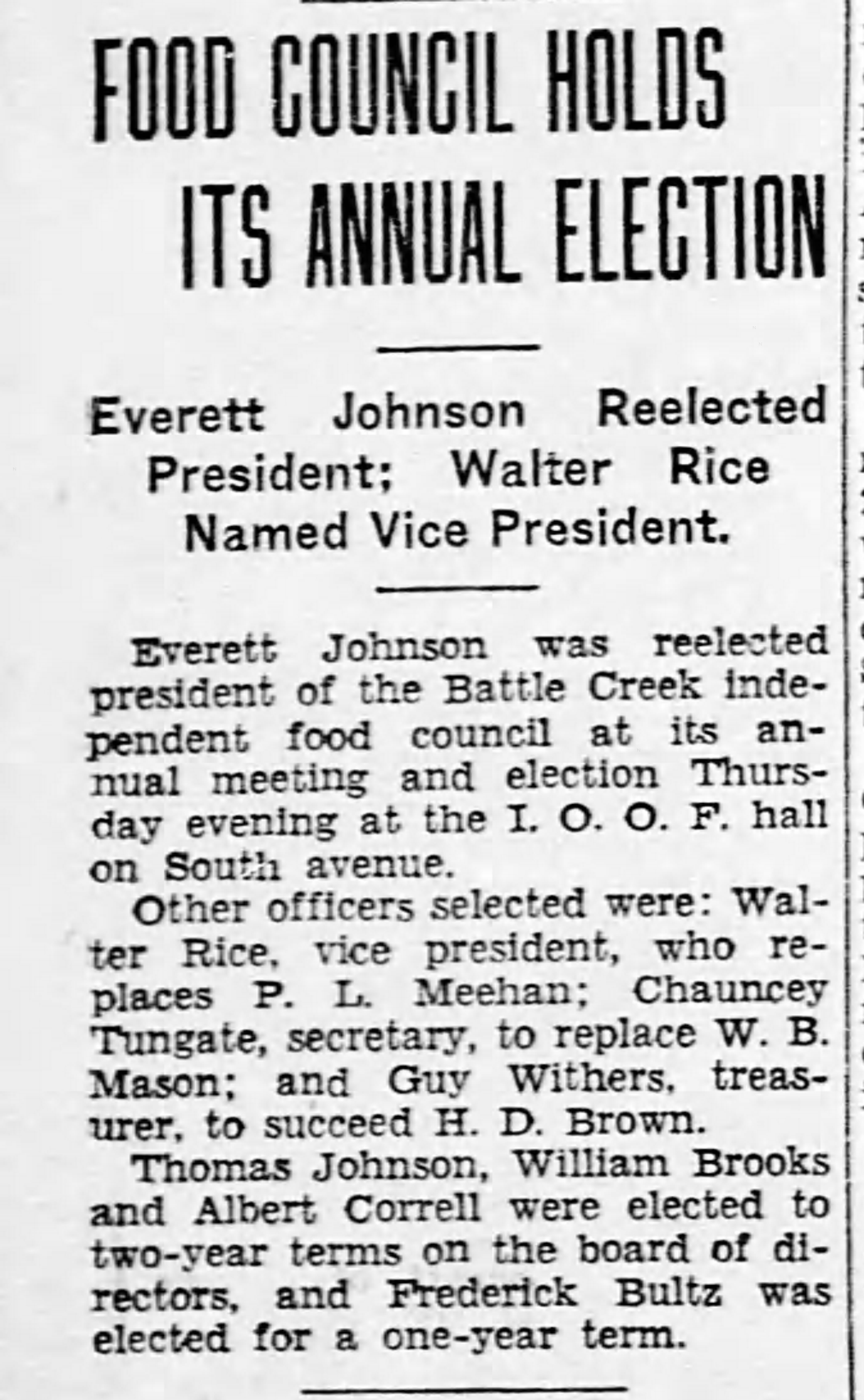
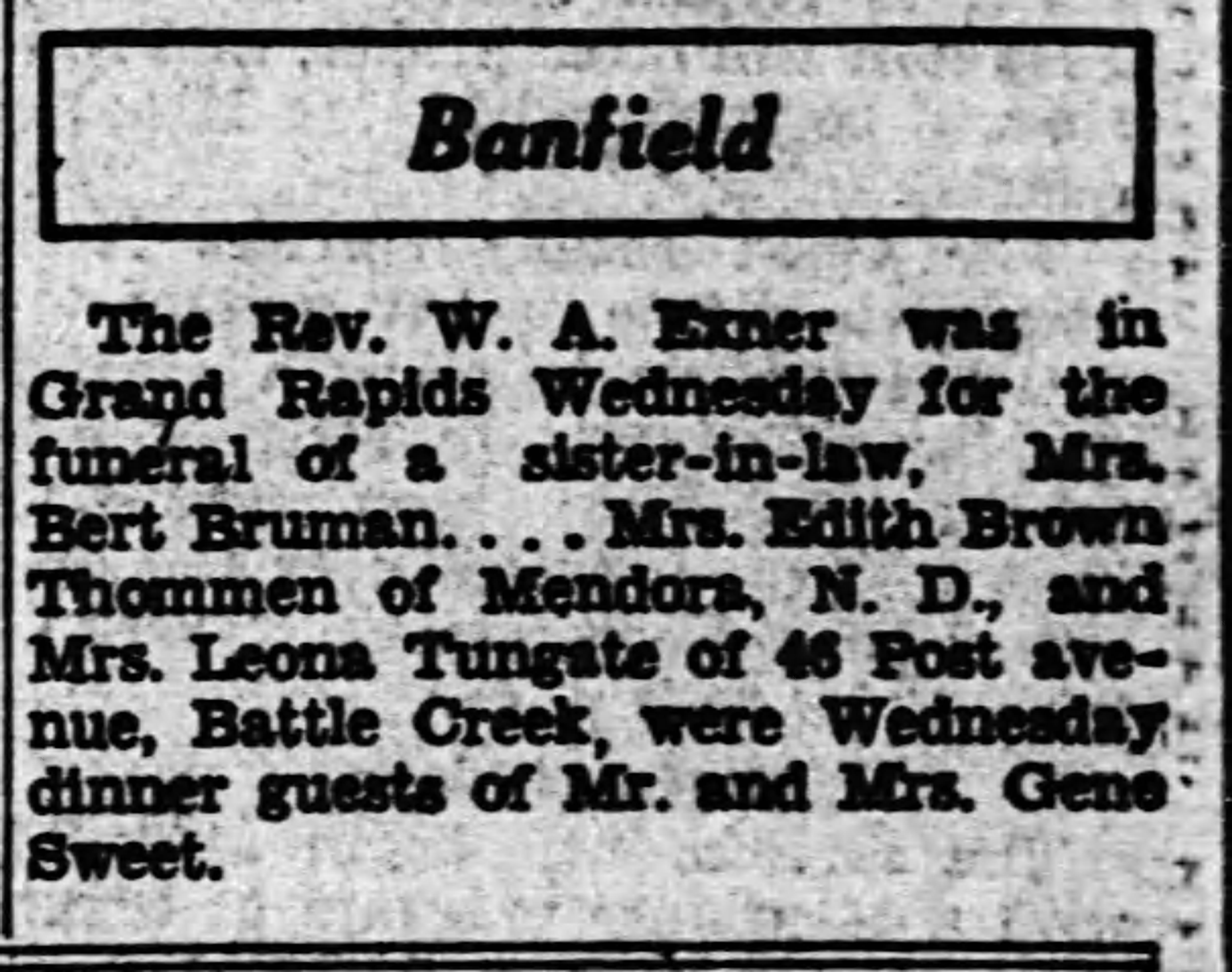

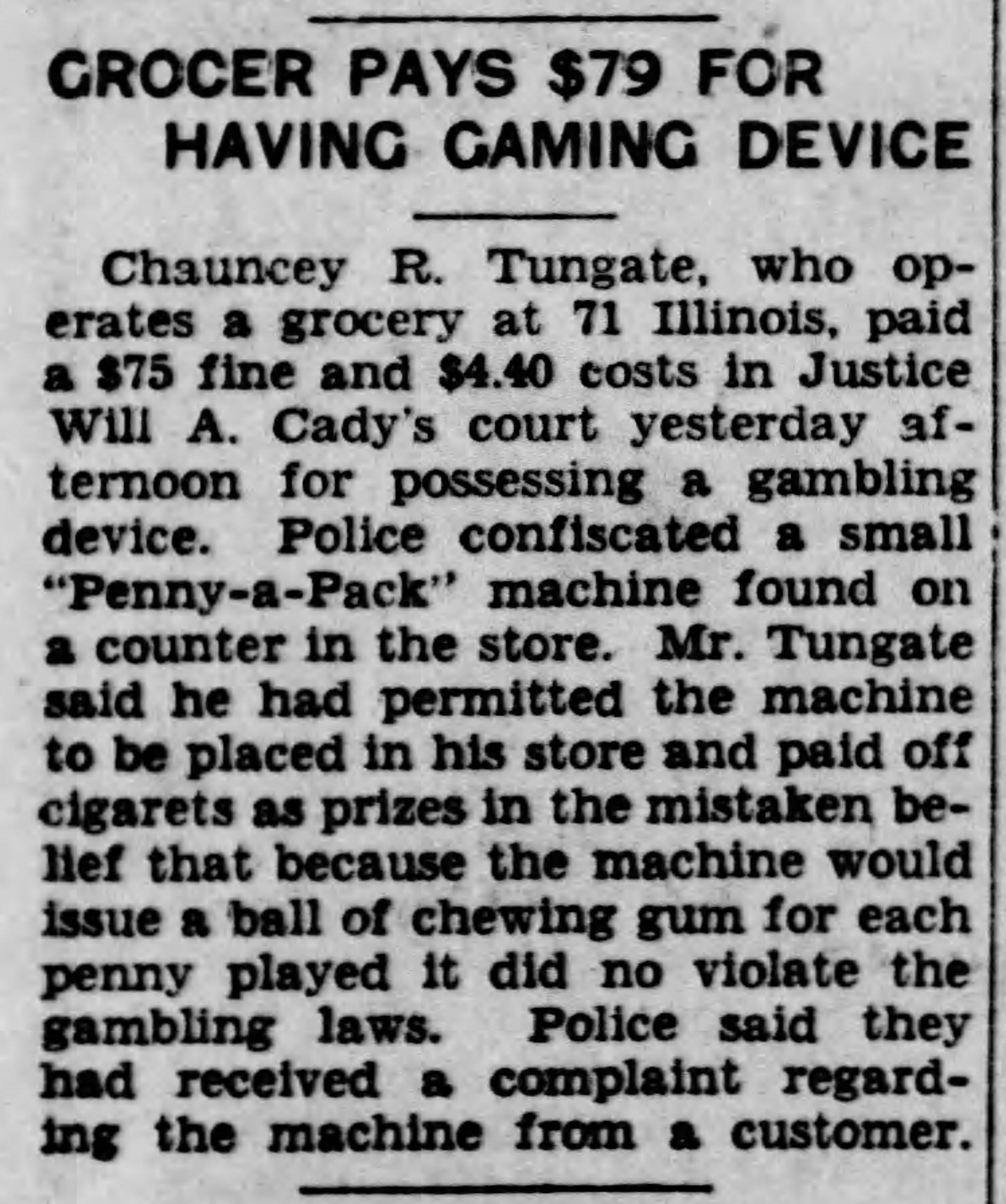



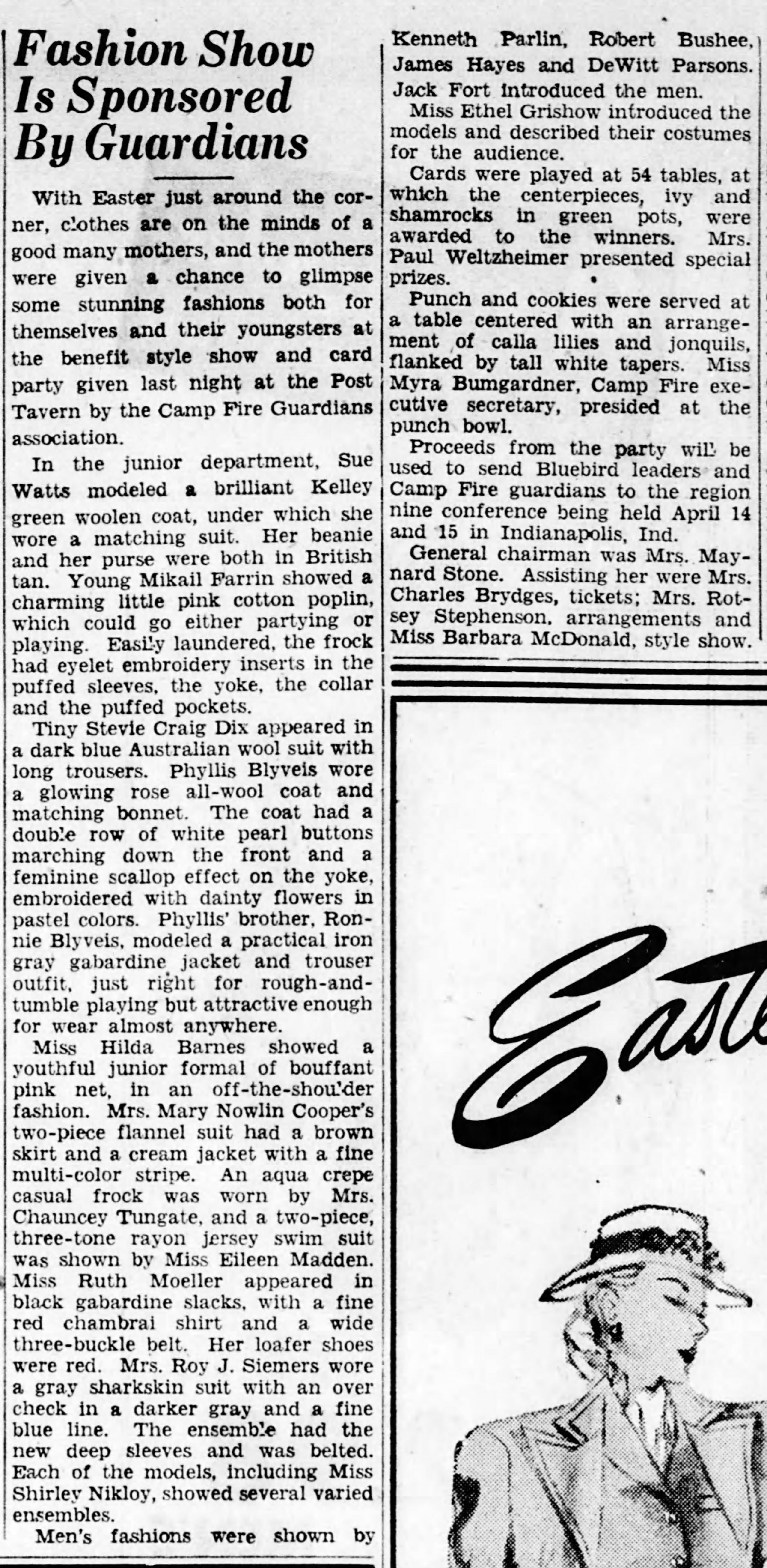
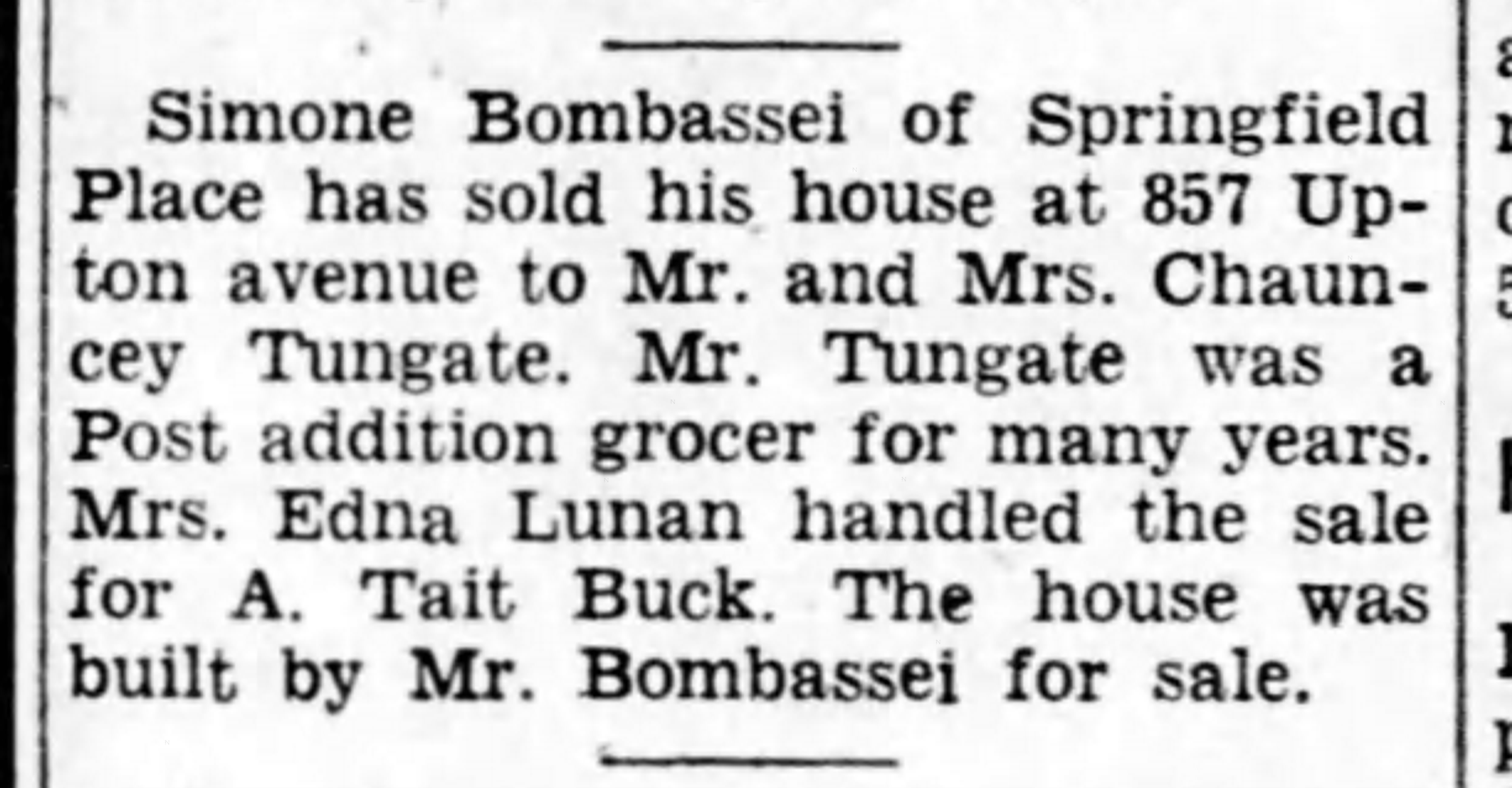
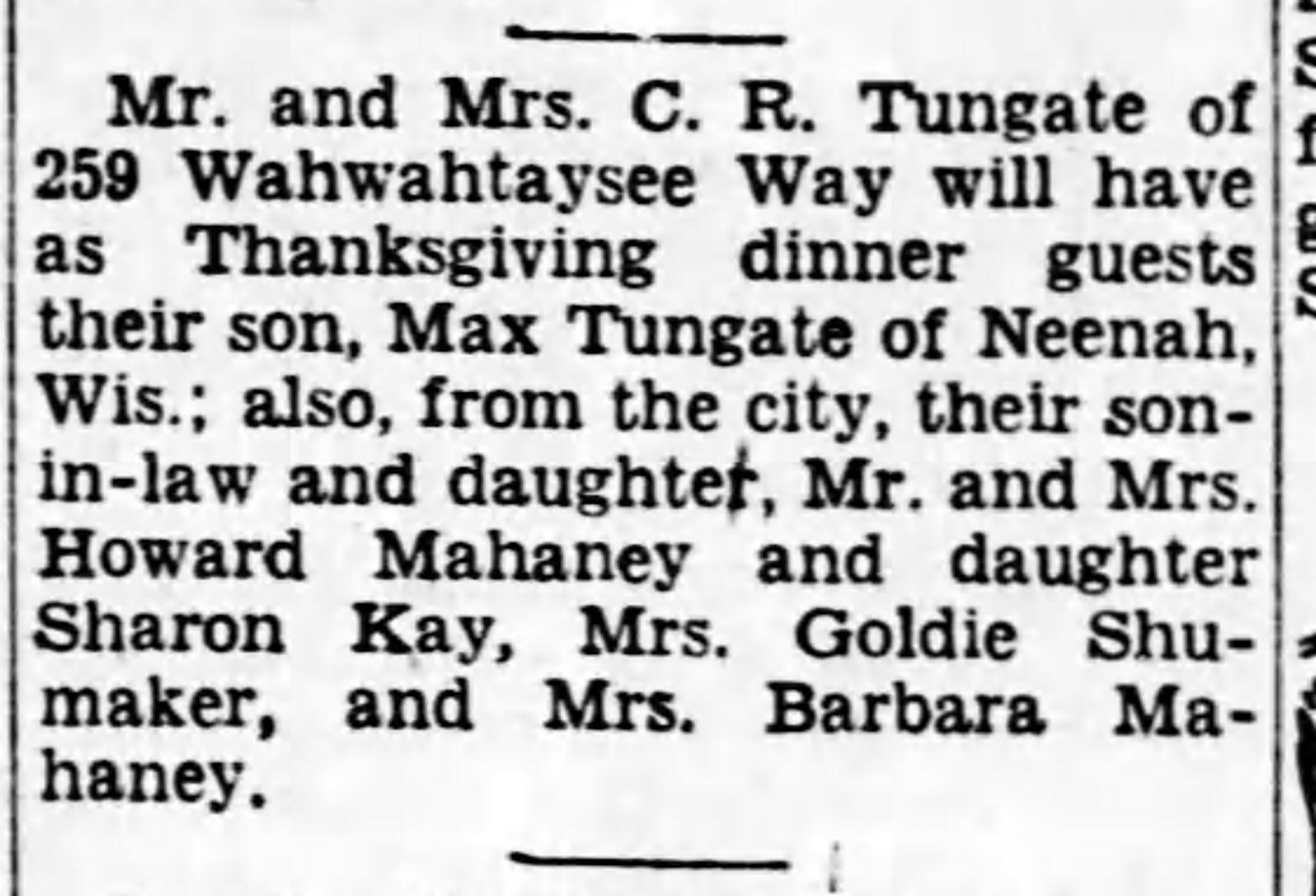
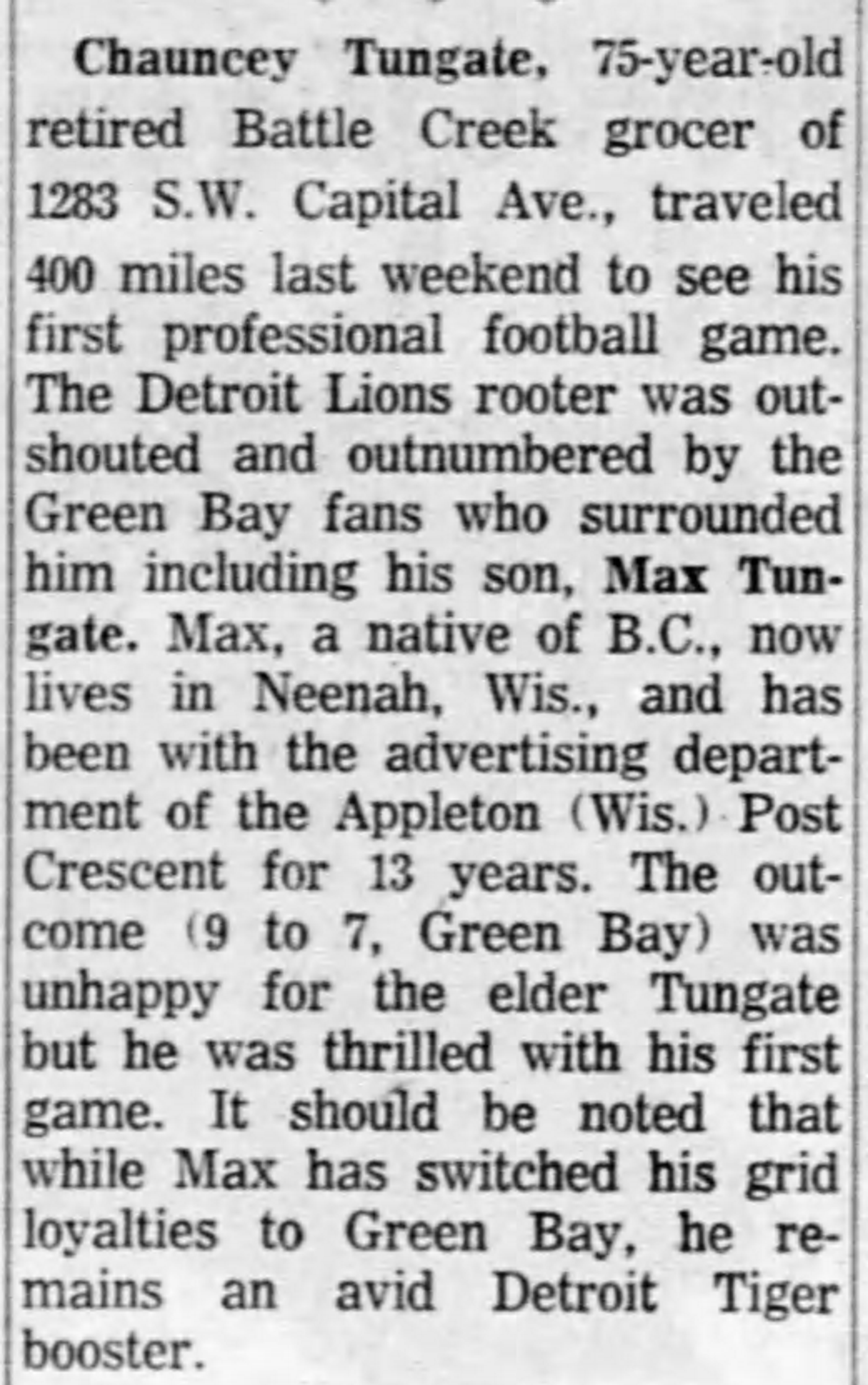
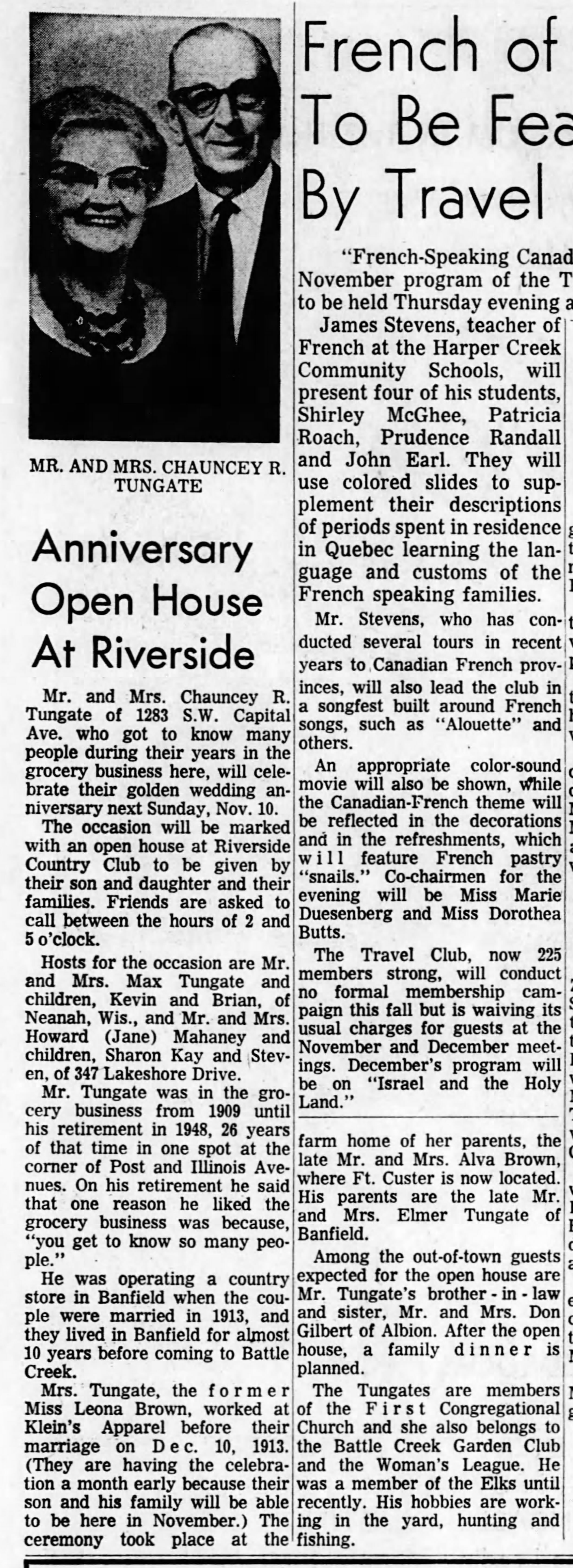

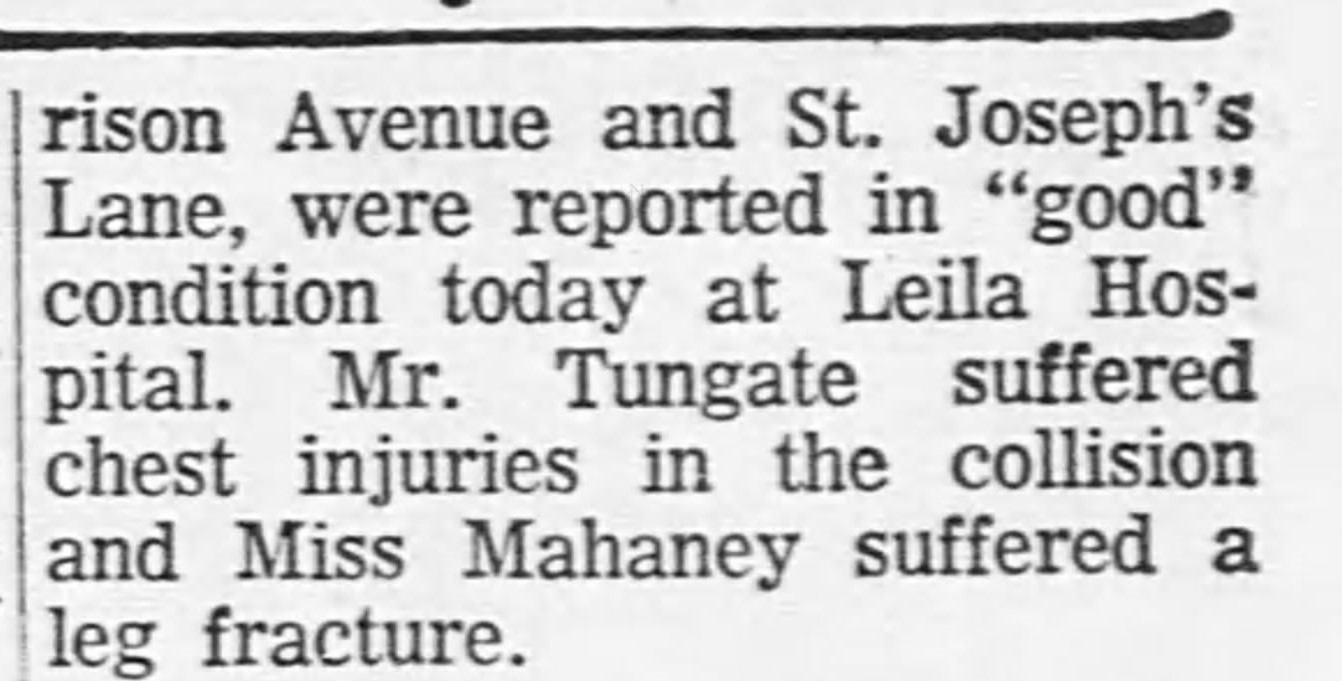

Chauncey R.
Tungate, Battle
Creek Enquirer
(Battle Creek, MI),
Thursday 27
January 1972.
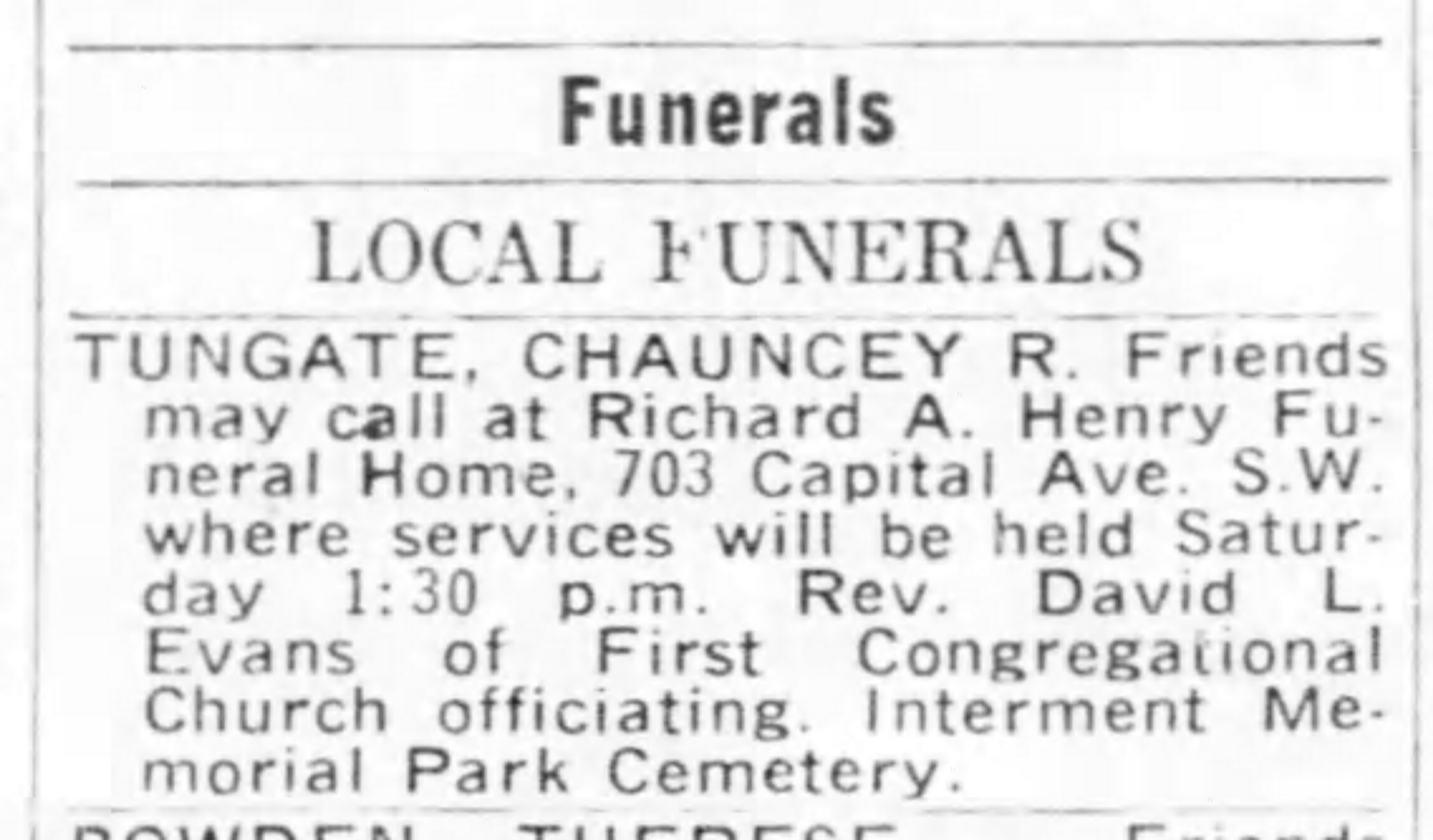
Battle Creek
Enquirer (Battle
Creek, MI), Friday
28 January 1972.
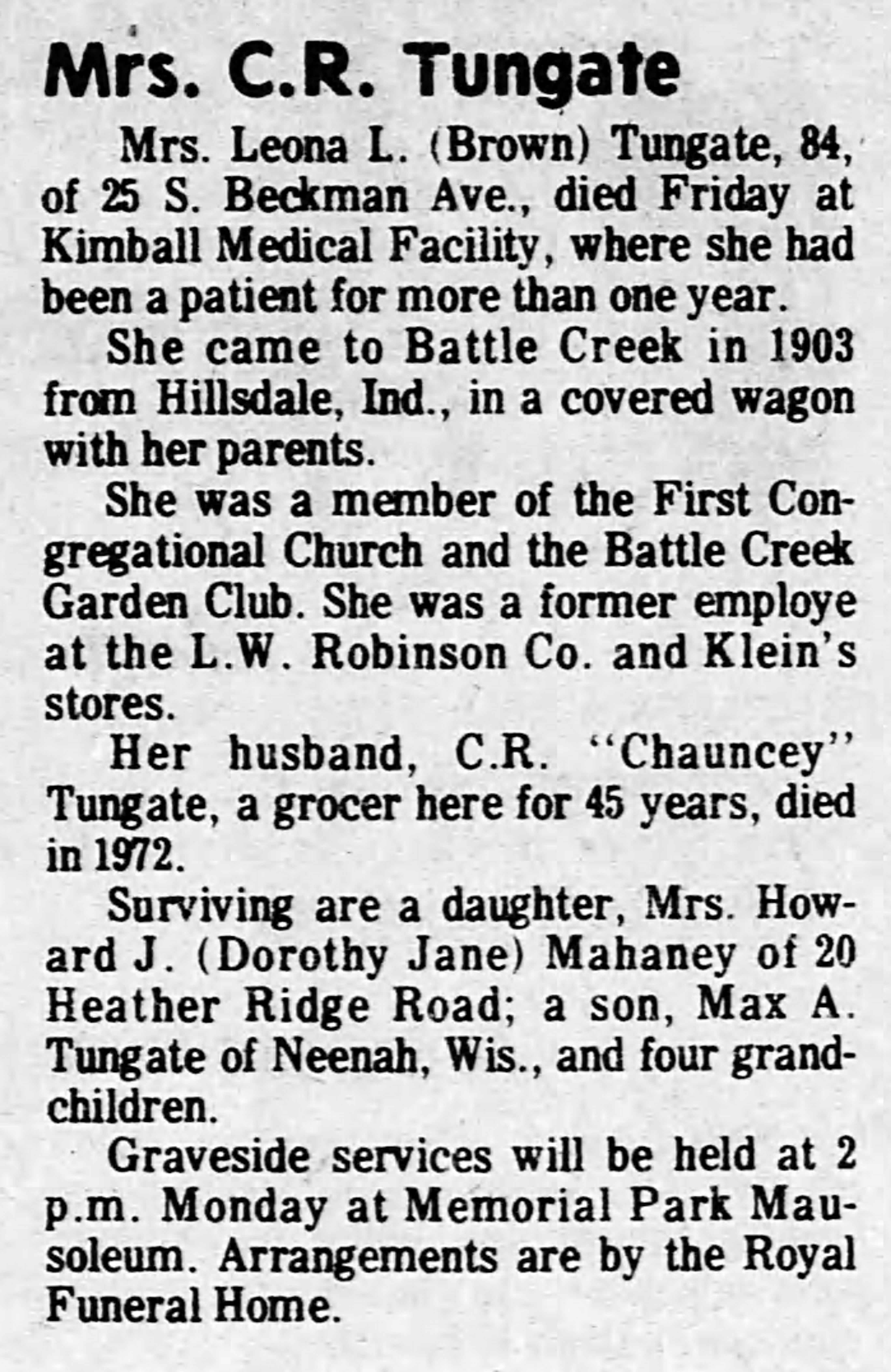
Battle Creek
Enquirer (Battle
Creek, MI), Sunday
26 June 1977.
Copies of census records are shown below as thumbnails. Click on each thumbnail to view a larger version of the record in another tab.
1850
York, Union, Ohio
Source: Seventh Census of the United States, 1850; (National Archives Microfilm Publication M432, 1009 rolls); Records of the Bureau of the Census, Record Group 29; National Archives, Washington, D.C.
1860
Byron,
Genessee, New York
Source: 1860 U.S. census, population schedule. NARA microfilm publication M653, 1,438 rolls. Washington, D.C.: National Archives and Records Administration, n.d.
1870
Washington, Henry, Ohio
Source: 1870 U.S. census, population schedules. NARA microfilm publication M593, 1,761 rolls.
1880
Washington, Henry, Ohio

Alva P. Brown,
Orsmus
Brown;
Year: 1880;
Census Place:
Washington, Henry,
Ohio;
Roll: 1032;
Page: 59C;
Enumeration District:
110
Source: Tenth Census of the United States, 1880. (NARA microfilm publication T9, 1,454 rolls). Records of the Bureau of the Census, Record Group 29. National Archives, Washington, D.C.
1900
Spring, Lincoln, Arkansas
Washington, Grant, Arkansas

J. McKinney;
Year: 1900;
Census Place:
Washington, Grant,
Arkansas;
Page: 3;
Enumeration District:
0035;
FHL microfilm: 1240059
Helt, Vermillion, Indiana
Source: United States of America, Bureau of the Census. Twelfth Census of the United States, 1900. Washington, D.C.: National Archives and Records Administration, 1900. T623, 1854 rolls.
1910
Baltimore, Barry, Michigan

Alva P. Brown;
Roll: T624_636;
Page: 9B;
Enumeration District:
0036;
FHL microfilm: 1374649
Pine Bluff, Jefferson, Arkansas

William H. Boyd;
Street: Fifth Avenue;
Year: 1910;
Census Place: Pine
Bluff Ward 4, Jefferson,
Arkansas;
Roll: T624_54;
Page: 13A;
Enumeration District:
0121;
FHL microfilm: 1374067
Merry Green, Grant, Arkansas

Arther Eastwood;
Roll: T624_51;
Page: 15B;
Enumeration District:
0075;
FHL microfilm: 1374064
Simpson, Grant, Arkansas

Kathren Bachelor
(with Susie McKinney,
boarder);
Year: 1910;
Census Place:
Simpson, Grant,
Arkansas;
Roll: T624_51;
Page: 12A;
Enumeration District:
0079;
FHL microfilm: 1374064
Justice Precinct 3, Hemphill, Texas

Alonzo J. Ennis;
Street Name: Lower
Washata and
Canadian Road;
Roll: T624_1563;
Page: 8B;
Enumeration District:
0139;
FHL microfilm: 1375576
Source: Thirteenth Census of the United States, 1910 (NARA microfilm publication T624, 1,178 rolls). Records of the Bureau of the Census, Record Group 29. National Archives, Washington, D.C.
1920
Battle Creek, Calhoun, Michigan
Albion, Calhoun, Michigan
Kalamazoo, Kalamazoo, Michigan

Kalamazoo State
Hospital;
Building: Main
Building;
Inmate: Alva P. Brown;
Roll: T625_759;
Page: 9B;
Enumeration District:
49
Johnstown, Barry, Michigan
Clarkdale, Yavapai, Arizona

Bertha B. Boyd;
Street Name:
3rd Street;
Roll: T625_52;
Page: 8A;
Enumeration District:
102
Civil District 14, Dyer, Tennessee
Hot Springs, Sierra, New Mexico
Tularosa, Otero, New Mexico
Source: Fourteenth Census of the United States, 1920. (NARA microfilm publication T625, 2076 rolls). Records of the Bureau of the Census, Record Group 29. National Archives, Washington, D.C.
1930
Battle Creek, Calhoun, Michigan

Louisa Brown;
Street Name:
W. Van Buren;
Page: 8B;
Enumeration District:
0018;
FHL microfilm: 2340713

Goldie E. Fuller
Year: 1930;
Census Place:
Battle Creek, Calhoun,
Michigan;
Page: 1A;
Enumeration District:
0033;
FHL microfilm: 2340713

Adna V. Fuller;
Street Name:
E. Kingman Ave.;
Page: 1A;
Enumeration District:
0033;
FHL microfilm: 2340713
(same page as Goldie
but different household)

R. Tungate;
Street Name:
Post Avenue;
Page: 8A;
Enumeration District:
0032;
FHL microfilm: 2340713
Athens, Calhoun, Michigan

Charles A. Brown;
Street: Township
Line Road;
Page: 1A;
Enumeration District:
0009;
FHL microfilm: 2340713
Oakland, Alameda, California
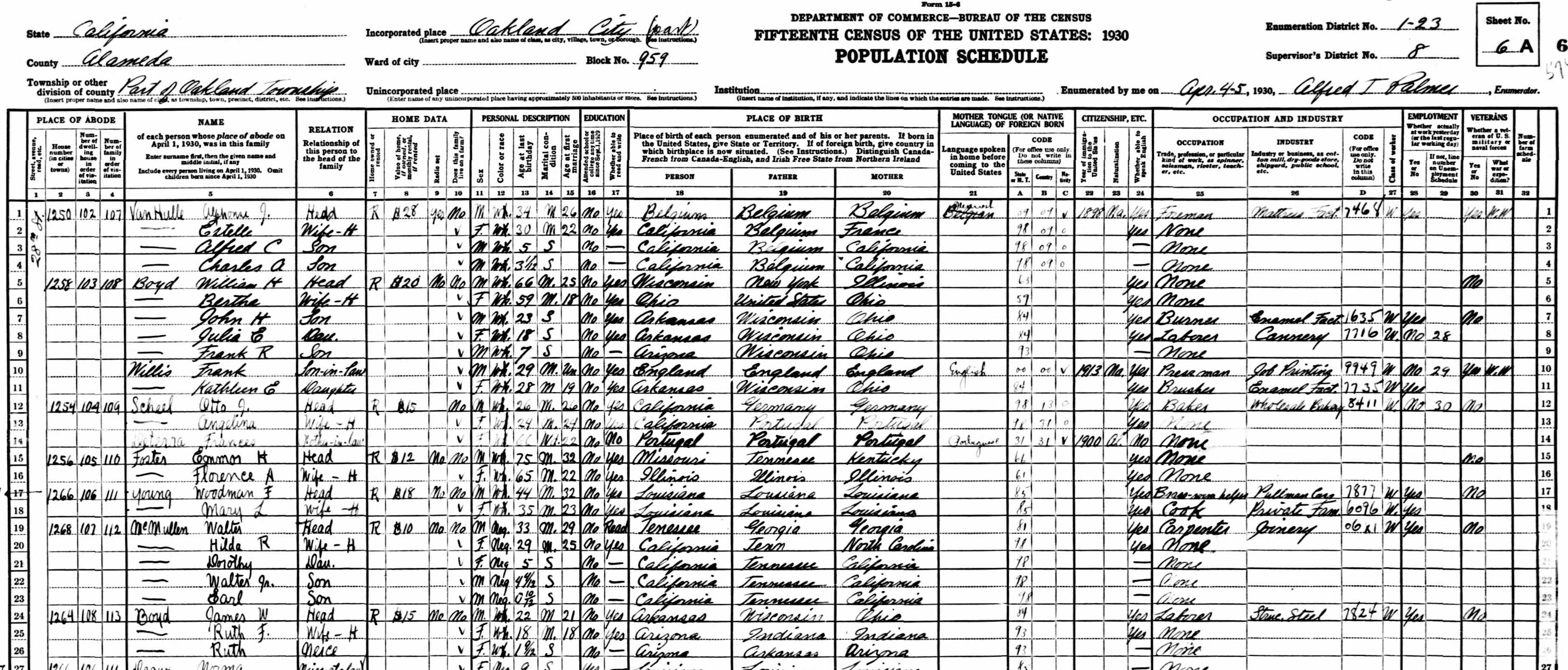
William H. Boyd,
Frank Willis,
James W. Boyd;
Street: 28th Street
(all three households);
Year: 1930;
Census Place: Oakland,
Alameda, California;
Page: 6A;
Enumeration District:
0023;
FHL microfilm: 2339837
Cross City, Dixie, Florida

Mrs. O. M. Eastwood;
Street: Rock Road;
Page: 1A;
Enumeration District:
0004;
FHL microfilm: 2340047
Ajo, Pima, Arizona
Oceanside, San Diego, California
Fairview, Sierra, New Mexico

Ada Ennes;
Street: Chiz Village;
Page: 1B;
Enumeration District:
0009;
FHL microfilm: 2341133
Source: United States of America, Bureau of the Census. Fifteenth Census of the United States, 1930. Washington, D.C.: National Archives and Records Administration, 1930. T626, 2,667 rolls.
1940
Oakland, Alameda, California

William Boyd;
Street: 17th St.;
Year: 1940;
Census Place: Oakland, Alameda,
California;
Roll: m-t0627-00442;
Page: 2A;
Enumeration District:
61-88

William Boyd;
Continuation of
previous record
Ajo, Pima, Arizona
Jacumba, San Diego, California
Flint, Genesee, Michigan

Guest: Goldie E.
Brown;
Roll: m-t0627-01895;
Page: 84A;
Enumeration District:
85-128
Battle Creek, Calhoun, Michigan
Source: United States of America, Bureau of the Census. Sixteenth Census of the United States, 1940. Washington, D.C.: National Archives and Records Administration, 1940. T627, 4,643 rolls.
Images of portions of city directory pages are shown below as thumbnails. Click on each thumbnail to view a larger version of the record in another tab.
U.S. City Directories
Battle Creek,
Michigan, City
Directory, 1908
Brown,
Battle Creek,
Calhoun, Michigan,
City Directory, 1918
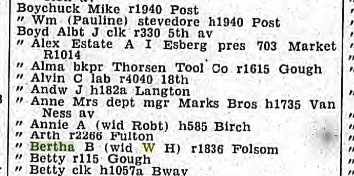
San Francisco,
California, City
Directory, 1933
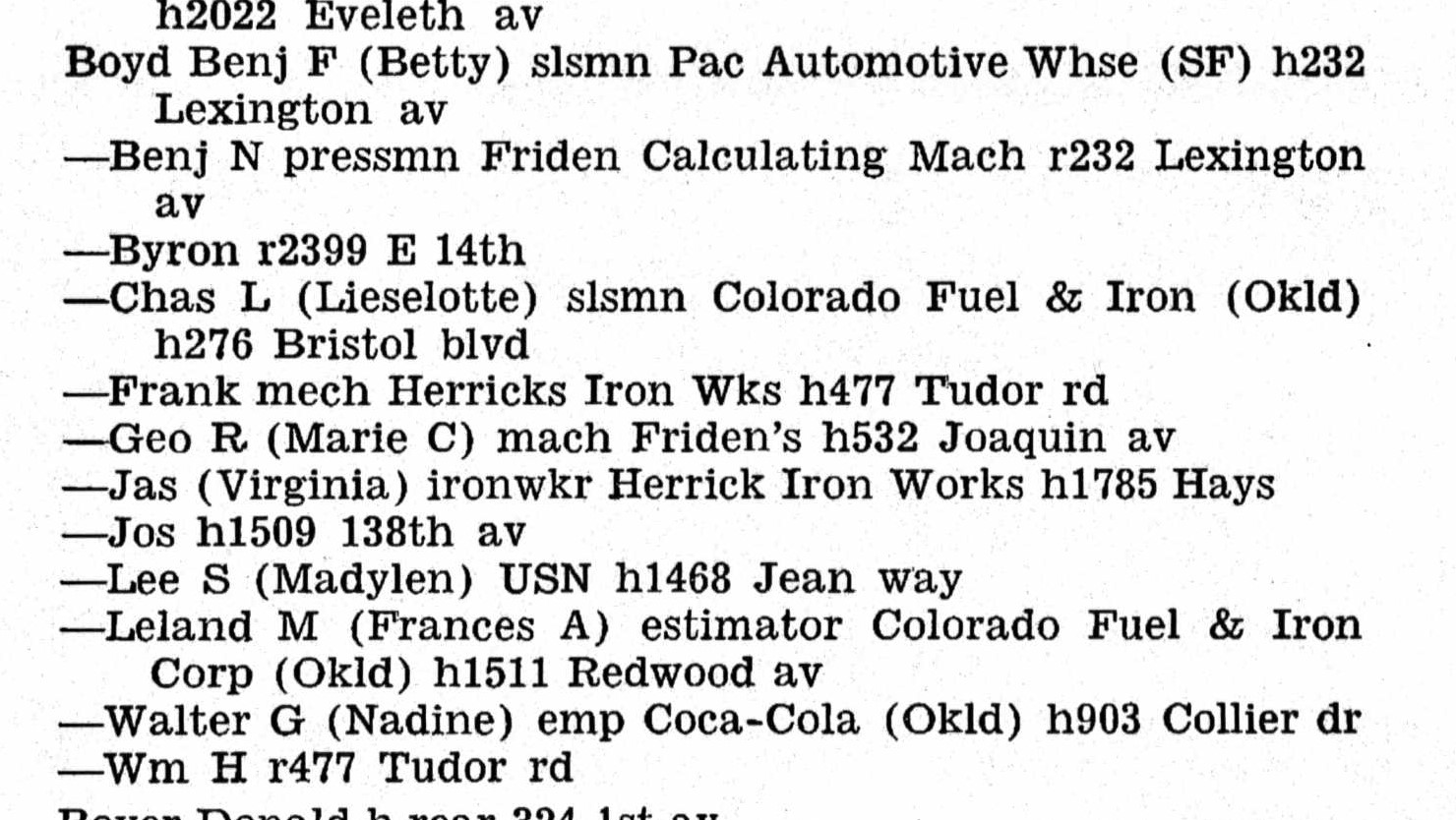
San Leandro,
California, City
Directory, 1955
(note that the
widowed Wm. H.
was living with his
son Frank at the
time)
Source: U.S. City Directories, 1822-1995 [database on-line]. Provo, UT, USA: Ancestry.com Operations, Inc., 2011.
The Farm Journal Illustrated Rural Directory of Barry County, Michigan
Source: The Farm Journal Illustrated Rural Directory of Barry County, Michigan, Philadelphia: Wilmer Atkinson Company, 1917, p. 118.
Phoenix, Arizona City Directory, 1923
Source: Copy of a city directory page from the files of Darryl W. Boyd.
Alva's patents:
View Alva's spring bed-bottom patent:
Source: Brown, Alva P. (Texas, Henry, Ohio), Improvements in Spring Bed-bottoms, US163356A, United States Patent and Trademark Office, 18 May 1875.
View Alva's bedstead patent:
Source: Brown, Alva P. (Texas, Henry, Ohio), Bedstead, US252354A, United States Patent and Trademark Office, 17 January 1882.
View Alva's chair patent:
Source: Brown, Alva P. (Hillsdale, Vermillion, Indiana), Chair, US543640A, United States Patent and Trademark Office, 30 July 1895.
Images of the prison records are shown below as thumbnails. Click on each of the thumbnails to view a larger version of the record in another tab.
William Henry Boyd
Records of Prisoners, McNeil Island Penitentiary, Washington, 1933:
Source: NARA; Washington, DC; McNeil Island Penitentiary Records of Prisoners Received, 1887-1951; Microfilm Series: M1619; Microfilm Roll: 3 Source Information. Ancestry.com. McNeil Island, Washington, U.S. Penitentiary, Photos and Records of Prisoners Received, 1887-1939 [database on-line]. Provo, UT, USA: Ancestry.com Operations Inc, 2008.
U.S. General Land Office Records
Name: James Ennes Brown
Issue Date: 18 Dec 1936
Place: San Diego, California, USA
Township: 018s
Range: 006E
Aliquots: Lot/Trct 27
Section: 13
Accession Number: 1087579
Document Number: 048460
Name: James Ennes Brown
Issue Date: 18 Dec 1936
Place: San Diego, California, USA
Township: 018s
Range: 006E
Aliquots: Lot/Trct 24
Section: 13
Accession Number: 1087579
Document Number: 048460
Name: James Ennes Brown
Issue Date: 18 Dec 1936
Place: San Diego, California, USA
Meridian: San Bernardino
Township: 018s
Range: 006E
Aliquots: Lot/Trct 23
Section: 13
Accession Number: 1087579
Document Number: 048460
Name: James Ennes Brown
Issue Date: 18 Dec 1936
Place: San Diego, California, USA
Township: 018s
Range: 006E
Aliquots: Lot/Trct 4
Section: 24
Accession Number: 1087579
Document Number: 048460
Name: James Ennes Brown
Issue Date: 18 Dec 1936
Place: San Diego, California, USA
Township: 018s
Range: 006E
Aliquots: Lot/Trct 25
Section: 13
Accession Number: 1087579
Document Number: 048460
Name: James Ennes Brown
Issue Date: 18 Dec 1936
Place: San Diego, California, USA
Township: 018s
Range: 006E
Aliquots: Lot/Trct 1
Section: 24
Accession Number: 1087579
Document Number: 048460
Name: James Ennes Brown
Issue Date: 18 Dec 1936
Place: San Diego, California, USA
Township: 018s
Range: 006E
Aliquots: Lot/Trct 2
Section: 24
Accession Number: 1087579
Document Number: 048460
Name: James Ennes Brown
Issue Date: 18 Dec 1936
Place: San Diego, California, USA
Township: 018s
Range: 006E
Aliquots: Lot/Trct 26
Section: 13
Accession Number: 1087579
Document Number: 048460
Name: James Ennes Brown
Issue Date: 18 Dec 1936
Place: San Diego, California, USA
Township: 018s
Range: 006E
Aliquots: Lot/Trct 3
Section: 24
Accession Number: 1087579
Document Number: 048460
Access the General Land Office entry for the lots above at:
Source: Ancestry.com. U.S. General Land Office Records, 1776-2015 [database on-line]. Provo, UT, USA: Ancestry.com Operations Inc, 2008. Original data: United States. Bureau of Land Management, General Land Office Records. Automated Records Project; Federal Land Patents, State Volumes. http://www.glorecords.blm.gov/. Springfield, Virginia: Bureau of Land Management, Eastern States, 2007.
Images of the employment records are shown below as thumbnails. Click on each of the thumbnails to view a larger version of the record in another tab.
WPA Records
"The Works Progress Administration (renamed in 1939 as the Work
Projects Administration; WPA) was the largest and most ambitious
American New Deal agency, employing millions of unemployed people
(mostly unskilled men) to carry out public works projects,[1]
including the construction of public buildings and roads." (Wikipedia,
https://en.wikipedia.org/wiki/Works_Progress_Administration)
Note: Some of the following records are duplicates, where a portion of
the document scanned was blurred. Images appear in the order in which
they found in their respective folder.
Records in the WPA folder for William Henry Boyd:
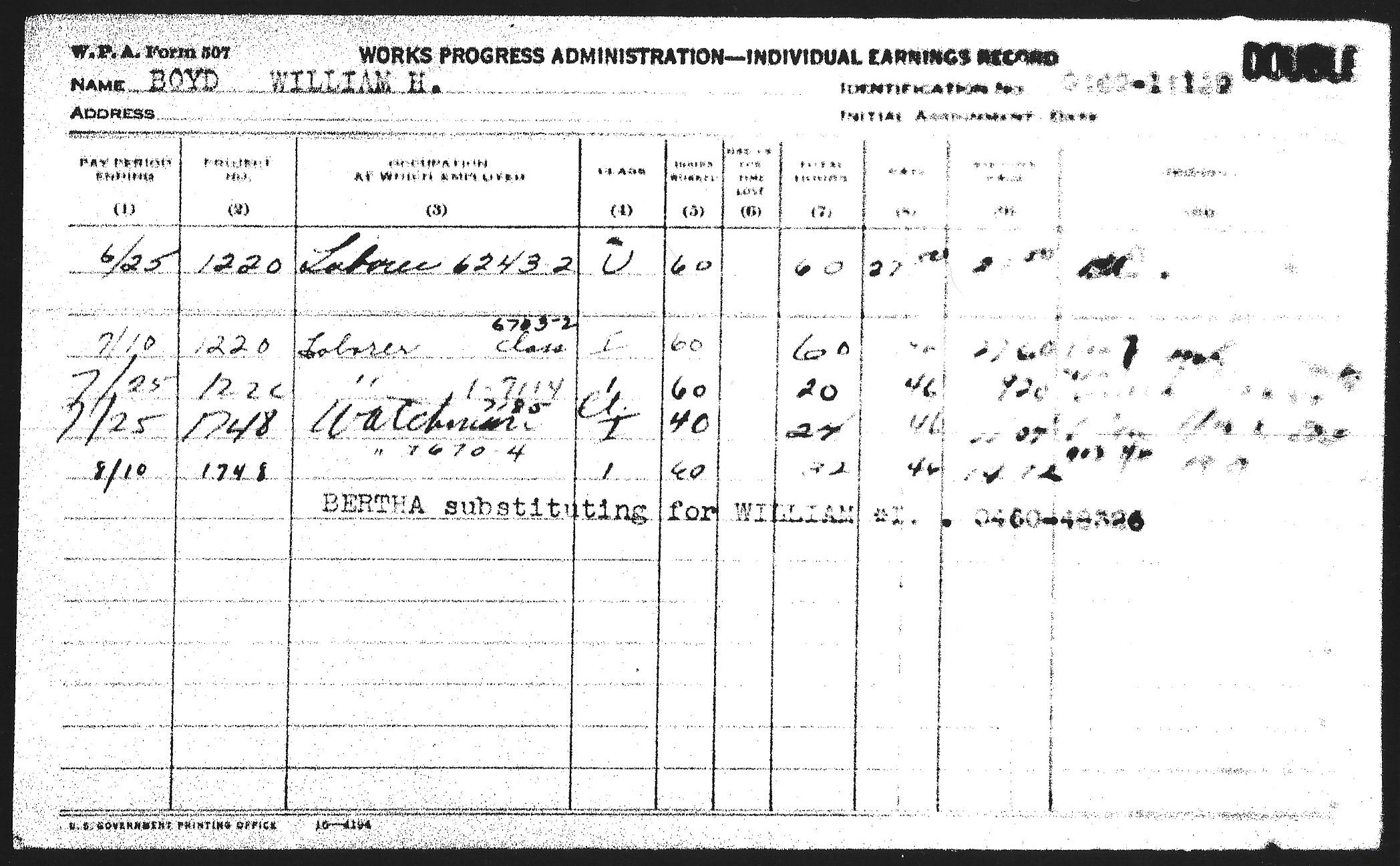
record, Copy 1

record, Copy 2
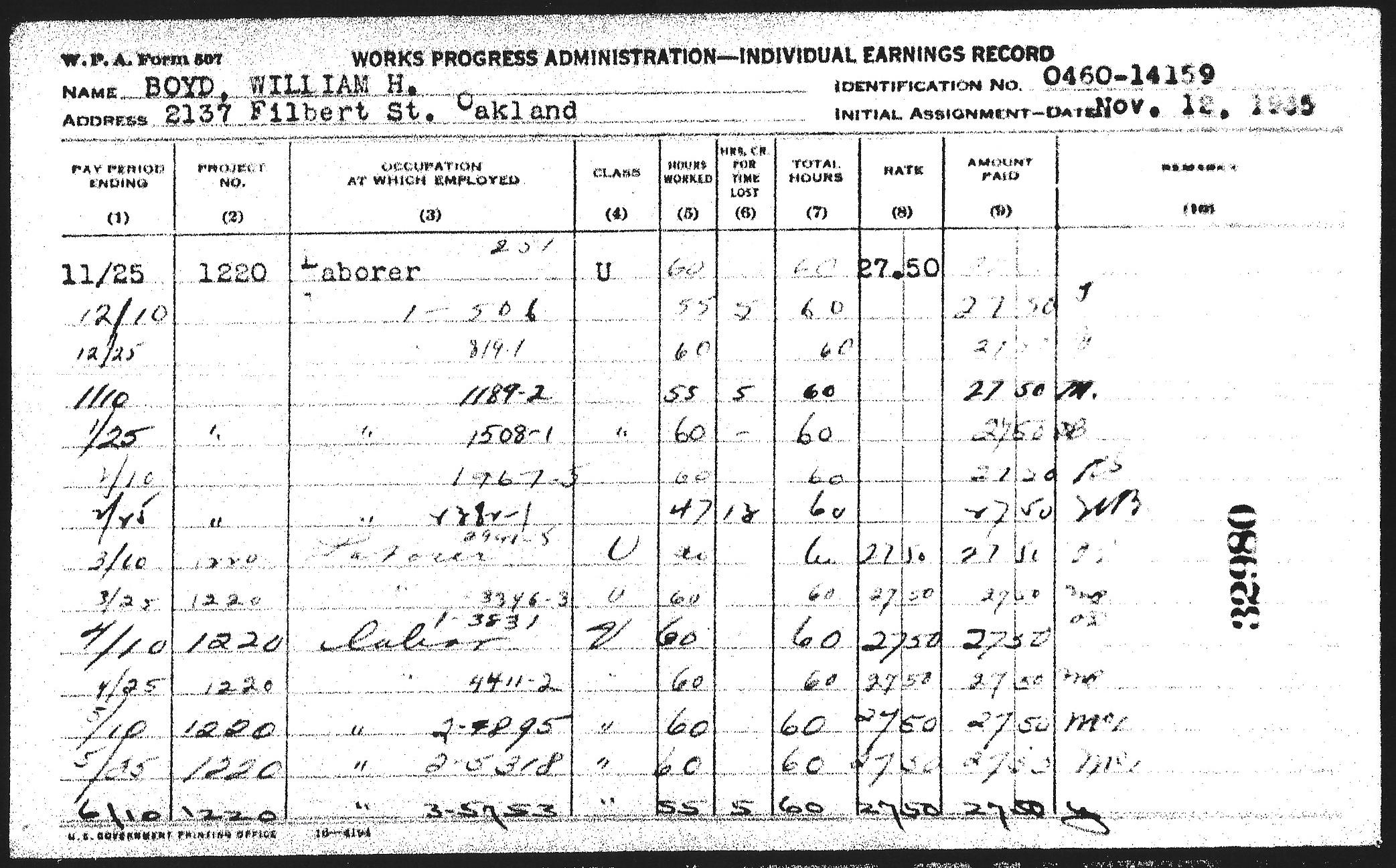
record
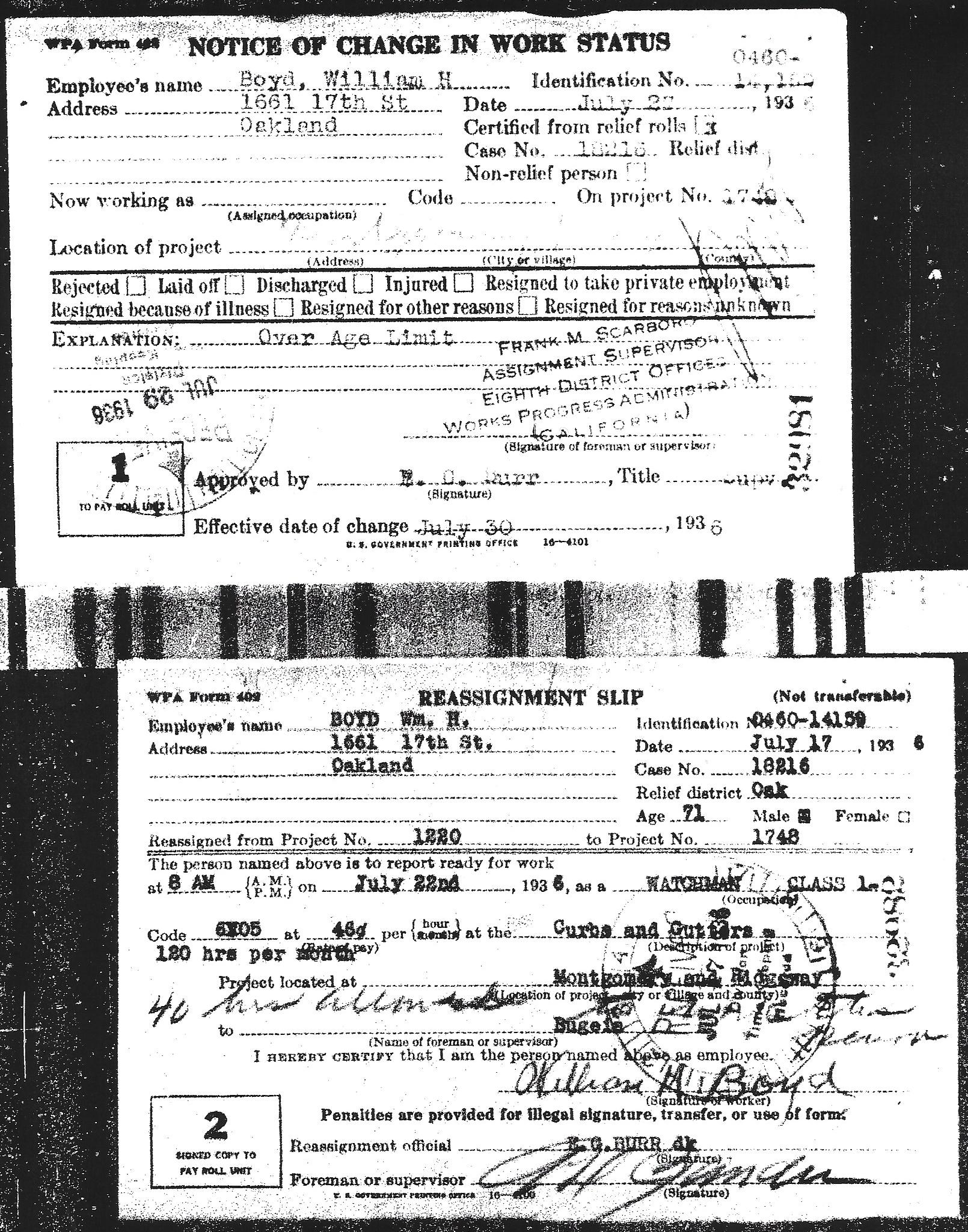
of work status and
reassignment slip,
July 1936
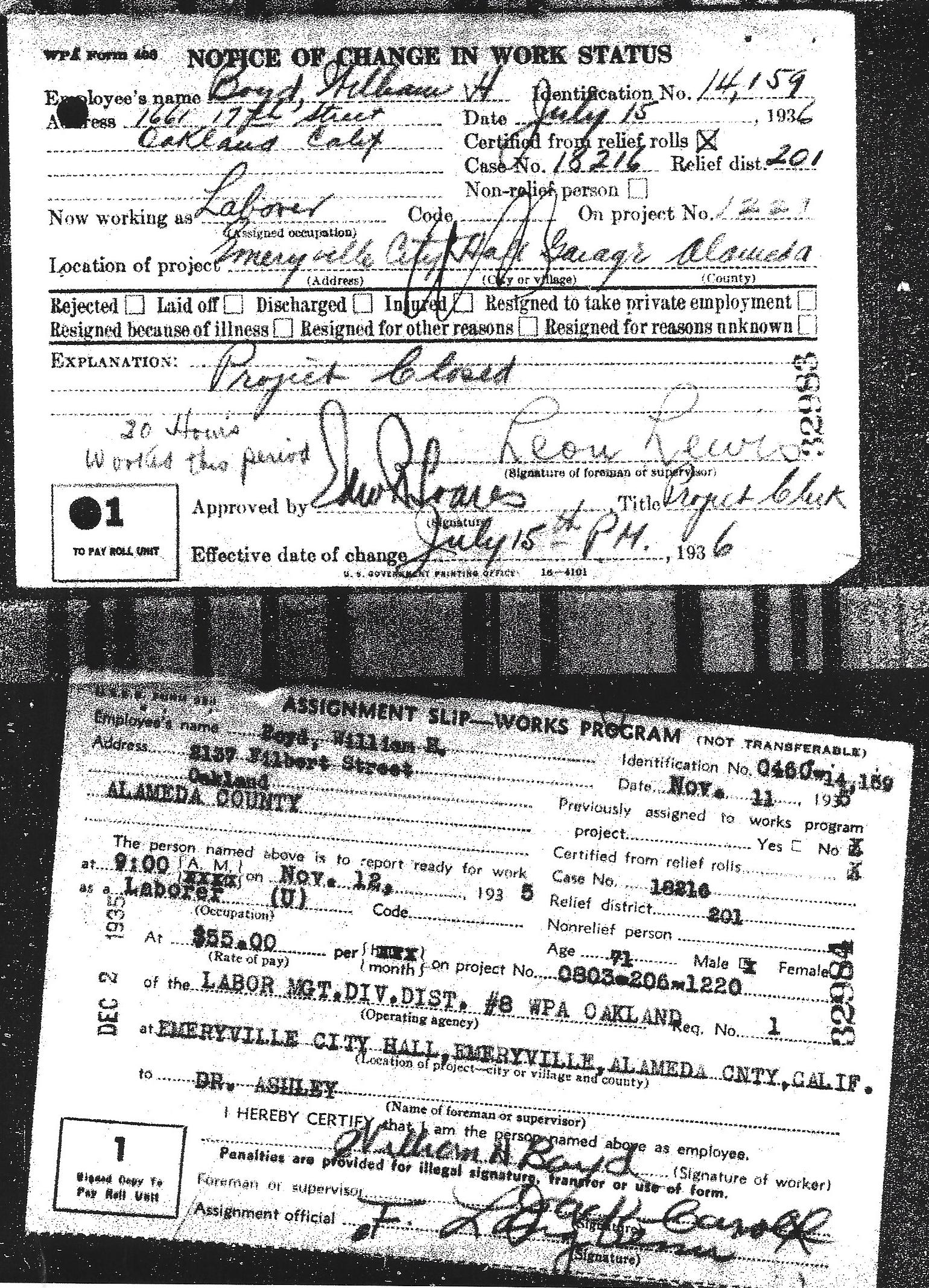
of work status,
July 1936,
Assignment slip,
Nov 1935
Records in the WPA folder for Bertha Boyd:
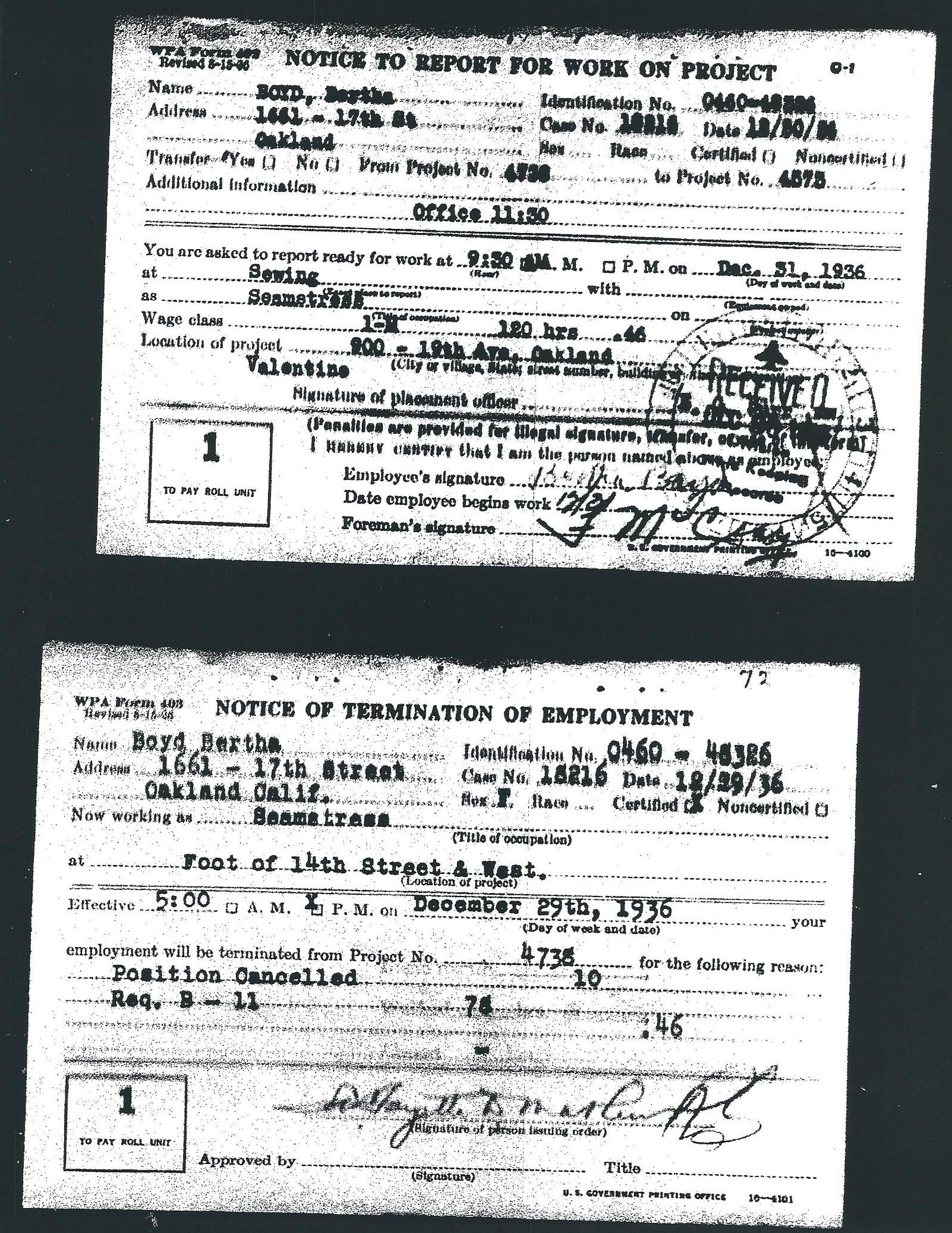
work on project,
31 Dec 1936,
Notice of
termination of
employment,
29 Dec 1936
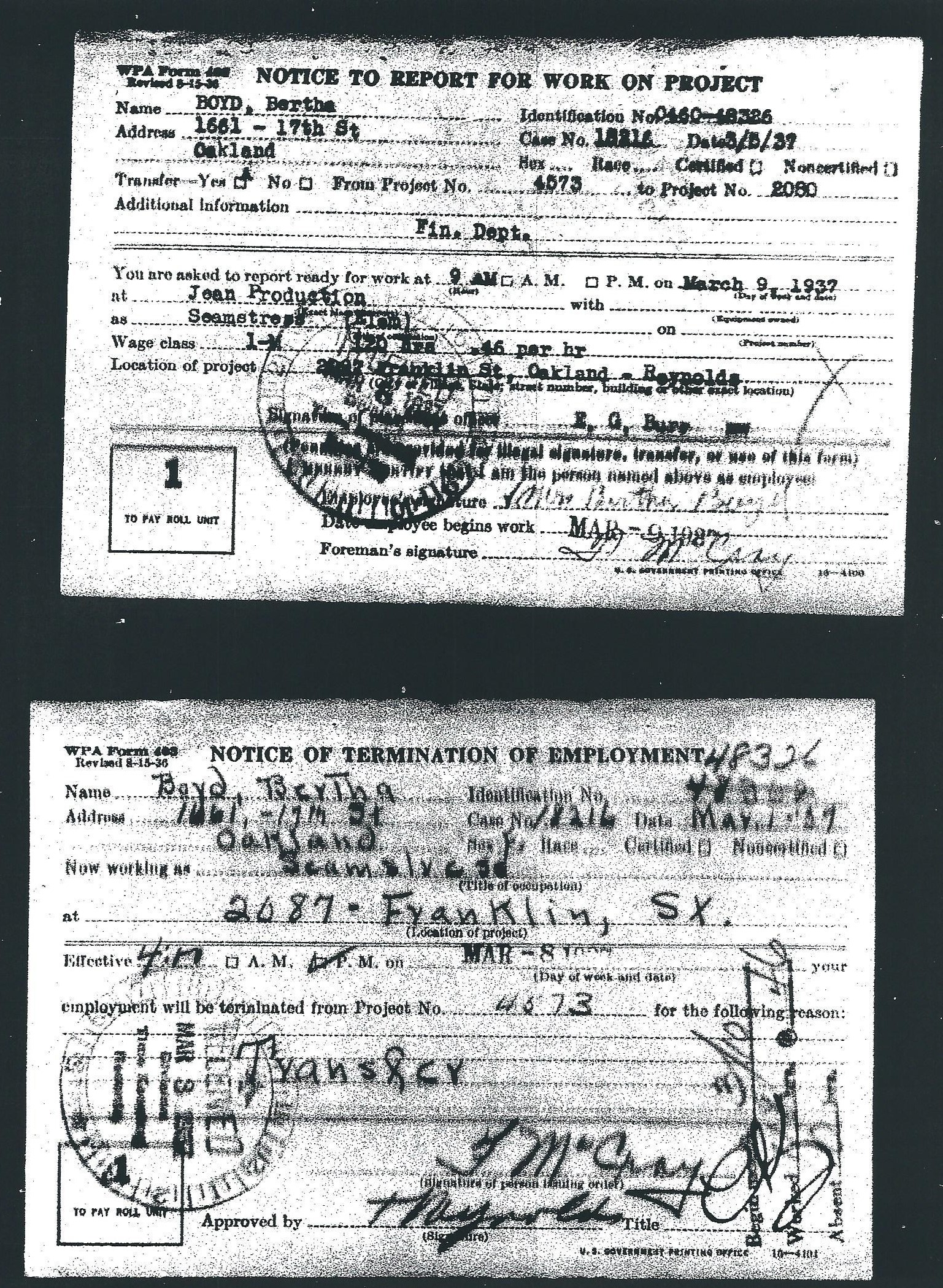
for work on project,
9 Mar 1937,
Notice of
termination of
employment,
May 193[?]
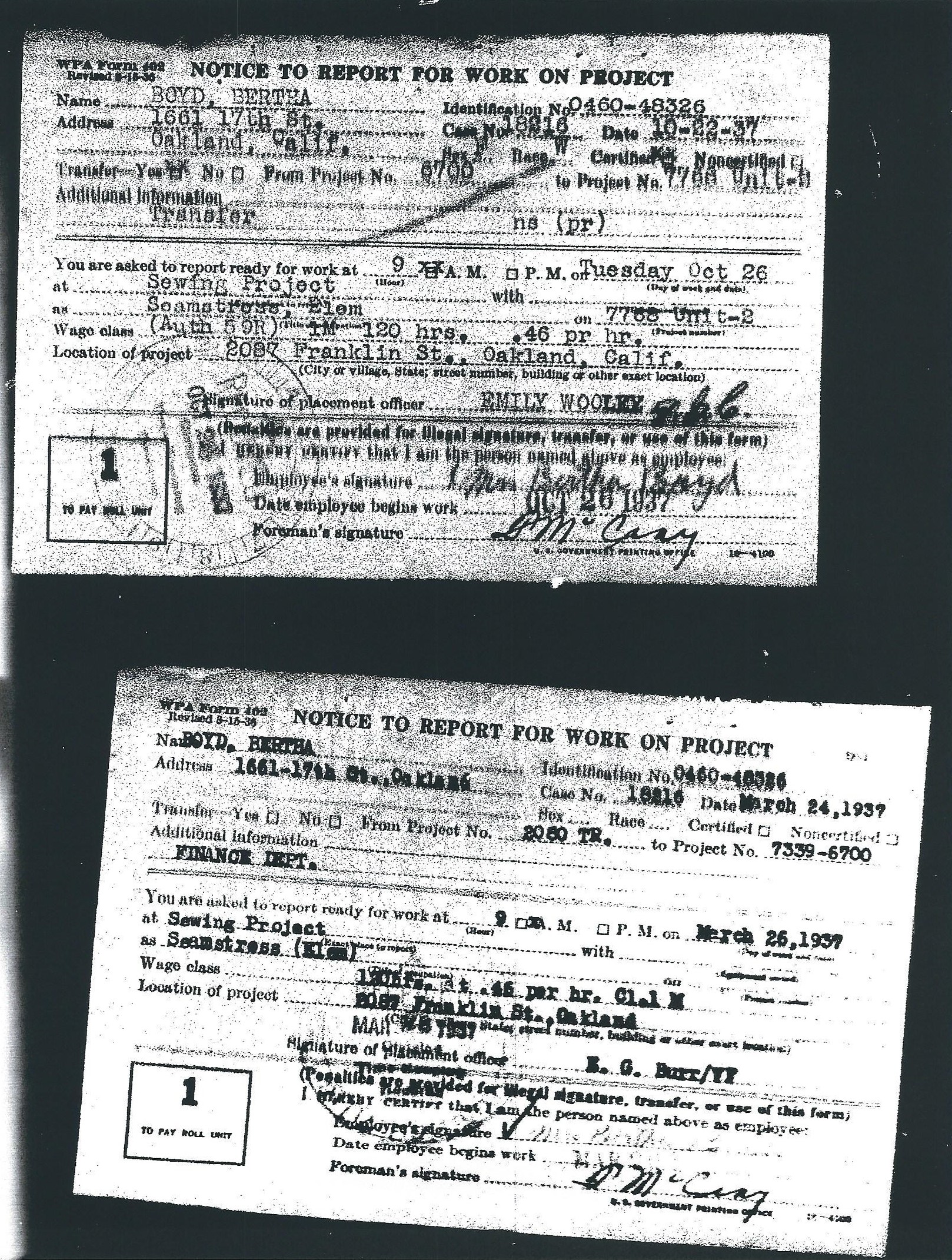
work on project,
26 Oct 1937,
Notice of
termination of
employment,
26 Mar 1937
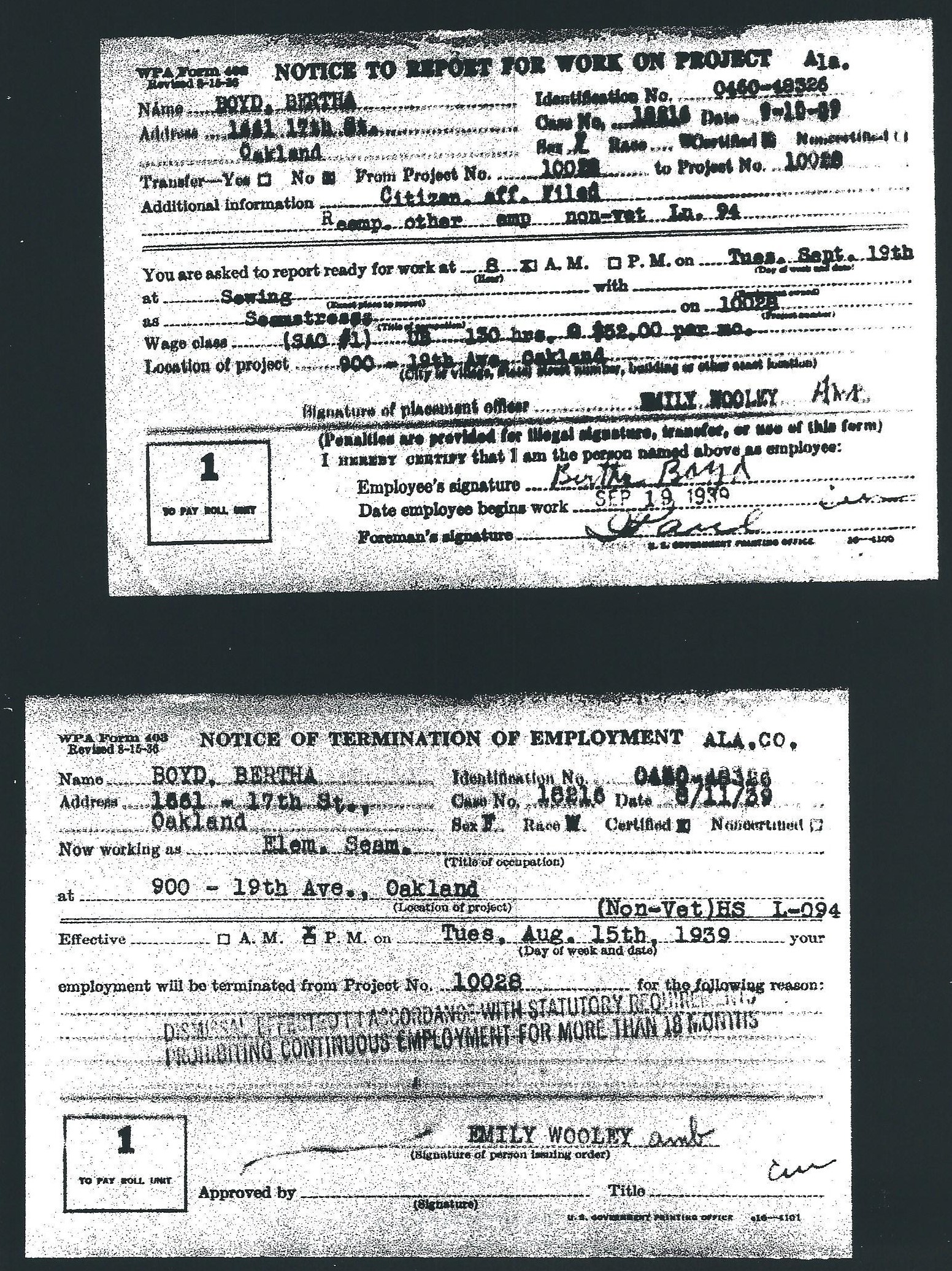
work on project,
19 Sep 1939,
Notice of
termination of
employment,
15 Aug 1939
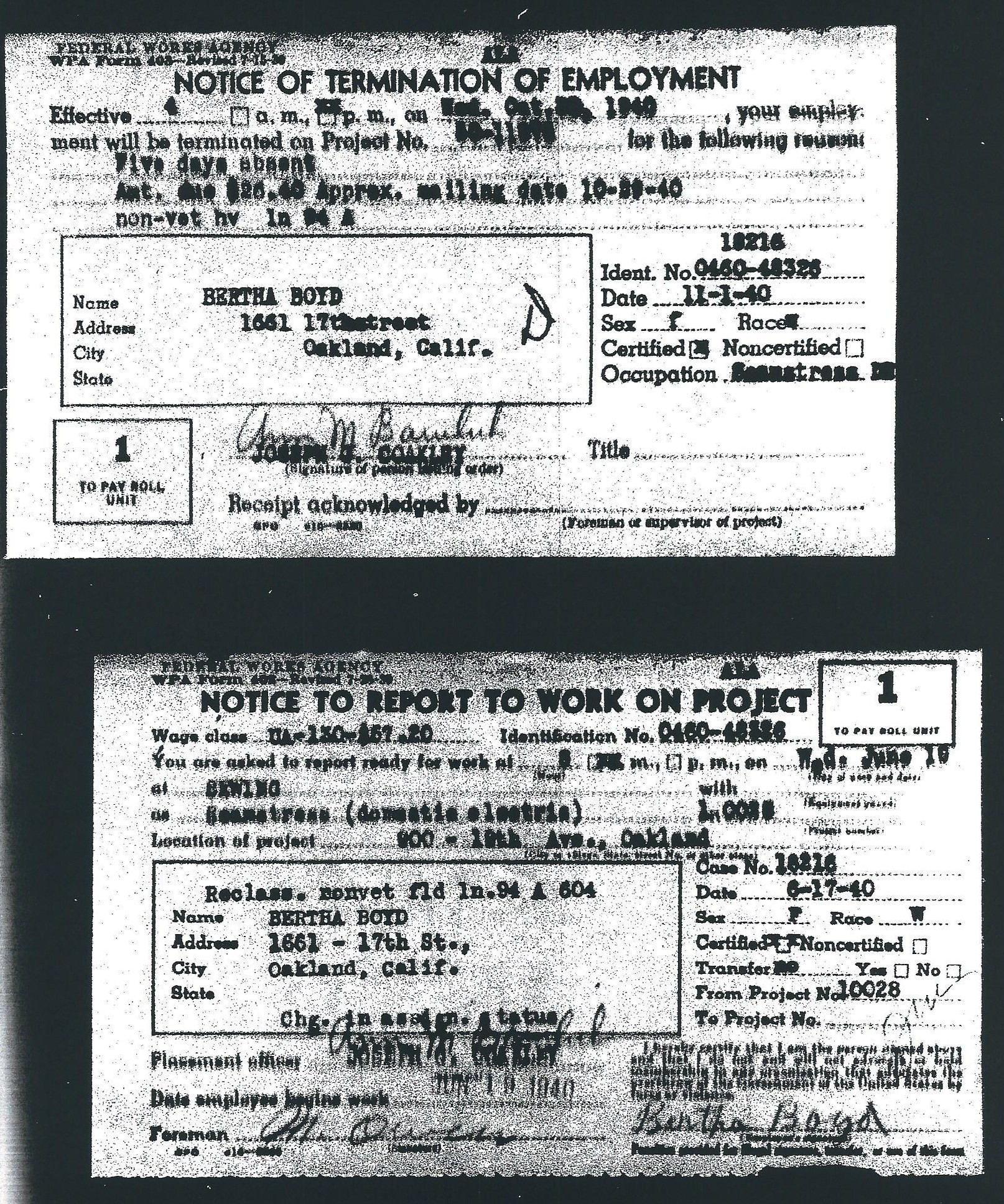
work on project,
[?] Oct 1940,
Notice of
termination of
employment,
17 Jun 1940

record
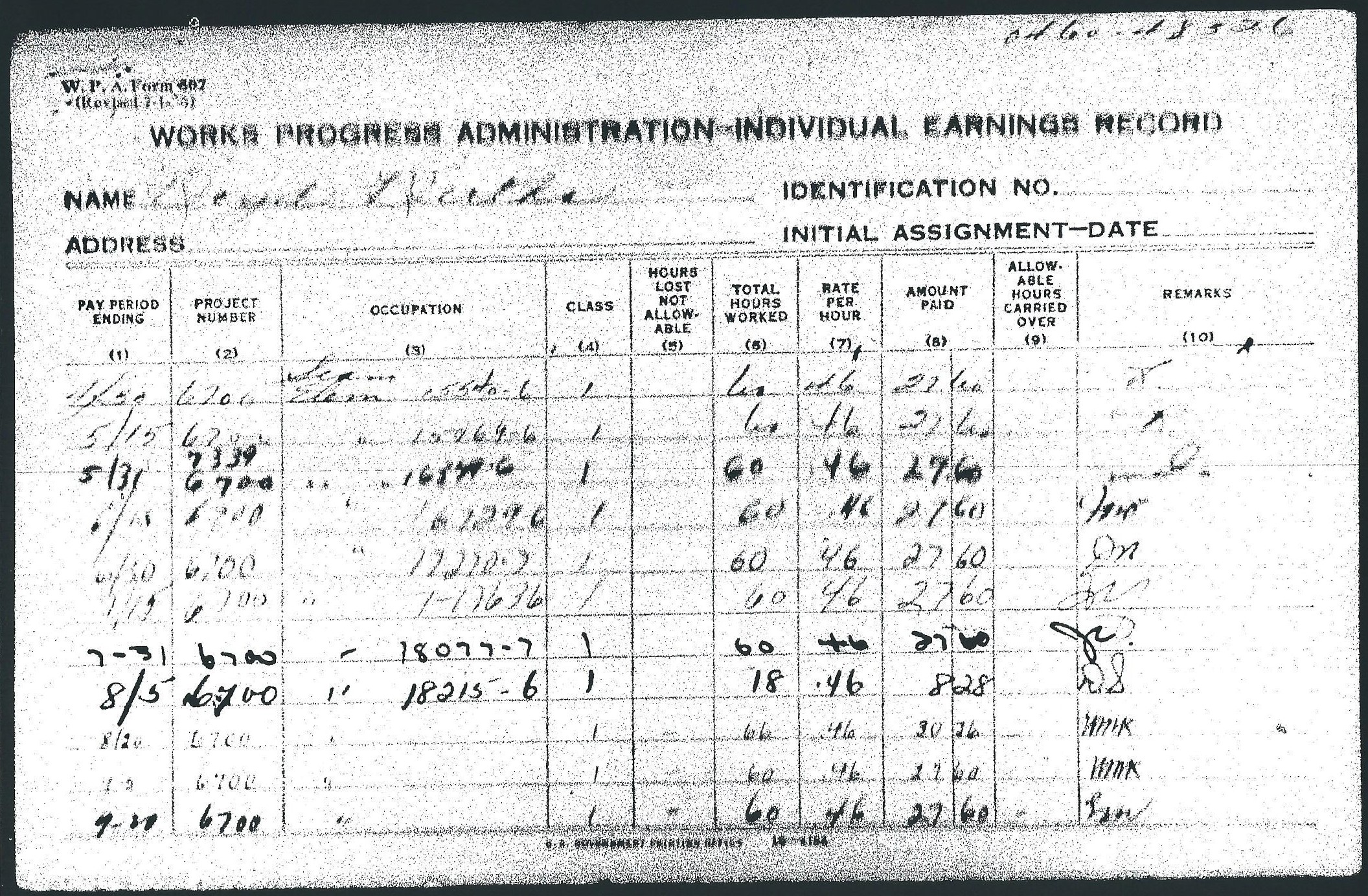
record
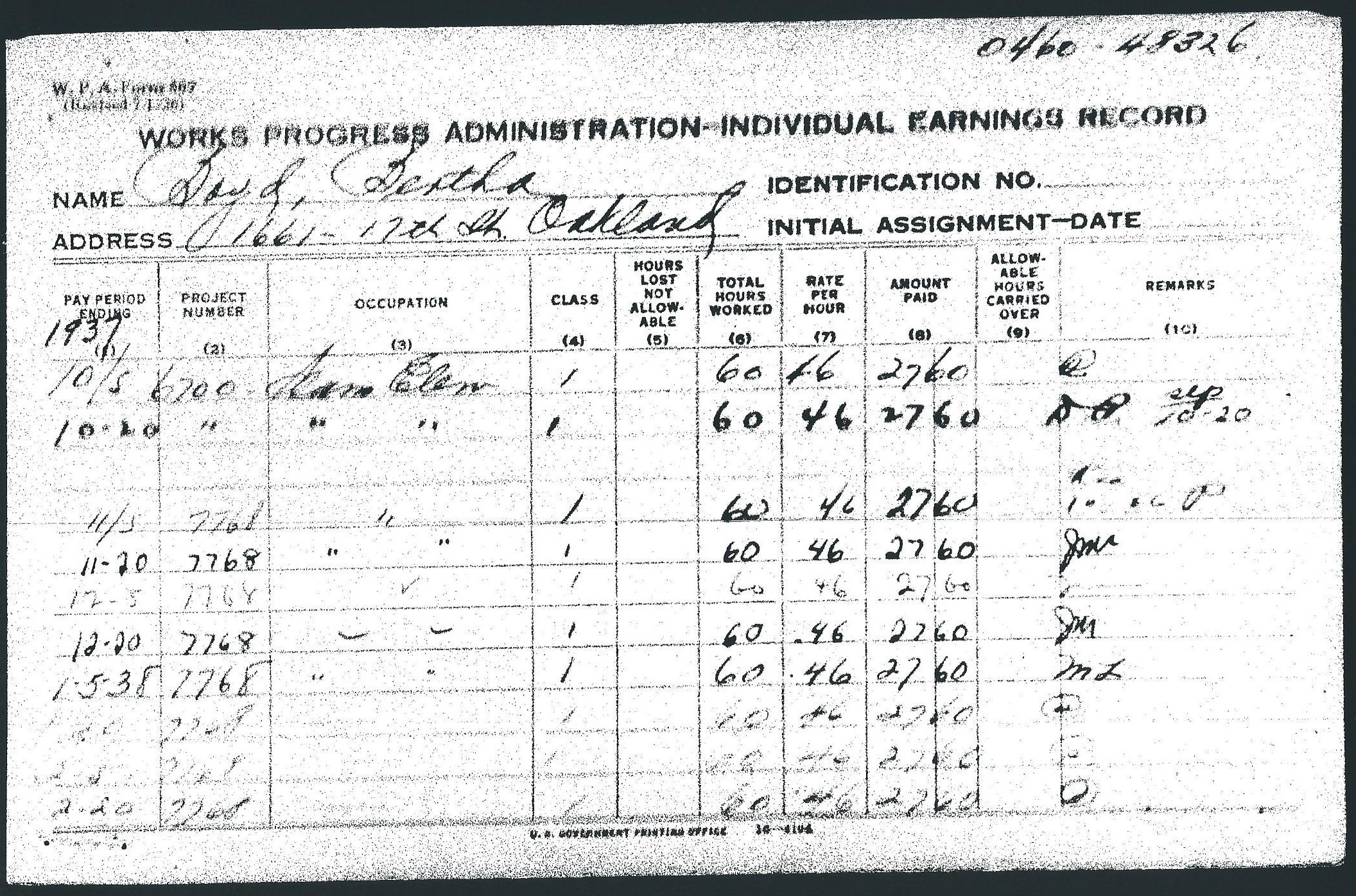
record
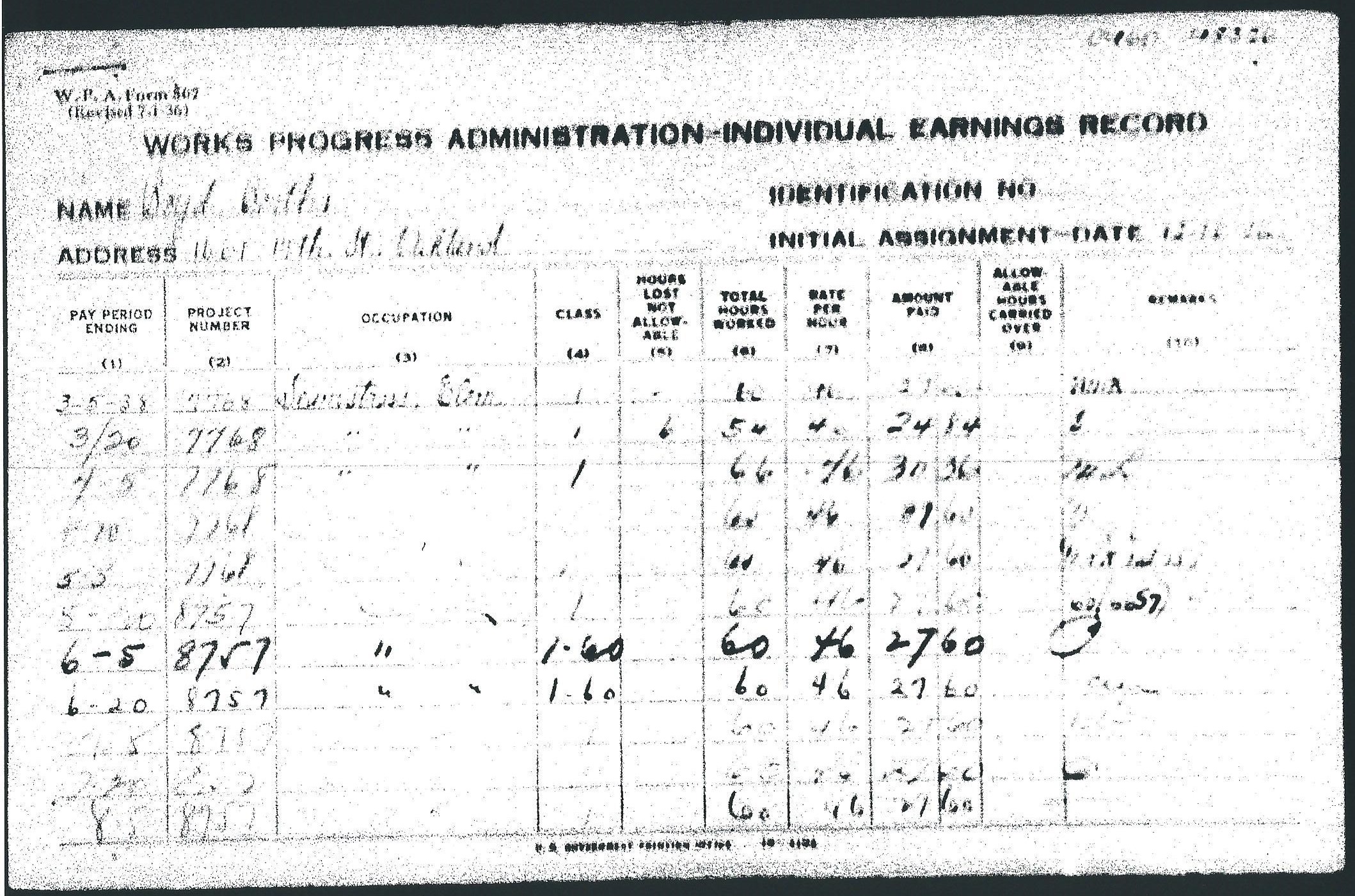
record
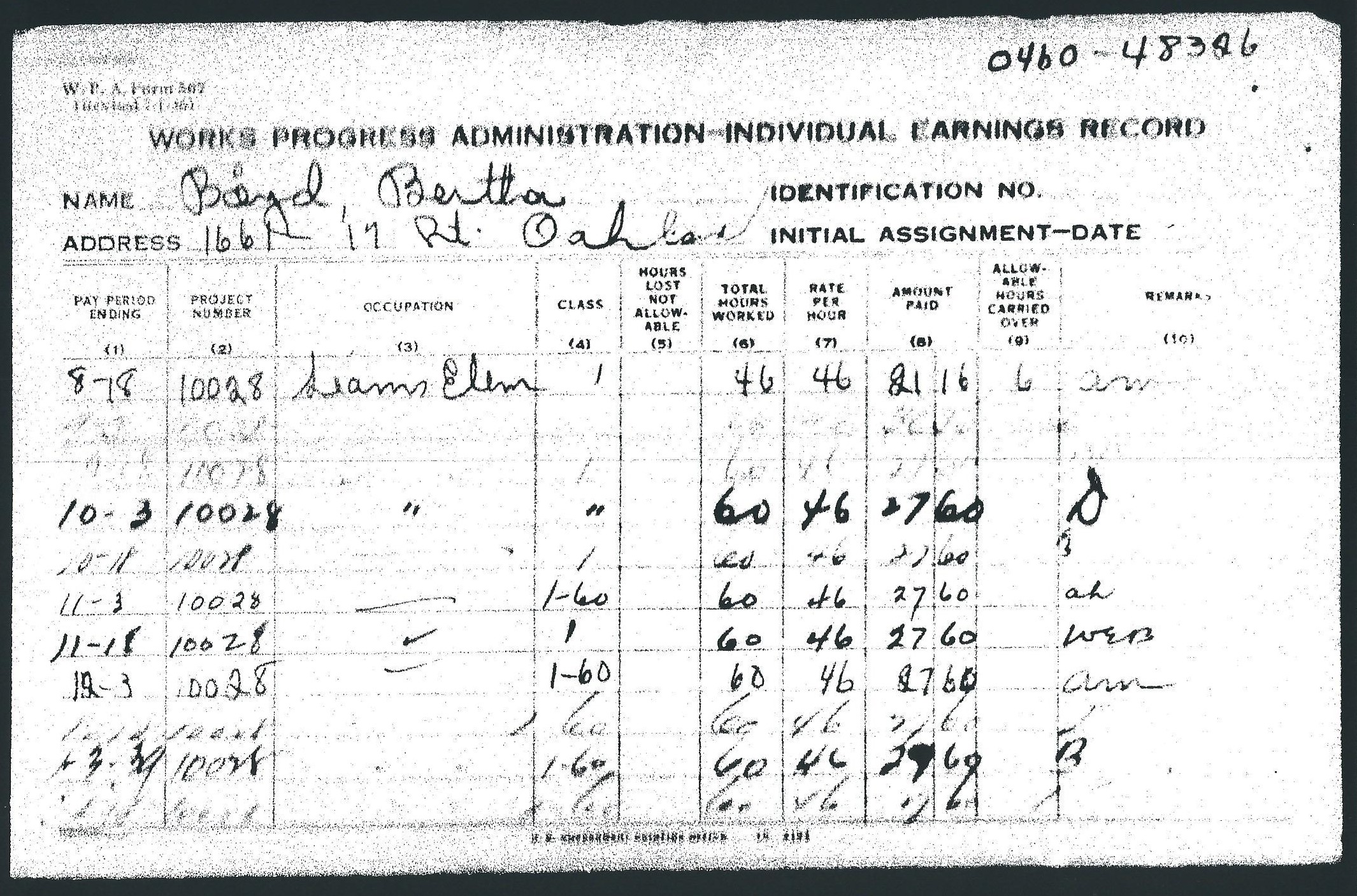
record
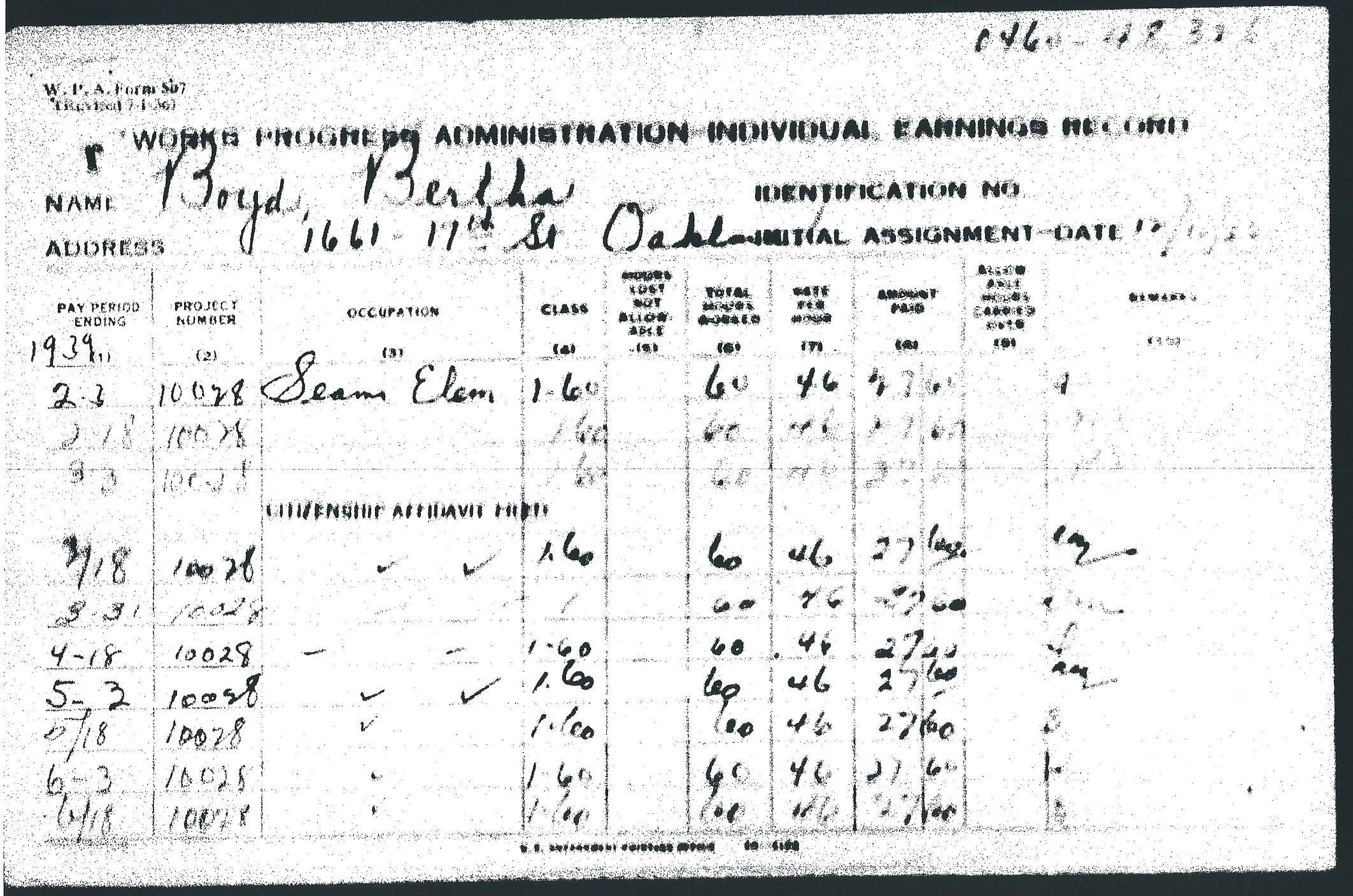
record
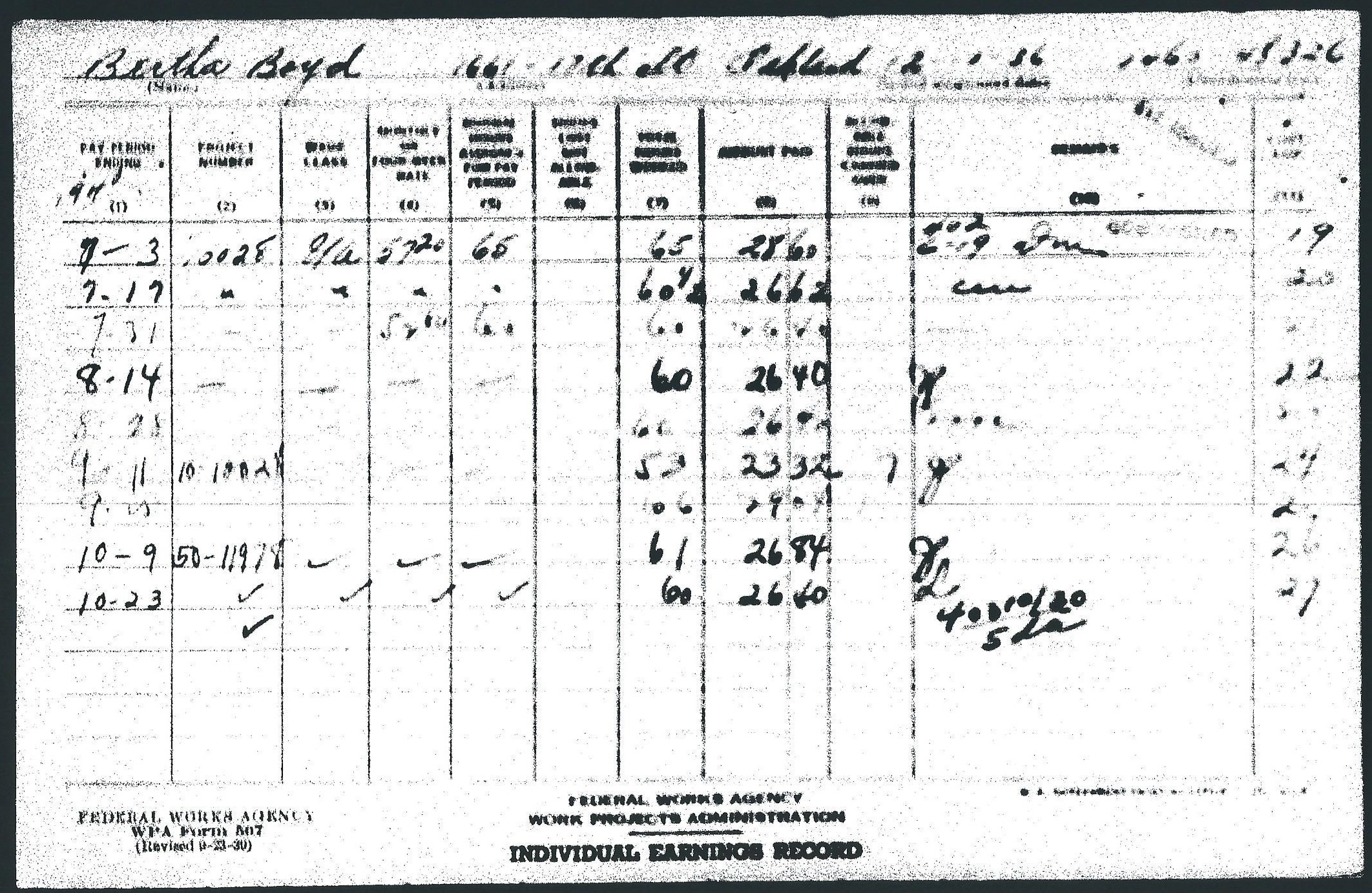
record

record
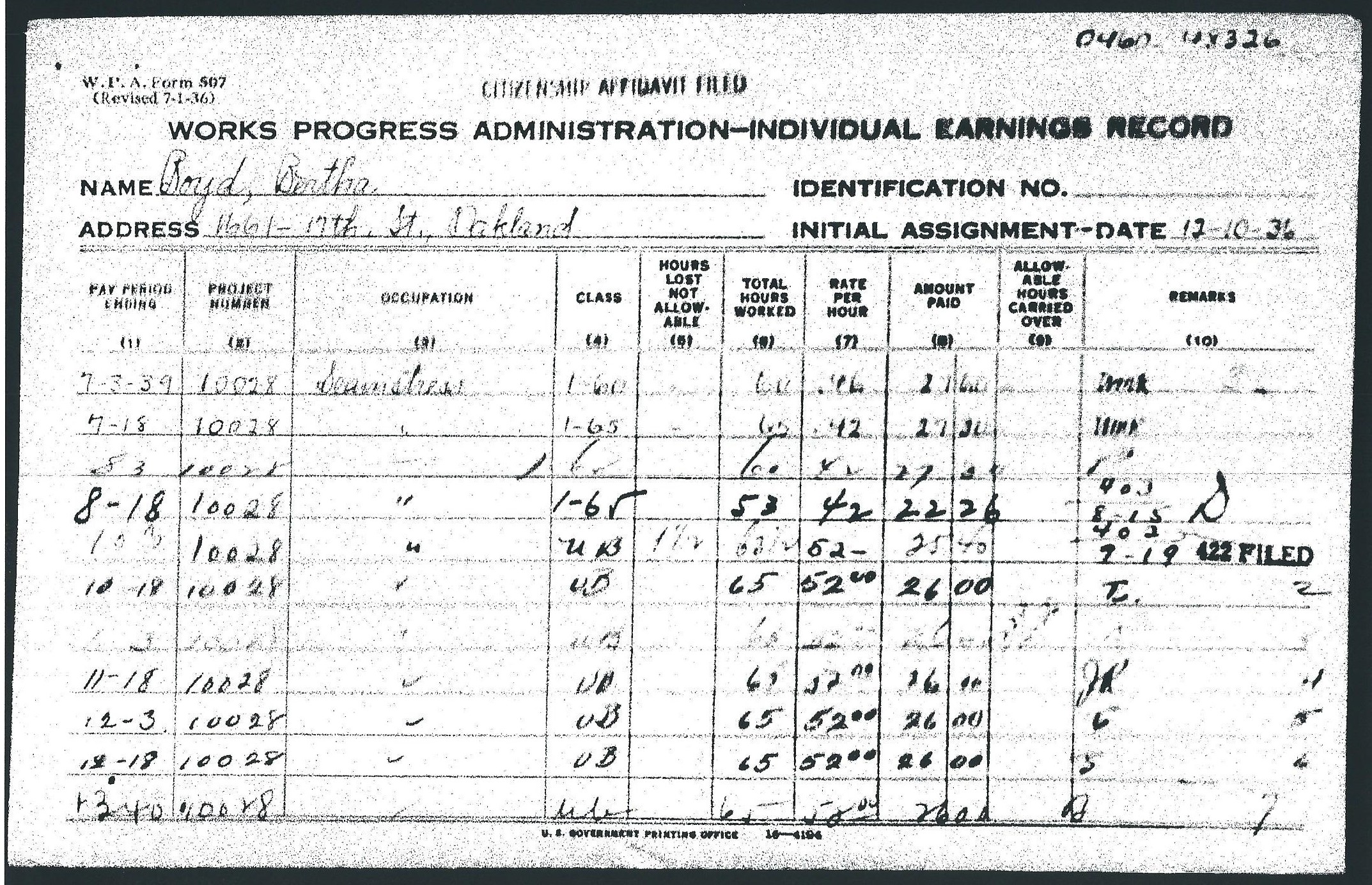
record
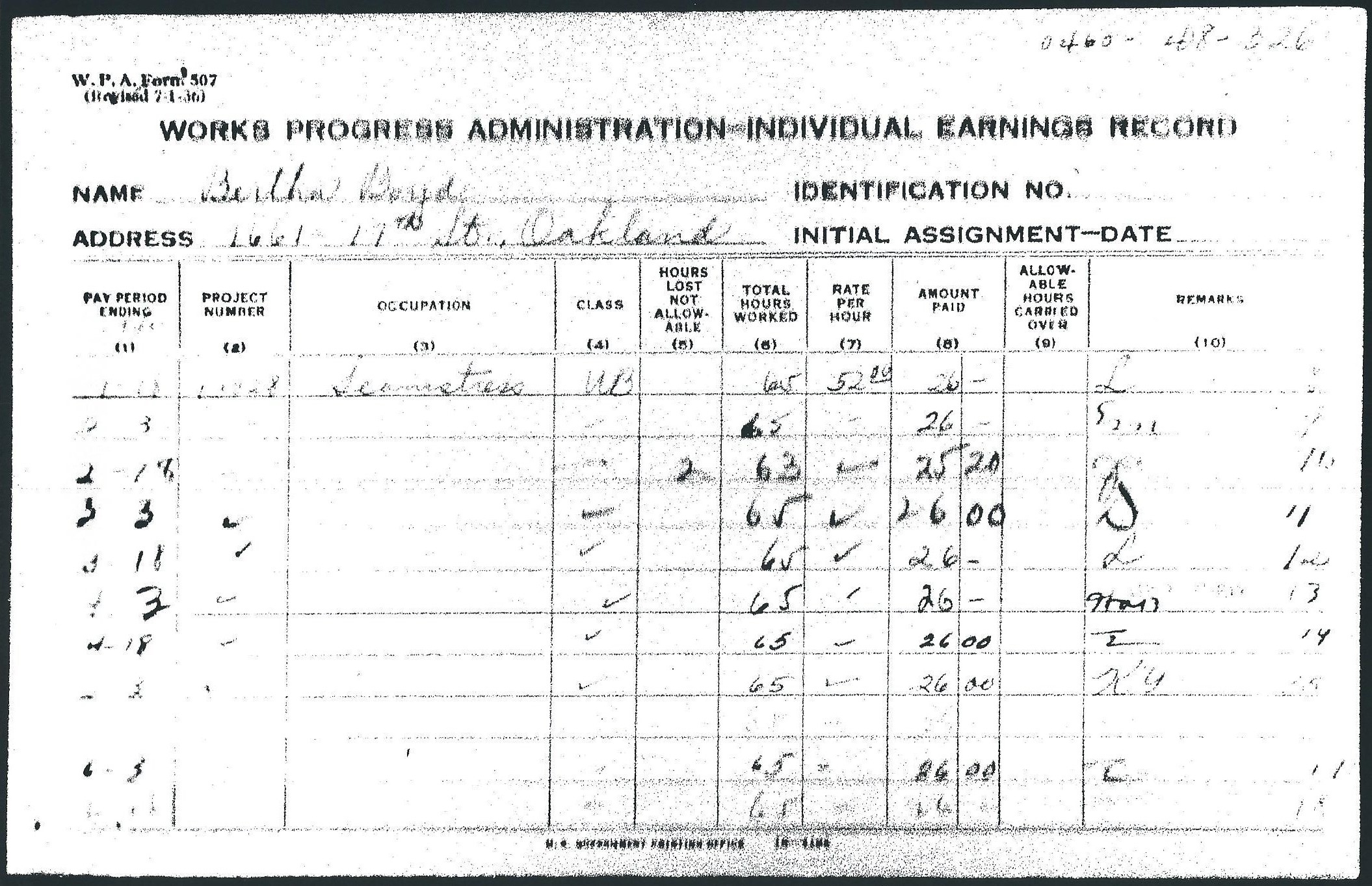
record
Source: Works Progress Administration folders for William Henry and Bertha Boyd, held at National Archives (National Personnel Records Center at St. Louis), photocopies obtained from the archives July 2016.
Images of the military records are shown below as thumbnails. Click on each of the thumbnails to view a larger version of the record in another tab.
World War I Draft Registration Cards
Source: Ancestry.com. U.S., World War I Draft Registration Cards, 1917-1918 [database on-line]. Provo, UT, USA: Ancestry.com Operations Inc, 2005. Original data: United States, Selective Service System. World War I Selective Service System Draft Registration Cards, 1917-1918. Washington, D.C.: National Archives and Records Administration. M1509, 4,582 rolls. Imaged from Family History Library microfilm.
World War II Draft Registration Cards
Source: Ancestry.com. U.S., World War II Draft Registration Cards, 1942 [database on-line]. Lehi, UT, USA: Ancestry.com Operations, Inc., 2010. Original data: United States, Selective Service System. Selective Service Registration Cards, World War II: Fourth Registration. Records of the Selective Service System, Record Group Number 147. National Archives and Records Administration. Full Source Citation.
U.S. World War II Draft Cards, Young Men
Name: Ory Lewis Ennes
Race: White
Age: 42
Relationship to Draftee: Self (Head)
Birth Place: Mobeetie, Texas, USA
Birth Date: 5 Jul 1900
Residence Place: Waddell, Arizona, USA
Registration Date: 1942
Employer: Waddell Gin
Weight: 172
Complexion: Dark
Eye Color: Gray
Hair Color: Black
Height: 6 1
Next of Kin: J E Brown
Source: Ancestry.com. U.S. WWII Draft Cards Young Men, 1940-1947
[database on-line]. Lehi, UT, USA: Ancestry.com Operations, Inc.,
2011. Original data: The National Archives in St. Louis, Missouri; St.
Louis, Missouri; Record Group: Records of the Selective Service
System.
Headstone Applications for Military Veterans
Source: Ancestry.com. U.S., Headstone Applications for Military Veterans, 1925-1963 [database on-line]. Provo, UT, USA: Ancestry.com Operations, Inc., 2012. Original data: Applications for Headstones for U.S. Military Veterans, 1925-1941. Microfilm publication M1916, 134 rolls. ARC ID: 596118. Records of the Office of the Quartermaster General, Record Group 92. National Archives at Washington, D.C.
Images of voting records are shown below as thumbnails. Click on each thumbnail to view a larger version of the record in another tab.
Great Register of Voters (California)

Frank Richard Boyd,
William H. Boyd,
November 7, 1944,
Index of Affidavits
of Registration,
Precinct - Oakland
754,
Roll 062
Source: California State Library; Sacramento, California; Great Register of Voters, 1900-1968; Ancestry.com. California, Voter Registrations, 1900-1968 [database on-line]. Provo, UT, USA: Ancestry.com Operations Inc, 2017. Original data: State of California, United States. Great Register of Voters. Sacramento, California: California State Library.
Images of migration records are shown below as thumbnails. Click on each thumbnail to view a larger version of the record in another tab.
Border Crossings from Mexico to U.S.
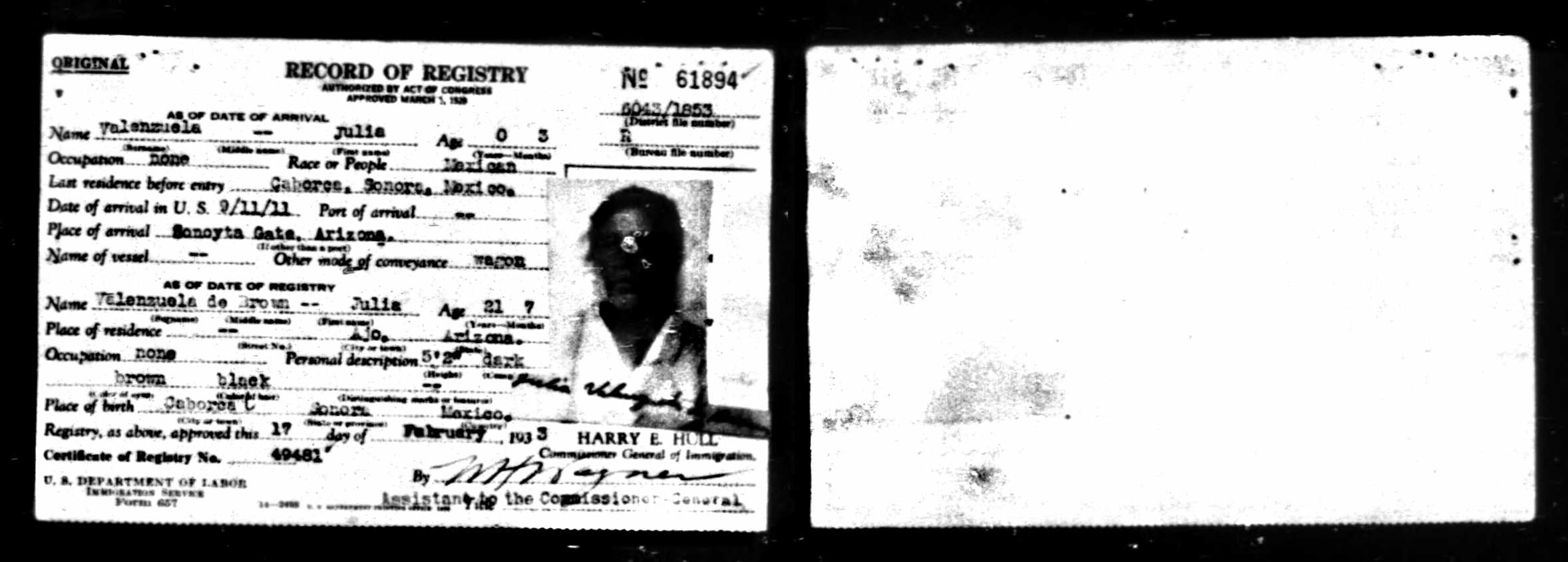
de Brown,
17 Feb 1933
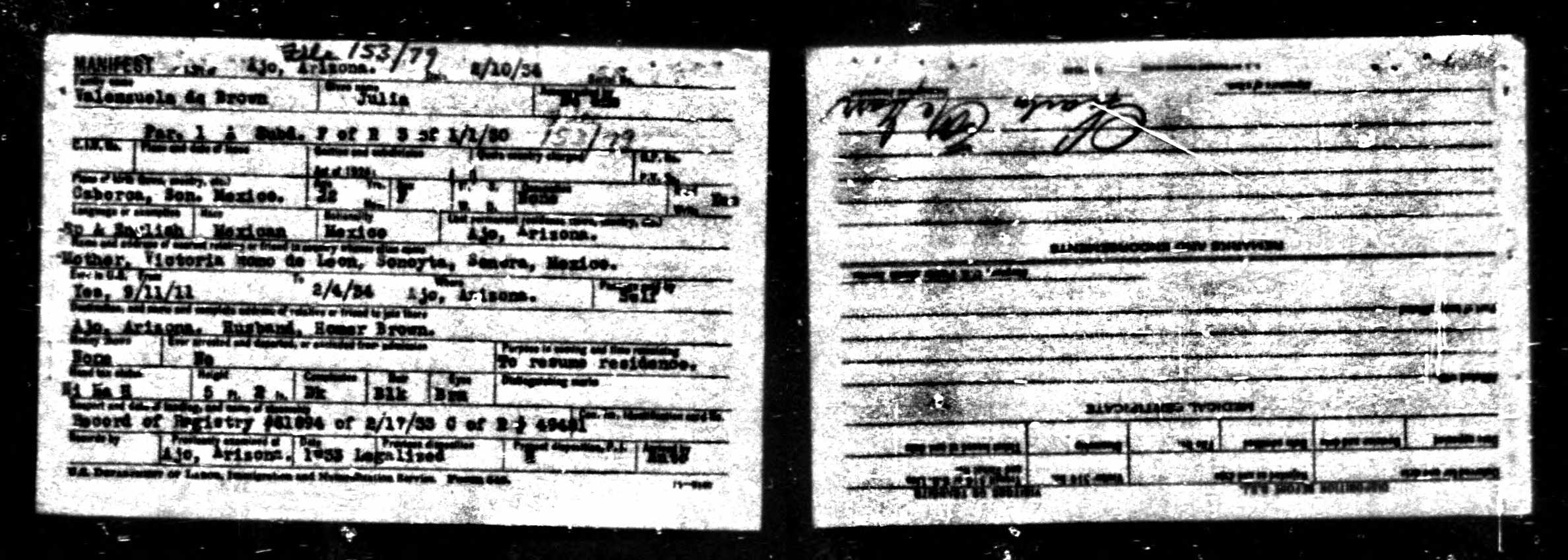
de Brown,
4 Feb 1934
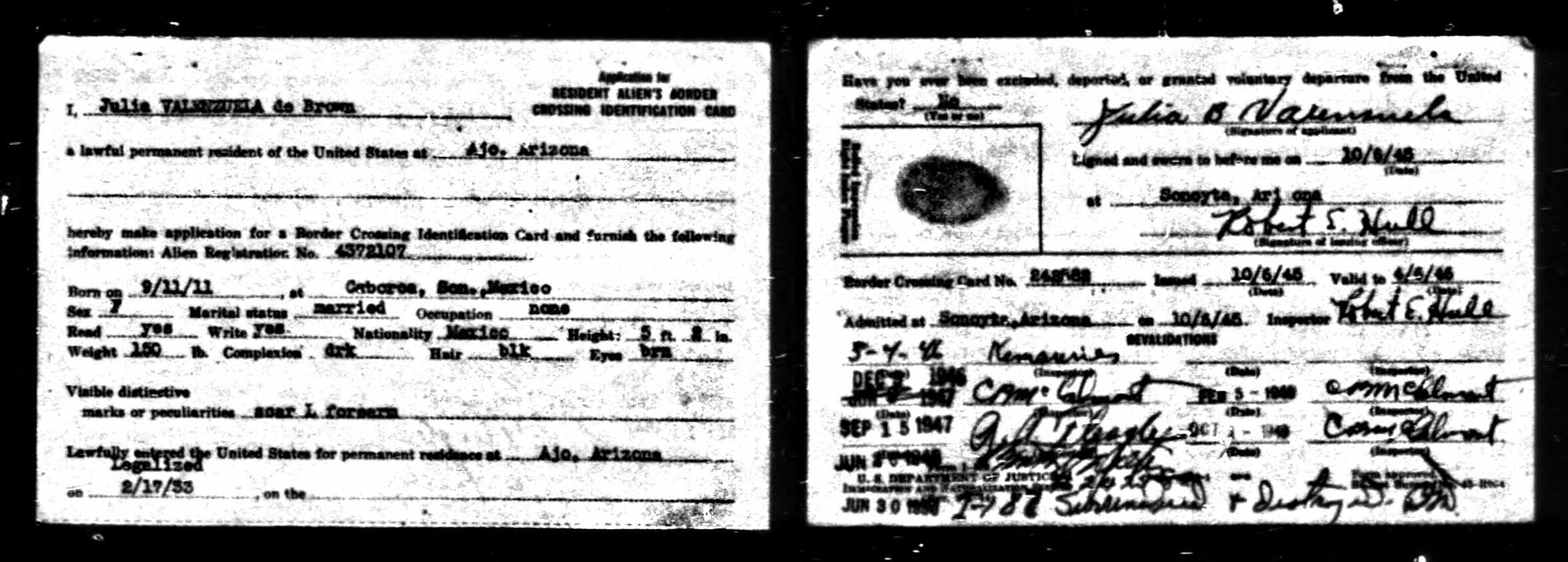
de Brown,
6 Oct 1946
Source: Ancestry.com. Border Crossings: From Mexico to U.S., 1895-1964 [database on-line]. Provo, UT, USA: Ancestry.com Operations, Inc., 2006.
Social Security Death Index
Name: Luz Brown
SSN: 550-42-0623
Last Residence:
91905 Boulevard, San Diego, California, USA
Born: 29 Dec 1908
Died: 29 Dec 1993
State (Year) SSN issued: California (Before 1951)
Name: Adna Fuller
SSN: 368-16-3335
Last Residence:
49017 Battle Creek, Calhoun, Michigan, USA
Born: 23 Feb 1886
Died: Jun 1966
State (Year) SSN issued: Michigan (Before 1951)
Name: Leona Tungate
SSN: 383-16-7411
Last Residence:
49017 Battle Creek, Calhoun, Michigan, USA
Born: 10 Mar 1893
Last Benefit: 49015, Battle Creek, Calhoun,
Michigan, United States of America
Died: Jun 1977
State (Year) SSN issued: Michigan (Before 1951)
Name: Chauncey Tungate
SSN: 372-30-0566
Last Residence:
49015 Battle Creek, Calhoun, Michigan, USA
Born: 12 Nov 1886
Died: Jan 1972
State (Year) SSN issued: Michigan (Before 1951)
Source: Ancestry.com. U.S., Social Security Death Index, 1935-2014 [database on-line]. Provo, UT, USA: Ancestry.com Operations Inc, 2011.
Social Security Applications and Claims Index
Name:
William Henry Boyd
SSN:
557182367
Gender: Male
Race:
White
Birth Date: 12 Feb 1864
Birth Place: Lacrosse, Wisconsin
Father:
Squire F Boyd
Mother: Caroline
Denoll
Type of Claim: Original SSN.
Notes: Dec 1938: Name listed as WILLIAM HENRY BOYD
Name:
Bertha Ennes Boyd
[Bertha Ennes Brown]
SSN:
548187504
Gender: Female
Race:
White
Birth Date: 13 Jan 1879
Birth Place: Colton, Ohio
Father:
Alvey P Brown
Mother: Martha J Ennes
Type of Claim: Original SSN.
Notes: Jan 1938: Name listed as BERTHA ENNES BOYD
Name: Homer Brown
Gender: Male
Race: White
Birth Date: 16 May 1882
Birth Place: Finley, Ohio
Father: Alva P Brown
Mother: Mattie Ennis
SSN: 527306934
Notes: Nov 1944: Name listed as HOMER BROWN
Name: James Ennes Brown
Gender: Male
Race: White
Birth Date: 10 Feb 1876
Birth Place: Henry County, Ohio
Father: Alva P Brown
Mother: Martha J Ennes
SSN: 572124146
Notes: May 1937: Name listed as JAMES ENNES BROWN
Name: James E Brown
Gender: Male
Race: White
Birth Date: 10 Feb 1876
Birth Place: Colton Henry, Ohio
Father: Alva P Brown
Mother: Martha J Ennes
SSN: 548326060
Notes: Jun 1943: Name listed as JAMES E BROWN
Name: Luz Brown
Gender: Female
Birth Date: 29 Dec 1908
Death Date: 29 Dec 1993
Claim Date: 2 Feb 1974
SSN: 550420623
Name: Charles A Brown
Gender: Male
Race: White
Birth Date: 20 Jun 1886
Birth Place: Hillsdale, Indiana
Father: Alvey P Brown
Mother: Louise Thommen
SSN: 262482205
Notes: Sep 1950: Name listed as CHARLES A BROWN
Name: Charles Alva Brown
Birth Date: 20 Jun 1889
Birth Place: Hillsdale, Indiana
Claim Date: 25 Jun 1954
SSN: 384038525
Notes: 30 Sep 1977: Name listed as CHARLES ALVA
BROWN
Name: Mary L Nardin
Birth Date: 18 Oct 1895
Claim Date: 27 Nov 1957
SSN: 363165825
Notes: 26 Nov 1957: Name listed as MARY L NARDIN
Name: Ada Ennesarnold Choran
[Ada Ennesarnold Arnold]
Gender: Female
Race: White
Birth Date: 9 Jun 1878
Birth Place: Arlington Ta, Texas
Father: Thomas O Arnold
Mother: Alice G Strahan
SSN: 465341235
Notes: Jun 1943: Name listed as ADA ENNESARNOLD
CHORAN
Name: Irene Lovena Stackhouse
[Irene L Murrell]
[Irene Stackhouse]
[Irene Lovena Ennes]
Gender: Female
Race: White
Birth Date: 5 May 1908
Birth Place: Canadian Hem, Texas
[Canadian Hem|]
Death Date: 21 Oct 1993
Claim Date: 26 Feb 1970
Father: A J Ennes
Mother: Ada J Arnold
SSN: 548584934
Type of Claim: Evidence other than birth record
submitted; U.S. citizen or alien allowed to work.
Notes: 29 Nov 1977: Name listed as IRENE LOVENA
STACKHOUSE; 25 Feb 1970: Name listed as IRENE L MURRELL; 02 Nov 1993:
Name listed as IRENE M STACKHOUSE
Source: Ancestry.com. U.S., Social Security Applications and Claims Index, 1936-2007 [database on-line]. Provo, UT, USA: Ancestry.com Operations, Inc., 2015. Original data: Social Security Applications and Claims, 1936-2007.
Photos are shown below as thumbnails. Click on each thumbnail to view a larger version of the photo in another tab.
Banfield Cemetery, Banfield, Barry, Michigan

Louisa A. Brown
Photo credit:
Joyce Foondle,
findagrave.com
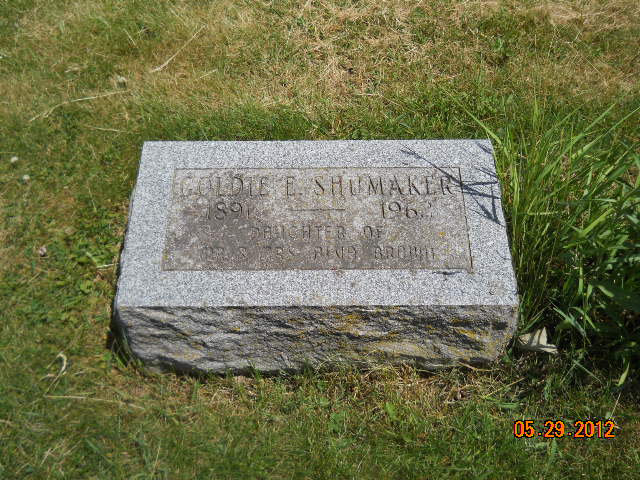
Photo credit:
Joyce Foondle,
findagrave.com
Freeport Cemetery, Freeport, Barry, Michigan
Oak Hill Cemetery, Battle Creek, Calhoun, Michigan

Photo credit:
Keith Burkhead,
findagrave.com

Photo credit:
Keith Burkhead,
findagrave.com
Memorial Park Cemetery, Battle Creek, Calhoun, Michigan
Riverside Cemetery, Albion, Calhoun, Michigan
Hicks Cemetery, Pennfield, Calhoun, Michigan
River Bend Cemetery, Walker, Kent, Michigan
Hillside Cemetery, Kalamo, Eaton, Michigan
Ajo Cemetery, Ajo, Pima, Arizona
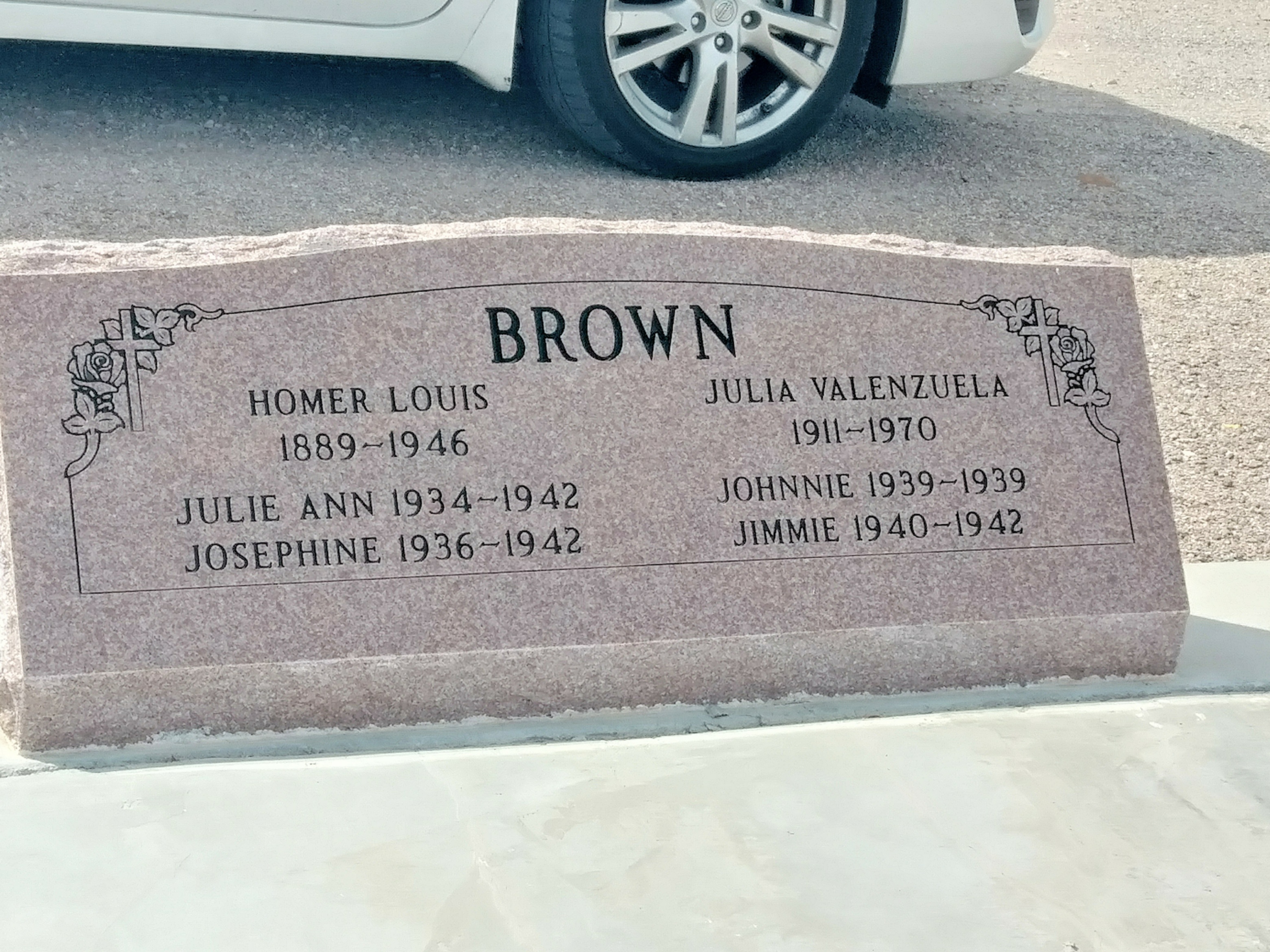
Julia Valenzuela
Brown,
Julie Ann Brown,
Josephine Brown,
Johnnie Brown,
Jimmie Brown
Photo credit: Bf
(#49513899),
Findagrave
Evergreen Cemetery, Oakland, Alameda, California
Bellevue Memorial Park, Ontario, San Bernardino, California
Greenwood Memorial Park, San Diego, San Diego, California
Hot Springs Cemetery, Truth or Consequences, Sierra, New Mexico
Return: Home > Ancestry of Bertha Amanda (Brown) Boyd > Brown Family Tree
Author: Michelle A. Boyd
Email
Last updated 3 October 2021
